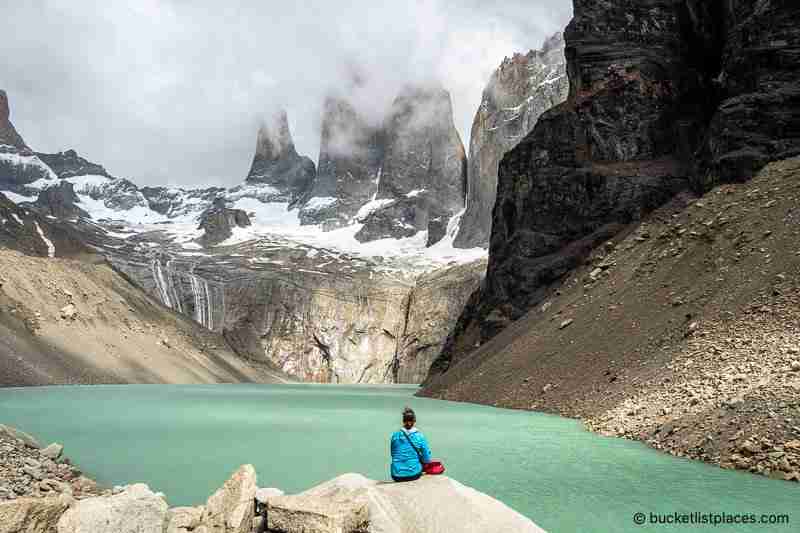

Ultimate Guide to Hiking the W Trek in Patagonia
Situated in the southern realms of South America , Patagonia is one of the world’s last untouched wildernesses. Chilean Patagonia is a land of towering peaks, crystal-clear rivers, blue-hazed glaciers and treeless steppe, it offers vistas like nowhere else on Earth.

Often at the top of hiker’s bucket list, the region’s most celebrated trekking route, the W Trek, takes a ‘W-shaped’ path through Chile’s Torres del Paine National Park in Patagonia. There’s perhaps no better way to explore the region’s dramatic landscapes than on foot, so we’ve created a comprehensive guide with everything you need to know about hiking Patagonia’s famed W Trek.
Travel Guide to Hiking the W Trek in Patagonia
Hiking the w trek basics.

While scenic, hiking the W Trek is no gentle stroll in the park. Demanding in places, it requires a good level of basic fitness to cover its 50-mile length successfully. This is not least because altitude is a significant factor on the route, topping out at more than 3,500 feet above sea level. After all, the W Trek lies deep within the southern reaches of the mighty Andes mountain range. Located within Chile’s Torres del Paine National Park , the W trek can usually be hiked in four or five days.
There are a number of options available for those looking to hike the W trek. Some choose to pre-plan the lodging, purchase a pass and do it on their own. While this is certainly an option, the lodges fill up months in advance. Another option for those that don’t want to hike the W trek alone or are booking closer to your hike date and the lodges are full, is to book a guided hike.
Guided hikes can be private or you can book a small group hike to go with a guide and some other people.
Accommodation on the W Trek
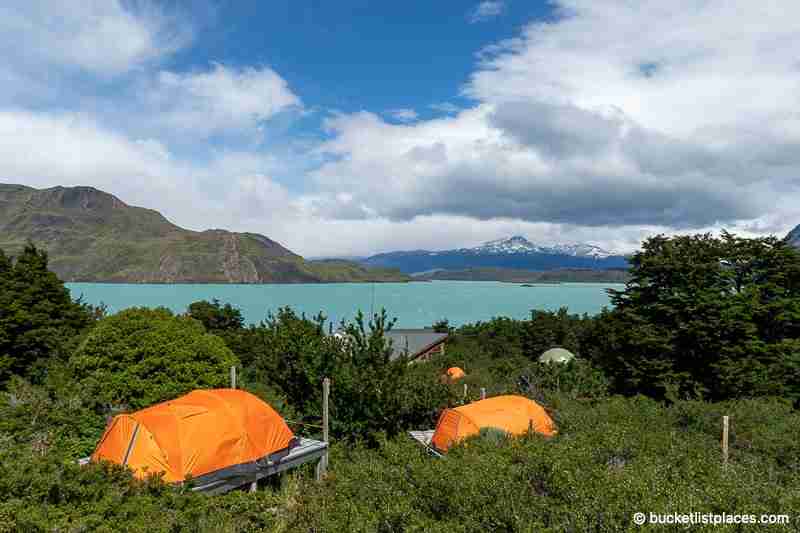
Most of this multi-day hike will require overnight camping in tents or at a designated lodge, with hostels and hotels accessible at the start and end of the trek. Camping is only permitted with designated refuges, or refugios at Torres del Paine National Park. Keep in mind that these often get booked up a year in advance so make sure to plan ahead to get the best spots at your favorite refugio.
Lodging at the refugios are either tent camping or a shared room inside the lodge. Tents provided at the refuge are meant for the colder weather, rain and wind so they are warmer than tents you may be used to. Still, if you require the comfort of your own bed inside a warm, cozy lodge then make sure to book even further out because those rooms book up the fastest.
The upside of this arrangement is that you’ll have access to shared bathroom facilities, which generally include hot showers ideal for soothing sore muscles after a day’s walk. Refuges also have heating and electric lighting, and a communal dining room for eating meals sheltered from the elements. Most contain a small shop selling basic items.
Many of the refugios even have wifi so you can catch up on communication with loved ones. Keep in mind that the cost is much higher because it is satellite internet. You will not have cell service while hiking the W trek so make sure your loved ones are aware.
HOT TIP : If you find that individual reservations are booked up in all of the refugios, there may still be availability through a guided tour . You can join a guided hiking tour that is organized by the companies that own the shelters and this comes with a guide for your hike as well as lodging at the shelters along the way. It will be slightly more expensive than hiking and booking everything solo and you will be restricted to one company of shelters versus being able to pick and choose but the upside is your dates will be more likely to be available when planning closer to your travel date.
When to Tackle the W Trek

Hiking the W Trek is open right throughout the year, but if you’re planning on heading along it independent of guides and tour groups you’re limited to the period between October and April. This coincides with the southern hemisphere’s summer months and is also great to combine with a visit to the beautiful Atacama desert .
Independent hiking is complicated by the fact that places at refugios need to be reserved ahead of time, and can be fully booked months in advance. This is particularly true for the high season, which lasts from December to February. The route is also at its busiest during these months, which some trekkers find takes away from the overall experience of solitude and isolation Patagonia is renowned for.
Getting Started : Where to Fly Into and How to Get There
The standard gateway to the W Trek is the town of Puerto Natales , Chile. It lies more than 1800 miles south of the Chilean capital, Santiago. Limited flights connect the airport at Puerto Natales with Santiago, and it’s often easier to fly to either Punta Arenas further south in Chile, or even to El Calafate, just across the border in Argentina.
From either of these latter airports, you’ll then have to head to Puerto Natales by road. Long distance buses cover the distance from Punta Arenas in around three hours, or around 7 hours from El Calafate including border formalities. There is also an opportunity to rent a car and drive yourself .
If coming from Argentinian Patagonia, you should arrange your visa for Chile ahead of time. However, most European, North American and Australian passport holders require nothing more than six months validity on their passport for tourist visits of less than 60 or 90 days (dependent on nationality).
Puerto Natales – The Gateway to Torres del Paine National Park

Puerto Natales has a good cluster of hostels and hotels that are well used to welcoming those starting or finishing hiking the W Trek. Perhaps even more helpfully, this once small fishing village has a number of stores where hikers can rent any equipment they may need. Most stay open until 8 or 9 pm, allowing you to organize any kit requirements even if you arrive later in the day.
It’s also possible to securely store gear you won’t need during the trek. Ideally, your backpack won’t weigh more than around 30 lbs.
Storage can be arranged with your guiding service if you hire a guide, with your hostel/hotel depending on where you are staying or you can rent storage at the bus station. Ask your hotel or hostel if it is possible to store some of your items while you do the W trek. If they don’t have storage available, you can store your items at the bus station. Be aware of the opening hours if you choose this option as you will only be able to drop off or pick up your items during specific hours.
Getting to the W Trek from Puerto Natales, Chile
It’s possible to walk the W Trek in either west to east or east to west directions. That said, the vast majority of trekkers start the trail at the end closest to the entry gates into Torres del Paine National Park, which means they tackle the route from west to east. In turn, starting the trek in this direction means you’re not thrown into the deep end on day one.
Several trustworthy companies run buses that drop off and pick-up hikers from the park entrances. The trip takes between two and four hours depending on which entrance is used. They all have departures in the morning from Puerto Natales, usually around 7 am. If you’re struggling to get a seat, less popular services also operate in the early afternoon, leaving Puerto Natales around 2.30 pm.
You should buy your ticket ahead of time at the company offices inside Terminal Rodoviario , where the buses depart from. You’ll find the terminus on Avenida Espana. Round trip tickets (around $20) permit a ride on any of that company’s returning buses.
Buses generally have stops at Laguna Amarga, Pudeto, and Administrativa. The stop at Laguna Amarga is primarily used by those heading along the W Trek from east to west as it connects with the minibus to Las Torres base camp.
If you’re following the majority of trekkers in starting the W Trek at its western end, you’re better off buying a ticket to either Pudeto or Administrativa. From Pudeto, a catamaran crosses Lake Pehoé in around half an hour. Its destination is Paine Grande. As it lies midway along the W Trek route, arriving via Pudeto means repeating your day one walk on day two.
A way of avoiding this is to head instead to Administrativa and then catch the three-hour ferry that travels the length of Lago (Lake) Grey towards the stunning Grey Glacier where there is a campsite.
Fees for entering the park are the equivalent of roughly $30, and can be paid in Chilean pesos, US dollars or euros. If you pay in dollars or euros try and have the exact amount and don’t rely on there being change available. There are numerous currency exchanges in Puerto Natales. Tickets last as long as you stay within the park, or for five consecutive days of entry.
W Trek Itinerary

For those crossing Lake Grey, day one of hiking the W Trek will be mostly taken up by arrival at Grey Campsite, situated between the lake and montane forest. However, there’s still a chance to give your hiking boots a little action, with a trail leading to a viewpoint of Grey Glacier. Approximately one mile in either direction, it has an ascent and descent of around 1,200 feet in total.
If you get lucky with the weather you will have incredible views of the glacier and the glacial lake with icebergs swimming in it. The day we went was cloudy, windy and rainy making it very difficult to complete the hike. While you can’t predict the weather, be aware that the glacier creates a micro climate so just because it is sunny in other parts of the park does not mean that it will be the same nice weather near the glacier. Pack a hat and a warm jacket as it can get very cold, windy and wet.

Day two is usually the first full day of hiking the W Trek, with the path following the eastern shore of Grey Lake for the first third of the day’s route before moving inland.
The path is relatively gentle, and the scenery simply extraordinary from early on. The campsite of choice is called Refugio Italiano, which sits at the southern end of French Valley. In all, hikers usually take around eight hours to reach this point, covering around 13 miles and a further 1,000 feet in altitude.

Day three is normally dedicated to hiking French Valley which is the favorite part of hiking the W trek for many.
Following streams and rivers much of the way north, the valley offers spectacular views of glaciers towards the lookout at Britanicos Camp, although it’s uphill all the way. After taking in the majestic scene, you then complete the central part of the ‘W’ by returning to your previous night’s camp, having covered around ten miles and another 1,000 feet in altitude.
The day’s trek usually lasts around seven hours. Just like with the previous treks, the glaciers here can create microclimates which means that the weather could be unpredictable. Parts of this trek can be especially windy so hold on to your hats!

Day four of the W Trek sees hikers take on the second ‘V’ of the W-shaped route, along the Sendero Paso Los Cuernos trail. Much of the day’s path follows the shores of Lago Nordenskjöld, which are typified by alpine grasslands crisscrossed by small streams. You’ll more than likely end the day at Chileno Camp, after seven hours and 12 miles of walking.

Day five is normally the last day of hiking the W Trek, although it’s possible to cover shorter distances each day thanks to a chain of intermediate campsites along the way.
For most though, day five means the journey to the base of Los Torres mountains, which rise to a height of 9,500 feet. Heading towards their granite towers you’ll follow the sound of the River Asencio. The trek ends with a scramble over loose moraine, so be sure to save some energy.
In all, you’ll cover around nine miles in six hours, allowing plenty of time to meet the bus back to Puerto Natales.
What to Pack when Hiking the W Trek
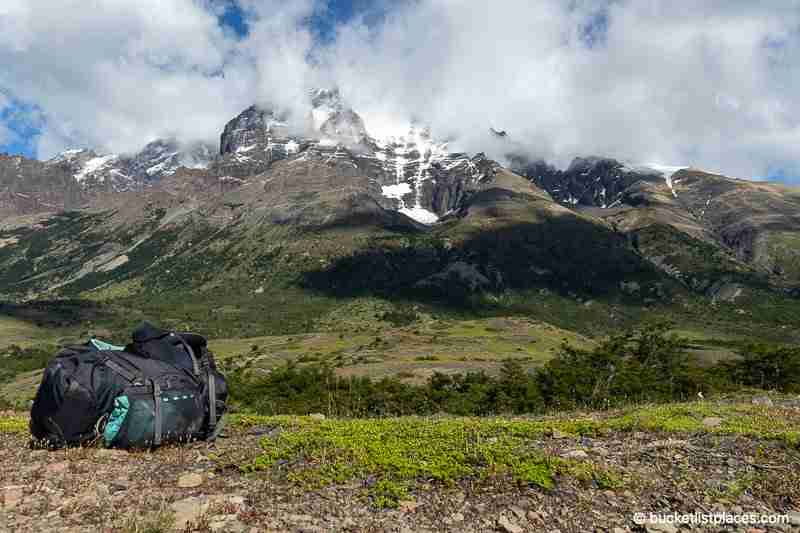
Camping equipment can be rented at refugios, but this will add to your costs. If you’re completing the W Trek as part of a tour , tents and meals will be prepared for you. Even so, you’ll still need some specialty equipment to finish hiking the W Trek. In addition to cold weather gear, you should take waterproof clothing, as well as a battery-operated head torch for nights in camp and early morning starts.
Weather can really vary in the summer so you will need both warm clothing on the cold days and nights and light clothing for hotter days.
Below is a brief checklist of the must have things to pack along with you so you are prepared for the elements when hiking the W trek.
While there are many tours and ways to visit Torres del Paine National park , The W Trek in Torres del Paine National Park is an ultimate bucket list experience for anyone visiting Patagonia in Chile. Taking in incredible mountain, lake and glacier views there’s really nothing else like it. Follow the recommendations in our guide to hiking the W Trek in Patagonia, and you’ll be well on your way to being able to tick off this bucket list.
Looking for more epic bucket list destinations in South America? Check out our content for Ecuador for some incredible places to explore.
Bucket List Places Contributors
Roatán travel guide: best things to do, where to stay, eat, drink, galapagos luxury cruise review: aboard quasar evolution 8 days/7 nights, you may also like, kenya safari travel guide: the best parks to..., san juan islands travel guide and ultimate 10-day..., a guide to thailand’s remarkable temples, 10 day alaska road trip itinerary: ultimate alaska..., atacama desert travel guide: things to do, where..., most beautiful places in ethiopia: ultimate travel guide, 10 most beautiful places in laos to visit, diving in galapagos: one of the best places..., galapagos luxury cruise review: aboard quasar evolution 8..., roatán travel guide: best things to do, where....
This website uses cookies to improve your experience. We'll assume you're ok with this, but you can opt-out if you wish. Accept Read More

Ultimate W Trek Patagonia Map Guide: Tips, Routes, Distances and Essentials for Hikers

Travel Resources
- Accommodation at the best prices.
- Book activities and excursions in Spanish.
- Find cheap flights.
- Rent your Car for Patagonia
- -5% eSIM discount with unlimited data and no roaming charges
- Store your luggage for US$ 5.90 per day
- Travel and cancellation insurance with -5% discount
- I will organize your trip
Are you ready to embark on an unforgettable hiking journey in one of the most stunning landscapes on Earth? Patagonia’s Torres del Paine National Park in Chile is home to the iconic W Trek, a five-day adventure that takes you through the heart of this breathtaking region. In this ultimate guide, we’ll cover everything you need to know about the W Trek Patagonia map, from the detailed day-by-day itinerary to essential tips on weather, accommodations, food, safety, and more. Get ready to experience the adventure of a lifetime!
Key Takeaways
- Explore Patagonia’s wild beauty on the iconic W Trek with this comprehensive map overview
- Challenge yourself by grasping distances between key points and enjoy an unforgettable journey
- Prepare for your adventure with essential tips, trail distances, itinerary breakdowns & packing essentials!
W Trek Patagonia: A Comprehensive Map Overview
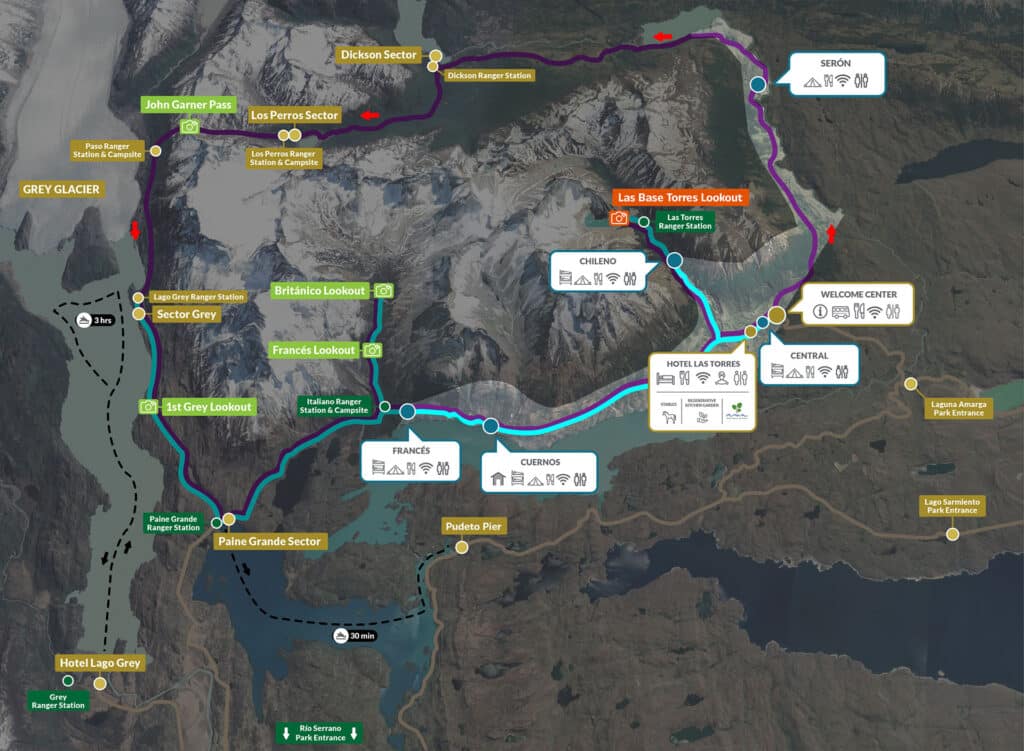
The W Trek in Patagonia is a thrilling multi-day hiking route that takes you through the mesmerizing Torres del Paine National Park, one of the most remarkable hiking destinations in South America. This 80 km (50 mi) trail offers an exhilarating blend of spectacular scenery, challenging terrains, and unforgettable experiences.
This section offers a thorough trek map overview of the W Trek, covering key points of interest and trail distances, assisting in your adventure planning.
Key Points of Interest
The W Trek is famous for its iconic granite towers, the awe-inspiring French Valley, and the majestic Grey Glacier. These breathtaking landmarks will leave an indelible impression on you as you traverse the challenging yet rewarding trails through the national park.
One of the most exhilarating highlights of the W Trek is the French Valley, where you’ll have the opportunity to marvel at both majestic mountains and tranquil lakes. Another must-see is Grey Glacier, an imposing wall of ice that will leave you speechless as you take in its sheer scale and beauty. And let’s not forget Paine Grande, the grandest peak in the park, standing tall and proud as a testament to the incredible power of nature.
Trail Distances
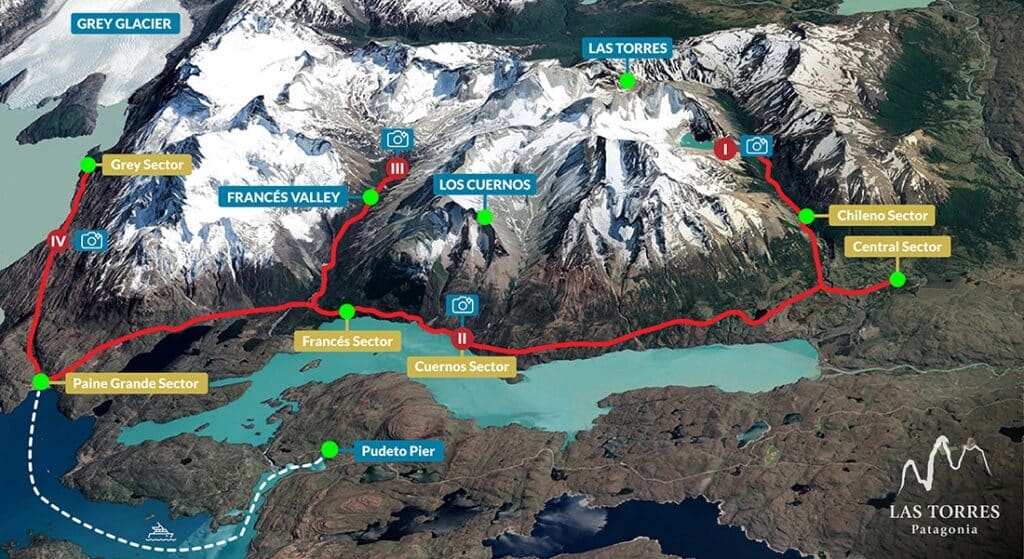
Familiarizing yourself with the trail distances between key points is critical in planning your daily routes along the W Trek. The first day of the W Trek, for example, covers an impressive 22 km (13.6 mi) from Hotel Las Torres to Refugio Los Cuernos.
Throughout the trek, you’ll encounter invigorating hikes like the one up to the towers on the final day, boasting an elevation gain of 900 meters (2,956 ft). Along the way, you’ll also have the opportunity to witness the breathtaking Glacier Grey.
Grasping the trail distances paves the way for better preparedness in tackling the W Trek, optimizing your unforgettable journey through Patagonia’s wild and untamed beauty.
W Trek Itinerary: Day by Day Breakdown
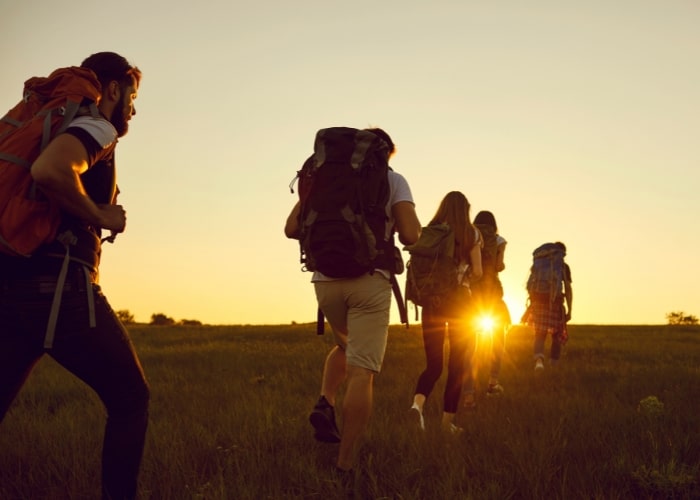
The best way to experience the awe-inspiring landscape of the Torres del Paine W Trek is by taking your time and enjoying it over 4 nights and 5 days. This section provides a detailed day-by-day itinerary for hiking the W Trek in Patagonia, inclusive of recommended stops and accommodations you’ll encounter on your journey.
Whether you’re a seasoned trekker or a first-time hiker, this itinerary will help you make the most of your adventure in one of the world’s most extraordinary landscapes.
Day 1: Hotel Las Torres to Refugio Los Cuernos
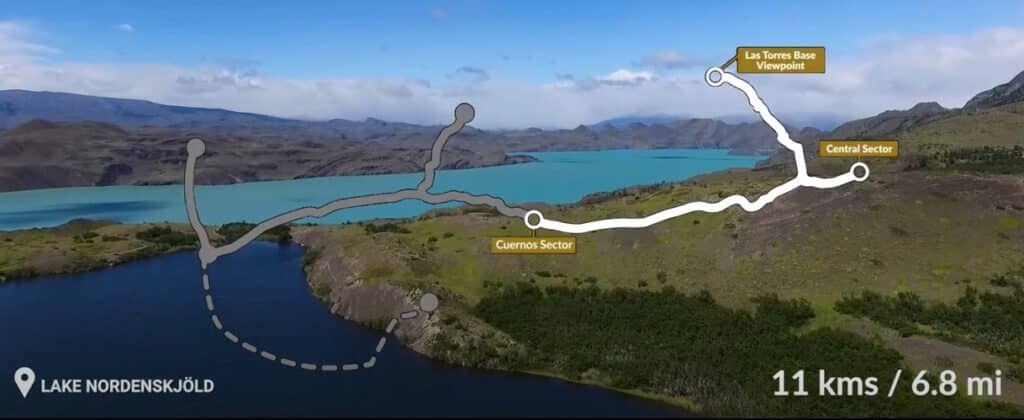
Your first day on the W Trek includes:
- Journey from Hotel Las Torres to Refugio Los Cuernos
- Distance of 22 km (13.6 mi)
- Takes around 6 hours
- Follow the Ascencio River to enter the Ascencio Valley
- Pass by the lookout point for the Towers at 900 meters
- Refugio Los Cuernos is aptly named after “The horns,” a pair of stunning granite peaks in the area.
To kick off your adventure, you’ll take the Bus Sur bus from Puerto Natales to Pudeto at 3 pm the day before, arriving in time for the last ferry of the day at 6 pm. The bus fee is CLP 12,000 (US$14), and the ferry fee is CLP 20,000 (US$25). Alternatively, you can opt for a thrilling walk from Laguna Amarga entrance to Hotel Las Torres, and the bus fee from Laguna Amarga to Hotel Las Torres is CLP 5,000 (US$6).
Day 2: Refugio Los Cuernos to Paine Grande
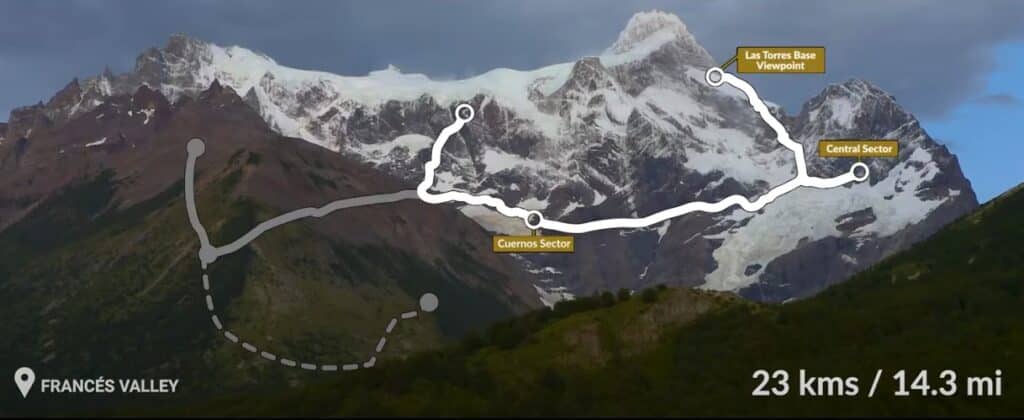
Day 2 of your W Trek adventure takes you from Refugio Los Cuernos to Paine Grande. This portion of the trek covers an impressive distance of 20 km (12.4 mi) and takes around 7 hours to complete. Along the way, you’ll be able to take in the majestic view of the Grey Glacier from several different vantage points.
On this day, you’ll also have the opportunity to explore the French Valley, one of the most breathtaking highlights of the W Trek. This lush, verdant valley offers stunning views of the surrounding mountains and lakes, making it a perfect spot to rest and soak in the beauty of Patagonia.
Day 3: Paine Grande to Grey Campsite
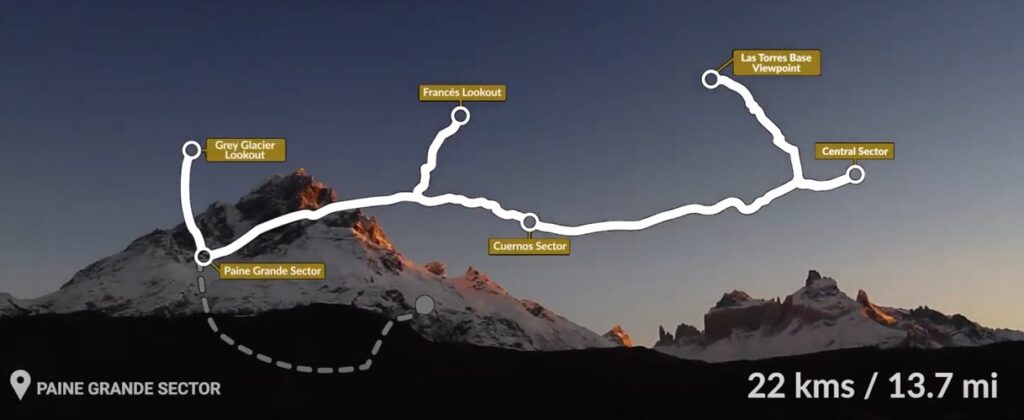
On the third day of the W Trek, you’ll cover the hike from Paine Grande to Grey Campsite. This segment of the trek is a thrilling 19 km (11.8 mi) journey that takes around 8 hours to complete. You’ll start your day at Paine Grande, then head to the Italiano campsite, followed by the Mirador Frances.
If the weather is good, you’ll have the chance to take a detour to Mirador Britanico, where you’ll be able to admire a stunning ring of toothy granite peaks, including the park’s second most famous landmark, the three-horned Cuernos del Paine. Afterward, you’ll finish off the day in the beautiful Francés Valley and campsite.
Day 4: Grey Campsite to Paine Grande
On the fourth day of the W Trek, you’ll hike from Grey Campsite back to Paine Grande. This leg of the journey covers 11 km (6.8 mi) and takes around 3-4 hours to complete. Along the way, you can enjoy the magnificent views of the Grey Glacier and its surrounding landscapes. Once you arrive at the Paine Grande campsite, you can rest and prepare for the next day’s adventure.
As you make your way back to Paine Grande, take the time to appreciate the stunning vistas of Los Cuernos and the majestic mountains that surround you. This day offers a more relaxed pace, allowing you to fully immerse yourself in the breathtaking beauty of Torres del Paine National Park.
Day 5: Paine Grande to Hotel Las Torres
The final day of the W Trek covers the hike from Paine Grande back to Hotel Las Torres. This leg of the journey includes a thrilling afternoon of kayaking, ice hiking, or a short hike to the hanging bridges. As you reflect on your incredible adventure through the wild and untamed beauty of Patagonia, take a moment to appreciate the unforgettable memories you’ve made along the way.
After completing your epic journey, you’ll return to Puerto Natales via bus and ferry. The bus fee from Laguna Amarga or Pudeto to Puerto Natales is US$14 (CLP 20,000/US$23 from Hotel Grey). With your W Trek adventure complete, you’ll head home with a heart full of memories and a newfound appreciation for the remarkable landscapes of Patagonia.
Essential Tips for Hiking the W Trek in Patagonia
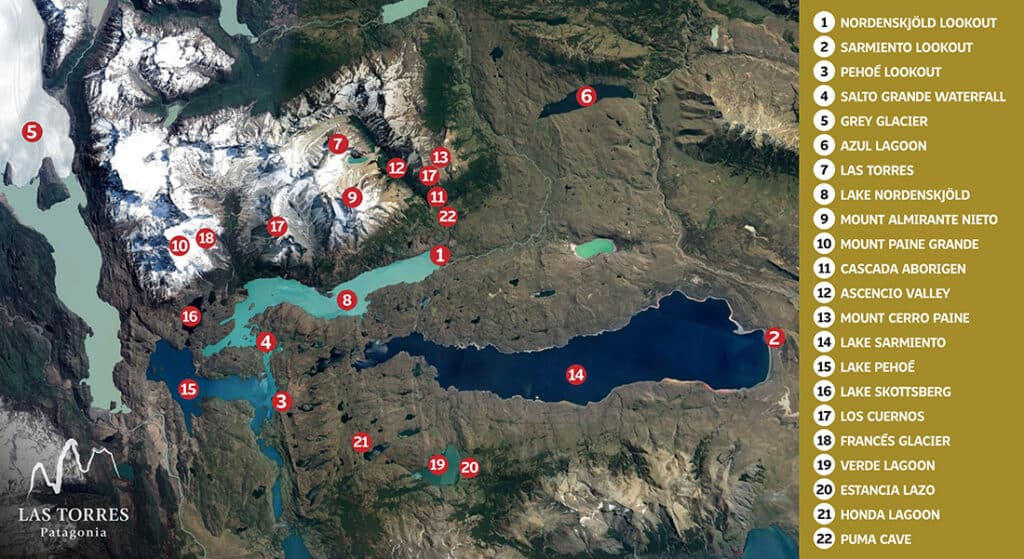
Being well-prepared and well-informed is paramount for the best possible experience on the W Trek. This section shares essential tips for tackling the W Trek, covering aspects like:
- Accommodations
Whether you’re a seasoned trekker or a first-time hiker, these tips will help you make the most of your adventure in one of the world’s most extraordinary landscapes.
Weather and Clothing
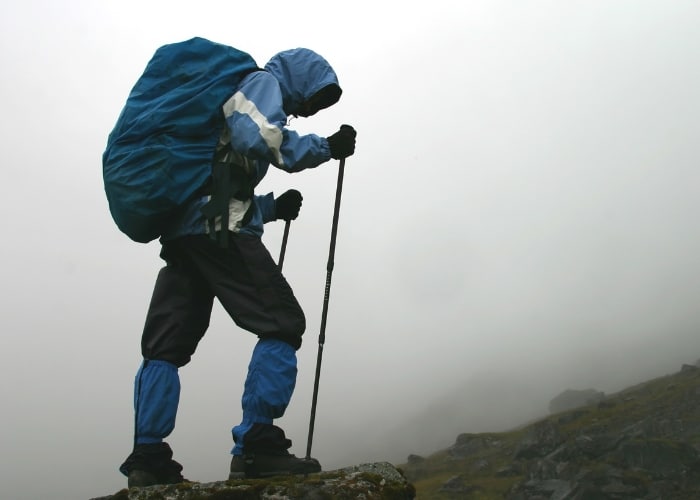
Patagonia’s unpredictable weather is one of the factors that make the W Trek such an exhilarating adventure. The best time to do the W Trek is from November to early March, when the average temperatures range from 10°C (50°F) to 18°C (64°F). Although it usually rains and snows throughout the hiking season, March and April are the peak months for precipitation, so it’s advisable to bring waterproof gear.
Selecting clothing and footwear for the W Trek requires consideration of factors like the terrain type, weather conditions, and the trek’s length. Be sure to pack a moisture-wicking base layer, a fleece layer for insulation and warmth, and a waterproof jacket and pants to protect against rain and wind. This layering system will help you adjust your clothing quickly and efficiently as the weather changes on the trek.
Accommodation Booking
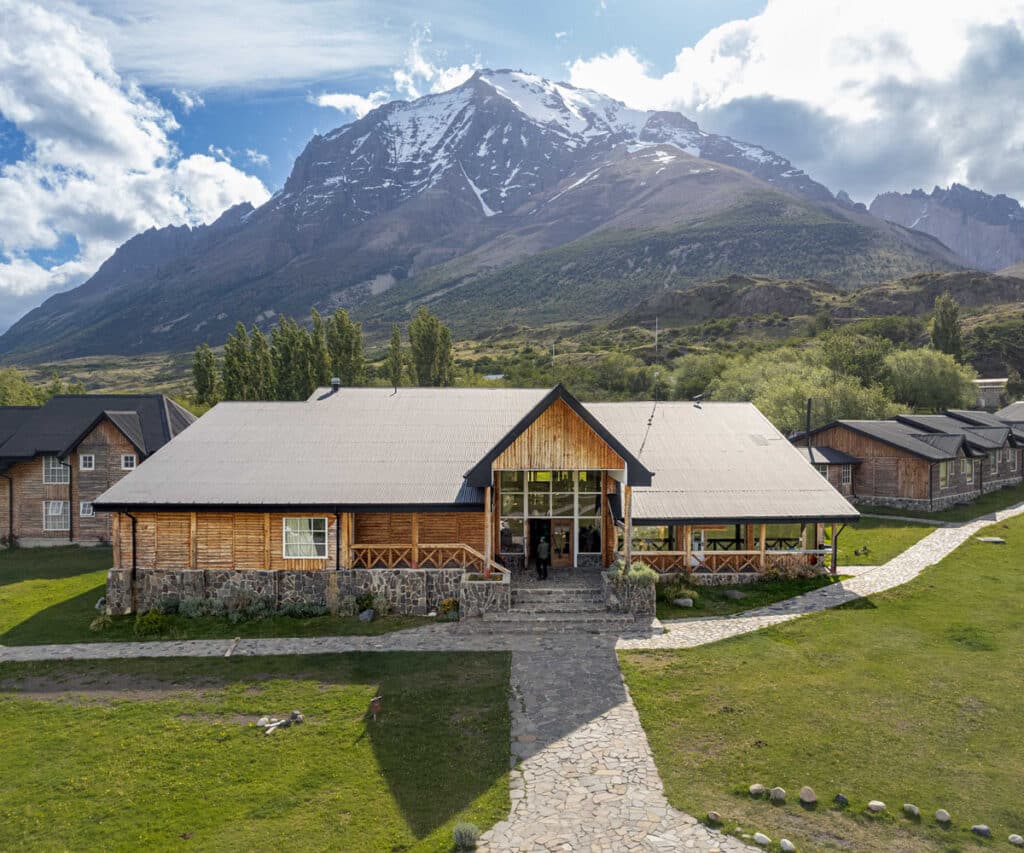
Accommodations along the W Trek include paid campsites with basic mountain hotels (refugios) and one free campsite. Booking your accommodations in advance is advised, as spaces may fill up quickly, especially during peak season. Websites like Patagonline can help you check availability and book accommodations directly.
When booking accommodations, be sure to consider factors like location, price, and available facilities. For example, Refugio Los Cuernos offers a stunning location nestled between granite peaks, while Paine Grande and Grey campsites provide breathtaking views of Los Cuernos and the Grey Glacier, respectively. By researching and booking your accommodations ahead of time, you’ll ensure a seamless and enjoyable W Trek experience.
Food and Water
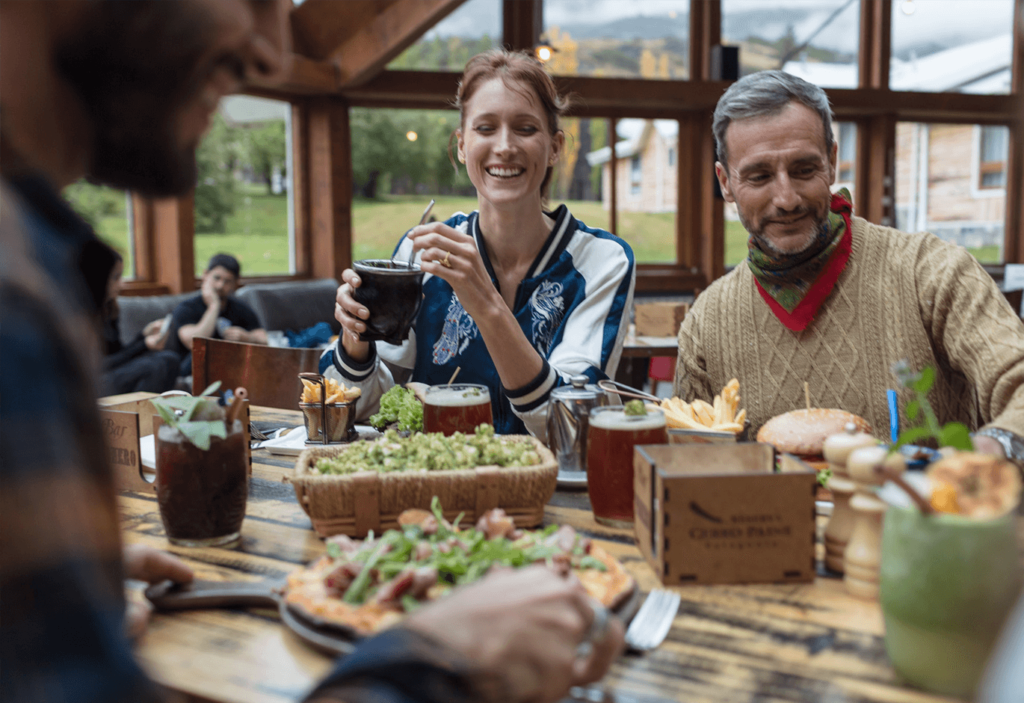
Attending to food and water supplies during the W Trek is a significant aspect of your adventure. Most camping sites and refugios have shops and restaurants where you can stock up on supplies and enjoy a hot meal. However, cooking your own food can be a great way to save money and add an extra element of excitement to your trek.
To ensure you stay well-hydrated, remember to bring a reusable water bottle and a water filter or purification tablets. Drinking water can be found all around the park and is of excellent quality. By planning your meals and water supply, you’ll have the energy and stamina needed to conquer the challenging terrain and make the most of your W Trek adventure.
Safety and First Aid
Safety takes top priority when embarking on the W Trek. Here are some essential safety tips to keep in mind:
- Stay reachable and inform people back home about your plans.
- Carry a charged phone with emergency numbers.
- Consider carrying a satellite phone, a hiking guide, or a paper map for added peace of mind and navigation assistance.
It’s also a good idea to carry a small first aid kit, including items such as band-aids, pain relievers, and any personal medications you may need. By taking these safety precautions and being prepared for minor injuries or ailments, you’ll ensure a successful and enjoyable W Trek experience.
Alternative Hiking Routes in Torres del Paine National Park
If you’re looking for alternative hiking options in Torres del Paine National Park, you’re in luck! In addition to the famous W Trek, there are several other exciting trails for you to explore. This section introduces:
- The more challenging and longer O Circuit
- A variety of day hikes
- Shorter treks, perfect for those with time constraints or seeking a less strenuous park experience.
The O Circuit
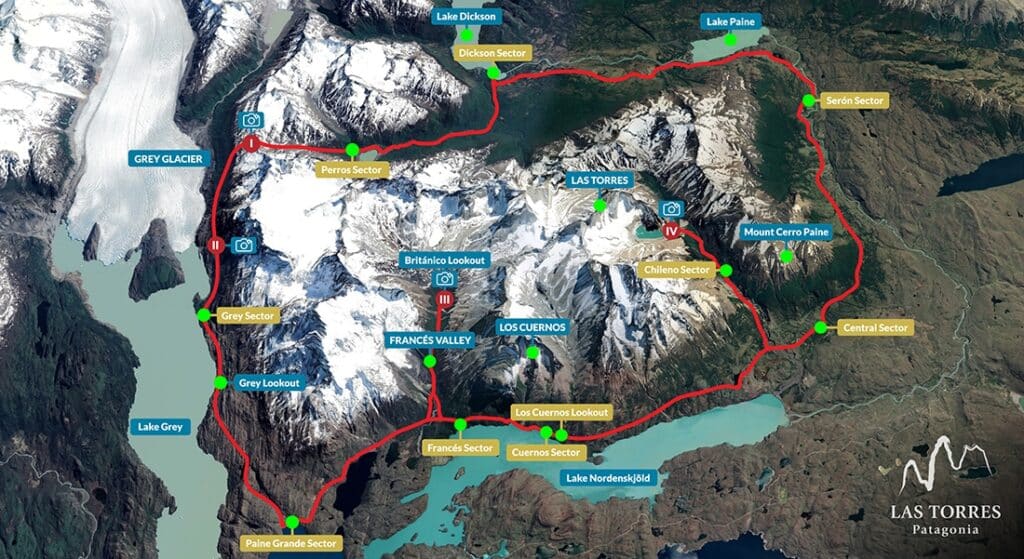
The O Circuit is an incredible full loop around the Cordillera del Paine, covering a distance of approximately 136 kilometers (85 miles) and taking around 6-10 days to complete. This challenging trek includes the popular ‘W’ route and the more remote backside, offering a unique and rewarding experience for adventurous hikers.
While the W Trek is great for those looking for a shorter and somewhat easier trek, the O Circuit is perfect for those seeking a more rugged and remote experience. The O Circuit takes you through a diverse range of landscapes, including dense forests, vast plains, and towering peaks, offering a true immersion into the wild and untamed beauty of Patagonia.
Day Hikes and Shorter Treks
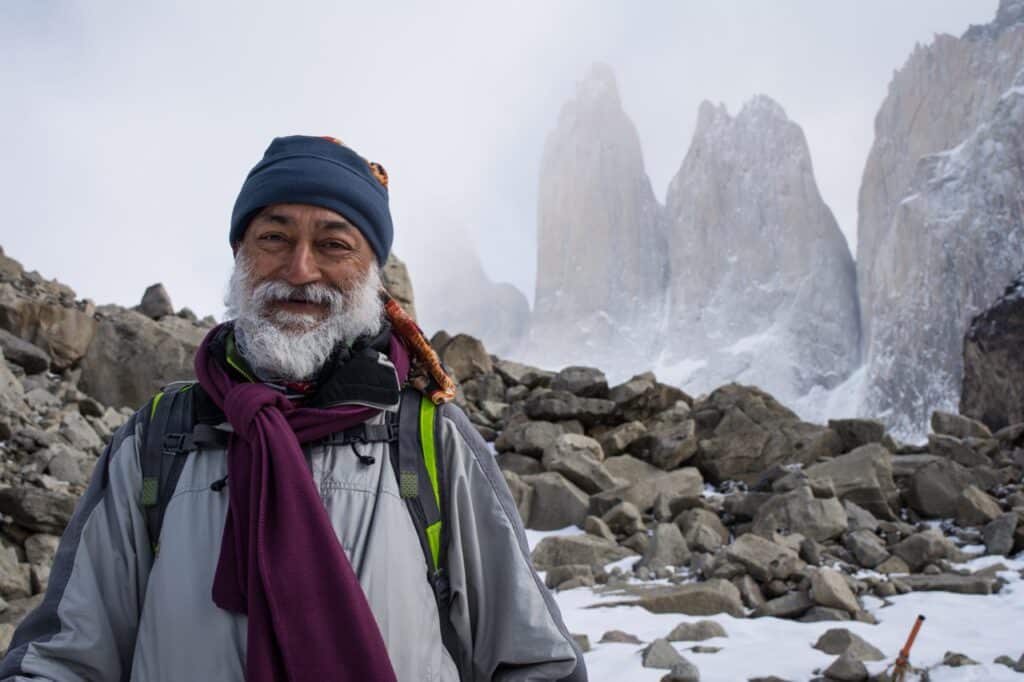
For those with limited time or seeking a less strenuous experience, Torres del Paine National Park offers a variety of day hikes and shorter treks, including the popular trek Torres del Paine. Some of the most popular day hikes in the park are:
- Mirador Las Torres
- Mirador Cuernos/Salto Grande
- Laguna Azul
- Salto Grande Waterfall
These trails provide stunning views of the park’s most famous landmarks and can be completed in just a few hours.
Whether you’re looking for a leisurely stroll to take in the breathtaking scenery or a more challenging day hike to push your limits, Torres del Paine has something for everyone. With its diverse range of trails and breathtaking landscapes, the park is a hiker’s paradise just waiting to be explored.
Day Trek: Mirador Las Torres
Mirador Las Torres is one of the most popular day hikes in Torres del Paine National Park, and it’s easy to see why. This trail takes you to the base of the park’s iconic granite towers – the Torres del Paine – providing a close-up view that’s truly awe-inspiring.
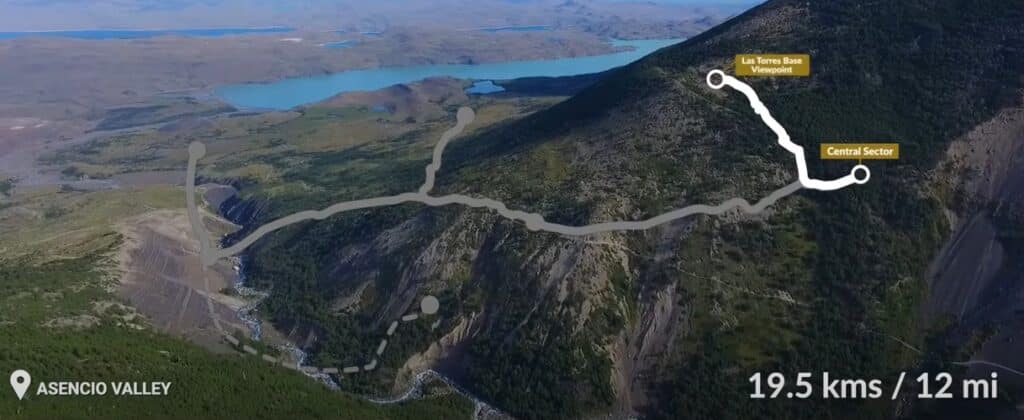
The trek is a challenging one, covering a distance of about 19 km (12 miles) round trip with a significant elevation gain. However, the effort is well worth it. As you ascend, you’ll pass through lush beech forests and across rushing rivers before finally reaching the turquoise lagoon at the base of the towers. The sight of the sun rising or setting on the towers is a spectacle not to be missed, making this trek a must-do for any visitor to the park.
Getting to Torres del Paine: Transportation Options
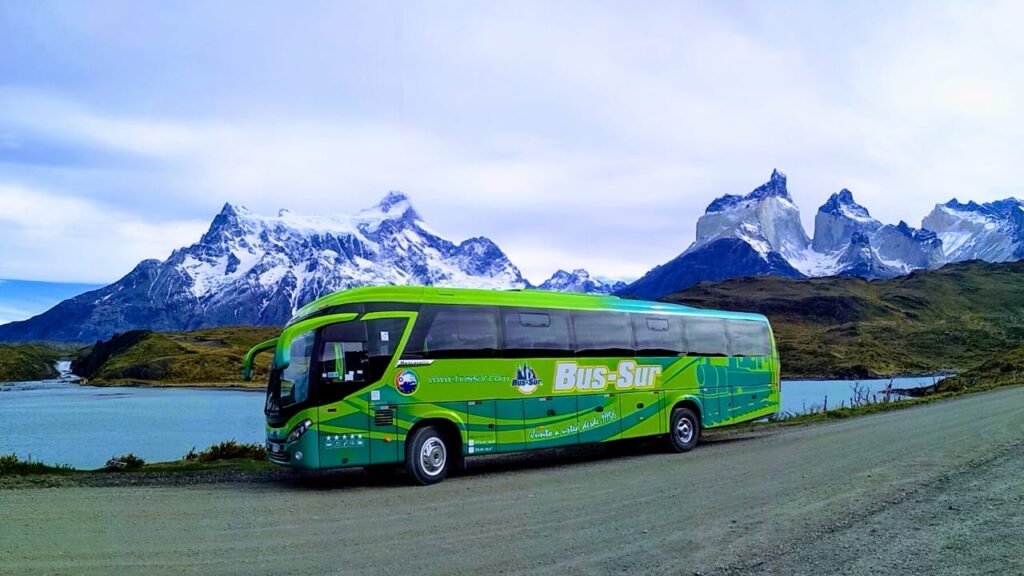
Reaching Torres del Paine National Park is easier than you might think, with several transportation options available. This section offers information on bus services and car rentals, assisting in your journey planning to the park.
Whether you prefer the convenience of public transport or the flexibility of driving, there’s an option to suit every traveler’s needs.
Bus Services
There are several bus services available for reaching Torres del Paine from nearby cities like Puerto Natales. We highly recommend either Bus-Sur or Buses Fernandez for your travel to Torres del Paine. The bus ride from Puerto Natales to Torres del Paine costs only $25 USD (return), and you can book your tickets online through websites such as:
When planning your bus journey, keep in mind that there are specific departure times from Punta Arenas to Puerto Natales, such as:
By planning your bus journey in advance, you’ll ensure a smooth and hassle-free trip to Torres del Paine National Park.
Buses Inside Torres del Paine National Park
Once inside Torres del Paine National Park, there are shuttle buses available to transport you between key points along the W Trek. These buses run at regular intervals throughout the day, providing a convenient way to navigate the park and rest your legs between hikes. Be sure to check the timetable and plan your hikes accordingly to make the most of this service. The bus service within the park is an excellent way to save energy for the trail and allows you to cover more ground in a shorter time, enhancing your overall experience of this stunning landscape.
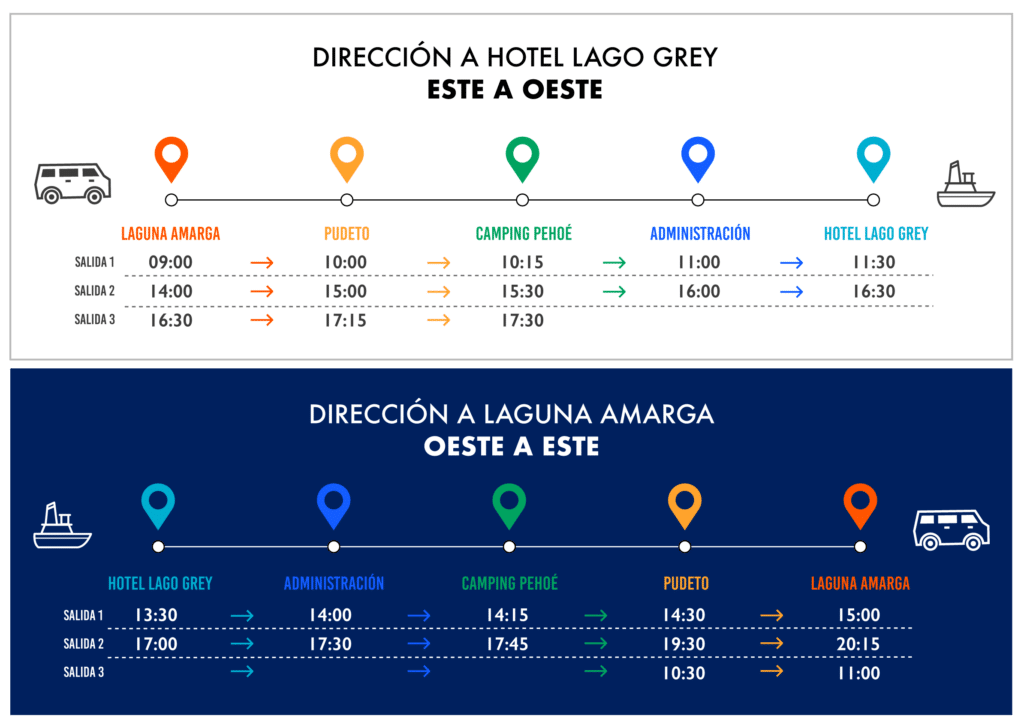
Car Rentals

For those who prefer a more flexible and independent travel option, renting a car is a great choice. To rent a car in Patagonia, you must have a valid driver’s license from your country and be at least 21 years old. The general costs of renting a car in Patagonia can vary, but on average, you can expect to pay around $76 per day for a small car rental.
Top-rated car rental companies in Patagonia include:
- Discover Cars
By renting a car, you’ll have the freedom to explore Torres del Paine National Park at your own pace and take breaks along the way to fully appreciate the breathtaking scenery.
Packing Essentials for the W Trek
Packing the right gear is crucial for a successful and enjoyable W Trek experience. This section provides a comprehensive packing list for hikers embarking on the W Trek, encompassing clothing, camping gear, and electronics.
By ensuring you have all the essentials, you’ll be well-prepared to tackle the challenging terrain and make the most of your adventure in the wild and untamed beauty of Patagonia.
Clothing and Footwear
Choosing clothing and footwear for the W Trek requires consideration of terrain type, weather conditions, and the trek’s length. Here are some recommendations:
- Pack a moisture-wicking base layer
- Bring a fleece layer for insulation and warmth
- Don’t forget a waterproof jacket and pants to protect against rain and wind
This layering system will help you adjust your clothing quickly and efficiently as the weather changes on the trek.
The ideal footwear choices for the W Trek in Patagonia are waterproof all-leather boots with deep treads. Additionally, gaiters can be a great way to keep your feet dry and prevent water from slipping in over the top of the boots. By investing in the right clothing and footwear, you’ll ensure your comfort and safety on the W Trek, allowing you to fully enjoy the incredible landscape and adventure that awaits.
Camping Gear
Camping gear is essential for your W Trek adventure. Invest in:
- A good tent, such as the Big Agnes Battle Mountain 2 or the ALPS Mountaineering Highlands Tent
- A lightweight and compact sleeping bag suitable for cold temperatures
- A roll mat for sleeping
- A mess kit for cooking
Additionally, don’t forget to pack:
- Base layers
- Trekking pants
- Hiking socks
- A waterproof backpack cover
By packing the right camping gear, you’ll be well-prepared to tackle the challenging terrain and make the most of your W Trek adventure in the stunning landscapes of Patagonia.
Electronics and Navigation
Electronics and navigation tools can be invaluable during your W Trek adventure. A GPS device, such as the Garmin inReach Mini or handheld devices from Outdoor Gear Lab and Switchback Travel, can help you stay on track and navigate your way through the park. Additionally, smartphone GPS apps like Gaia GPS and AllTrails can also be useful for navigating your way on the trail.
Remember to bring a charged phone with emergency phone numbers, a satellite phone if available, and a head torch for early morning or late-night hikes. By packing the right electronics and navigation tools, you’ll ensure a safe and enjoyable W Trek experience, allowing you to fully explore the breathtaking landscapes of Torres del Paine National Park.
In conclusion, the W Trek in Patagonia’s Torres del Paine National Park offers an unforgettable adventure through some of the most breathtaking landscapes on Earth. By following our comprehensive guide, you’ll be well-prepared to tackle the challenging terrain, plan your accommodations and meals, and make the most of your time in this extraordinary region. So lace up your hiking boots, pack your bags, and get ready to embark on the adventure of a lifetime!
Frequently Asked Questions
How long is the w trail in patagonia.
The W Trek in Patagonia is a moderately difficult hike covering 46 miles (76km) and typically takes 4-5 days to complete. It includes mainly gentle terrain with some challenging climbs of up to 800m. Be sure to come prepared for varying weather conditions.
Where do you sleep on the W trek in Patagonia?
On the W Trek in Patagonia, you can sleep in shared dormitories or upgrade to a private alternative. There are five refuges/campsites available along the route: Grey, Paine Grande, Frances, Cuernos and Central – check out our post for all the details!
What is the hardest trek in Patagonia?
The El Chaltén Trek in Patagonia is one of the most difficult treks to undertake, featuring demanding nature and views of Cerro Solo. So be prepared for a full test and take advantage of stunning scenery in this lesser-known area!
What is the best time of year to hike the W Trek?
The best time of year to hike the W Trek is from November to early March, when temperatures are mild and the weather is more stable for optimal trekking conditions.
How long does it take to complete the W Trek?
You can conquer the W Trek in 4-5 days, depending on how fast you go and what route you take.
PAINE TREKK
Book Travel Consultation
Book a 30-minute consultation with a travel expert to optimize your planned trip. I will assist you in organizing your trekk in Torres del Paine, ensuring an unforgettable adventure.
Book a 30-minute consultation with a travel expert to optimize your planned trip. I will assist you in organizing your trek in Torres del Paine, ensuring an unforgettable adventure.
Save on your trip
- Book excursions in English.
- Search for cheap flights.
- Book your Car for Patagonia
- Buy travel and cancellation insurance for COVID
- Book transfers from the airport.
- Book buses within Argentina
- The best books and travel guides.
Book your tours
Search for your hotel, related posts.
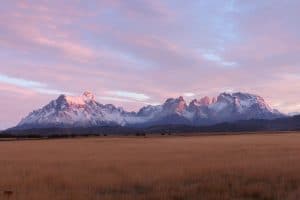
Where is Torres del Paine
Torres del Paine National Park is located in southern Chile, five hours north of Punta Arenas,

Torres del Paine how to get there
Torres del Paine National Park is remote, a characteristic that adds to its intrigue but also
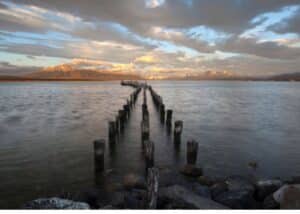
Where is Puerto Natales
In the south of Chile, Puerto Natales is one of the must-see places for those who
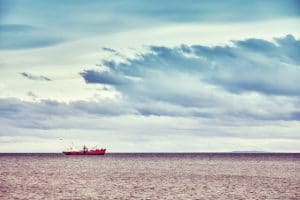
Where is Punta Arenas
Punta Arenas is located at the southern tip of South America, just north of the Strait

About the author
I am Matias, born in Patagonia, and a lover of my land.
For more than 20 years I help foreign travellers to organise their trip to Patagonia.
I also manage this exotic accommodation on the Atlantic coast.
- Torres del Paine

Latest posts
- Best Tango Show in Buenos
- Best Patagonia Travel Books
- Hop On Hop Off Buenos Aires
How much does a trip to Patagonia cost?
Top 15 must-see argentina locations for your 2024 trip, argentina vacation guide: explore top destinations and tours, top-rated patagonia tour companies for 2024/2025 adventures, is there a train from buenos aires to patagonia, can you fly from buenos aires to patagonia, explore the majestic ice: your ultimate perito moreno glacier tour guide, destinations.
- Book your excursions
- Search for cheap flights
Terms & Conditions / Privacy Policy

Hiking The W Trek In Patagonia: A Self-Guided Itinerary [2024]
01 apr 2024 11 nov 2023 | dan.
You can choose your own adventure when it comes to trekking in Chile, but if you like to plan ahead, here’s our tried-and-tested 5 day/4 night, east-to-west, self-guided itinerary for hiking the W Trek Patagonia .
Last updated on 26 March 2024 by Dan
Torres del Paine National Park is a place so epic and otherworldly, its name is often spoken with a kind of hushed reverence. This vast and dramatic stretch of Chilean Patagonia is home to some of the most mind-blowingly beautiful scenery on Earth, and hiking the W trek is one of the greatest ways to immerse in it.
This is Patagonian hiking at its very best, but how you trek the W trail is entirely up to you .
You can go with a guide, or do the W trek self guided (in the warmer months anyway). You can stay in lodges and enjoy a cooked meal and a warm bed. You can carry your own gear and pitch your tent in one of the designated campsites along the way, or carry no gear and book a tent at each site. You can carry all your food, or add a half or full board meal package to your booking, or do a bit of both.
We opted to camp but rather than carry all the gear, we arranged for a pitched tent to be waiting for us each day. We packed food for most of the trek and booked a full board meal package (dinner, breakfast and packed lunch) at one of our overnight camping stays.
The direction you hike and the time you take to do the trek is also your call. As occasional hikers with temperamental knees, we opted for the typical self guided W trek itinerary of 5 days and 4 nights .
Many argue that hiking west to east, and saving the striking granite peaks of Las Torres for the last day is a fitting finale to this incredible hike. We took the opposite view though, starting with the awe-inspiring torres and hiking the W trek east to west so that we could tackle the toughest legs of the trail in the first couple of days, while we still had plenty of energy.
At the end of the day, no matter how you take on the W hike, you’re still trekking one of the most spectacular trails on the planet. And you’ll still get to enjoy the jaw-dropping vista of Las Torres. Twice even, if you’re keen.
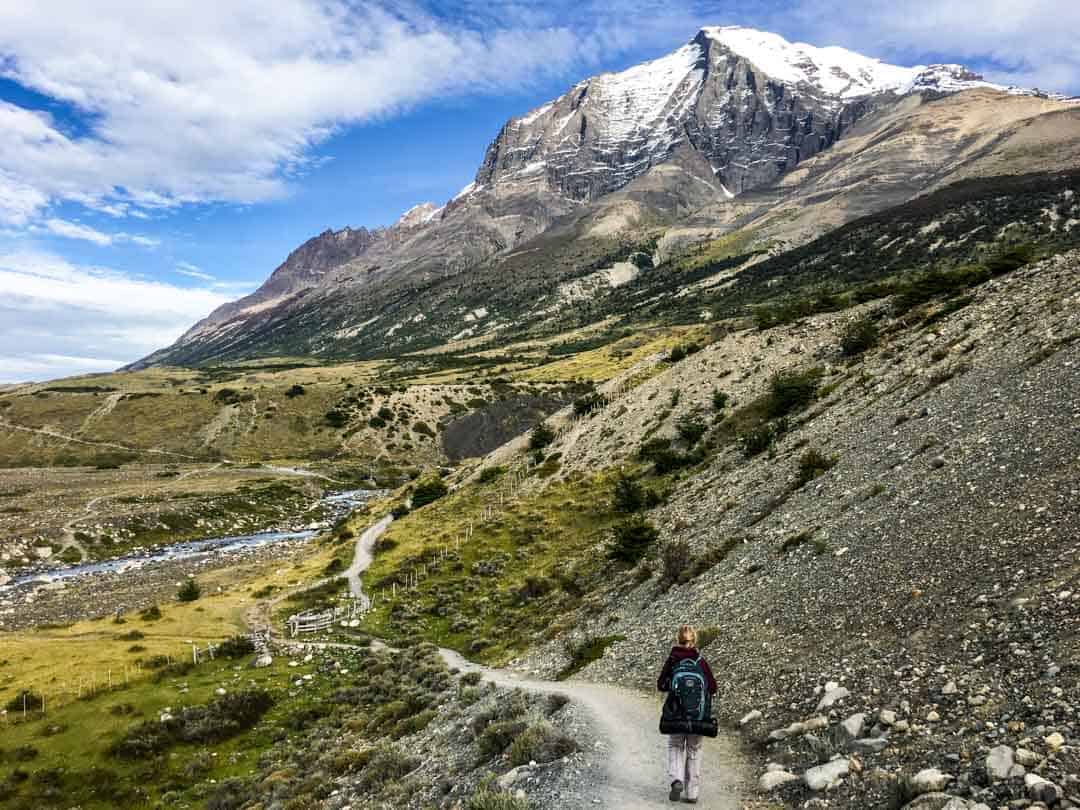
Hiking the W Trek Snapshot Location: Torres del Paine National Park, Chile Nearest town: Puerto Natales, Chile Getting to and from the park: Torres del Paine is easily accessible by bus from Puerto Natales. Park entry: Park entry tickets and overnight stays in the park (campsites and lodges) must be arranged before visiting the park. Start and finish: The W Trek traverses a roughly w-shaped route through Torres del Paine National Park between Refugio Las Torres in the east and Refugio Paine Grande in the west. For this itinerary, we start in the east and hike west. Distance: appx. 74 kilometres (46 miles) one-way Time: This itinerary is 5 days and 4 nights Difficulty: Moderately difficult, with some challenging stretches and steep climbs, plus highly changeable weather. We’re occasional hikers but with some preparation and a reasonable level of fitness, we found the W Trek very do-able (even if all our muscles were screaming for days afterwards!).
What’s in this post?
Preparing for hiking the W Trek Patagonia What time of year is best for hiking the W? Where to stay before and after the trek Entry to Torres del Paine National Park Booking Camping and Accommodation on the W Trail Bus tickets to and from Torres del Paine Packing for the W Trek Our Self-guided itinerary for hiking the W Trail Day 1 – Puerto Natales to Chileno via Las Torres Day 2 – Chileno to Francés Day 3 – Francés to Paine Grande via Francés Valley Day 4 – Paine Grande to Grey Day 5 – Grey to Paine Grande (and return to Puerto Natales)
This post contains affiliate links. If you find these links useful and you choose to purchase through these links we may receive a small commission, at no extra cost to you, which helps us to keep this website running. Your support is much appreciated!
Preparing for hiking the W Trek Patagonia
We aim to fully check and refresh this post for each trekking high season (October to April). Things can change without notice though, so we recommend also visiting the links below for information while you’re planning and before you go:
- For the latest updates on requirements for travel to Chile, visit the official Chile tourism website .
- Torres del Paine National Park is managed by the park agency CONAF. Visit the official national park website for park reports, park entry information and more.
- When you check-in at the park for your trek, you’ll receive an information guide with a map showing the park’s trails, services and accommodations. The current brochure can be found here .
What time of year is best for hiking the W?
Patagonian weather will keep you on your toes no matter when you visit Torres del Paine National Park. Be ready for everything. However, there are two distinct periods to be aware of when planning your trip.
High Season – October to April
These are the warmer months in the southern hemisphere, and December to March is the busiest time of year to trek in the park, with visitation peaking over January and February. During this period, you can choose to do a self-guided hike or go with a guide .
If you’re travelling in high season, and particularly if you’re planning to visit during the peak months, be sure to reserve your place in the lodges or campgrounds as far in advance as possible . Torres del Paine is now one of the most popular places to trek in Chile and overnight places book up very quickly.
We hiked the W trail towards the end of March, and while sections were busy, like the path to Las Torres, there were stretches where we wouldn’t see more than a handful of people in hours.
That said, despite making our campsite reservations months prior to our visit, we initially struggled to find availability and had to change our trekking dates to suit what we were able to book.
Low Season – May to September
Many people say winter is even more magical in Torres del Paine.
The park entry fee drops during the low season and you’ll find far fewer people in the park. But temps will also be lower, daylight hours are shorter, rain is frequent and there can be snow and ice. Many of the mountain trails are closed, as are a number of the mountain lodges and services. Trails that are open can also close suddenly due to weather (though that can happen at any time of the year).
Most importantly, to do the W Trek or hike to the base of Las Torres during the low season, you must have a qualified guide . This period typically runs from 1 May to the end of August, but check the official Torres del Paine website for more information if you’re planning to visit over this time.
The bottom line: No matter what time of year you visit Torres del Paine, given the changeability of the weather there, you should check in with park agency CONAF for latest updates and closures.
Where to stay before and after the trek
The nearest major population centre, and the main jump-off point for a Torres del Paine trek is Puerto Natales , a low-key Patagonian town hugging the shores of the picturesque Última Esperanza Sound.
The drawcard of Torres del Paine’s trails has seen Puerto Natales develop a buzzing trekker scene.
We suggest giving yourself a couple of days in Puerto Natales before your trek to get organised, shop, hire any gear you need, and sort out transport to and from Torres del Paine if you haven’t already (see our section on sorting out bus tickets further on).
Just about everyone staying in Puerto Natales is out and about doing the same thing, so having extra time in town means you can stress less if you don’t find what you’re looking for in the first place you visit.
Spending a couple of days here after your trek is also worthwhile – you can rest your weary bones and enjoy this charming little town.
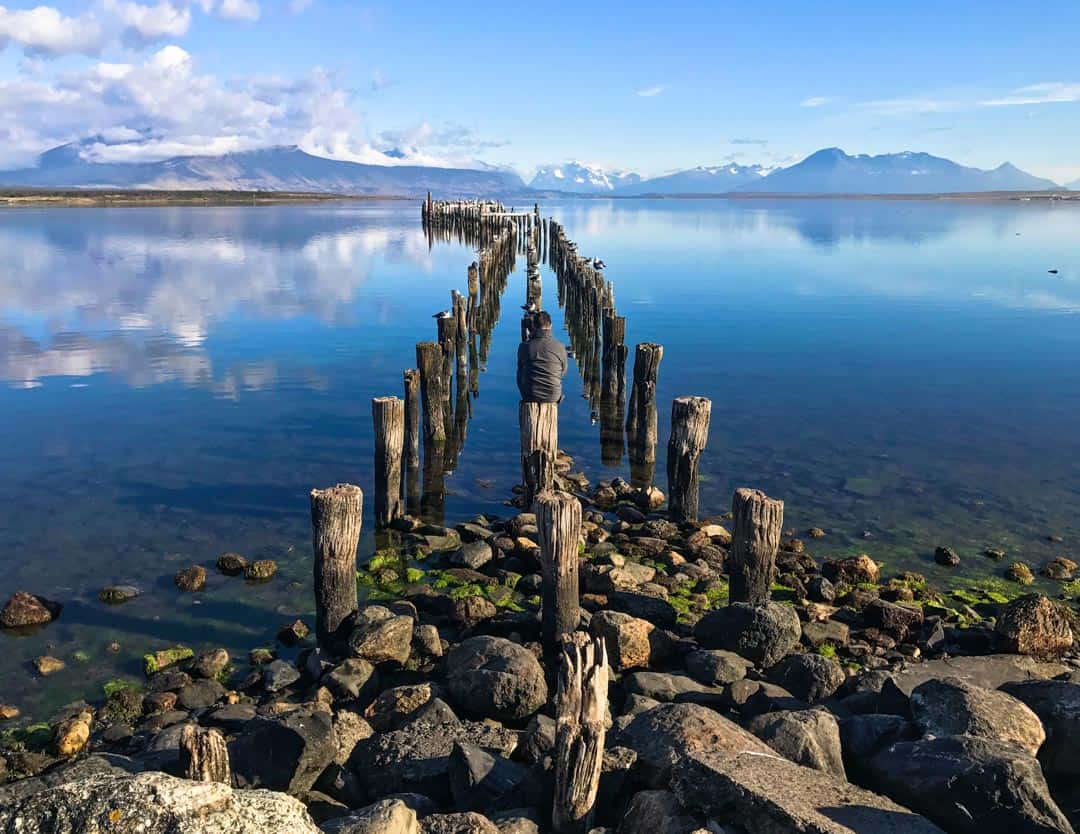
Accommodation in Puerto Natales
Puerto Natales isn’t a big place, but you’ll find everything from budget hostels through to five-star luxury in and around the town.
We stayed at the charming, centrally-located Hotel Aquaterra both before and after our trek. This is a great mid-range option and we really enjoyed our time here. They also stored our luggage for us while we were on the trail.
For more accommodation options like this in Puerto Natales, take a look at Booking.com . Or, if you’re after something more in the budget range, you’ll find various hostel options here .
One place we’ve definitely got our eye on for a future stay is this unique domed apartment . It’s about eight kilometres (five miles) out of town, but with the views this place has, we wouldn’t be moving from the window seats anyway. Perfect for a post-trek, legs-up retreat!
Entry to Torres del Paine National Park
Entry to Torres del Paine National Park is ticketed and there are capacity limits in the mountain lodges and campgrounds. This is for the long-term care and protection of this wild and remote place, and for the safety of visitors to the park. So whether you’re planning to hike the W, trek the O circuit or visit for the day, you will need a ticket to get into the park.
You must now buy your entrance ticket for Torres del Paine National Park at least 24 hours in advance of your visit to the park. You can no longer buy an entry ticket at the park itself. Visit the CONAF website to buy your park entry ticket .
Entry fees vary depending on whether you are Chilean or international, as well as your age, and whether you intend to stay in the park up to, or more than, three days. At last check, international adults 18 and over will pay CLP$31,200 (CLP is Chilean pesos) for up to three days in the park, and CLP$44,500 for more than three days.
Download your ticket to your phone before you head to the park (you won’t have reception there) and carry a printed copy just in case. You should also carry a copy of your passport as you may be asked to show your ID/nationality.
Booking Camping and Accommodation on the W Trail
There are various ways to stay overnight on the W trek in Torres del Paine National Park, but whether you’re planning a lodge stay, hiring camping equipment, or camping with all your own gear, you’ll need advance reservations to do so.
Overnight reservations are mandatory for Torres del Paine and, like park entry tickets, need to be made in advance . You cannot book camping or accommodation once you’re at the park, or camp outside the designated bookable camping zones.
You’ll also need to carry evidence of your overnight reservations as you may be asked to show proof at any time by a park ranger or when passing through checkpoints. We printed our reservation confirmations and carried these with us.
With trekking in Torres del Paine becoming ever more popular, limited accommodation spots and advance booking necessary, sorting out campsites or lodge accommodation is – in our experience – probably the trickiest part of planning a self guided W trek itinerary.
For this reason, we recommend booking your overnight stays as far in advance as possible , preferably as soon as bookings open for the season.
It also pays to be flexible about where you stay, as you may find you need to rework your trekking dates and approach based on what’s available.
Our final W trail hiking itinerary was the direct result of where and when we could get an overnight booking.
How to book your overnight stays in the park
There are a number of mountain lodges (refuges) and campsites in Torres del Paine, and you can only stay overnight in these designated zones.
Broadly speaking, the zones in the east are managed by Las Torres Patagonia (formerly Fantástico Sur) and those in the west are managed by Vertice Travel .
There are also a couple of free campgrounds in the park which are managed by the Chilean park agency CONAF. However, these campgrounds are closed for the 2023-24 season – visit the CONAF website for updates.
You can book direct via the Las Torres Patagonia and Vertice Travel websites, however we know from experience that trying to align availability and book spots for a workable W circuit itinerary across different websites can be complicated and time-consuming. Another reason to plan well ahead.
We’re now aware of a new website called Booking Patagonia , which offers an integrated booking system for travel, tickets and accommodation for Torres del Paine. Tours can also be booked through this site. We haven’t used it yet so we can’t personally vouch for it, but if you do use it, we’d love to know how you go (one of our readers has recently provided some feedback about their experience in the comments at the end of this post).
Bus tickets to and from Torres del Paine National Park
We based ourselves in Puerto Natales, the nearest town to Torres del Paine, before and after our trek and most travellers do the same. From Puerto Natales, it’s an easy bus trip to and from the park.
If you’re travelling by bus, we recommend organising your bus tickets to and from Torres del Paine well in advance . Don’t leave this until the day you head to the park or you may find the buses already full.
If you plan to buy your tickets when you arrive in Puerto Natales, aim to do so as soon as you arrive in town. You can buy bus tickets at the main bus station (Terminal Rodoviario), or through your hotel or hostel. We travelled to Puerto Natales by bus so we bought our tickets to Torres del Paine at the bus station the day we arrived. You can also search bus services and buy tickets online here .
It’s important to note that your bus drop-off/pick-up points at the park may vary depending on your final W trail itinerary, so keep this in mind when booking your bus ticket.
If you follow this itinerary and trek from east to west, you’ll start with the bus from Puerto Natales to Laguna Armaga . After your trek, you will board the bus at Pudeto for the return journey to Puerto Natales (this follows a catamaran ride across Lake Pehoe to Pudeto from Paine Grande). Vice versa if you’re hiking the W from west to east.
To ensure you’re on the trail in good time (and in line with this itinerary), we recommend booking one of the earliest buses out of Puerto Natales on Day 1.
Packing for the W Trek
Any hike, but especially a multi-day hike, can quickly lose its appeal if you’re carrying too much weight in your pack; something we can personally attest to. So we strongly recommend packing light and only carrying the clothes, gear and food you need for the trek.
If you’re travelling longer term and have more stuff with you – which was our situation – leave it in storage at your hotel. Your back will thank you for it.
You can find most of what you need to buy or rent in Puerto Natales for hiking into the surrounding landscapes, from sleeping bags, camping stoves and hiking poles to dried fruit and nuts for your trail mix.
That said, this is a small and relatively remote town and the local prices reflect it. We’re told there’s more choice and better prices at the supermarkets and shops in Punta Arenas, so if you’re coming from or via Punta Arenas, you might consider doing your trek shopping while in that town.
We’ve also read recent reports that it hasn’t been so easy to find dehydrated meals lately in Puerto Natales. If you’re planning your menu around these, you might think about sourcing them elsewhere.
It’s important to know that Chile has stringent rules around what foods you can and can’t bring into the country (fresh foods, fruits, honey, etc are a no-no). Be sure to declare any foodstuffs you do bring in and plan on buying most of what you need for trek meals and snacks once you’re in the country.
We had a tight meal plan for our spin on the W, but with hindsight, we would swap out some of the bulkier food stuffs we packed for lighter, more compact foods. Next visit, we’ll be looking to pack some dehydrated camping meals and light-weight but filling carbs like cous cous and oats.
The night before the trek, organise any food you’re carrying into daily packages of brekkie, lunch and dinner. Pre-bundling your meals saves scrabbling around in your pack for particular items on the trail). Then pack all the gear you’ll be taking with you in waterproof bags inside your backpack.
Cash, pesos or credit card? One question we get asked is whether to carry US dollars or Chilean pesos into the park, and whether the refuges accept credit cards. We carried all three. We paid for some things in pesos, like snacks and the shuttle to the trail head, and other things in USD, like the catamaran from Paine Grande to Pudeto. We also used our credit card at one of the refuges to buy beers. It’s our understanding that all of the refuges accept credit cards.
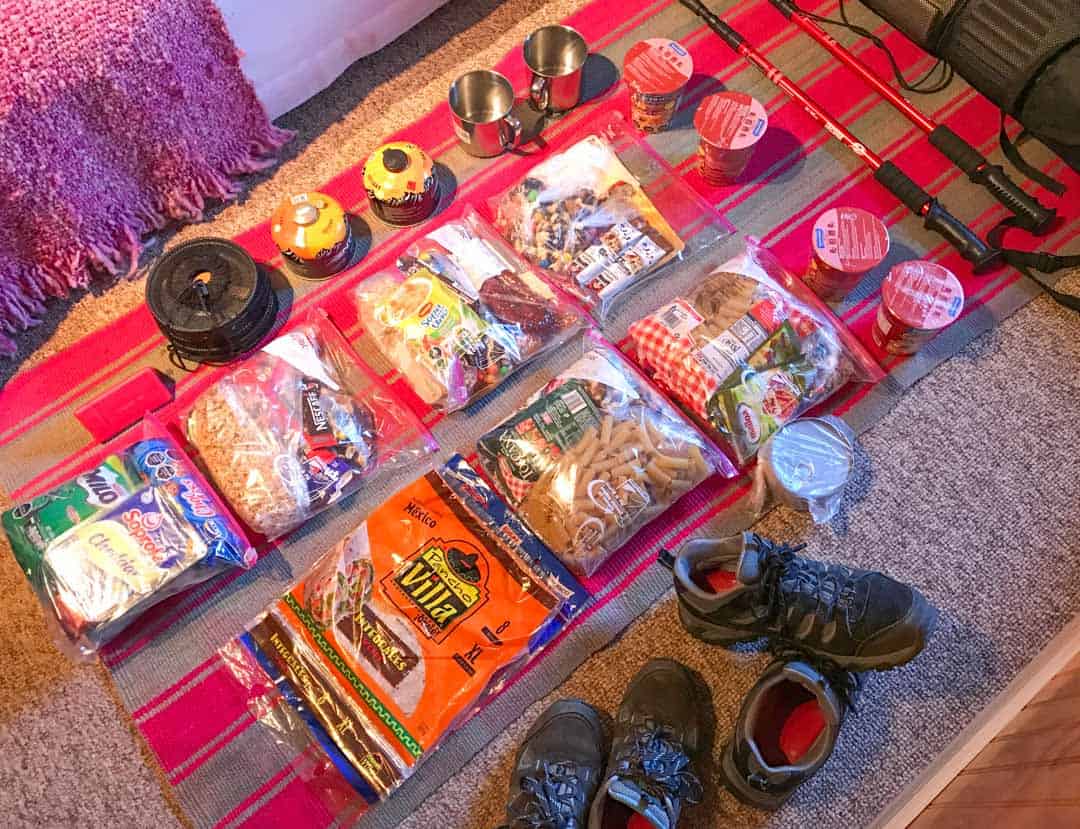
Our self-guided itinerary for hiking the W Trail
Day 1 – puerto natales to chileno via las torres, total distance: appx. 13.8 km (8.5 miles) total time: appx. 8 hours overnight: camping chileno.
Let’s get trekking! Hopefully you’ve secured your seat on one of the earliest buses out of Puerto Natales this morning (see above regarding buying your bus tickets in advance).
Buses making the run to Torres del Paine National Park generally depart from Terminal Rodoviario in town. Find your bus and load your pack, then kick back until it’s time to go. It’s around two hours to Laguna Amarga, the gateway to Torres del Paine National Park, so settle in, this is a perfect excuse to grab some extra sleep before starting the hike.
When you arrive at the Laguna Amarga Ranger Station, have your pre-purchased park entry ticket ready on your mobile phone or bring a printout. Here, you’ll check in and receive information about visiting the park, and its rules and regulations.
Don’t forget to buy your entrance ticket for Torres del Paine in advance, and at least 24 hours before you head to the park . It’s no longer possible to buy entry tickets on arrival at at the park. Head to the CONAF website for more information .
At Laguna Amarga, hikers split into two groups: those starting their journey here at the eastern end of the park, and those heading to the western starting point at Paine Grande, which involves a further bus trip to Pudeto and a catamaran ride across Lake Pehoé (even if you’re hiking west to east, you’ll get off the bus here to check-in before reboarding the bus for Pudeto).
If, like us, you’re hiking the W from east to west , your next step after check-in is to jump aboard the Hotel Las Torres public shuttle bus from Laguna Amarga to the Welcome Centre and the eastern starting point of the trek. This costs around US$5 per person and is paid in cash as you board (we paid this in pesos).
Alternatively, you can start your hike here from Laguna Amarga. The shuttle will just spare you a dusty 7 kilometre walk along the gravel road.
There’s a toilet at Laguna Amarga, and another at the Welcome Centre. This is a good chance to go before setting off into the mountains.
Trekking tip: We booked our first night’s accommodation at Camping Chileno, which is en route to today’s main destination – the towering granite peaks of Las Torres. We’ll be checking in at Chileno on the way and dropping off our packs ahead of the steep and challenging climb to the Las Torres mirador. If, however, you’ve booked your first night at Hotel Las Torres or Central Refuge and Camping, then we’d suggest dropping off your packs there first, and setting out on today’s hike to Las Torres with a lighter load.
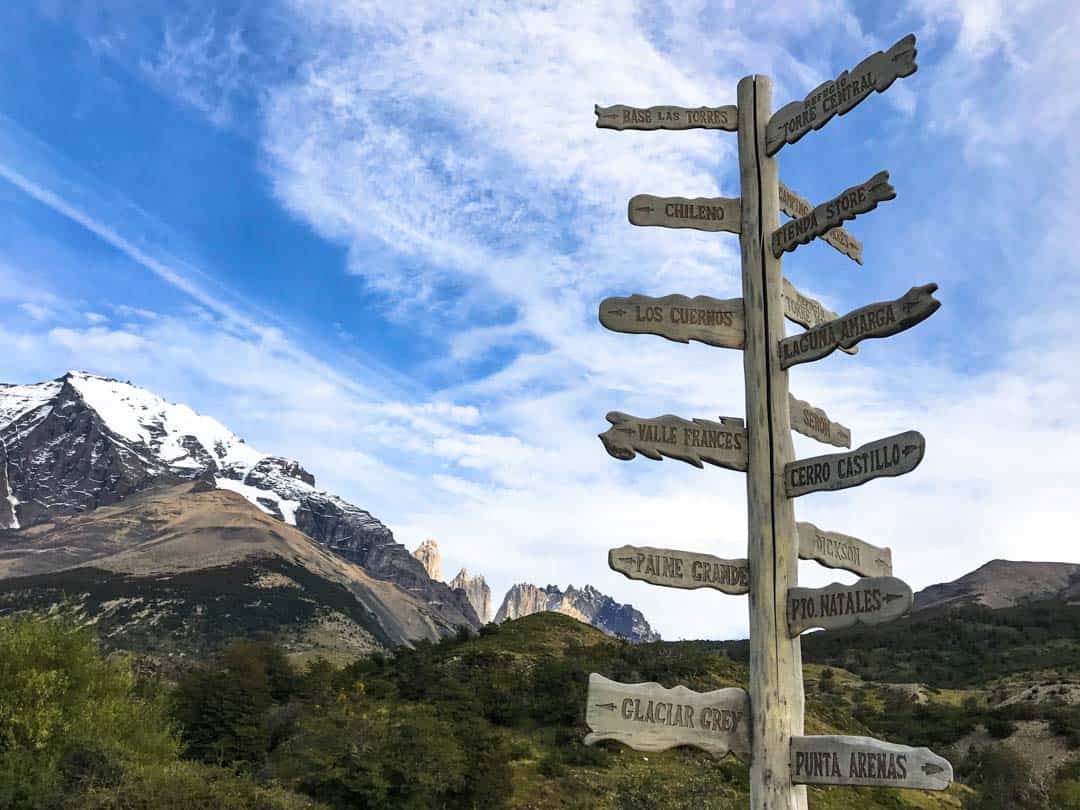
1st Leg: Hotel Las Torres to Chileno ( appx. 5 km / 3.1 miles, around 2 hours)
We’re officially underway on the W trail around 10.30am and from the word go, the views are eye-popping. After a flat kilometre or so, the path starts to climb: get used to it, it’s pretty much uphill from here.
The hike is moderately steep in some spots, until about a kilometre (0.6 miles) or so from Camping Chileno, where the trail flattens out a little before descending into the campground.
Despite feeling like our hearts might explode for much of this first stretch, we cover the distance in around two muscle-busting hours, with frequent stops to take in the views, rehydrate, and give our racing pulses a break.
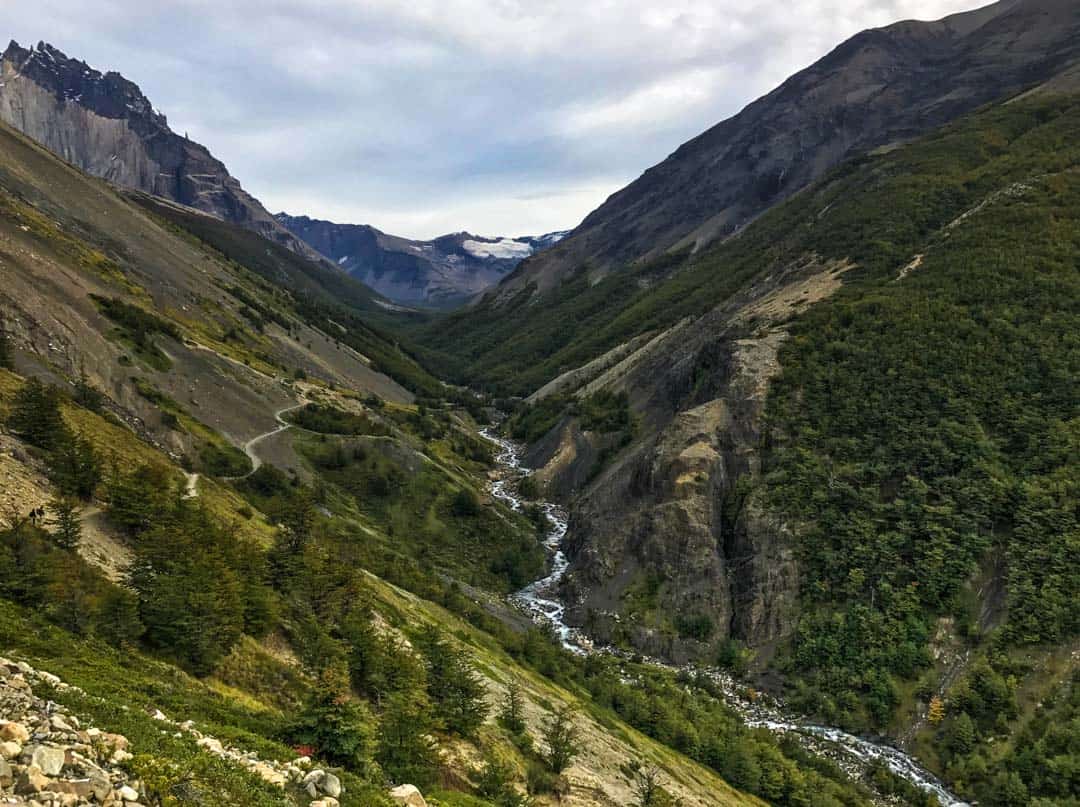
Drinking water There’s no need to lug extra water with you on the Torres del Paine circuit. You’ll pass pristine mountain streams regularly throughout your journey. Bring a water bottle, fill up at nature’s tap and enjoy some of the purest water you’ll ever drink. Just remember to top up well away from the camps and upstream of the trails.
We haul our packs into Chileno around 12.30pm . This campground is operated by Las Torres Patagonia (formerly Fantástico Sur), and is the closest camp you can stay at to the famous Las Torres hike and mirador (the CONAF-managed campground near the base of the Las Torres climb has been closed for some time).
The riverside setting at Chileno is truly stunning and the sheer peaks of the three granite towers – our ultimate goal today – rise tantalisingly above the forested mountains ahead.
The campground itself is a nice set-up of tiered camping platforms among the trees. There are shared bathrooms with hot showers, and a restaurant and bar with big windows, plus an outdoor terrace for soaking up the epic views.
Our tent is ready for us when we arrive at Chileno, so we check in, drop our bags in our tent, grab a smaller pack with snacks, water bottles and cameras, eat the lunch we prepared last night, and set out for Las Torres around 1.30pm . Timings here may vary depending on your check-in.
2nd Leg: Chileno to Las Torres (appx. 4.4 km / 2.7 miles, around 2 hours)
This is without doubt today’s toughest leg, so there’s a huge bonus in not having to tote your full pack up the mountain.
From Chileno, you’ll hike for around 3 kilometres (1.9 miles) or so along a meandering path through pretty woodland, across rushing rivers, and through a wonderfully moody stretch of fallen forest that we dub the ‘tree cemetery’. It’s a lovely, moderate walk, and we have no sense of what’s ahead when we reach the sign that tells us ’45 minutes to Mirador Las Torres’.
My notes from this point in our trek simply state: ‘hiking hell starteth here’. A touch dramatic maybe, but as irregular hikers, this was probably the hardest section of the entire W for us. Maybe you’ll breeze through it, just be ready for it.
Shortly after the sign, the climb to Las Torres begins in earnest. It’s a gritty, rocky terrain of steep, gravelly inclines and large boulders. The panoramas as you climb are absolutely breathtaking, but so is the hike itself. There are moments while we’re in the throes of it, looking up and spotting the tiny trekkers far above, that this stretch feels like it will never end.
It does end though, about an hour later, and the scene that awaits as we round a final boulder and face the towering granite pillars of Las Torres makes every single breath-wrenching step worth it.
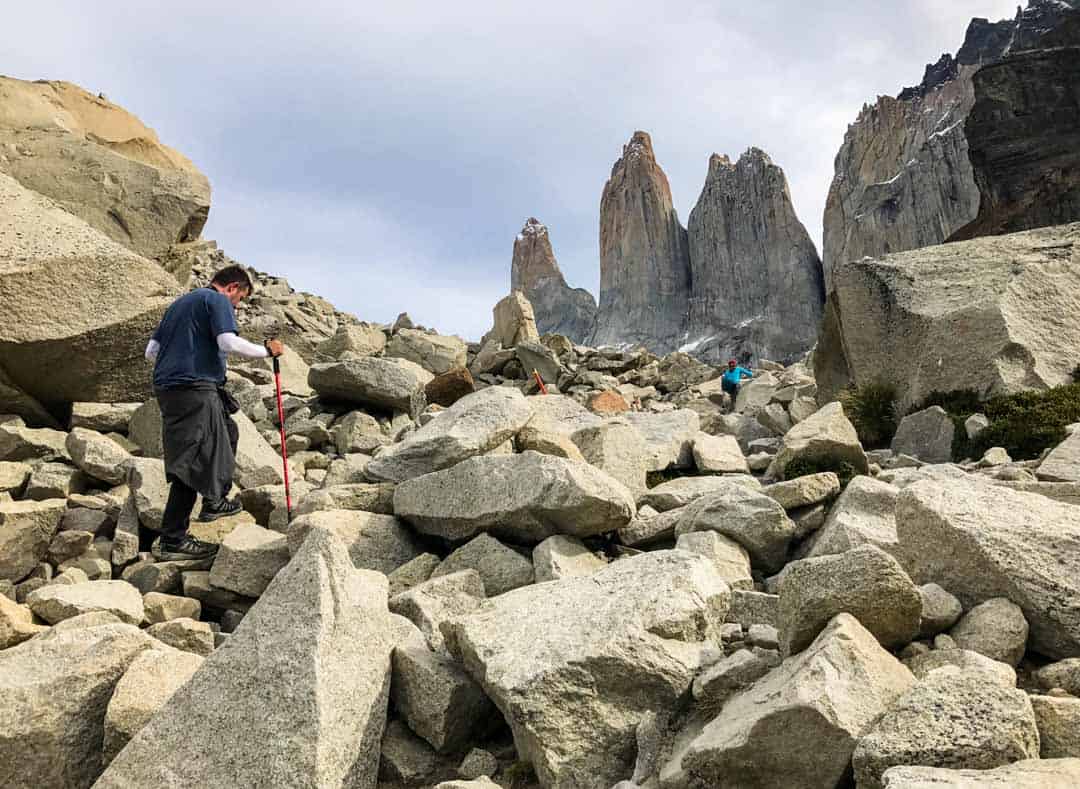
It’s buzzing at the top: hikers drape the rocks surrounding the glacier lake; a bushy-tailed Patagonian fox weaves its way between the boulders; there’s even a guy getting his hair cut at the water’s edge (one hairdresser’s quirky approach to memorialising his travels while promoting his business).
We spend some time taking pics before settling onto a boulder of our own to simply take in this awe-inspiring scene. Aim to spend around an hour at Las Torres .
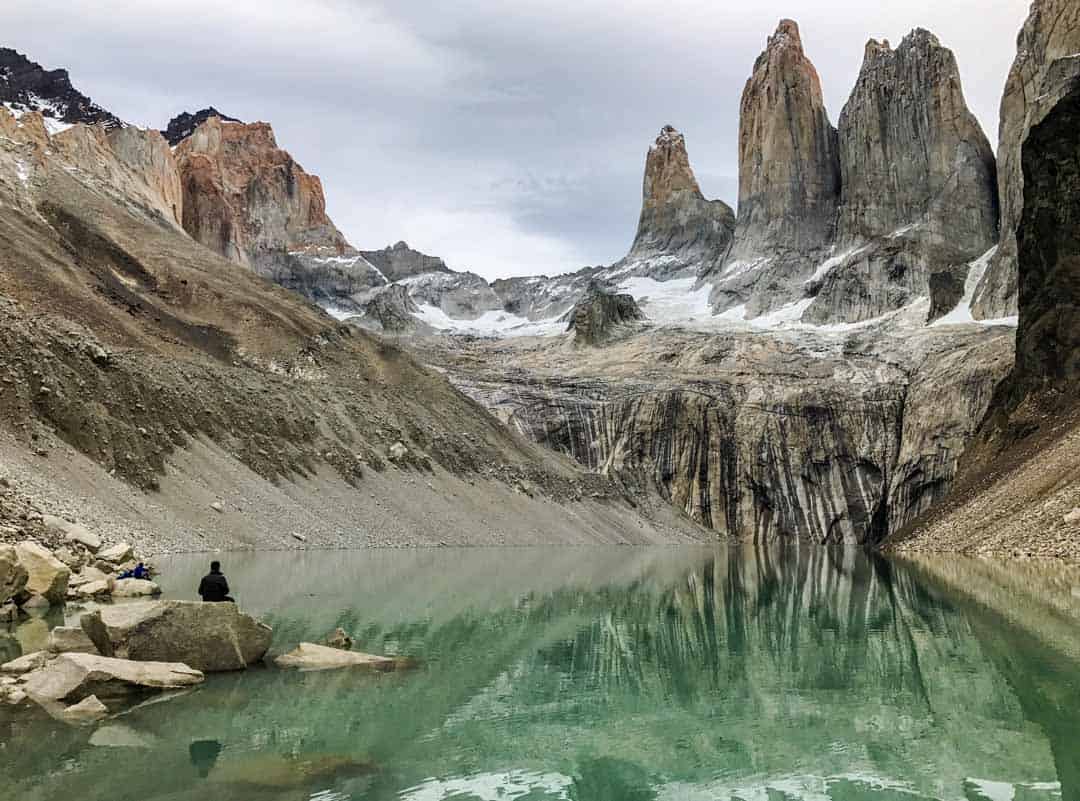
3rd Leg: Las Torres to Chileno (appx. 4.4 km /2.7 miles, around 2 hours)
The journey back down from Las Torres is in some respects even more challenging than the climb up. The constant down is tough on knees and the gravel makes the going slippery. We’re beyond grateful for our hiking poles, though we both still manage to pull off some memorable butt slides.
Trekking tip: Hiking poles made all the difference for us when we were trekking in Patagonia. We carried one each, which was ideal as it left us both with a hand free to grab branches and rocks, haul each other up and down, and catch our fall when we slipped. Which was often.
It takes us around two hours to get back to Chileno; we have time to shower, buy a couple of well-earned beers and watch the sunset burn the tips of Las Torres molten gold.
It was cloudy the entire time we were up at the base of the towers, so watching them all beautifully backlit now is a bit of a kicker, but if there’s one thing you’ll learn quickly hiking the W Patagonia, it’s that the weather doesn’t give a rats what you think.
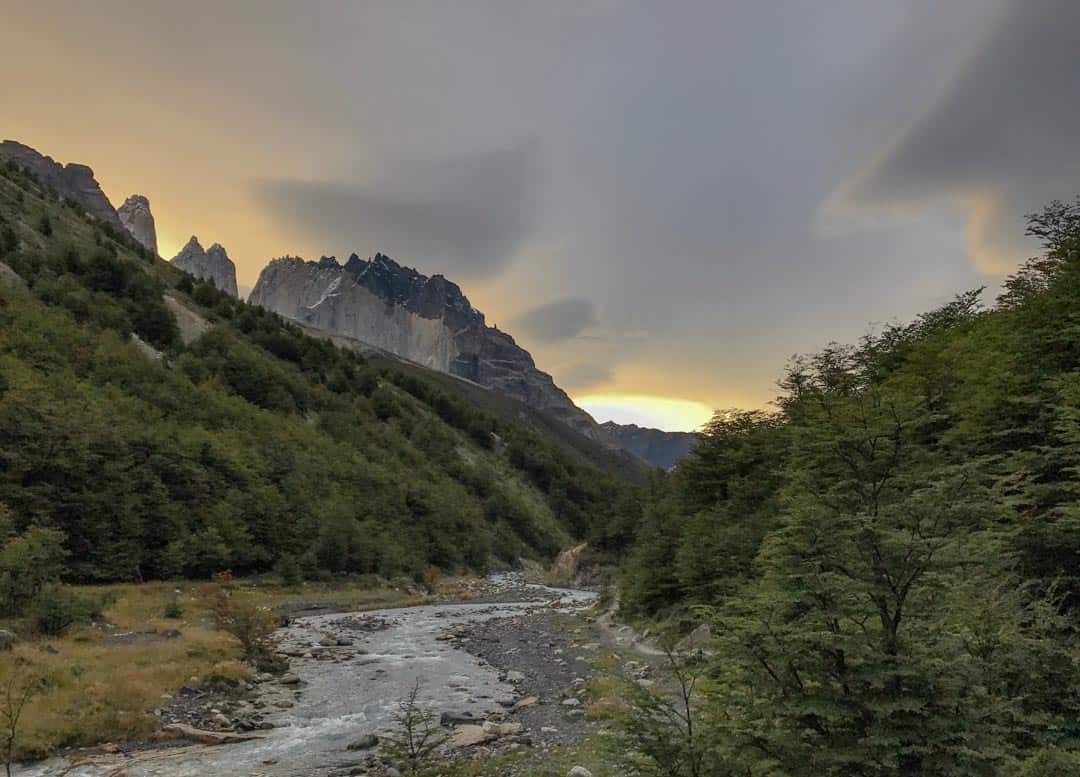
Preparing for Patagonian weather If there’s one constant about the weather in Patagonia, it’s that there’s nothing constant about it. We were particularly lucky on our five days in Torres del Paine, but you should be ready for four seasons in a day. Layer up, have a rain jacket handy, and wear quick-dry clothes. Skip a rain cover for your bag though. While we never experienced the legendary winds that tear through the park from time to time, we heard plenty of stories of pack covers being whipped off suddenly and disappearing into the wilds. Expect to get rained on, and pack your gear in bag liners or waterproof bags inside your backpack instead.
Cooking stoves are not allowed to be used in the Chileno zone, so we opted for the full board food package here, which includes dinner tonight, breakfast tomorrow and a packed lunch to take with us.
Later in the evening, we join a host of other hikers in the restaurant for a surprisingly tasty and filling three-course meal full of protein and carbs.
We’re absolutely wrecked by the end of dinner, and we’re tucked up in our sleeping bags by 9.30pm.
Sunrise at Las Torres When we originally planned our itinerary for hiking the W, we had every intention of doing a second trek to Las Torres for sunrise on Day 2. In late March, this would have entailed getting back on the track up the mountain by 5.30am . As we climbed into our sleeping bags that first night though, we decided to pull the pin: we were just too tired, and we were also a little wary of making the tricky climb in the poor dawn light.* It was a tough call at the time, and it didn’t help when we poked our heads out of our tent the next morning to see the torres erupting with golden light above the silhouetted foreground. As we watched though, the clouds rolled in and soon enough the peaks were shrouded in mist. There’s no accounting for Patagonian weather, or how your body may feel after a long day of hiking. The best you can do is plan, and be flexible on the day. *PS. For safety reasons, hiking in the dark isn’t actually allowed in Torres del Paine. Trail sections have opening and closing times, check the park brochure for more info.
Day 2 – Chileno to Francés
Total distance: appx. 18 km / 11.2 miles total time: appx. 6 hours 45 minutes overnight: camping francés.
Sunrise is around 8am when we do the W trek in late March, and as we haven’t made the dawn hike to Las Torres, we enjoy a more leisurely start to the morning on Day 2.
If you do decide to do the dawn hike up to Las Torres for sunrise, factor in around five hours this morning and adjust the following timings for today’s next legs accordingly.
As breakfast is part of our full board package at Camping Chileno, we pack up our gear and head to the dining room at 8.30am for a hearty kickstart to the day.
1st Leg: Chileno to Los Cuernos (appx. 15 km / 9.3 miles, around 4.5 hours)
We’re on the trail by 9.15am , heading back towards Hotel Las Torres. We won’t be going all the way to the hotel though as there’s a shortcut off to the right around half-an-hour after leaving Chileno. The shortcut is signposted and takes you along a mostly downward sloping path surrounded by undulating hills and lake views.
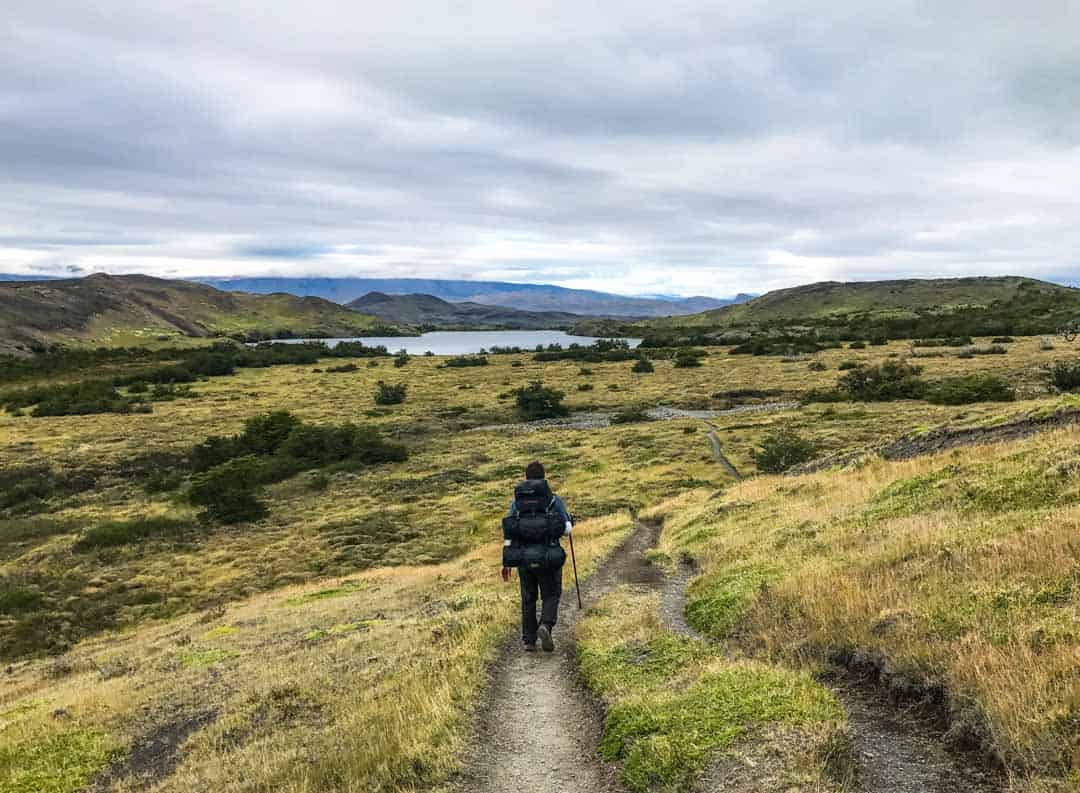
We reach the end of the shortcut and rejoin the main W route around 11am . At some point after this though, we suddenly find ourselves in what can only be described as the Patagonian Swamps of Mordor and we start to wonder whether we’ve veered off on to a secondary trail by mistake.
We can still glimpse the Nordernskjöld Lake off to left, and we know the official trail travels alongside it. To this day, we’re unsure if we did actually go off piste (though the number of bootprints in the mud suggests not).
Eventually, we seem to be back on track according to the map, just a little muddier for the experience (and even more grateful for our depth guage hiking poles).
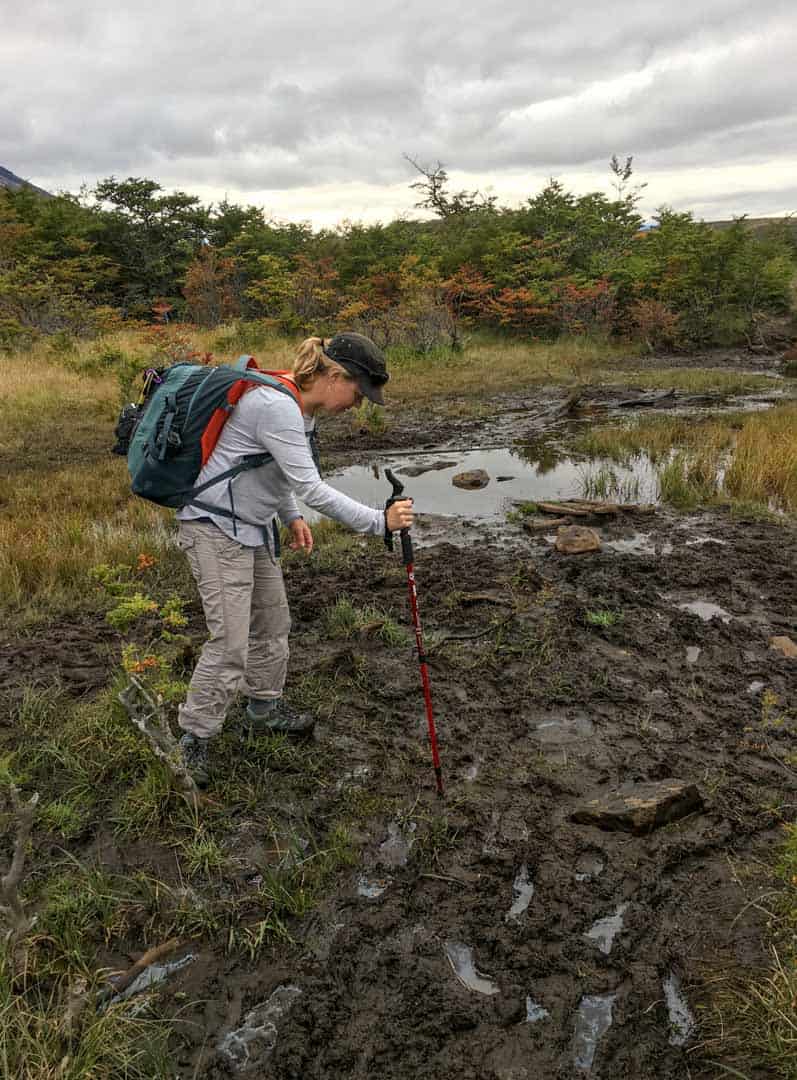
The next stretch travels up and down through very pretty lakeside country, with the occasional steep section, before passing down into the valley at Los Cuernos. We arrive at the Los Cuernos shelter and camping area around 1.45pm .
You could stop at any point along the stretch to Los Cuernos for a lunch break; we stop just past the shelter and find a nice rock with a view. We opted for the full board meal package with Camping Chileno so we’ve been provided with a packed lunch today as part of this.
We chill for around 45 minutes and then set off around 2.30pm for Camping Francés , where we’ll be staying tonight.
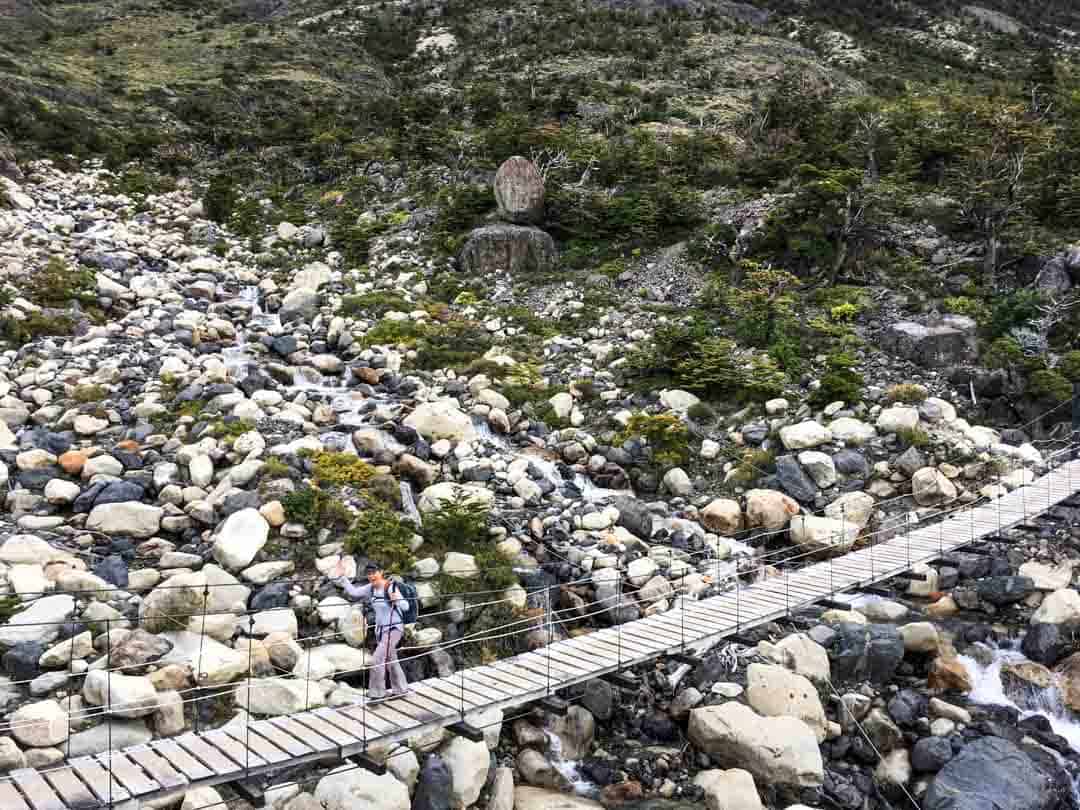
2nd Leg: Los Cuernos to Francés (appx. 3 km / 1.9 miles, around 1.5 hours)
The trail to the Francés campground is up and down and rubbly, with some steep sections, and a pretty pebbly beach crossing. Today’s walk has been positively sedate compared to yesterday’s heart-starter climbs, but never fear, a leg-burning rise awaits just before the descent into the camp.
We arrive at Camping Francés around 4.00pm . The campground here is run by Las Torres Patagonia (formerly Fantástico Sur).
The tent platforms are clustered between the trees and there’s a good shower and toilet block a short walk from the campsite. There’s also a small shop with basic amenities.
By 5.15pm we’re checked in and set up on our platform. We’ve arranged for a tent at Camping Frances but we’re cooking our own food tonight.
Sunset is close to 8pm in late March, and having made it through our second day on the W trail, we’re zipped up in our sleeping bags soon after.
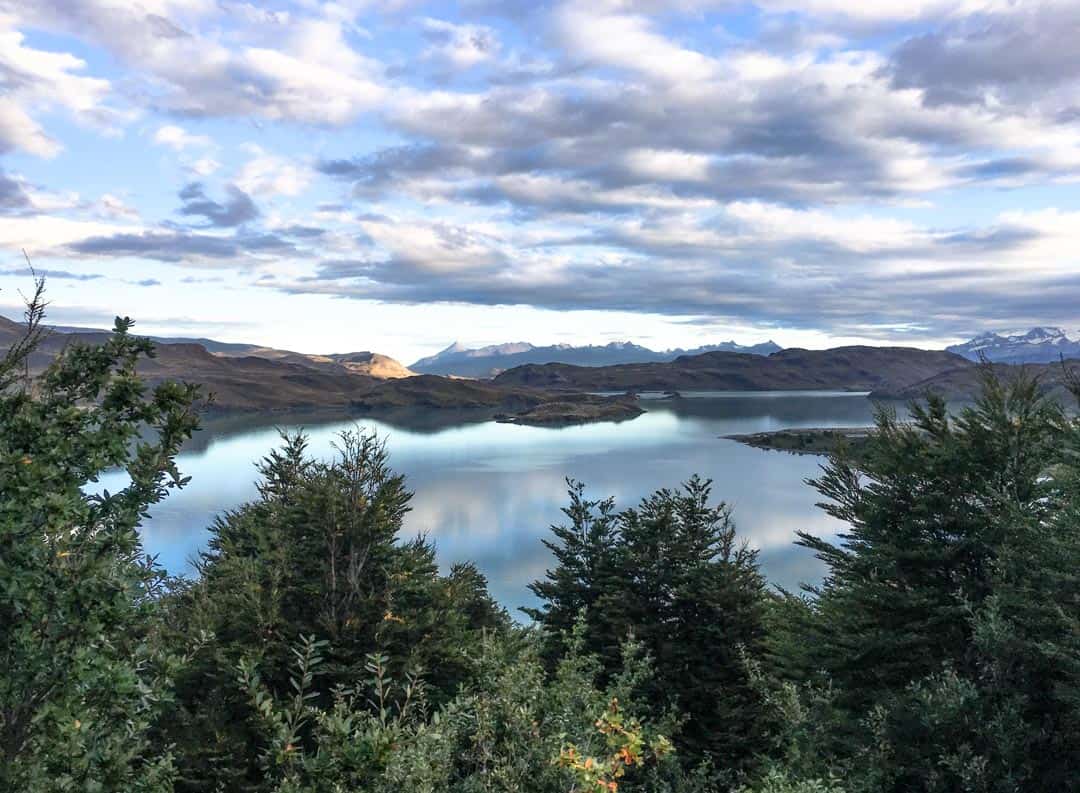
Day 3: Francés to Paine Grande via Francés Valley
Total distance: appx. 20.3 km / 12.6 miles t otal time: appx. 9 hours overnight: camping paine grande.
Despite our fatigue, neither of us sleeps particularly well on our second night and we’re both groggy when the alarm goes off at 7am.
Our restlessness is partly due to the strange soundtrack that has accompanied us throughout the night: sharp cracking sounds like distant shot gun blasts and deep, thunderous rumbles. It’s not until we set out on the trail through the Francés Valley today though, that the source of the unnerving noises becomes obvious.
On this itinerary, today is the longest day hiking the W, and based on our experience, we recommend getting on the trail by 8am at the latest to maximise your time in the Frances Valley. We departed later when we trekked, so we’ve adjusted the timings below to suit an earlier start.
1st Leg: Francés to Italiano Ranger Station (appx. 2 km / 1.2 miles, around 30 minutes)
The first leg this morning is a rejuvenating, 30-minute leg-stretcher to Italiano Ranger Station. Aim to pack up and set out from camp by 8am.
There’s a ranger at the Italiano Ranger Station when we arrive. He points to some racks opposite the office building; this is where we opt to leave our backpacks ahead of the challenging hike into Francés Valley.
We sort our valuables and lunch into a smaller daypack, lock up the big packs, and get going again. Look to be back on the trail by 8.45am .
2nd Leg: Italiano Ranger Station to Británico Lookout (appx. 5.4 km / 3.4 miles, around 3 hours)
The first kilometre (0.6 miles) out of Italiano is a flat trail through pleasant forest, after which the track starts to climb steeply through a rocky, rubbly stretch.
The scenery is seriously beautiful, serving up views of the ironically named Paine Grande Hill – 3,050 metres above sea level – and the Francés glacier that clings to it. This is the source of the crackshots and grumbles we’ve been hearing as the hanging ice shifts, melts and avalanches down the mountain.
Soon enough, you’ll reach the Francés mirador, a lookout offering spectacular panoramas over the ‘hill’ and its glacier; this is the perfect spot for a short break and a snack, as the next stretch is tough.
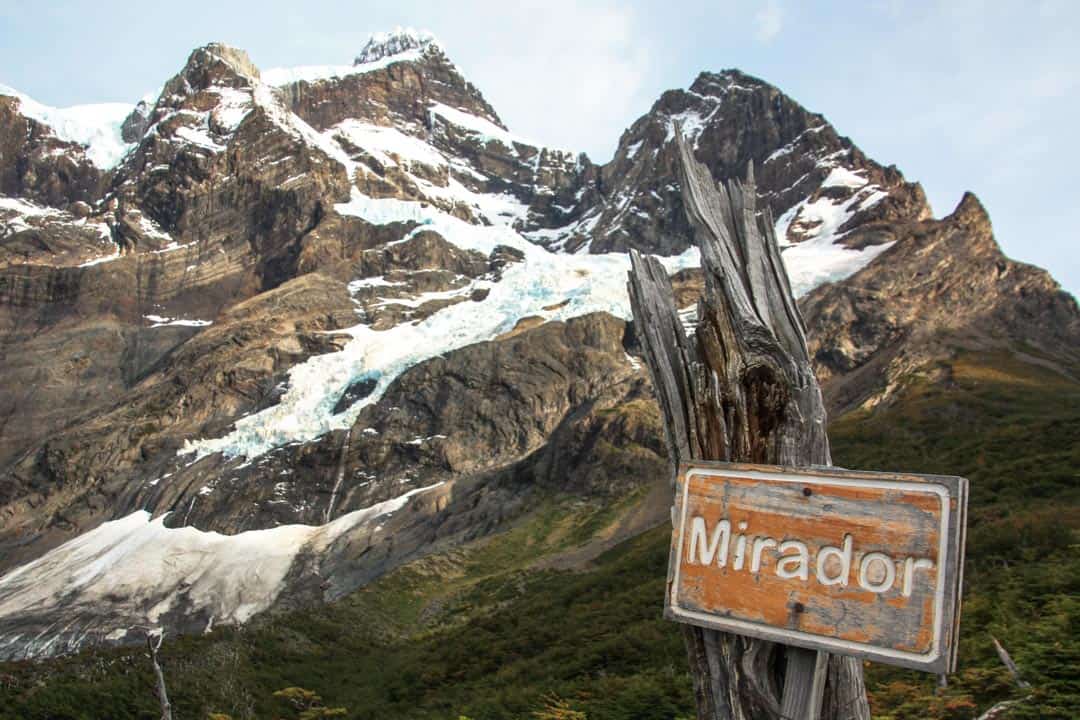
From here, the trail to Británico Lookout is a challenging, rubble-strewn boulder dash with lots of climbing.
A flat, rocky clearance scattered with the parched white trunks of dead trees and overshadowed by the jaw-dropping Cuernos massif, marks the final stretch before a steep, 10-minute climb to the mirador itself.
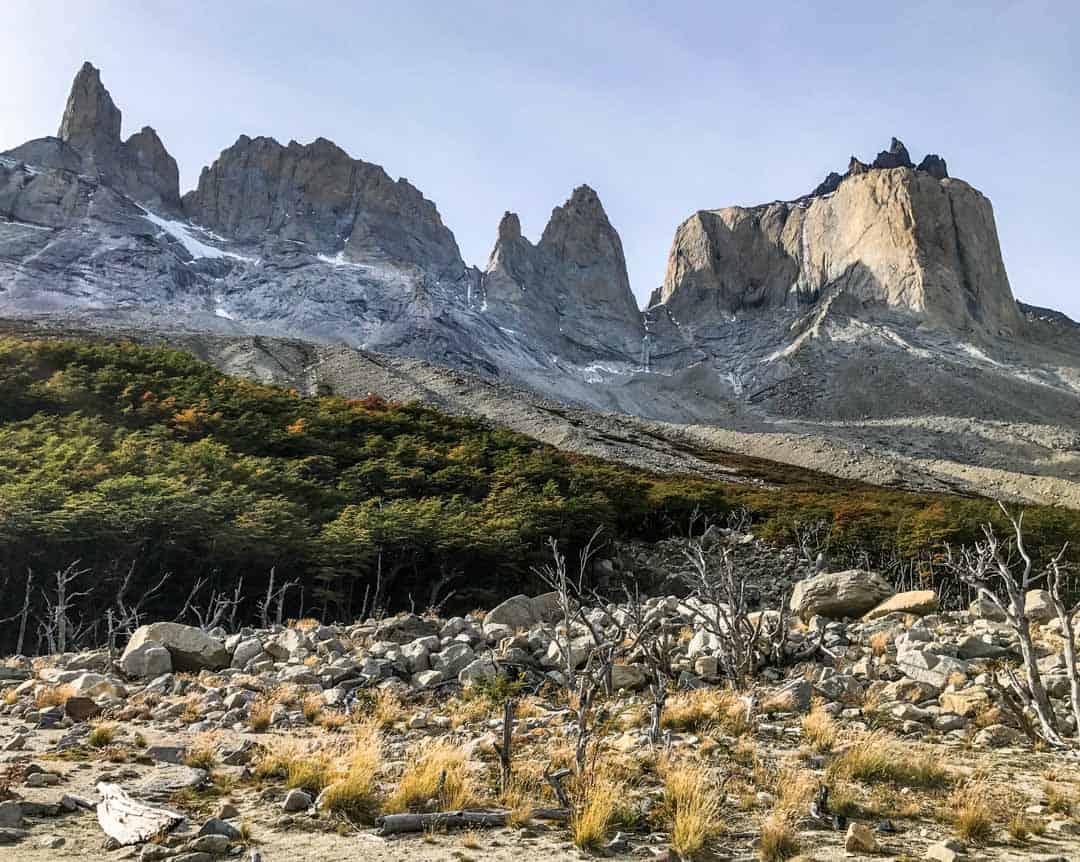
Summitting the boulders of the Británico Lookout around three hours after setting out , we cast our eyes over what will become our favourite panorama of this epic journey: the vast and spectacular Francés Valley. Find a rock to perch on and settle in for lunch with this glorious scene at your feet.
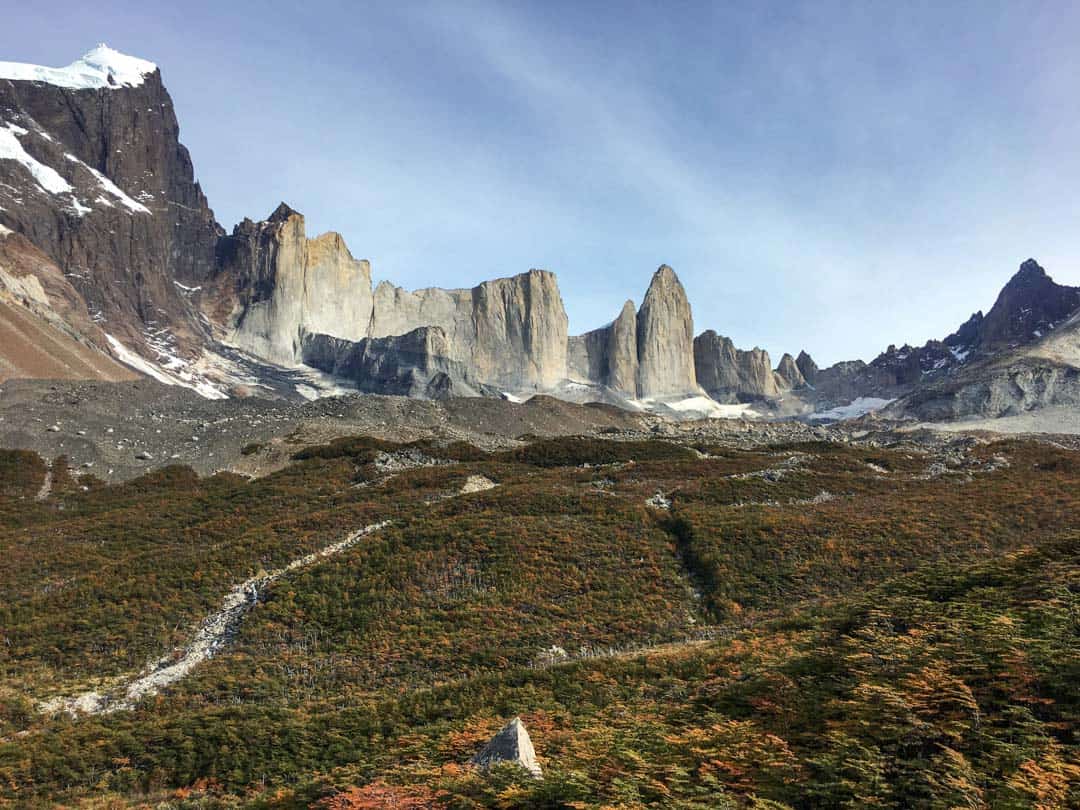
We’ve come a long way, but there’s still a huge day of hiking the W ahead. To our eternal regret, we were only able to linger here for half an hour as we left camp too late on this morning. That’s why we recommend getting on the trail no later than 8am today – trust us, you’ll want as much time at Britanico as possible and by arriving around 11.45am, you’ll have close to an hour here.
We’ve promised ourselves that next time, we’ll spend an extra day or two in this valley so we can take in this view at our leisure. For us, this remains one of the most magnificent vistas we’ve come across in all our world travels.
Trekking tip: Get on the trail by 8am at latest this morning so you can hang out for at least an hour at Britanico, or better yet, stay an extra day in the Francés Valley.
3rd Leg: Británico Lookout to Italiano Ranger Station (appx. 5.4 km / 3.4 miles, around 2 hours)
Aim to set off back down the trail to Italiano around 12.45pm . We find this a knee-buckling downward journey and our legs are screaming by the time we reach our packs back at the Italiano Ranger Station just over two hours later.
Once we’ve retrieved our packs (now four-deep in a giant bag pile), re-sorted them, and stopped for a quick breather, we set out for the Paine Grande refuge and camping area, starting with a bridge crossing out of Italiano. It’s around 3pm by this stage .
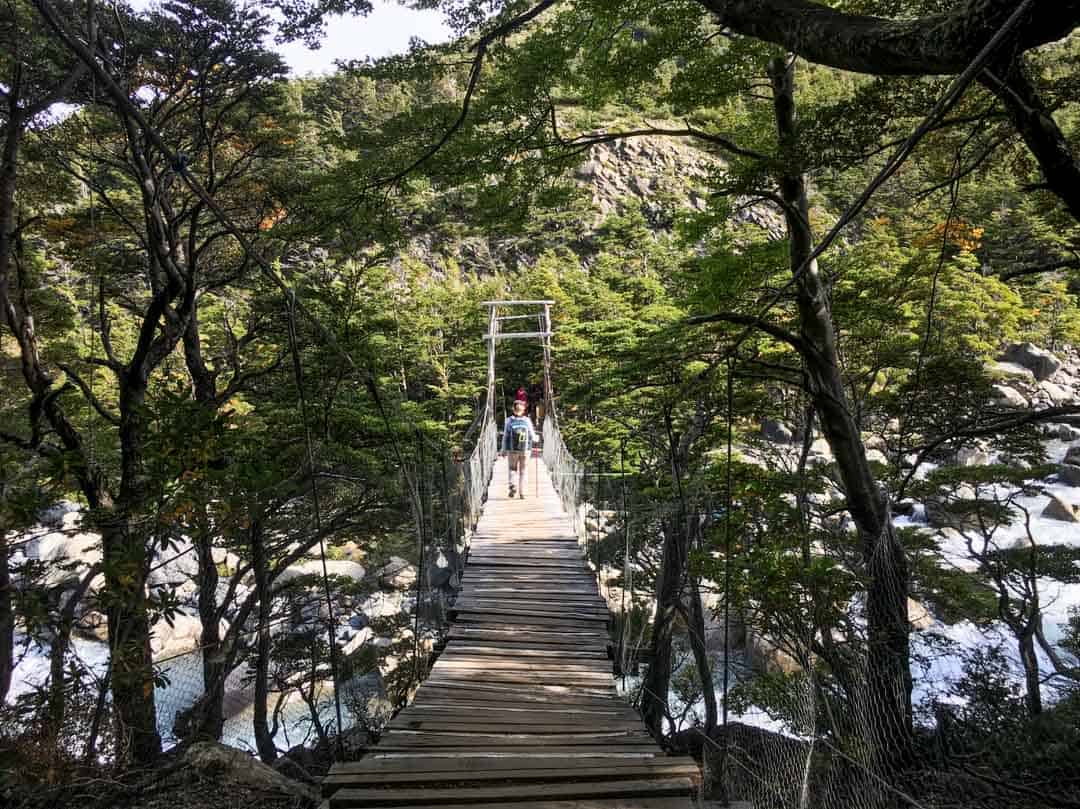
4th Leg: Italiano Ranger Station to Paine Grande (appx. 7.5 km / 4.6 miles, around 2.5 hours)
The final stretch of the W trail today is a journey of around 7.5 kilometres (4.6 miles) and it’s mostly flat with some sloping ups and downs.
Travelling out of the valley and along the raised walkway as you head towards Sköttsberg Lake, remember to turn around and take in the mountain scene back the other way: it is immense.
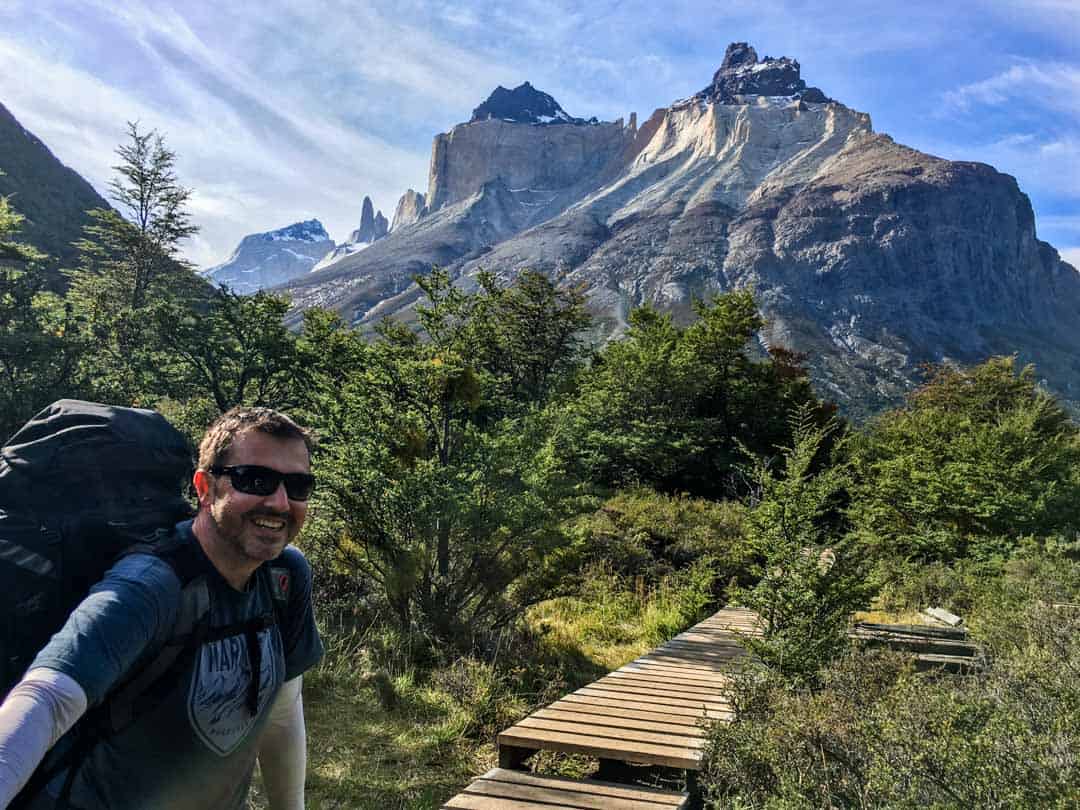
After some more steady rises, we make our final descent into Paine Grande Refuge and Camping around 5.30pm . By this stage, we’re seriously sore and tired and very ready for a beer from the lodge bar, which is the first thing we do once we’ve checked in and dropped our packs at our tent.
The campground at Paine Grande, which is managed by Vertice Travel, is large and separated into sections for campers carrying their own gear, and those like us who have booked a tent. A wooden walkway links the campgrounds with the lodge, the campers’ kitchen and bathrooms.
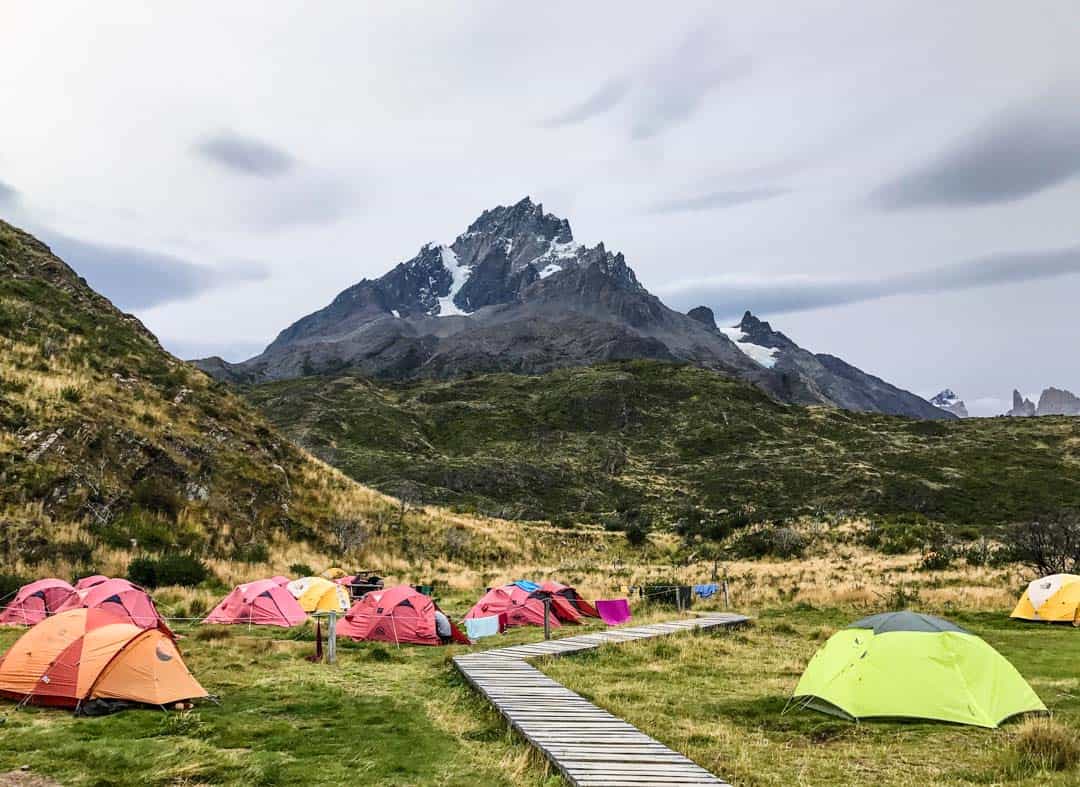
As Paine Grande is the western starting point for hiking the W and a transit point for O circuit trekkers, as well as for day trippers and short stay visitors, this is the largest and busiest lodge and campground in the park.
There’s a good-sized kitchen building, which is heaving with trekkers when we make our way in there to cook dinner around 7pm.
The camp shower and toilet facilities here are basic. We recommend getting your ablutions out of the way while everyone else is cooking dinner and before the post-meal rush. Paine Grande also has dorms, a restaurant and bar, and a mini-market.
We’re tucked up in our tent just as a light rain begins to fall around 8.30pm.
Day 4 – Paine Grande to Grey
Total distance: appx. 11 km / 6.8 miles total time: appx. 3 hours 45 minutes overnight: camping grey.
Today is our shortest day so far on the W trail, so we decide to set out a little later as we’re definitely starting to feel the past three days’ hiking, and a strange kind of exhilarated fatigue.
We’re up at 8am with plans to be on the trail by 9am. However the banshee-like screeches of a fox followed by the thrilling appearance of a large, tawny-coloured puma on the hill behind the camp has us – and everyone else – lingering for a while in hushed awe, until the sleek big cat disappears around a bend into the next valley. Which happens to be the same valley we’re about to trek into.
After checking in at the ranger station for advice on what to do if we see the puma again, we set off through the narrow, pretty dell at around 10am . We’re both relieved (and maybe a touch disappointed) to find no further sign of our feline friend.
The big cats of Patagonia Don’t let the thought of pumas roaming the forests of Torres del Paine put you off trekking there. The fact is, these magnificent creatures are extremely shy and actively avoid humans. Seeing a puma is incredibly rare. Spotting one near camp as we did is apparently almost unheard of. However, it’s important to be across what to do and how to act if you do encounter a puma; you’ll find advice on this in the guide that you receive when you register for your Torres del Paine trek.
The valley walk is flat at first but soon begins to climb, and continues to serve up steady inclines followed by some steep descents into the Grey refuge and camping area.
The scenery on this leg is still epic, but maybe a touch more serene than the high drama mountainscapes of the last couple of days. Grey Lake is flat and still on the day we hike the trail, and dotted with blueish lumps of ice from the vast Grey Glacier at its head.
About halfway along the trail, a rocky lookout reveals the first glimpses of this immense glacier, a sea of ice six kilometres (3.7 miles) wide and 30 metres (98 feet) high in places.
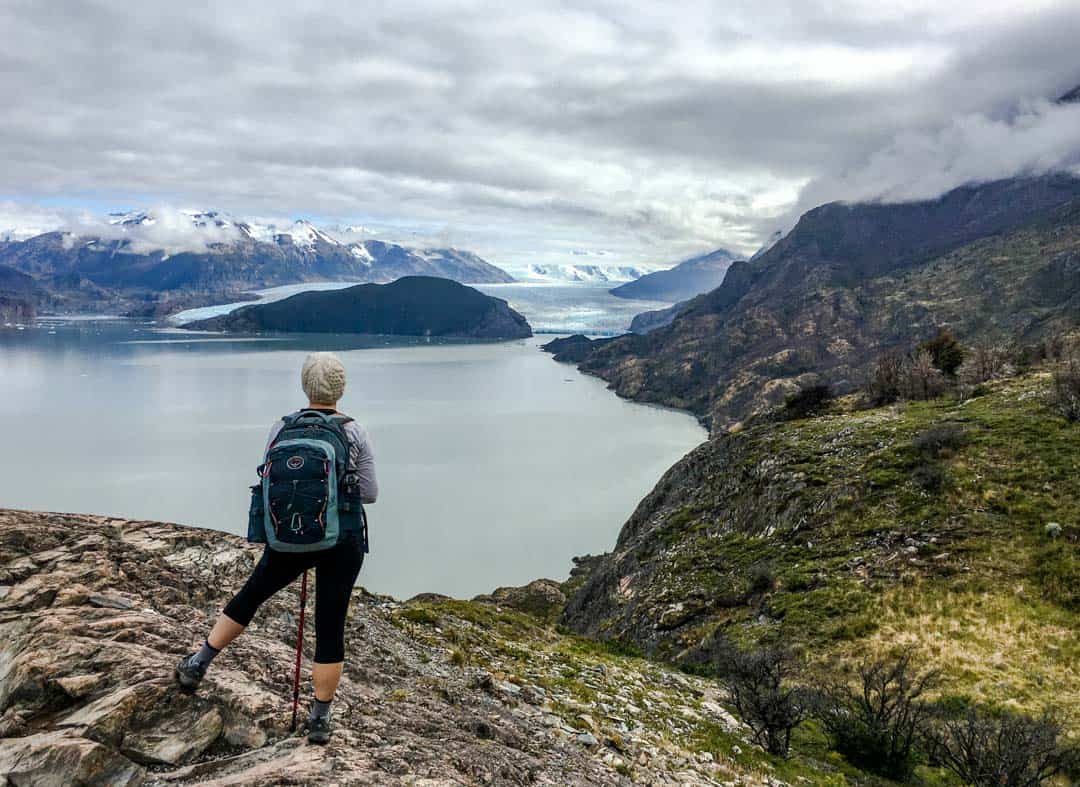
We arrive at the Grey Camping area around 1.45pm , a journey of 3 hours and 45 minutes, with plenty of photo and snack stops along the way.
Grey Refuge and Camping is also operated by Vertice Travel. The lodge has a lovely bar and lounge area in addition to its dorms, and the campground out front is overlooked by the stunning peaks of the Cordon Olguín. By the time we arrive, the clouds have cleared and the mountains burn golden as the sun drops.
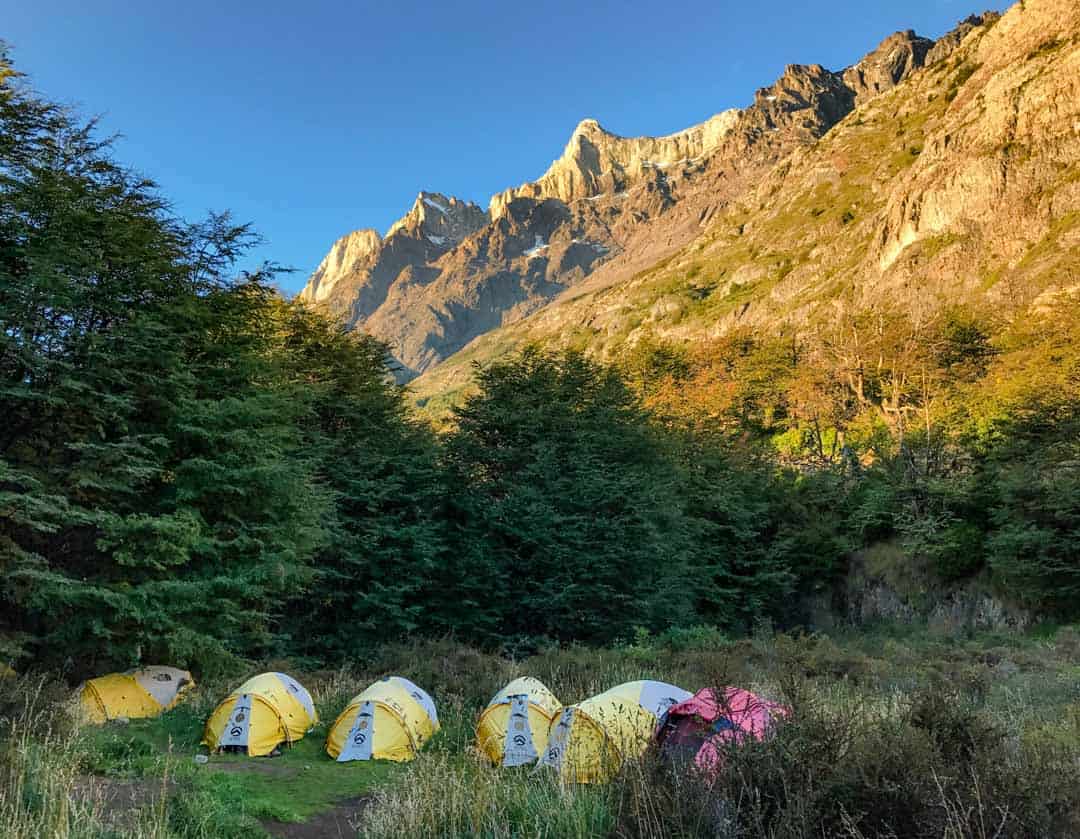
If you’ve got the energy, check in (or leave your pack with the office if check-in hasn’t opened yet), and then head back out to hike past the western tip of the W trail and on to the first leg of the O circuit towards Paso Ranger Station. This will bring you much closer to the glacier, but bear in mind, it’s a five hour, one-way hike to Paso itself.
Trekking tip: Leaving Paine Grande at 10am worked well for us, but if you do want to hike a stretch of the trail from Grey towards Paso and back to Grey today, consider starting out from Paine Grande earlier in the morning so you have more time to do this.
We opt to stop and enjoy our lunch with mountain views, then roll out our mats and nap in the sun until check-in opens.
After getting our tent sorted, we hike to a rocky outcrop on the lake just 15 minutes from camp. The views from here towards the glacier’s terminus are gorgeous and we spend time here just soaking up the scene.
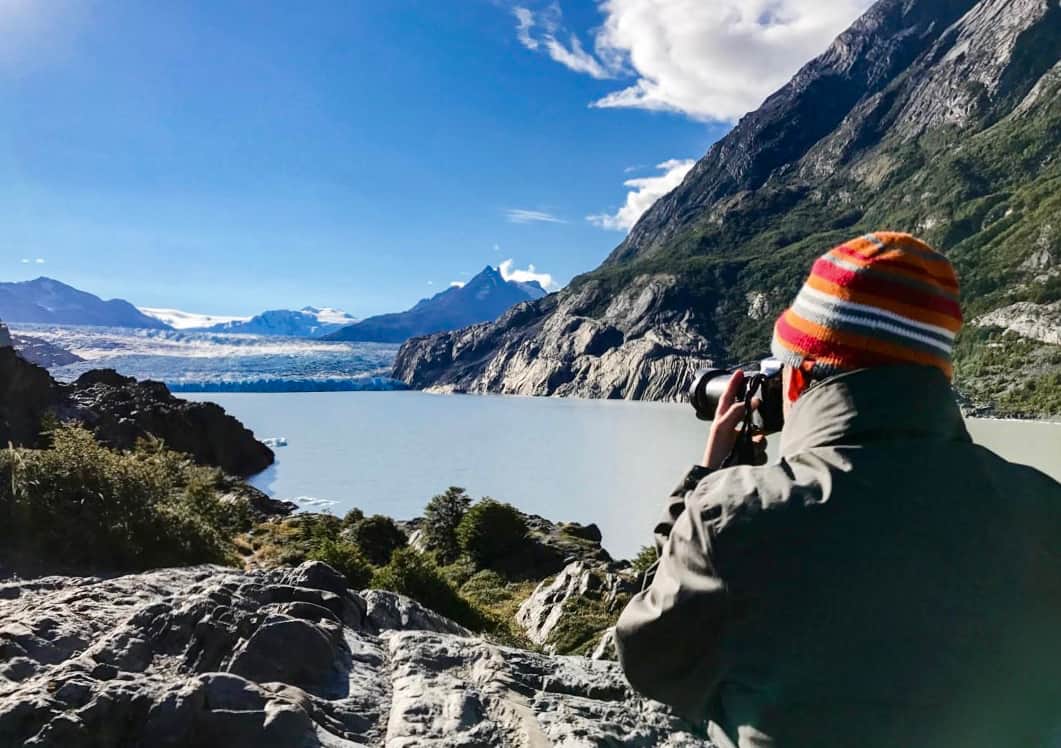
On our return to camp, we head to the lodge for a drink at the bar before making dinner on one of the picnic benches outside the buzzing campers’ cooking area.
In addition to the bar, there’s a restaurant at Grey, and a small shop selling grocery basics. There’s an equally small toilet and shower block for campers (the showers only have certain hours of operation but the water is hot).
We’re in bed by 9pm and prepped for a very early departure in the morning.
Day 5 – Grey to Paine Grande (and return to Puerto Natales)
Total distance: appx. 11 km / 6.8 miles total time: 3 hours 15 minutes.
It’s our last day on the W hike! We’re on the trail early so we can get back to Paine Grande in time for the late morning catamaran across Lake Pehoe to Pudeto, where we’ll pick up the bus back to Puerto Natales.
It shouldn’t take more than four hours to get back to Paine Grande from the Grey campground, but we’re feeling pretty exhausted by this stage and John has nurtured some nasty blisters, so we’re up and on the trail before sunrise .
It’s freezing when we set out at dawn but as the day lightens, we’re treated to a stunning peach-tinted sky reflecting off the lake, and we stop often to snap pics.
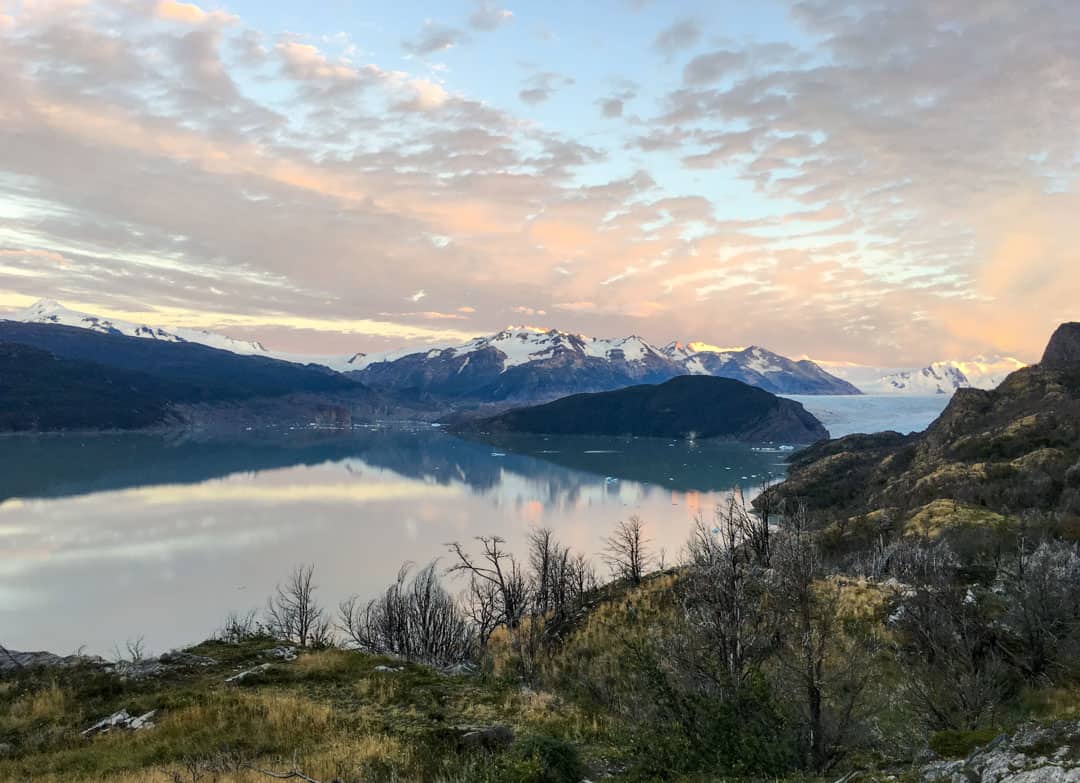
Despite John’s sore feet, we make good time on the return journey and while we’re climbing for much of the first half, it feels easier than the trek up from Paine Grande yesterday. Maybe it’s because we’re on the home run, even though the thought makes us sad.
Our journey back to Paine Grande takes us 3 hours and 15 minutes , 30 minutes less than yesterday’s hike in the opposite direction.
We haven’t eaten breakfast and we’re starving by the time we arrive. We were planning to grab something to eat at the restaurant at Paine Grande, but we discover it’s closed between breakfast and lunch.
We make do with our leftover trail mix instead, which is a bigger deal than you might think: we packed way too much of the bitty hiker’s snack and after five days we have a serious love/hate relationship with it.
Fortunately, there’s now a mini market at Paine Grande, which is apparently open from 7am. But if you’re setting out really early like us, perhaps have something you can eat on the go for this final morning.
Tickets and times for the ferry between Paine Grande and Pudeto Ferry departure times from Paine Grande and Pudeto change throughout the year so be sure to check the schedule when you’re planning your w trek itinerary, and adjust your final day hiking start time to ensure you arrive back at Paine Grande at least 30 minutes before the ferry departs. You don’t need to reserve a place on the boat, just hop aboard and buy your ticket with cash (at last check, it’s US$30 for internationals). The journey to Pudeto takes around 30 minutes.
We board the late morning catamaran for our return to the eastern side of the park. The boat trip across Lake Pehoé offers spectacular views of the entire mountainscape we’ve spent the last five days traversing. It’s an epic perspective of the W panorama and a mesmerising finale to our W trek itinerary.
If the weather is nice, we totally recommend taking a seat outside on the catamaran so you can properly admire the breathtaking scenery.
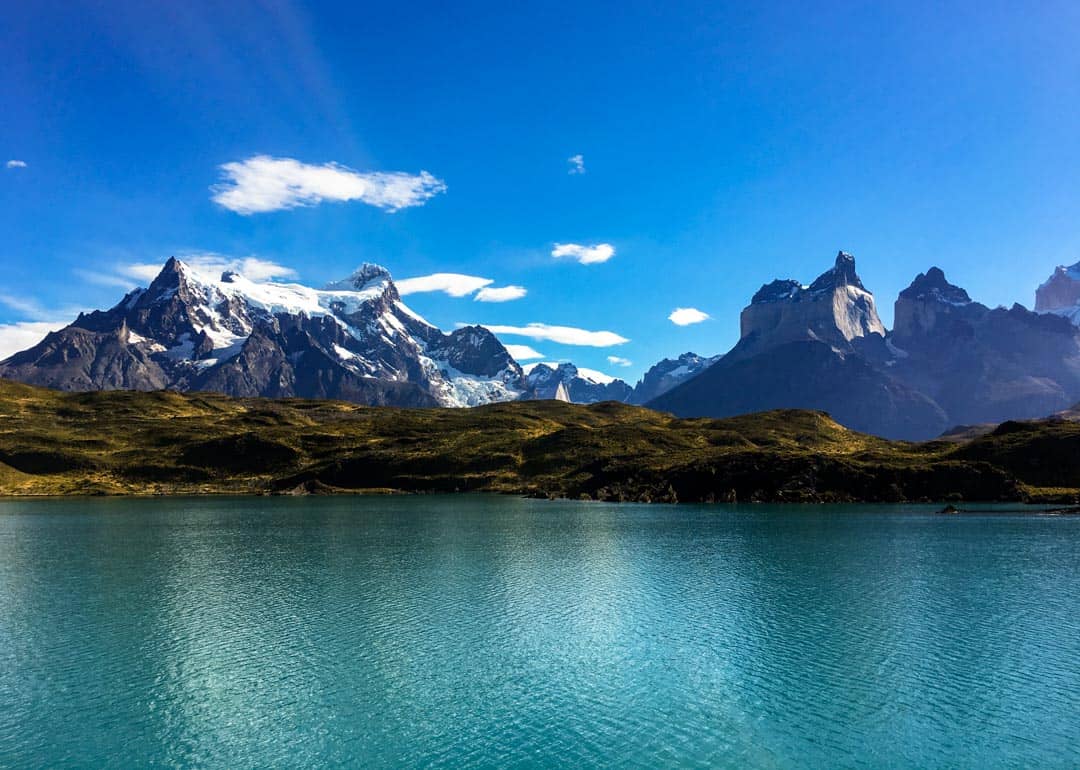
Disembarking the ferry at Pudeto, we grab a coffee from the lakeside café (open from October throughout the trekking season), take a seat in the sun, and enjoy our last moments in Torres del Paine while we wait for our bus.
Pudeto ferry and bus connections In addition to checking ferry times for the catamaran between Paine Grande and Pudeto when you’re organising your trek, it’s also worth checking the bus connections to and from Pudeto, so you can work out the best approach for your final day on the trail.
From Pudeto, the bus makes its way back to the Laguna Amarga Ranger Station to collect hikers finishing their trek at the eastern end of the park. From there, we settle in for the return two hour bus journey to Puerto Natales .
Tonight, back in Puerto Natales, after a good hot shower and a lamentation on the ridiculous amount of trail mix we’ve got left over, we head out for a celebratory drink.
Our legs might be seizing, our knees protesting and we’re beyond exhausted, but we’re buzzing with the sheer thrill of having completed this epic trek. We’re already talking about when we might come back and hike the W trail again, or better yet, take on the longer O circuit.
However we do it, trekking in Torres del Paine is one nature experience we’re keeping firmly on our bucket list.
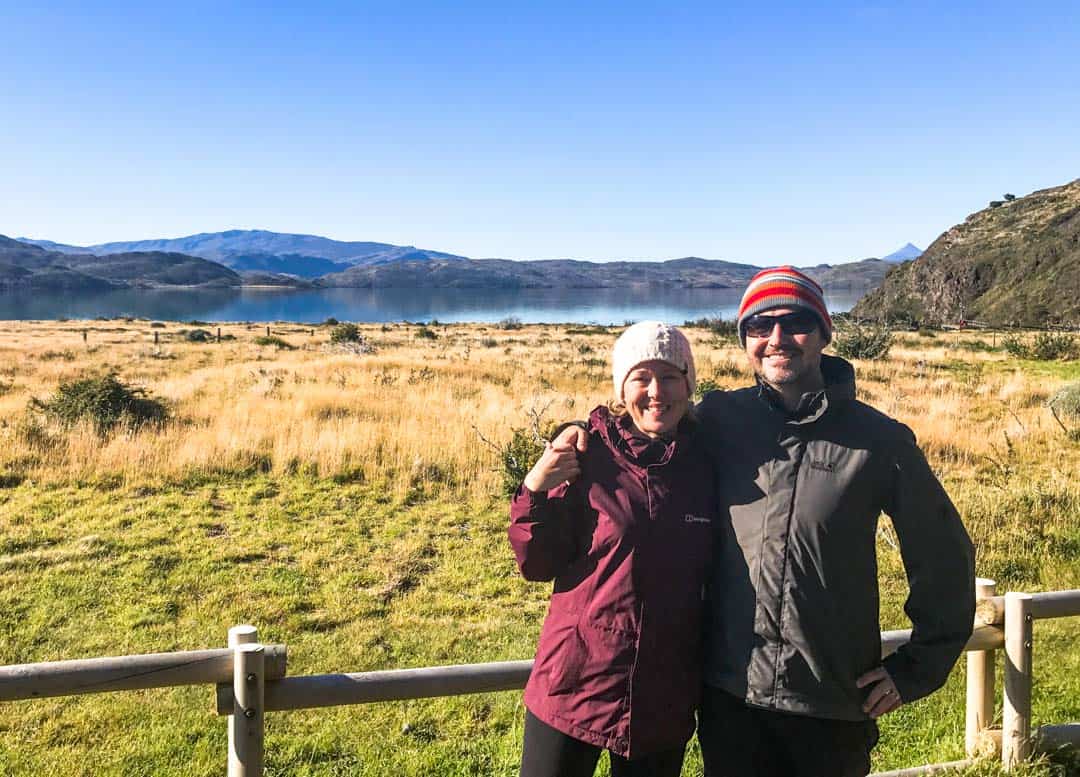
Got any questions? Have you trekked in Torres del Paine recently? We’d love to hear from you, drop us a message below.
For more exciting experiences and things to do in this incomparable part of the world, head to our Chile page or our South America section.
49 thoughts on “Hiking The W Trek In Patagonia: A Self-Guided Itinerary [2024]”
Great website! We’re hoping to do this February/March 2025, and are wondering how best to spend our time on either side of this hike. Did you travel to El Calafate and El Chalten while you were in the area? Or do you recommend other areas down there? Any advice greatly appreciated!
Hi Lisa, thanks for your message! Fantastic to hear you’re planning a trip to Patagonia! Besides the W Trek, there are various activities you can do in and around Puerto Natales and Torres del Paine, like boat trips on Grey Lake to Grey Glacier or horseback riding.
We most definitely did travel to El Calafate and El Chalten after our trek and absolutely recommend, especially if you’re keen to get out on some further hikes. We bussed from Puerto Natales to El Calafate and the next day did a day trip to the Perito Moreno Glacier, which is an absolute must. From El Calafate, we travelled by bus to El Chalten (the panoramas on the bus ride in are wow – try and get the front seats!) and spent a good couple of days exploring this gorgeous area and just hanging out. There are a range of hikes you can do out of El Chalten – the day hikes to Laguna de Los Tres and Cerro Torre are epic.
If you head south from Puerto Natales to Punta Arenas, you can do day trips to see King penguins, Magellan penguins, whales and dolphins, so that’s another option.
Have a wonderful time and happy trip planning! Cheers, Danielle
Thank you for sharing your Patagonia insights! I found it very thorough and incredibly helpful. I we are planning our trip for October 2024. I have a question. How did you book your meal plan? Thanks! Kim
Hi Kim, thanks for your feedback, we’re glad you’ve found our post helpful! When you go through the booking process for each accommodation (including camping) along the trail, you’ll have the opportunity to add meals as part of those bookings. Links to the accommodation providers are in the post. Good luck with your planning and happy trekking in October! Cheers, Danielle & John
Hi thank you so much for this detailed blog. It appears that one would have to stay at Frances camp if going east to west in order to shave hiking time on day 3. Is there a bus company through which we have to pre-book a bus ticket from Pudeto ferry to Las Amargo? Or is it a shuttle service? Do you have any idea if booking a guided tour via Las Torres means that they carry your heavy rucksacks?? Is the last day at Grey really worth it ? Or would you rather end the trek on day 4? Thank you!
Hi SK, thanks for your message. Until the CONAF Italiano camp reopens, Frances camp is the closest camp to the Frances Valley so yes, it is the best bet timing-wise for getting in and out of the Frances Valley and on to Paine Grande on Day 3 if travelling from east to west. You could also stay at Los Cuernos, but that would add around 1.5 hours to Day 3.
The buses running from Puerto Natales to Torres del Paine drop off and pick-up from Laguna Amarga and Pudeto. When you buy your bus ticket to Torres del Paine, you’ll note where you’ll be getting off and on again (it will depend on your itinerary, but for us, travelling from east to west, we got off at Laguna Amarga and boarded at Pudeto on our return. Check out the section in our post on bus tickets to and from the park for more info. There’s a shuttle that runs between the Laguna Amarga ranger station and Hotel Las Torres for a fee.
We would suggest contacting the tour company you’re interested in for advice about whether porter services are available on their guided tours. We left most of our luggage in one of our backpacks at our hotel in Puerto Natales and carried only what we needed for the trek to keep the weight down.
We personally feel that every leg of the W is absolutely worth it – the scenery is superb throughout. Five days gave us just the right amount of time to enjoy the whole trail without pushing too hard. To do the trek in four days, you’d likely need to compromise on either the full hike into Frances Valley or the Grey leg in order to reach camps before dark, and we wouldn’t want to skip either. But that’s us. If four days was all we had to trek, we would possibly leave Grey but we’d have to make sure we did a boat tour out to the glacier instead! 🙂
All the best with your planning! Cheers, Danielle & John
This is seriously one of the best breakdowns I’ve read. Patagonia is one of three “Someday” treks I have on my list to head off on once my son is a little bigger and can carry more of his own gear. We’re building up now with longer and longer trips around Central/Eastern Europe
Love this site!
Thanks for your message Brian, we really appreciate your feedback. So cool that you and your son are already hiking together, and what an awesome bucket list adventure to look forward to with him! Happy trekking and thanks again! Danielle & John
Do you have a map with the accommodations you booked or where you rented out tents/gears? Planning on doing this solo in June!
Hi Erika, thanks for your message! There’s a trail map available at the official Torres del Paine website: https://parquetorresdelpaine.cl/mapa-2023-2024/ – it shows all the accommodations/campsites along the trail. You can also find links in our post to the accommodation providers we booked our campsites and camping gear through.
As you’re considering a June trip, we’d also encourage you to check out the official Torres del Paine website for information about winter hiking regulations – https://parquetorresdelpaine.cl/permisos-especiales/ . Many of the accommodations and trails close over winter and while you can visit the park, we understand it’s mandatory to have a guide for the W Trek and the trek to the base of Las Torres between 1 May and 30 August (though the timeframes can change depending on weather). All the best with your planning! ~ Danielle
Hello Dan, What a great find this was. Thank you so much for writing it. I’m looking to mimic your trek with some modifications. I will very likely have a car rental when I arrive into Punta Arenas. My plan is to drive myself and 2 others into the park and leave the vehicle parked at the welcome center or hotel (unsure if this is allowed). At the end you mention that you ferry to Pudeto- then catch a bus that swings by Laguna Amarga into Puerto Natales. Is there a bus that goes directly back to the welcome center or hotel from Pudeto so we can get back in my rental? It looks like the Laguna Amarga ranger station is about 8.5 km from the welcome center. Or is it best to just shuttle from Puerto Natales for the whole thing and leave the rental somewhere in town?
Hi Bruce, thanks so much for your message and feedback! Very good question re. parking – based on our limited research into this, our understanding is that you can leave your car at Hotel Las Torres while you trek if you’re a guest there, otherwise, cars can be parked at the nearby Welcome Centre. We’ve also seen reference online to a small car parking area at Pudeto, so in theory you could arrange bus tickets from Pudeto to Laguna Amarga, and from there get the hotel shuttle to Hotel Las Torres/the Welcome Centre. I would suggest posting your question on Tripadvisor and hopefully someone has done something similar recently and can provide latest info. It might also be worth contacting Hotel Las Torres and asking their advice; no doubt they get questions like this frequently. All the very best for your trip planning and the trek itself – it’s an unforgettable experience! Cheers, Danielle & John
Thank you so much for the great information. I’m a long term planner and we’re looking to book for our family of four, Christmas 2024. I found this blog really really helpful in hiking cost effectively. Thanks Again!
Hi Melissa, thank you so much for your message, we’re really happy you’ve found our post helpful in your planning. Also very excited for you and your family – what a fantastic Christmas experience! We hope you have a really wonderful time hiking the W, it’s just such an incredible place! All the best and happy hiking! Danielle & John
Thanks for the article, I find it very useful. I have just booked the circuit trail for this April. About that: I looked into using Booking Patagonia for the reservations, and it works really well. Though, there is a downside: they charge an extra $90. You’ll notice this at the very and of the booking process, which I found quite frustrating. For me that was a reason to book directly at Vertice and Las Torres Patagonia, which works fine.
Hi Valentijn, thanks so much for this update, that’s really helpful to know! Thanks also for your feedback on our post, we’re pleased you’ve found it useful. All the best for your upcoming trip in April, have a sensational time and happy hiking! Cheers, Danielle & John
Thanks for the great write up. The details are useful and your descriptions are inspiring. I’m leaving for Chile in a couple days and your post just added to my excitement.
Hey Mike, thanks so much for your feedback, we hope you have a really fantastic trip. Chile is an incredible country, one of our faves!
Cheers, Danielle & John
Thank you for that informativ Blog! I have a question: are there any possibilities to heat up some water in the Refugiés without a stove?
All the best Sophie
Hi Sophie, thanks for your message!
As we had a cooking stove (and booked meals at Chileno where stoves can’t be used), we can’t personally say for sure whether hot water is currently available at all of the stops on the route. That said, we did find a trekker’s report online from late 2023 noting that they were able to access hot water (not boiling) through the coffee/tea dispensers at each of the refugios they stayed at, which they used for their dehydrated meals. Would suggest seeing if there are other trip reports from this season, or posting on a forum for latest updates. Or perhaps hire a stove in Puerto Natales and buy a gas canister just to be on the safe side! We’d love to know what you find out!
Have a magic time trekking the W!
Cheers, Dan & John
Hi guys. Thanks for all the detailed info. Just wondering if you could give an estimate of how much it cost for the W trek. I am being quoted $1180 per person for 4 nights and five days starting 12th February with this included:
• camping accommodation with all the equipment • all the meals • transportation from/to natales-park • park entrance • catamaran • welcome kit
Not sure if this price is really high or if it would work out as that much if I book everything myself separately anyway.
Many thanks
Thanks for your message and feedback – we’re really excited for your trek in Torres del Paine.
We were travelling long-term when we did the W Trek so we went out of our way to keep costs down by booking the campsites directly, carrying some of our own camping gear and bringing most of our own food. Travelling as a pair also helped as the single supplements can add quite a bit. We’d also note that, like everything, prices have hiked post-Covid.
We’ve included some costings in our post but not many as we’re conscious things can change quickly (plus there are so many potential cost combos for accommodation/food, it’s tricky to provide a general estimate). As the bulk of your costs will be in the camping, gear and food components, you might consider checking out the latest price lists for camping and food package options on the Vertice and Las Torres Patagonia websites; that would give you a sense of costs in the context of your quote. Given how quickly accomm/campsites book up for the season and the challenge of trying to coordinate an itinerary across multiple websites, having a third party making the arrangements, while costing more, would take the hassle out of that.
All the best with your planning and we hope you have a sensational time trekking!
Cheers Danielle & John
Your hikes sounded amazing. We are going in Feb and I wasn’t sure what to expect. Sounds like I should do some training! Do you recommend stiff hiking boots to navigate the big rocks or are light hikers enough support?
Thanks for sharing, Karen. Canada
Hi Karen, many thanks for your feedback! To be honest, if you’re a regular walker/hiker, you may find the W Trek a breeze – we met plenty of people who barely cracked a sweat, lol. As irregular hikers, we found some of the steeper sections a little more ‘breath-taking’ but still very do-able. We both wore regular lightweight hiking shoes and they were fine (apart from John developing blisters towards the end), but we also saw people in solid boots. I guess it depends on your preference. We did find having a hiking pole each was useful on some of the more uneven terrain like the rocky climb to Las Torres. We’d love to hear about your trek when you get back – have a fantastic time! Danielle
Going in February, cant wait. Did you know how anyone who did the kayak at Grey and talked about there experience?
Hi Efren, that’s so exciting! We don’t personally know anyone who has kayaked at Grey but we wish we’d had time for it – what an amazing experience! The lake is beautiful and the glacier is epic! If you do kayak, we’d love to hear about it! Have a fantastic time, Cheers, Danielle & John
Awesome Post!
I’m looking at doing this the same direction as you guys did around the same time in 2025.
You mentioned availibilty determined your campgrounds; that being said would you change any of your stays if you could in retrospect? Maybe saw some better campgrounds/lodges along the way that you wish you could have booked had there been availibilty?
Hi Chris, thanks for your message and good question! We were on a long travel stint when we did the W Trek so we opted for camping to keep our costs down, plus the campsites we ended up with proved to be very well located for a five-day itinerary. That said, all of the lodges and refuges looked quite nice so if we were to do it again (and we hope to!), we would consider adding some lodge/refuge stays, following the same itinerary. Location-wise, the Cuernos and French refuges would be good alternatives to camping (though these are beds in dorms, which is less appealing to us). We would definitely consider the Cuernos Cabins (2-3 people per cabin), especially if we were planning a longer stay in the French Valley! We’d also consider staying at the lodge at Grey next time as, of all the campgrounds, this was probably our least favourite (plus we were very ready for a bed by that stage!). Overall, the quality of the campgrounds/refuges throughout the park is very good and we were really happy with our camping experience and itinerary. Best of luck with your planning and we’d love to know how you go! Happy travels!
Wonderful description. We are going in Jan 2024! Looking forward to it.
Hi Kishore Joshi, thank you so much for your feedback, we hope you’ve found it helpful! Wishing you a fantastic W Trek, it really is the most incredible place! Happy travels!
Hi! How much cash would we need, knowing that the bus and entrance are paid for and also full board meal plan at the refugios is booked? So for snacks, water or other costs etc? Do they accept USD or should we have it exchanged? Thanks!
PS, did you also really use ‘poop bags’ for your used toilet paper along the way? 😅
Thanks for your message. We carried both USD and Chilean pesos with us just in case, and we were able to use credit cards at the refuges. We paid for the shuttle from Laguna Amarga and the catamaran from Paine Grande in pesos, though we have read that the catamaran operators may take USD in high season. It’s handy to have pesos for smaller purchases like snacks. We carried a refillable bottle and filled up in streams and at the refugios, so we didn’t purchase water.
We have packed degradable doggy bags for carrying out toilet paper on past hikes! 🙂 On the W Trek though, we carried a loo roll and some trusty Ziploc bags, but we mostly just made strategic use of the campground facilities!
Happy trekking!
Hi John and Dan Thanks for such good info. Is it safe doing it self guided ? Thanks
Hey Iris, thanks so much for your message, we hope you found the post helpful. We found going self-guided very easy – the trails are well trodden and during the peak season, there are plenty of other people hiking too (guides are mandatory in winter). Plus all trekkers have to stay in the designated camping and accomm areas so there are others around and you can stay in dorms if you’re not keen on camping. Conditions can vary dramatically though and it is the great outdoors, so having appropriate gear is essential and hiking with friends is good idea though we hear lots of people do it solo. Everyone we met en route were friendly, encouraging and helpful too. We absolutely loved the hiking the W and hope you get to experience it too! Happy travels! Dan & John
This is really helpful thank you so much. Did you have much hiking experience before you took this on? Would you recommend any training prior to going? What size backpack would you recommend taking?
Thank you so much
Hi Jo, thanks for your kind words, we’re glad you found the post useful! We’re casual hikers and while we’d done a bit of hiking before the W, it was certainly one of the ‘biggest’ hikes we’d done. We definitely tried to up our walking/hiking game before the W in preparation and glad we did as we personally found some of the steeper, sustained-climbing parts of the trek relatively tough – we just took our time and had lots of breaks; necessary anyway to take in the gorgeous views! I carried a 30L daypack and John carried a 50L backpack – between us we carried everything we needed for the five day hike, but I would note that we didn’t have to carry tents, sleeping bags or mats as we hired these. We hope you have the chance to hike the W trek, it remains at the very top of our hiking list! Happy travels!
Thank you all for this awesome breakdown and information! We followed it exactly to book our accommodations and plan to do the trek end of March. Thanks again!
Hi Kristen, thanks so much for your feedback! We’re stoked you found our post helpful and we’re very excited for your upcoming trip. Torres del Paine is sooooo spectacular, wishing you a fantastic trek – let us know how you go! ~ Danielle & John
Thanks Dan for the great details and info.
Hi Kristen. I am doing the trek around of march with a friend. We are travelling from Perth, Australia. Would be great to collaborate in planning.
Thanks Bikash
Hello! This page is fantastic, thank you so much. We are looking at November and can be flexible in terms of dates. Did you book your accommodation first? Are there any other considerations i.e. tickets or entry to the park? Or should we just arrange accommodation and go from there? Do you mind sharing how much you paid approximately for your camping accommodation? No worries if not. Thanks 🙂 Amie
Hi Amie, many thanks! We booked our accommodation first and a couple of months in advance. Site availability ended up driving our approach to the trek – so it’s good that you have flexibility! Would definitely get in as early as possible to book. Tickets for the park itself are arranged at the park entry office, but you will need to have the accomm bookings in place (and evidence of them) when you get to that point. So it’s important to book the accommodation and bus tickets to the park in advance. Bus tix you can buy when you get to Puerto Natales, but try and do that as soon as you arrive rather than on the day you intend to travel to the park. Prices for camping and cabins may have changed since we trekked, but if you head to the accomm links in our post, you’ll be able to find out the current prices as it’s all bookable online. Hope that helps and have a fantastic trek! Cheers, Dan & John
Thank you for the detailed information. We are trekking this exact route this March 2020!
Hi Jackie, thanks for your message, we’re really happy you’ve found it helpful for planning. Hope you have a sensational trek!
Thank you so much for the detailed guide! This is really helpful 🙂
Hi Katherine, thanks for getting in touch! We’re really pleased you found the guide useful – happy hiking!
How did you book the campsite ? I unable to locate the source to book just the campsite
Hey Rajesh, thanks for the message.
The Camping areas are run by three different operators in the park, and you can find links to all three operators in our post.
All three operators’ websites have information about their camp sites, and how to book.
Hope this helps.
John & Dan
Exactly what I’m looking for, thanks! Chileno and Los Torres always been there on my bucket list, now I know where and how to start.
Awesome, thanks Rika, we’re really pleased you’ve found it helpful. It is the most spectacular walk – even if you just did the one leg to Las Torres, you’d have photography opps galore! Happy travels!
Leave a comment Cancel reply
Save my name, email, and website in this browser for the next time I comment.

- Best Hikes In The World
- Appalachian Trail
- European Hikes
- Nepal Hikes
- Patagonia Hikes
- See All Hikes
- Mount Kenya
- Mount Kilimanjaro
- Mount Toubkal
- See All Mountains
- South Africa
- New Zealand
- Switzerland
- United Kingdom
- Packing Lists
W Trek Patagonia – Guide To The Most Popular Hike In Torres Del Paine
Chile , Hikes , Patagonia , South & Central America
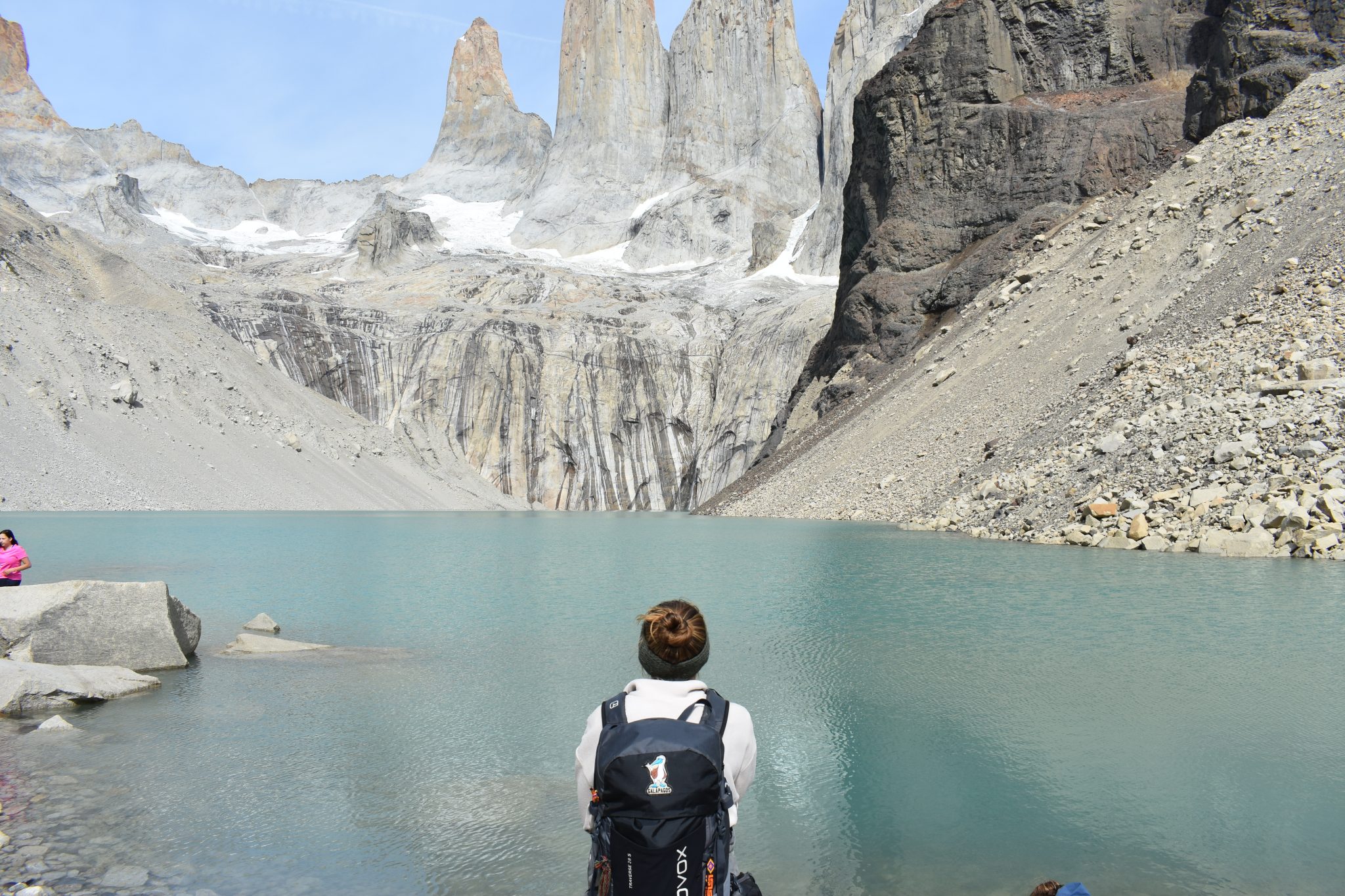
The Torres Del Paine W Trek in Patagonia is a 5-day, 100km adventure that brings you to some of the best features of Torres Del Paine. Visit Grey Glacier, the base of the Towers, the French Valley, and much more on this epic trek.
In this comprehensive guide, I'll go through everything you need to know about planning for and hiking this trail. I’ve also thrown in some up-to-date tips and links for booking campsites in Torres Del Paine.
Get ready to embark on the trail of a lifetime!
Why Hike The Patagonia W Trek?
See the highlights of torres del paine.
One of the main reasons why the W Trek in Patagonia is so popular is the stunning scenery that hikers encounter along the way. The route takes visitors past the park’s most popular features. See the granite spires of Torres del Paine, the turquoise waters of Grey Lake, and the vast glaciers that dominate the landscape.
An Accessible Trail If You Have Limited Time
Another reason why the W Trek in Patagonia is so popular is its accessibility. Unlike many other remote treks in Patagonia, the W Trek is relatively easy to reach and can be completed in a week or less. This is great if your Patagonian backpacking trip has a time limit.
Additionally, the W Trek offers several options for accommodations, from camping to refugios (mountain huts), making it accessible to a wide range of budgets and experience levels.
W Trek Patagonia- Know Before You Go
W trek in patagonia- location.
The Torres Del Paine W Trek is situated in Chile near the southern tip of South America. The park itself is located 112 km north of Puerto Natales and 312 km north of Punta Arenas.
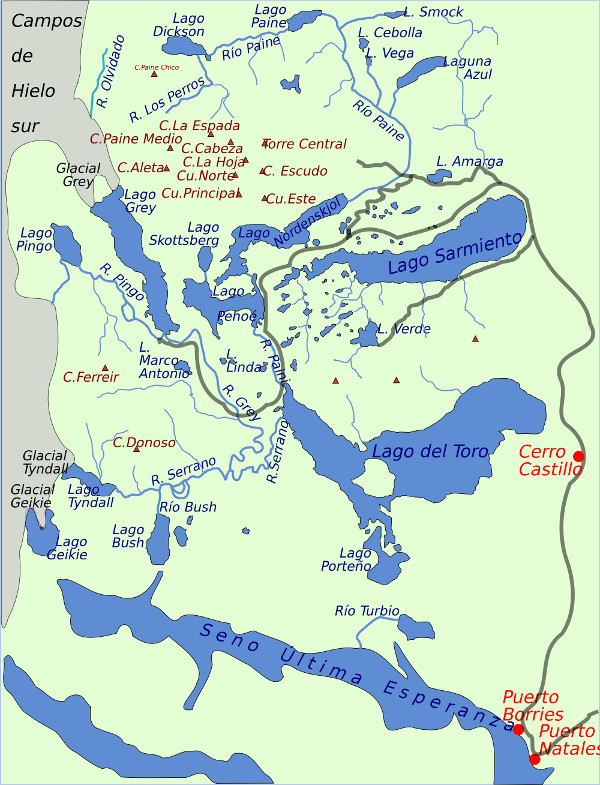
When is the best time to trek the W Hike Patagonia?
To highlight the pros and cons of each season, we have written a brief description of each below.
It’s worth also reading our articles on the best time to trek in Patagonia and, more specifically, when to hike in Torres Del Paine .
Spring - September to November
This is the perfect time of year to visit the park if you're wanting to experience warm, clear weather but without the huge crowds. Although not as warm as the summer months, the skies are often clear and you will get incredible views across the park. This is also the best season to see flowering flora in the region and witness the breeding season for wildlife.
Summer - December to March
This is the high season at Torres del Paine national park . Although the trails in Torres Del Paine are at their busiest, the weather is at its warmest. You'll get the maximum amount of clear days on your trek at this time of year. If you're the active type, then summer is also the period when you can horse ride, kayak, and mountain bike alongside your trek!
Fall - March to June
My favorite season without a doubt. The landscape becomes ablaze with color as the trails start to empty out and days become colder. The wind is often ferocious, but the spectacularly beautiful views are worth it!
Winter - June to August
Between May- September, self-guided hiking is not permitted in Torres Del Paine. Over this period, you can only hike Patagonia W Trek with a guide.
The major benefit of this season is that it is the quietest. There will be very few other visitors and you'll have many of the trails to yourself. This is the coldest period though and you will certainly experience cold nights and high, cold winds.
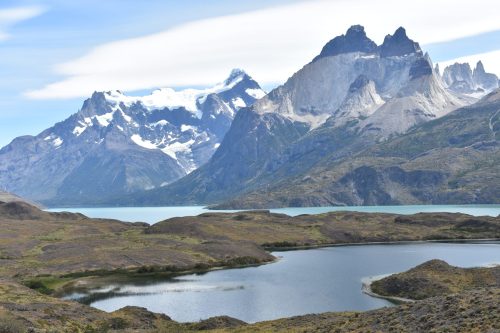
Torres Del Paine National Park
How Difficult Is Patagonia’s W Trek?
The Torres Del Paine W Trek is considered to be an easy multi-day trek as the elevation remains fairly steady throughout the hike. There is also the added benefit that the trek can be done over a longer or shorter period depending on your fitness levels.
Although regarded as easy, the trek still requires a solid level of fitness as you will be trekking a total of 100km/ 62 miles. This is 10-20km per day depending how many nights you camp out.
Hikers generally stay at the same elevation and certainly never go high enough for altitude sickness to become an issue.
The trails are well-defined and you’ll find signposts dotted along the trails at regular intervals. Water is available at all campsites, as is food. Ranger stations are dotted along the trail and you’ll most likely be among other trekkers (depending on when you trek).
Be careful though, storms are frequent in Patagonia and the wind can get extremely cold and strong. Always check weather forecasts before your day of trekking as the John Gardner Pass is often closed due to high winds.
Are Permits Required for The W Trek in Patagonia?
Yes, a permit is needed to enter the park. Permits cost $49 for more than three days. You need to book tickets online at least 24hrs before you visit.
You can print the permit or show it to officials on your phone. The park officials will need to see proof that you have booked your camping ground accommodation in advance.
Accommodation And Food On The W-Hike Patagonia
There are 11 campsites in the park which are run by three different companies. Currently, you can book campsites through Vertice Patagonia and Las Torres . Campsites cost between $10-$25 (Site only). Both companies also have the option to rent camping gear.
As well as tents, there is also options to stay in dormitories, cabins, and refugios. You can book these with the same companies mentioned above. I suggest using only one company to book your entire trek, for simplicity's sake.
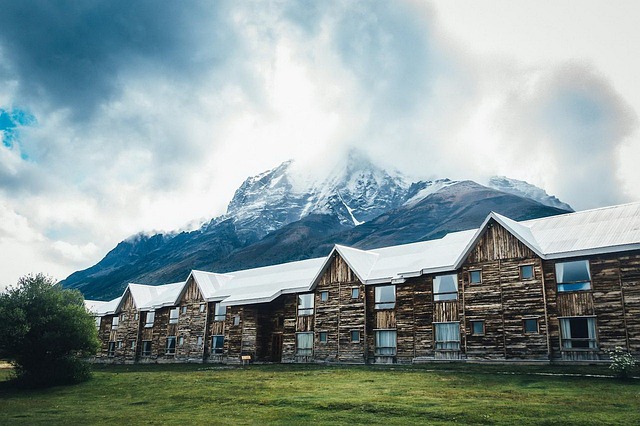
Hotel In Torres Del Paine National Park
At the camps, you will find bathrooms, shops, and even small restaurants. You may need to pre-order your meal so check beforehand.
Note: As of 2022/2023, the free CONAF campsites (El Paso and Italiano) are not available. It is unclear when and if these will re-open. It’s better to budget in paying for all your sites. If this has changed, please drop us a comment.
How Far In Advance Should You Book The W Trek, Patagonia?
Torres Del Paine treks are not something you can decide to do last minute. I’ve seen a friend break a sweat over finding campsites when she already had flights to Punta Arenas booked. This was a whole three months before her hike in November! To be safe, I’d say you should plan and book your trip at least six months in advance. Maybe even more if you plan on hiking the W Trek in the peak season (December-March)
Since 2016, the amount of people who can hike the W Trail is 80 persons per day. Visitors must reserve a place if trekking solo without an operator and you’ll need to take the trail in a counterclockwise direction.
How Do You Get To Torres Del Paine And The Start Of Patagonias W Trek?
Visitors can fly into Punta Arenas, Chile, or El Calafate, Argentina. From either of these towns. You can then take a bus to Puerto Natales.
The bus ride from Punta Arenas to Puerto Natales takes three hours and costs between $20-$30 dollars.
Buses between El Calafate and Puerto Natales are quite a bit longer (around 5 hours). Tickets cost between $30-$40.
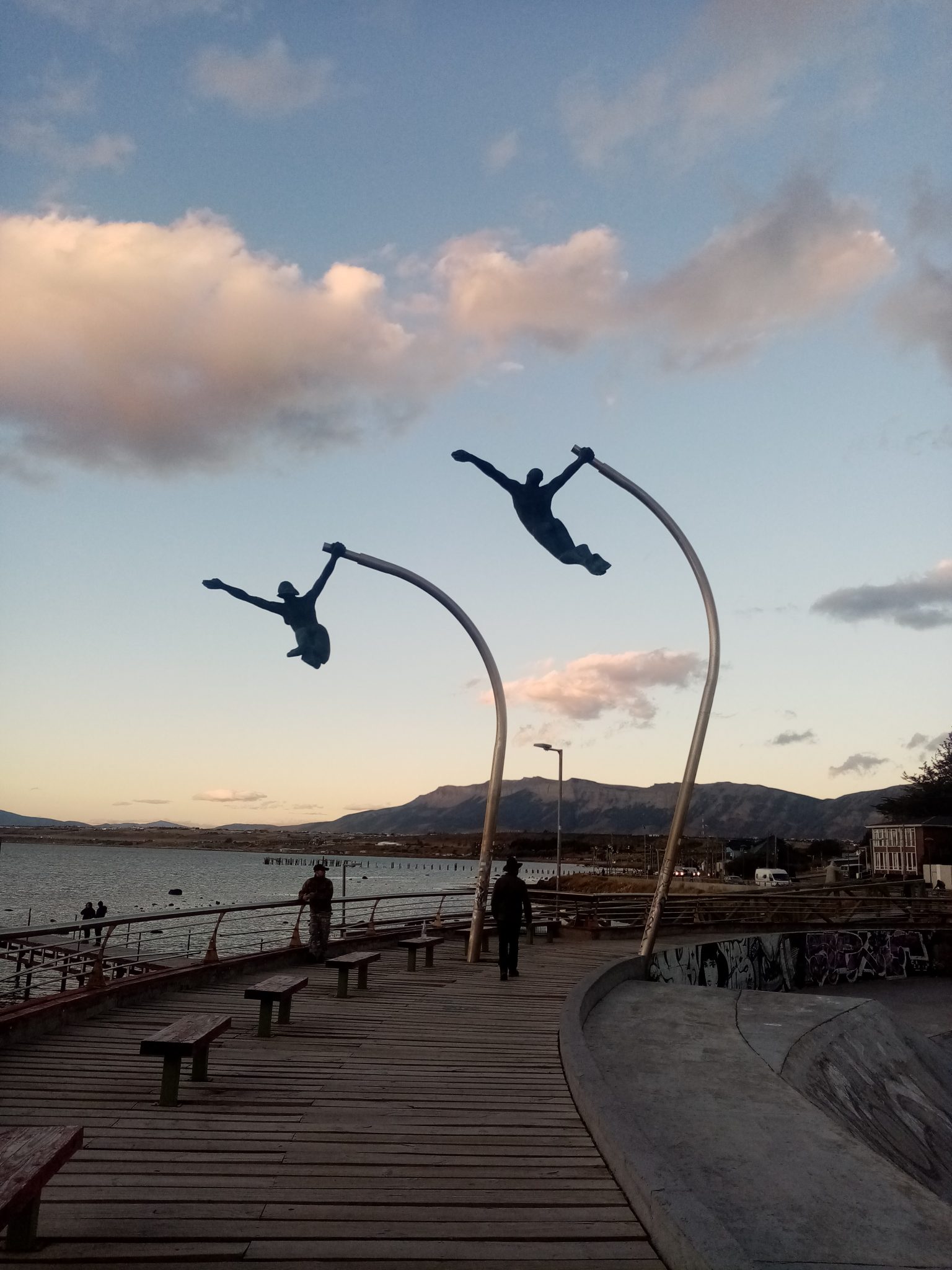
Its good to spend at least one night before the W Trek resting and exploring Puerto Natelensis
Daily buses run between the town of Puerto Natales to the entrance of Torres Del Paine. This ride will set you back $15-$15. If you have a higher budget, you could arrange a private transfer to the park and organize for the driver to pick you up after your trek.
How much does the W Trek Patagonia Cost?
The cost of a Torres Del Paine W Trek varies depending on when you book flights and when you trek (out-of-season tends to be a little cheaper). If you go with a trekking agency, local companies will be much cheaper than booking through an American or European operator. Trekking independently in Patagonia is always the most budget-friendly choice.
- Tour Agency: ~$500 for a cheap local agency to ~$2,000 for a pricey Western trekking agency
- Visa, Vaccinations, Insurance etc:~$300-$500
- Equipment (buying and hiring):~$500-$800 – camping gear can be rented at the park entrance for $200.
- Return flights to Punta Arenas: ~$1,500
- Tips: ~$10-20
- Misc (additional food, unplanned travel/hotels, etc): $50
Total costs with tour agency: $2,000 – $4,000 It is possible to plan an independent W trek for less than $300. This price includes food, park entrance, and camping (assuming you have your own equipment). Food can be purchased from refugios throughout the park, however, it is very expensive.
You may also like : Guide to Fitz Roy hikes
Hiking The W Trek Patagonia - Route Guide
The most popular trek in Patagonia , the Torres Del Paine W Trek is fast becoming one of the most well-respected short hikes in the world due to the trail's stunning scenery.
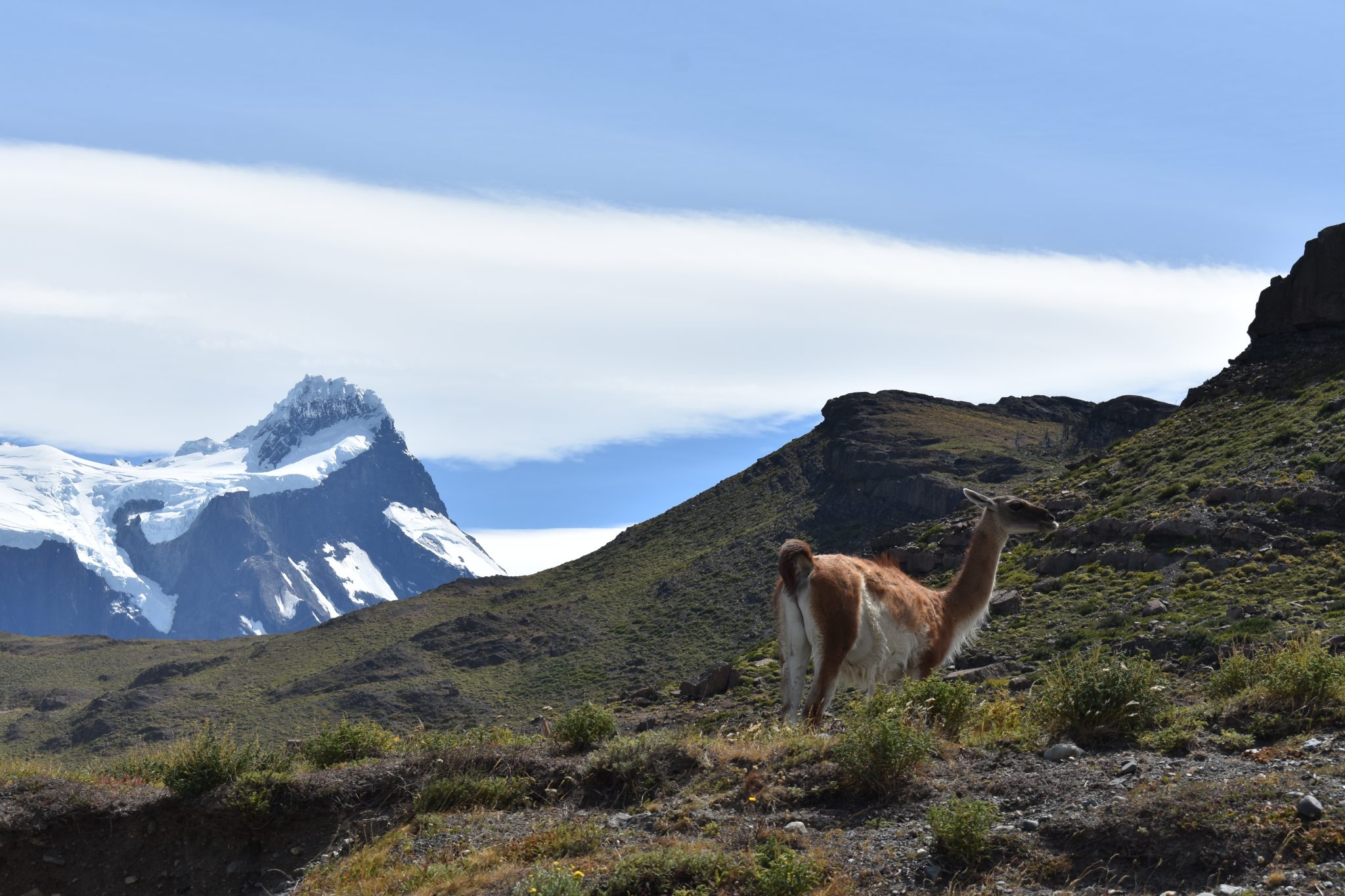
Guanaco in Torres Del Paine
Located in the amazing Torres del Paine National Park which was made a World Biosphere Reserve by UNESCO in 1978. The 100km trek generally takes around 5 days to complete. It takes visitors into the very heart of the park, through haunting forests, soaring mountains, and colossal glaciers.
Where does the W Hike Patagonia Start And End?
The trek begins with a lovely boat ride near the Grey Glacier and finishes with a magical sunrise at the famous Torres on the final morning. There is the option to do the longer full circuit O trek , however, most travelers opt for the shorter W Trek.
Patagonia W Trek - Day By Day Trail Information
Below is a standard, 5-day itinerary outline for your Torres Del Paine W Trek. This can vary depending on fitness levels, available camps, and routes. It should at least provide a good idea of what to expect. This is especially useful if you are trekking Patagonia independently .
Day 1: Puerto Natales to Refugio Grey (11km)
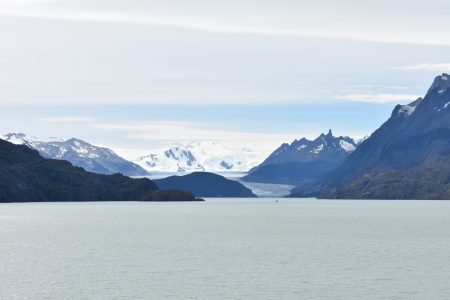
Grey Lake with Grey Glacier in the background, the start of the W Trek
Leave early from the town of Puerto Natales. Buses depart at 7:15, if you go with a tour or taxi, you will probably leave earlier.
Take your transportation Pudeto. This is the next stop after the park entrance.
If you have time, visit the local waterfall and take some pictures. You then take a lovely boat ride by catamaran to Paine Grande. After arriving you begin your trek in earnest with a 3-4 hour (uphill) hike along Lago Grey to Refugio Grey where you camp the night. If you have some energy after dinner, head down to the lake and feel the cold water!
Day 2: Grey Glacier to Paine Grande (19km)
Today you’ll be up early – around 8 am – to hike up to the former campsite of Paso. From the campsite, you take a small path to the lookout platform where you get stunning views across Grey Glacier.
After spending a little time appreciating the glacier, you have the option to continue the hike to Paso.
This is an uphill trek and will add extra mileage to your day. However, I’d recommend it as the trail is absolutely beautiful and gives incredible views all the way along the glacier.
After visiting Paso, return along the trail back down to where you camped the previous night.
After lunch, it is a 3-4 hour hike down to your next campsite at Paine Grande. If you can, find a campsite next to the hill so you’re not battered by the strong winds overnight.
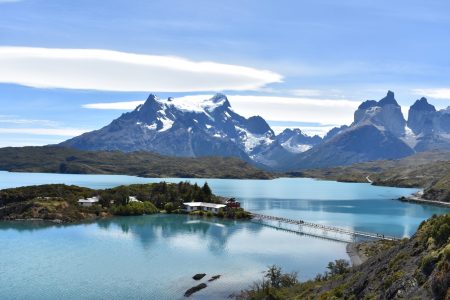
Refugio Paine Grande lies at the other side of Laguna Pehoe
Day 3: Valle del Frances to Los Cuernos (28km)
Today is a long one! Mentally prepare yourself for a full day of hiking. You begin your trek around 8am and hike for several hours until you reach camp.
At the camp, you should dump your large backpack at Campamento Italiano and head on up to Mirador Frances with your daypack. Take your lunch with you along with water and sunscreen.
The walk takes 2-3 hours and you should reach the Mirador around lunchtime.
After stopping to eat and explore the area, you’ll head back down to Campamento Italiano and retrieve your large backpack.
From there you head to your next campsite at Los Cuernos. This is roughly 2 hours walk away.
Day 4: Los Cuernos to Campamento Torres (20km)
This is the last full day of hiking on the circuit. After a leisurely breakfast, you should head off around 9 am towards Campamento Chileno.
Your trek begins on flat ground as you make your way along the Lago Nordernskjöld. After a few hours, you’ll come to a sign saying “shortcut to Chileno”.
Take the shortcut and walk for several hours until you reach the Refugio Chileno. Have lunch here before continuing on.
After lunch, you will walk uphill for an hour or so until you reach Campamento Torres. Leave your large backpacks here and head upwards for 45 minutes until you reach the Torres! Take a well-deserved break and soak in this iconic view.
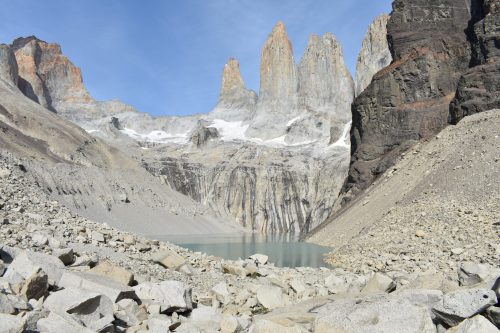
A steep climb up is rewarded with this view of the Iconic Las Torres granite spires
Back at the Refugio, make sure you hit the sack early. You’ll need to be up before sunrise the following day!
Day 5: Torres to Puerto Natales (10-15km)
Don’t sleep in on Day 5! You’ll want to rise early (around 5 am) to get the sunrise views at the mirador of the Towers. Sunrise happens around 6 am in summer and there is just a short walk to the viewing and picnic area. If you’re lucky with the weather, you’ll get an incredible view and witness one of the most beautiful sunrises on our planet! If it’s raining in camp, do not give up – the weather is frequently very different up near the viewing area and the weather can clear fast. It’s worth taking a chance. After your sunrise moment, head back down to camp and pack up all your gear. From camp, you will head down to the Hotel Las Torres. This walk takes roughly 3 hours. From the trail’s end, you can walk to the park entrance. The 7km/ 4.3 miles will take you around 1.5 - 2hrs. At this point, you will be exhausted and may prefer to take the 2 pm minibus to Laguna Amarga at the entrance. Its worth budgeting an extra $10 for this bus fee. The return bus to Puerto Natales leaves at 2:30 pm from the park entrance. Double-check bus times before you set off.
W Trek Patagonia Map
The best map I've found for the Torres Del Paine W Trek is the Torres del Paine Waterproof Trekking Map by Sergio Zagier. The map provides compressive satellite relief, contour lines, shelters, timed trails, camping, and inns.
Other W Trek FAQs
Is altitude sickness a risk on the w trek.
There is essentially zero risk of altitude sickness on the Torres Del Paine Full W Trek. The highest point reached is under 700 meters which is far too low to bring on altitude sickness. See our guide on altitude sickness .
What W Trek guidebook do you recommend?
The one guidebook that stands above all others is Trekking Torres del Paine: Chile’s Premier National Park and Argentina’s Los Glaciares National Park by Rudolf Abraham. The guidebook covers eight major trails within the park including the Full Circuit and the ‘W’ Trek. Maps, tips, and detailed information is provided for each trek and the book is a must for trekkers hiking solo.
What gear do you need for the W hike?
Trekking the W requires a certain amount of essential pieces of trekking clothing and equipment.
Many pieces of equipment including tents, sleeping bags, and mats, can be rented at the campsites. However, rental prices are high. We recommend bringing the most important pieces of gear with you.
To help you plan and prepare for your trek we have written a detailed hiking gear list .
About the author
Alison Macallister
With a degree in Nature Conservation and experience working with wildlife including the Big 5, Alison used to work as a guide for a 5-star safari reserve in South Africa. Today she is a full time traveller and editor for Mountain IQ. She has travelled and hiked extensively in South America, including many solo hikes in Patagonia, the Cusco region of Peru, Ecuador and Chile.
Leave a Reply
Your email address will not be published. Required fields are marked
We work with local guides to offer great value adventures at unbeatable prices

- Privacy Policy
- Puerto Rico
- Travel Tips
Hiking the W Trek in Patagonia Self-Guided: The Complete Details

When you think of Patagonia, it’s hard not to imagine the picture of its most famous pristine peaks. Many avid hikers and outdoor enthusiasts dream of one day visiting Chile and Argentina to explore the Patagonia region. One of the most famous hikes in Patagonia is the W Trek.
This is the smaller version of the O-trek, but even though it’s shorter, it still offers the adventure of a lifetime. These hikes are located in the Torres del Paine National Park in Chile.
My dream finally came true in December 2024 when I visited Patagonia for the first time. There were beautiful landscapes everywhere, and I couldn’t stop staring at them.
In this guide, I’ll go over everything you need to know (and there’s a lot) about hiking the W Trek in Patagonia self-guided.

What is the W Trek in Patagonia and Why You Should Hike it
What makes this hike unique is how well the trails are maintained, the excellent refugios, the people, and, of course, the views.
When traveling throughout Patagonia, it’s funny and cool to notice the same people repeatedly. Most people stick to a very similar itinerary.
There are options for individuals who want to camp and have gear, don’t have gear, or want to go all out and sleep in beds.
Where is the W Trek in Patagonia?
The W Trek is a four- to five-day hike in Torres del Paine National Park. Patagonia is located in Chile and Argentina , offering something different.
Most people who plan to visit Torres del Paine National Park stay in Puerto Natales . This town is easily accessible by bus if you’re coming from Calafate, where the famous Minitrekking on Perito Moreno Glacier is done.
We stopped by here shortly on our way south, where we decided to see Penguins in Punta Arenas before returning for the trek!

How to Get to Torres del Paines National Park
Getting to Torres del Paines National Park is relatively easy. We were one group of the many individuals who got to this park to do the W Trek alone, self-guided.
What does this mean? It means there’s a lot of bus options. I liked using Busbud to find bus times while traveling in Chile and Argentina.
This website didn’t have all the buses possible for every town, but it gave me a good idea of the times.
Bus From Puerto Natales to Torres del Paine National Park
Depending on your path, either East to West or West to East, will determine which bus ticket you need to buy.
No matter what, you’ll stop and get off the bus at Laguna Amarga . This is the Entrance to the park and you’ll have to show your entrance ticket. More on that later.
After finding the bus ticket on Busbud, I always visit the bus company’s website. In this case, it’s Bus Sur .
If you’re starting from West to East like us, you’ll first need a bus ticket from Puerto Natales to Puedeto . When we got to the entrance, we showed our tickets, grabbed our bags, and switched buses.
Our bus driver took a break before taking us another 25 minutes up the road to the Pudeto dock. Keep asking the drivers as everyone seemed confused about what was happening.
If you’re going from East to West, the first ticket you’ll need is one to Laguna Amarga . To find these tickets, go to Bus Sur’s website and type in the destination of Torres del Paine.
In the description will be either Laguna Amarga or Pudeto. You’ll need one of each, but you will determine which you need first and last, depending on where you start.
A side note : YOU MUST PRINT OR SCREENSHOT YOUR TICKETS
Wi-fi is scarce or non-existent inside the park.
Bus Schedule
This might be confusing at first but it’ll all become clear soon. I suggest starting a notes page on your phone with your itinerary and all the needed documents in there.
Below is the bus schedule for Torres del Paine National Park in Patagonia.
Puerto Natales to Laguna Amarga & Pudeto
Current Prices (one-way): ~12,000 Chilean Pesos
Laguna Amarga to Puerto Natales
Pudeto to puerto natales.
I get it if you don’t want to take a bus and would rather drive yourself! I suggest renting a car outside of Puerto Natales as the prices will be more expensive there.
I’m unsure about driving inside the park and to which miradors are possible, but there’s a parking lot behind the Welcome Center. This is next to Refugio Torre Norte.

Things to Know When Planning the W Trek in Patagonia
The W Trek in Patagonia is a long hike and Torres del Paine doesn’t make the information easy to find.
Below will be a plethora of extra details you need to complete the self-guided hike of the W Trek!
Overview: My Itinerary (West to East)
- Take the bus from Puerto Natales to the Park Entrance (Laguna Amarga)
- Switch buses to go to Puedeto
- Take the ferry to Paine Grande ($25,000)
- Hike to Grey (11km) and hike back to Paine Grande (11km)
- Hike from Paine Grande to Mirador Britanico (13km)
- From Mirador Britanico, hike to Cuernos (10km)
- Hike from Cuernos to Chileno
- Wake up early hike from Chileno to Mirador Torres del Paine
- After spending time at the mirador, hike down to Torres Central and the Welcome Center
- Purchase a ticket back to the park entrance ($5,000)
- Take the bus back to Puerto Natales

Things to Bring
Patagonia is known for its huge mood swings of weather, and I wouldn’t change that for the world. It’s what makes this area unique. But it’s a good idea to come prepared.
During the peak season, between December and February, there will be warm, cold, and rainy weather. Here are some things I suggest bringing.
- Hiking Boots
- Grayl Water Filter
- Insect Rep ellent
- Patagonia Down Sweater
Do I have to Purchase a Camping Spot in Torres Del Paine?
Unfortunately, you can’t simply show up in Torres del Paine and expect to camp for free if you have your own gear. I’ve heard many stories of other travelers not doing their research and showing up with no purchased camping spot.
A few companies own these camping spots on the W Trek in Patagonia.
- For tents/camping spots/beds at Paine Grande, you must book a spot through Vertice Travel .
- If you’re looking to stay the night at Cuernos, Torres Central/Norte, or Chileno, you must book through Las Torres .
How Far in Advance to Book?
Hiking in Torres del Paine National Park is one of Chile’s most popular activities. This might seem obvious to some but what isn’t so obvious is how early you must book your reservation.
From experience, my girlfriend and I tried booking in early October for late November. There were spots, but many were limited, and not everything was available in three straight days.
We ended up booking our reservations for the park for the middle of December. I’d suggest booking your reservations for Torres del Paine at least two months in advance, if not further.
You don’t need to purchase the ferry ticket in advance as this can only be bought in person with cash.

Entrance Fee
Unlike when doing hikes like Laguna de los Tres in El Chalten , there is an entrance fee for Torres del Paine National Park.
You can purchase the entrance tickets here . They are currently $12,000 for a 3-day or more pass.
You must download the QR code before getting on the bus, as there will be no signal once you get to the park.
How Many Days Does it Take to Hike the W Trek in Patagonia?
The days it takes to hike the W Trek in Patagonia will depend on your fitness level and if you want to take your time.
We did this trek in 3 nights and 4 days. This is the shortest time I’d ever suggest, even if you’re a fantastic hiker.
My suggestion would be to do 4 nights and 5 days. This will give you ample time to relax at the beautiful refugios and take it all in without feeling rushed.

Camping vs. Refugios
The amazing thing about this trek is that you have multiple options for your sleeping arrangements, depending on your budget.
We rented a tent and slept in the Refugio. On night one, we rented a tent with a mat, and it was honestly more comfortable than I thought it’d be!
For night two, we slept in a dorm room at the Refugio. This wasn’t too bad, but the price was almost triple that of renting a tent the previous night.
We were exhausted and wanted a good night’s sleep. We got that.
For the third night, we slept in another tent but it was large and elevated. I loved these! These were at Chileno Refuge next to Mirador Torres.
The main pros & cons for renting a tent or sleeping in the Refugio are money and if you can’t sleep well in a tent.
I’ll go over the prices of everything next.

How Much Does the W Trek Cost?
Hiking the W Trek in Torres del Paine is expensive. Especially when compared to other places in Patagonia like Bariloche and El Chalten .
But there’s ways to make this experience cheaper like bringing our own food and camping gear.
Overview (per person) : Our Costs
- This price includes mats & sleeping pads for both nights we camped.
- This price is mainly from buying dinner on nights 2 & 3. We packed our food for every breakfast and lunch.
- Tickets (Bus + Ferry + Entrance) : 61,000 Chilean Pesos or $62 USD
- Total Cost Per Person : $537 USD
Food Costs :
- Breakfast = $25
- Lunch/Box Lunch = $25
- Dinner = $40
- Full Board = $80
- Breakfast = $28
- Box Lunch = $30
- Lunch = $50
- Dinner = $50
- Full Board (Breakfast/Box Lunch/Dinner) = $100
- Half Board (Breakfast & Dinner) = $70
- Same price as Cuernos because they are the same company.
Campsite/Refugio
- Campsite (with own equipment) = $13
- Simple Bed = $65
- Bed w/ Bedding = $100
- Premium Campsite w/ Everything = $190 single/$220 double
- Single Bed = $144
- Premium Tent = $200 single/$288 double

Which Direction is the Best for the W Trek?
This is one of the most asked questions about the W Trek in Patagonia. For me, it was quite simple.
I wanted to end this amazing adventure at the best view in the park, Mirador Torres.
Going from East to West might make more sense if you want to explore Lago Grey and do activities such as kayaking and ice trekking.
I personally loved going from West to East, and I’ll tell everyone to do this same route every time.
W Trek Patagonia Map

Credit goes to the Torres del Paine Website . There’s a lot of maps out there if you want something better.
How to Make Campsite/Refugio Bookings in Torres del Paine
I mentioned this earlier, but there are two separate websites you must book your accommodation through before arriving.
If you plan on taking the same route we did and going from West to East, you’ll stay at Paine Grande, Cuernos, and finally, Chileno.
Below are the websites to book each night’s stay.
- Paine Gr a nde
W Trek vs O-Trek in Patagonia
You will hear many people humbly bragging about completing the O-trek, and as they should. It’s definitely difficult, even compared to the W Trek!
The O-trek is much longer and less commercialized in the upper sections. You create a strong bond with everyone who completes it with you.
We did the W Trek because we were short on time and didn’t have our own gear. This meant the trip would be more expensive than we could budget.

Is the W Trek Difficult?
Some might not agree, but the W Trek is difficult. You should only attempt it if you’re in decent hiking shape.
If you’re flying into Santiago first before completing this, there’s a hike called Cerro Manquehue . It’s one of the best views in all of Santiago!
W Trek in Patagonia Hiking Details
- Distance: This hike is a 45.5-mile point-to-point.
- Duration: On average, it will take people 4 days to go up and back down. This depends on your fitness level and which route you take.
- Difficulty: I’d rank this hike as hard because of the amount of time it takes and the elevation gain.
- Incline : The elevation for this hike is around 9,917 feet or 3022 meters.
- Hiking Guide: A guide is not needed for this hike and is easily accessible by the public
Best Places to Stay in Puerto Natales
- Yogan House : This is the hostel we stayed at but it felt more like a really nice B&B. The rooms were amazing and it was by far the best breakfast I’ve ever had in South America.
- Vinnhaus : If you’re looking for a stunning, centrally located hotel, this is it. There’s nothing bad I can say about this place. It honestly should cost more.
- Hostal Boutique Factoria Patagonia : Looking for a cabin like experience in Puerto Natales? Then look no further than this spectacular Boutique hotel!

My Experience Hiking the W Trek in Patagonia
Hiking the W Trek was unlike anything I’ve ever experienced. I met new people and made new friends, all while taking in some of the most beautiful scenery in the world. It was priceless.
The first day was honestly one of the longest, if not the longest. We started by waking up at 6 a.m. and getting a ride to the bus station.
We took the earliest bus because we knew the day would be long. It was quite relaxing, actually, and most of the people on the bus slept.
Things started getting confusing when we arrived at the entrance two hours later. We were told to switch buses but different people kept telling us different buses.
Eventually, we found the right bus, and we were headed another 30 minutes to Pudeto.
We arrived at the dock, bought a cafe late, and waited for the ferry to arrive. You’ll pay the ferry in cash (25,000 CLP).
Once we arrived at Paine Grande, we unpacked, ate lunch and headed to see Lago Grey! We should have stayed the night here and then hiked in the morning because it was already late and we’ve been moving for quite some time now.
You can stop in different spots; you don’t have to go the entire way.
When we finally returned to Paine Grande, we cooked our dinner and immediately went to sleep.

The next day was another long one. All of these days were going to be quite long but the first two were the longest.
We woke up, ate breakfast and hit the trail. Our first goal was to reach Mirador Britanico and then end at Cuernos.
The hike up to this mirador is steep and adds on a lot of mileage. I don’t think going all the way to the top is worth it. Instead, you can go halfway where the views are better and go back down. It’s stunning.
There’s a refugio here, and you can leave your bags at the bottom to hike up since you’ll be coming back down.
From here, we headed to Cuernos, where we then enjoyed a nice salmon meal and a couple of beers and relaxed.
Along this trail to Cuernos, you’ll go along a beach with black and white pebbles. It was raining and the feeling was surreal.

This was the shorter day and I was excited for that. We woke up, ate breakfast, and once again got on the trail early.
The trail was relatively flat for the early section until you met back up with the trail to Chileno from Torres Central.
This part became very steep but once we reached the top, you could see the refugio. We arrived early enough to have a couple beers, take a nap, shower, all before dinner.
After dinner, we washed up and went to bed early because the next day was going to be the best of them all.

Day 4: The Final Day
This was it. This is what we’ve been waiting for. We woke up around 6am, ate a quick breakfast, and got on the trail.
We were actually late to the party as a lot of people who stay at Chileno end up going there for sunrise. I think there was more people there for sunrise then when we arrived around 9am.
The trail was easy at first but became steep and sometimes hard to follow. But once you make it, you’ll know.
I couldn’t stop staring at her. Torres was something from a storytale, and I didn’t want to leave.
We spent around an hour here taking photos and eating snacks before we headed down. As we started to descend, large groups were going up.
After resting at Chileno, we headed back towards Torres Central and the Welcome Center. We bought a shuttle ticket back to the entrance and that was it.
Just like that, it was over.

Final Thoughts
I’ll be back. I told myself I needed to complete the O-trek, and I will. This hike wasn’t only about reaching Torres but everything in between, from making new friends to exploring a totally different part of the world. Patagonia is magical, and everyone should be able to explore this area one day.
Previous post

Minitrekking on Perito Moreno Glacier Review: Complete Guide

How Many Days in El Chalten: My Complete Itinerary
Related posts.

Cerro Manquehue Hike: The Best Viewpoint in Santiago, Chile
Leave a reply cancel reply.
Save my name, email, and website in this browser for the next time I comment.

Recent Posts
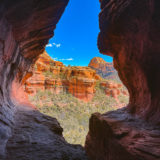
The Subway Cave Hike in Sedona: Everything You Need to Know
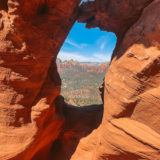
The Schnebly Hill Windows Hike in Sedona: The Complete Guide
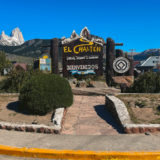

Torres del Paine W Trek: the Ultimate Trekking Guide
Want to learn all about the best multi day hike of Patagonia? Read this ultimate Torres del Paine W Trek Trekking Guide and get ready for the mountains of wonders!!!
Hello my wonder friends!!! How have you been? Last year, after my failed attempt to conquer Nepal’s Annapurna Circuit , I set myself the goal of getting back in shape and do more multi day hikes in 2018.
The first one of the year? The Epic Torres del Paine W Trek in the Chilean Patagonia. This 4 night, 5 day multi day hike will take you to amazing landscapes right next to tall and majestic mountains of wonders.
Wanna learn all about Torres del Paine W Trek and how you can also conquer it? I hope you enjoy the following article my wonder friends!!!
Day 0: Arrival to Puerto Natales
Puerto Natales is the place where all Torres del Paine Treks begin with the more popular being a one day hike to the Base of the Towers, the 5 day W Trek, the 9 day O Trek and the 11 day Q trek (read all about the Torres del Paine O and Q Treks here).
For this W Trek, I partnered up with ChileTour Patagonia who took care of all of the logistics and also was kind enough to host me at their charming guest house in Puerto Natales.
Plus, who can forget that awesome salmon welcome dinner with some amazing Chilean wine?
Puerto Natales is objectively beautiful but I would be lying if I told you that there’s many things to do there. Other than walking by the lake and blowing dandelions like a IG rockstar, there isn’t much to do in Puerto Natales itself.
That being said, give yourself one or two days BEFORE the start of your Torres del Paine W Trek in case of airlines delays since reservations at the campsites, hotels, and refugees of Torres del Paine are NOT flexible at all so you might end up losing a LOT of money in case of a delay.
Better be safe than sorry my wonder friends!

Day 1: Puerto Natales to Las Torres
And after a very beautiful first day in Puerto Natales in which my friend Kimmie from Adventures & Sunsets and I took some very cool photos by the lake…bad weather arrived to Patagonia.
No, let me rephrase it: really awfully bad weather arrived. “I’ve been working in this park for many years and this is the first time that you can’t even see the big peaks of the mountains.” our trekking guide Luis told us.
As you can imagine, my heart broke a little bit when I checked the Windguru weather report that is printed at each refugio: bad weather all week long.
Day 1 of the Torres del Paine W Trek usually involves driving from Puerto Natales to the Torres sector from where you start the 22KM roundtrip hike to the Base of the Towers.
However, because of the snow, the pathway was closed off and we were only able to make halfway to Refugio Chileno before having to turn back making the entire day trek a total of 12.3 KM.
At least the red, orange and yellow autumns were there to keep me positive: “ we’ll have sunlight tomorrow” I said. Oh boy was I mistaken…

Day 2: Refugio Las Torres to the Domos Frances
Day 2 of the W Trek involves going from Sector Las Torres to the Domos Frances on a very pleasant and easy scenic walk that passes trough forests mountains and lakes.
Sadly, weather wasn’t on our side (again) this day so the next 17.7 KM involved a lot of rain, heavy winds and 0 visibility of the great mountains that allegedly should have been to our right side during the entire trek.
But hey, it’s always important to look at the bright side of life uh?
Then, as we finally arrived to the uniquely designed Domos Frances, the blue sky appeared even though the sunlight did not. Beggars can’t be choosers uh?
Sadly, our joy was really short lived as the blue sky disappeared as fast as it originally arrived leaving us with a deep sadness inside our hearts that could only be filled by the HUGE dinner that awaited us at the Domos.
“Tomorrow it will get better, I can feel it” I told myself as I closed my eyes.

Day 3: Domo Frances to Paine Grande
Day 3 of the W Trek is meant to be the most beautiful and exhausting one as you go to the French Valley, THE best place of the entire W Trek according to our guide Luis.
Sadly, heavy snow prevented us from actually getting there so again, our day was cut short and we ended up doing only 13.6 KM this day. Disappointed, I lost all hope and started to walk slower than ever, falling behind from the rest of my fellow hikers.
Then…I sensed a ray of sunlight on my face. And as I turned to my right I saw them for the first time: the mountains of wonders were greeting me from high above.
Since we were already way ahead and the day was coming to a close, coming back to the French Valley wasn’t an option, however, the rest of the hike to the Paine Grande Refugio and Camping was a truly remarkable one.
We finally could see the mountains even if the sun was still hiding behind the clouds!!! Not ideal but it was way better than what we’ve experienced so far.
With renewed energies, I drank a mate (a classical bitter drink of Argentina and Chile) to celebrate our victory over the weather and I went to bed ready for what was shaping to be THE best day ever of the Torres del Paine W Trek.
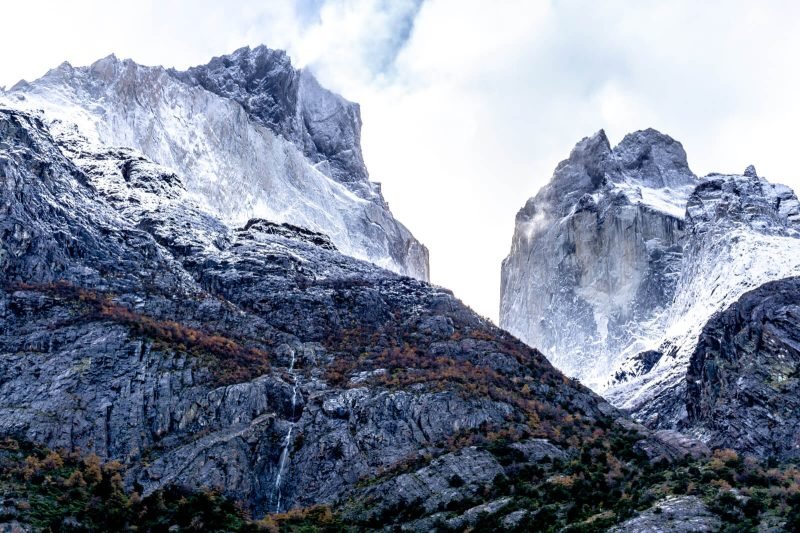
Paine Grande to Grey Glacier
On the fourth day of the W Trek you will head from Paine Grande to the glorious Glacier Grey (16.6 KM) and even though the morning started beautifully with glimpses of the sun, the cruel reality that awaited us was more clouds (as usual) and a really heavy wind that would have blown me away if it wasn’t so heavy.
The viewpoints, however, were super impressive even with the bad weather which keep encouraging me to keep going and going.
After all, when Mother Nature throws you a challenge, you take it and you conquer it no if no buts…and the reward? The reward was this majestic up close view of the Glacier Grey when the sun finally appeared from between the clouds to greet me.
“You’ve made it Raphael, come claim your prize”.
And while some of my fellow hikers decided to keep going to the hanging bridges to see the Glacier Grey from the top, I decided to do the entire opposite and hike down to the lake in order to see the Glacier Grey from up close.
Have you ever dreamed of drinking whiskey on the rocks with freshly cut glacier ice? Trust me when I say that remains one of my highlights of the year so far!!!
Why be a simple player when you can be a player of wonders instead?


Day 5: Grey Glacier to Puerto Natales
On my last day of the Torres del Paine W Trek, I had to wake up really early in order to hike the 13.3 KM back in Paine Grande and be able to catch the first ferry + bus back to Puerto Natales.
The weather was THE best one of the entire week and as I climbed the mountain pass that connects the Glacier Grey with Paine Grande I was witness to a beautiful pink sunset over the mountains and lakes that were my companions during this journey.
Who cares if I miss the first ferry? No need for rushing. I just stopped and contemplated the beauty of Mother Nature. This was my moment. This was my trek. This was my dream.
Luckily, I made it to the first ferry even with a few minutes to spare to take even more photos!!! It was hard to believe how different Paine Grande looked with the rays of the sun!!! And yes, the ferry ride from Paine Grande to Pudeto was EPIC!!!
You could see the Paine Grande mountain as well as the Cuernos (Horns) with such a clear visibility that it really made me wish I could do the entire W Trek again!!!
From Pudeto, we waited a couple of minutes for the bus that would take us back to Puerto Natales. Little did we know that the owner of ChileTour Patagonia, the friendly Ricci, had a surprise in store for us.
Day 6: A Return to the Torres del Paine Park
“Don’t feel sad that you missed the Base of the Towers, you can try it again tomorrow. Free of charge” Ricci told Kimmie, Nick (who missed the entire first Day because of the LATAM strike) and I. Now THAT’S what I call a really good costumer service.
We woke up at 4:30 am in order to be the first ones to arrive to the Torres del Paine Park (it’s a 90-120 minute ride AT LEAST) from where we started our second attempt to reach the Base of the Towers.
My body aching from the previous days, I sat down mid-way to witness THE most beautiful sunrise of the Chilean Patagonian on and then I had a harsh revelation: my legs can’t go on.
At least not today.

After notifying Kimmie and Nick about my decision not to go on for today, I went back to the beginning of the hike with a big smile on my face: I saw what I wanted to see, I experienced what I wanted to experience, I pushed my body to its limits and I was happy with the end results.
80.7 KM in 6 days might not seem much to many of you but for this former asthmatic chubby boy, this was already a big accomplishment. The cherry on top of the cake? Our driver Rodrigo was friendly enough to drive me around outside the Torres del Paine park to see some amazing viewpoints!!!
I don’t know about you but the view of the Torres del Paine from the Laguna Amarga sure can compete from the one at the base of the Towers don’t you think? Thanks, Ricci, Rodrigo, and everyone at ChileTour Patagonia for this wonderful week!

When is the Best Time to Visit Torres del Paine?
The short answer is that any season is good to visit Torres del Paine. The long answer is that it depends on what your interests are in terms of photography, how much money you’re willing to spend, how flexible you are with time, and more importantly: if you prefer having the park to yourself or if you prefer to share it with thousands of daily visitors.
Summer is by far the preferred season because of long sunlight hours which allows people to trek for more hours every day and because temperature wise it is really pleasant.
However, it is also THE most requested season for this very same reason so be prepared to book in advance and share the trail with thousands of people daily.
Autumn and Spring are similar in the sense that they’re less popular than Summer but not so deserted as Winter: you can book refugees and campsites last minute (which allows for a more flexible schedule) and even though it is way colder than in Summer there are less people in the park so you can enjoy it more.
Winter, on the other hand is VERY deserted BUT it is also THE most expensive since most refugees are closed off and you are required to hire a guide for every single day of the W Trek for safety reasons which will increase the prices A LOT.
The foliage during Winter is also not as impressive but on the positive side, you might be the only human trekking Torres del Paine. Me? I would definitely recommend Autumn, it’s so pretty!!!!

What to Pack for Your Torres del Paine W Trek
“Show me your gear” expert mountain warrior Chelsey of Finding the North asked me.
“You’re looking at it” I replied, pointing at my North Fake rain jacket that I bought in Nepal for 10 USD, my leather boots and my pair of blue jeans.
Rumor has it that you could hear that epic facepalm that Chelsey made from miles and miles. Luckily, she had some spare gear that she was kind enough to let me borrow: winter gloves, trekking poles, winter thermal socks, rain proof hiking trousers, head lamps and even an extra sleeping bag.
I don’t joke when I say that I would be a frozen popsicle by now if it wasn’t for her help. Thanks Chelsey!!!
Sure, your weather app MIGHT tell you that Torres del Paine isn’t THAT cold but the truth is that the heavy winds and rain make the thermal sensation extremely cold so you better be prepared in order to have a pleasant Torres del Paine W Trek.
Other than the items mentioned above, you might want to invest in some sturdy hiking shoes that are water proof (you will walk over puddles of water A LOT) plus thermal layers that will keep you warm no matter what.
After all, you don’t want to die half-way trough and become Puma food, right?
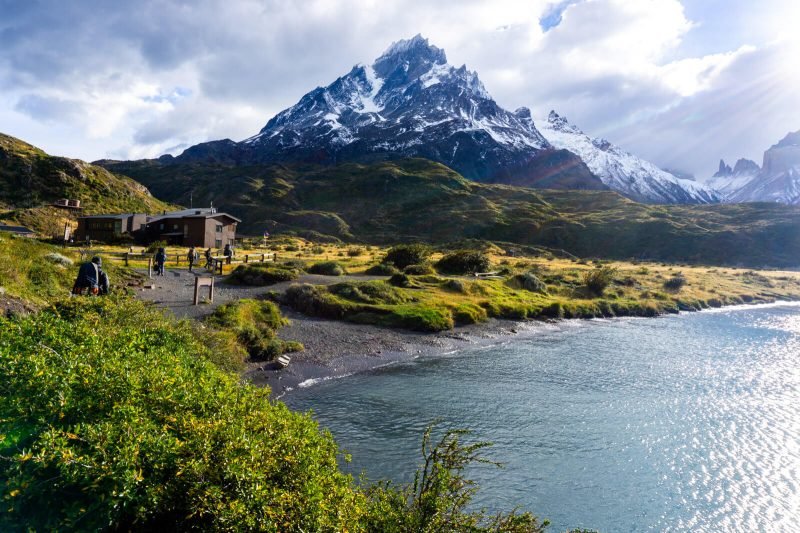
And speaking about food, you have plenty of options in Torres del Paine depending on how much you’re willing to spend, how much you’re willing to carry and more importantly: how healthy you want to be eating during the W Trek.
Option A is to buy all food inside the refugios of the park. All of them offer breakfast, dinner and lunch box for free to those travelers on a full board basis but they can be bought separately by those who didn’t book full board. Prices are REALLY expensive tho.
Option B is to carry your own cooking gear and cook at the designated areas (mostly campsites and refugios). Sure, it is inconvenient to carry all of that but you will be saving a LOT of money. Just pack some rice, soup and noodles and you’re all set!
Option C is to be cheap but unhealthy and just stock up on non-perishable food for the entire trek: you save money plus you don’t have to carry any cooking gear. Not bad at all uh?
Oh, and before you ask: you CANNOT hunt for food at Torres del Paine no matter how tasty those guanacos might look like!!!
Last but not least, you NEED to keep yourself hydrated but that doesn’t mean carrying a monster size water bottle: you can refill yours at every single campsite and refugio plus at the many streams of water that Torres del Paine National Park has.
Just be sure to drink from streams located ABOVE you and not from those located below you (since you would risk drinking water contaminated by the dirty boots of those hikers that came before you). You can read a full Torres del Paine Packing List here .
And yes, if you want to drink a glass of wine or a nice cold beer after a long day of hiking, I recommend you to bring your own booze from Puerto Natales: the same bottle of wine you can get from 5 USD at the supermarket will set you back 40 USD inside the Torres del Paine Park.
Holy Vino Tinto, Batman!!!

Where to Sleep During your Torres del Paine W Trek
During the W Trek your main two options when it comes to sleeping will be in either a tent or inside a dorm. Sure, there are some fancy Hotels located in the Sector Torres such as Eco Camp Patagonia and Hotel Las Torres but they are only good if you plan on doing the eastern part of the W Trek only.
For the rest of the W Trek you will have to either book a dorm (with the choice of having a plain bed for you to use your sleeping bag with or a bed with sheets) or a tent (you can either rent the tent space if you bring your own or an already assembled tent).
Prices vary depending on season as well as wether you want to be on a full board basis or on a plan without meals.
Here’s a breakdown of average prices for Vertice Patagonia and Fantastico Sur (the only two companies that own private refugios and campsites in Torres del Paine W Trek):
- Full Board: 55 USD
- Dinner: 25 USD
- Breakfast: 17 USD
- Lunch Box: 8 USD
- Simple Bed (no sheets): 55 USD
- Bed w/sheets: 85 USD
- Tent Space (you bring your own tent): 10 USD
- Tores del Paine Park Entrance Fee: 35 USD
Additionally, there is one FREE campsite on the W Trek called Campamento Italiano (you need to bring your own tent, it’s located right before the French Valley) but you need to book it in advance because otherwise it will be impossible to find space. You can book the Campamento Italiano directly at the CONAF site.
If you don’t want to break your head with logistics and planning, what I recommend you is to book everything via an agency such as ChileTour Patagonia who was kind enough to sponsor this journey of mine and whose customer service is THE best I’ve experienced in South America.

How to get to the Torres del Paine from Santiago de Chile
While you can take it slowly and travel by bus from Santiago de Chile to Puerto Natales stopping in many wonderful places such as Pucon or Chiloe Island, those who are short on time will want to fly from Santiago de Chile to Punta Arenas.
The flight will take you close to 4 hours (including a possible stop in Puerto Montt to pick more passengers) and if you book it in advance with a low-cost airline such as Sky or Jetsmart it can be as cheap as 40 USD one way.
From Punta Arenas, Puerto Natales is just 3 hours away by bus (you should book in advance in high season) although I recommend you to stay at least one or two nights in Punta Arenas to do some shopping for winter gear (check out my ultimate haggling guide ) or in my case, an impractical-for-hiking leather jacket.
It is also the only place in all of Chilean Patagonia with a cinema so you can understand my happiness when I finally got to watch Avengers Infinity War after one week of avoiding spoilers during the Torres del Paine W Trek.
During my most recent visit to Punta Arenas, I was kindly hosted by the Hotel Rey Don Felipe , a wonderful boutique property which was a perfect introduction to Patagonian hospitality and the different way of life of people in the South of the World.
How epic is the sunrise from the window of my room my wonder friends? Not a bad place to begin or finish your Patagonian adventure right?
The Hotel Rey Don Felipe is conveniently located in Punta Arenas and has a gym room and a sauna for you to forget about the cold Patagonian weather outside of your window. Plus, did I mention you get a free Calafate Sour drink?

I hope you have enjoyed this article about the Torres del Paine W Trek. Don’t forget to subscribe in order to get more awesome updates and tips straight to your e-mail!
Have you ever done the Torres del Paine W Trek? Would you like to? What are some of your best favorite hikes? Share your thoughts and let me know what you think!
Until next time, my friends!

Disclaimer: This article was brought to you in collaboration with ChileTour Patagonia and Hotel Rey Don Felipe, all opinions are my own.

19 Things to Know Before Hiking the W Trek in Patagonia’s Torres del Paine in 2024
So you’re interested in hiking the W Trek in Patagonia – one of South America’s most famous trails. The W Trek zigzags through the heart of Chile’s iconic Torres del Paine National Park , a land where the summits form stunning granite monolith towers and the lakes glisten a breathtaking turquoise blue. The trek is named after the W-shape it forms on a map, running along the base of the iconic mountains before doubling back into the Valle Francés (“French Valley”) at the very heart of the reserve.
This detailed guide will run through all the ins and outs of hiking the W Trek. It will cover the best time of year for hikers to visit this wild part of Chilean Patagonia, some challenges you can expect to encounter, top trip highlights, what gear you will need, how long you may spend in the wilderness, and much more. Happy exploring!
My experience hiking the W Trek
I’ve trekked extensively throughout the Andes, from the dizzying heights of Machu Picchu to the impressive glaciers of Argentine Patagonia, and have learned powerful life lessons from my adventures . However, I still remember the W Trek as one of the most amazing mountain adventures I have taken. There’s a reason why it’s the most famous hiking trail in Patagonia. T he scenery you’ll enjoy along the way is second to none – imagine jagged mountains that resemble massive shards of ice, milky mountain lakes, and the rolling Patagonian Steppe in the distance.
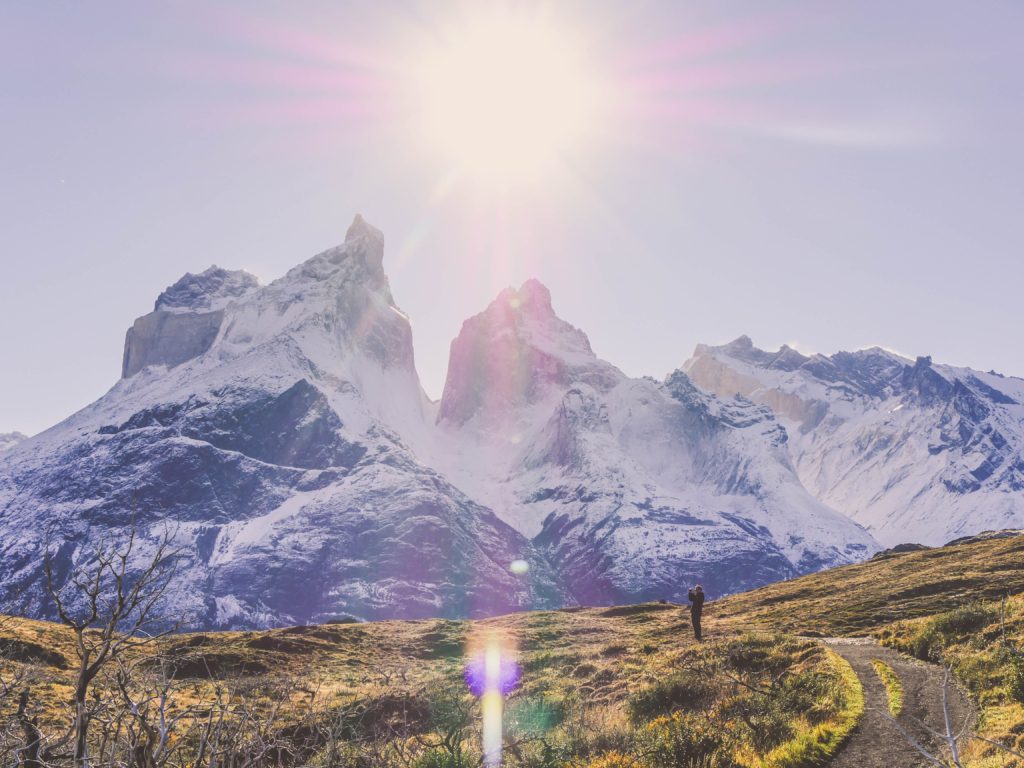
A personal highlight of the W Trek was the approach to Grey Glacier, which feels like one of the most untouched parts of Torres del Paine. The path to Grey Glacier along Grey Lake is stunningly beautiful and poses a nice challenge as you trek amongst chiseled sculpturesque mountains. Adding to the physical beauty of it all, the hiking route is fantastically well-organized with designated camp / hut sites that boast gorgeous views of the national park, the trekking season is long, and wonderful local guides are available. I highly recommend you experience hiking the W Trek for yourself .
What’s in this guide to the W Trek?
- An introduction to Chilean Patagonia
- Where is the W Trek?
- The history of the W Trek and the Torres del Paine National Park
- Highlights of the W Trek
- How long is the W Trek? How many days are needed?
- Elevation and terrain on the W Trek
- Is the W Trek difficult?
- Preparation for the W Trek
- When is the best time of year to go?
- What do I need to pack for the W Trek in Patagonia?
- Accommodations: Where to stay on the W Trek
- W Trek permits
- Getting to the start of the W Trek
- Sample W Trek itinerary
- The 5-Day W Trek Circuit
- W Trek Express
- Alternative routes to the W Trek (O Circuit vs Q Circuit)
- Where to go after the W Trek
- Visas for Chile
1. An introduction to Chilean Patagonia
Chilean Patagonia is one side of the greater region of Patagonia. Altogether, it encompasses a whopping 400,000 square miles (that’s over a million square kilometers!) of land at the southern end of South America. It’s a diverse place, rolling from seemingly endless steppes inhabited by unusual Welsh-speaking farming communities to the jagged tops of mountains like the Fitz Roy and the Torres del Paine.
Ever since the first Spanish conquistadors started coming here in the 1500s, Patagonia has been seen as a land of myth and majesty. Open and vast like nowhere in Europe, it wowed explorers with calving glaciers and penguin-spotted islands, mirror-like alpine lakes, and whale-filled oceans. Today, the awe-inspiring nature of the region is still very much intact and trekking here is seen as a bit of a rite of passage a la the Himalaya.
Chilean Patagonia begins roughly 500 miles (805 kilometers) south of Santiago, the capital, and then arcs around the whole of the edge of the continent before finishing at the icy channels of the Tierra del Fuego archipelago. It’s all pretty wonderful, but most agree that the zenith is the Torres del Paine National Park, which is where you’ll be doing the W Trek.
2. Where is the W Trek?
The W Trek leads you to the most famous part of Chilean Patagonia: The Torres del Paine. They’re a trio of incredible granite tower peaks that look like daggers shooting straight out of the earth. At their closest point, the three towers are just 12 miles (19 kilometers) from the Argentina border. The nearest main town is Puerto Natales, Chile. More generally speaking, the W Trek takes you down to the ice-capped, snow-dusted ends of the continent, less than 400 miles (645 kilometers) from Cape Horn . It’s truly a wild part of the planet you must see!
3. The history of the W Trek and the Torres del Paine National Park
Arguably the most famous corner of Chilean Patagonia, the serrated tops of the mighty Torres del Paine massif became the centrepiece of their own national park back in 1959. But you have to go back almost 80 years more to discover the moment when the region first entered the limelight.
Yep, Scottish travel-writing pioneer Lady Florence Dixie blazed a trail here during her South American travels in the late 1880s. Her prose recalls “three tall peaks of a reddish hue” stood before plains of ripe berry bushes and grazing guanacos.
Her descriptions piqued the interest of others. Finnish geologist Otto Nordenskjöld took a break from his polar explorations to visit the region in the 1900s. Then came the missionary-mountaineer Alberto María de Agostini en route to his epic crossing of the Southern Patagonian Ice Field.
It wasn’t until the end of the 1950s that the region was designated an official national park by the Chilean government. It was originally known as Grey Lake National Tourism Park but was subsequently given its modern name in the 1970s, the same decade it was dubbed a prestigious UNESCO World Biosphere Reserve.
It was also the 1970s that saw the formation of the famous trails. That was spearheaded by a team of local rangers in conjunction with British explorer John Garner (who now has a pass named after him in the range). They laid the foundations of the now-iconic circular route that encompasses the whole massif, including the W Trek section itself.
4. Highlights of the W Trek

If you’re looking to be wowed by the sheer majesty of hiking in Chilean Patagonia, then yes, the W Trek is most certainly worth it. This relatively low-altitude trek takes you through areas of the national park that are widely considered to be the most incredible places in Patagonia. In a region that’s beset by ice fields and soaring peaks, that’s really saying something!
The W Trek requires a commitment of about 4-5 days of hiking, on average. What’s great is that there is something special to see on every single day of the journey. Views abound from start to finish and there’s always another W Trek highlight to look forward to. The most impressive parts of the trek are:
- The French Valley & Cerro Paine Grande – See the spectacular summits of Cerro Paine Grande, the tallest peak of the Cordillera Paine mountain range in Torres del Paine National Park, up close as you trek into the French Valley. The French Valley is a hidden cleft in the Andes that’s topped by a hanging glacier and dashed with gnarled beech forests.
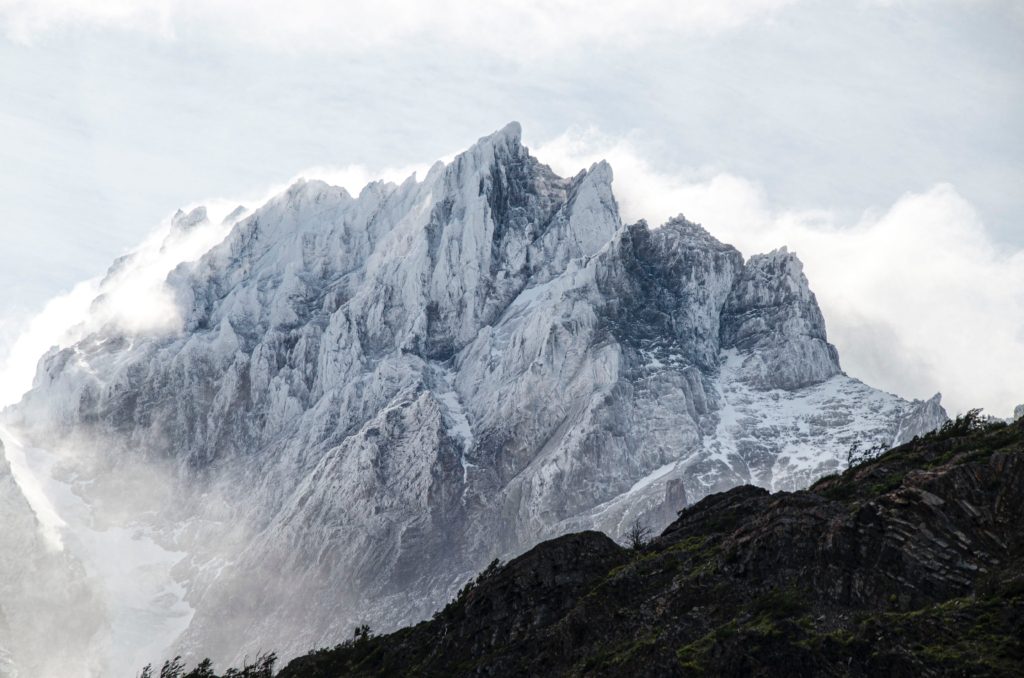
- The Base of the Towers – you will either finish or begin the trek at this stunning location with a turquoise lake set before the iconic Torres del Paine granite spires themselves. The lookout point encompasses three sheer mountains before a milky alpine lake. This is the scene that is the infamous image of the W Trek.

- Mirador Britanico – There are numerous lookout points within the French Valley, but we’d say the Mirador Britanico trumps the lot. Stand on this slab of rock to survey an amphitheater of cathedral-like mountains that descend into forests of Antarctic beech trees filled with finches and woodpeckers.
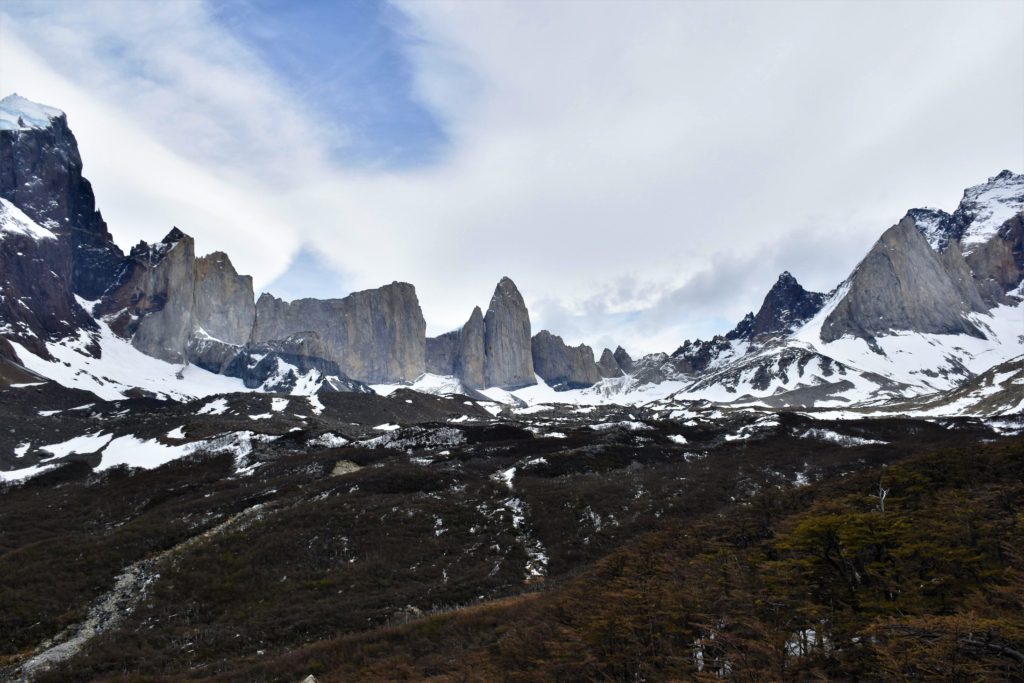
- Los Cuernos – A set of twisted mountains dominating the northern view for much of the hike. A colossal cirque of peaks all tangled together, the Los Cuernos form the very heart of the Torres del Paine massif. Look up to spy out summits named things like The Blade, The Sword, and the Shark’s Fin.
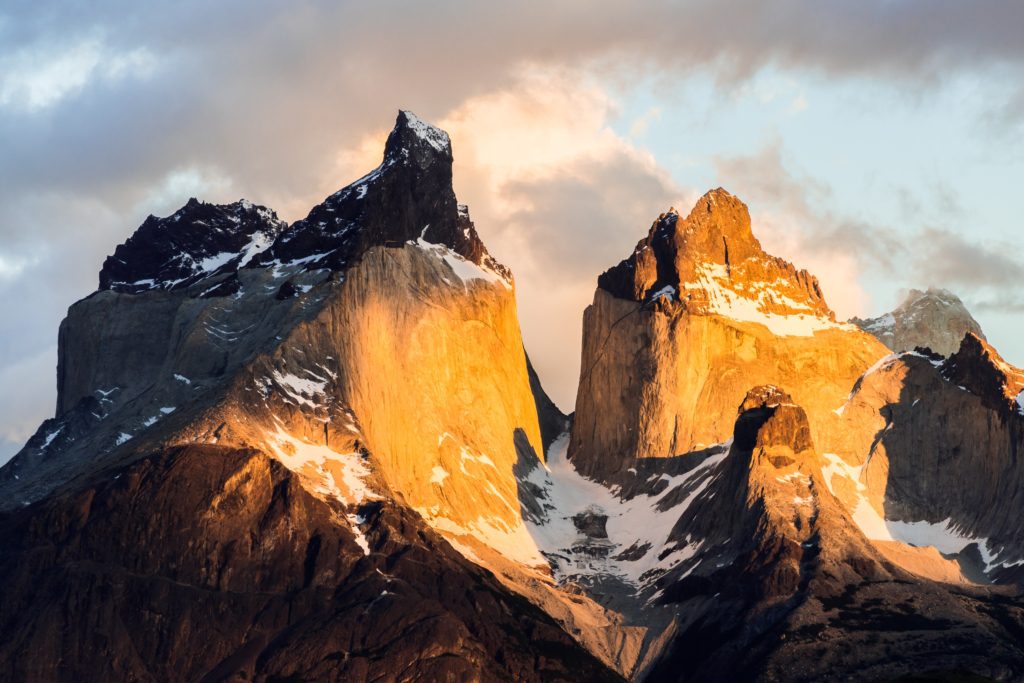
- Grey Glacier – This colossal ice field with calving sheets of frozen water could be one of the most awe-inspiring things you encounter on the W Trek. It is the largest glacier in the Torres del Paine National Park. Just one of the many tongues of frozen water that cascade down from the great Southern Patagonia Ice Field, Grey Glacier is either the grand finale or the starting point of the W Trek. It’s everything you imagine of a South American ice cap, sporting 98-foot high (30-meter) walls that rise suddenly from the turquoise waters of Lake Grey.
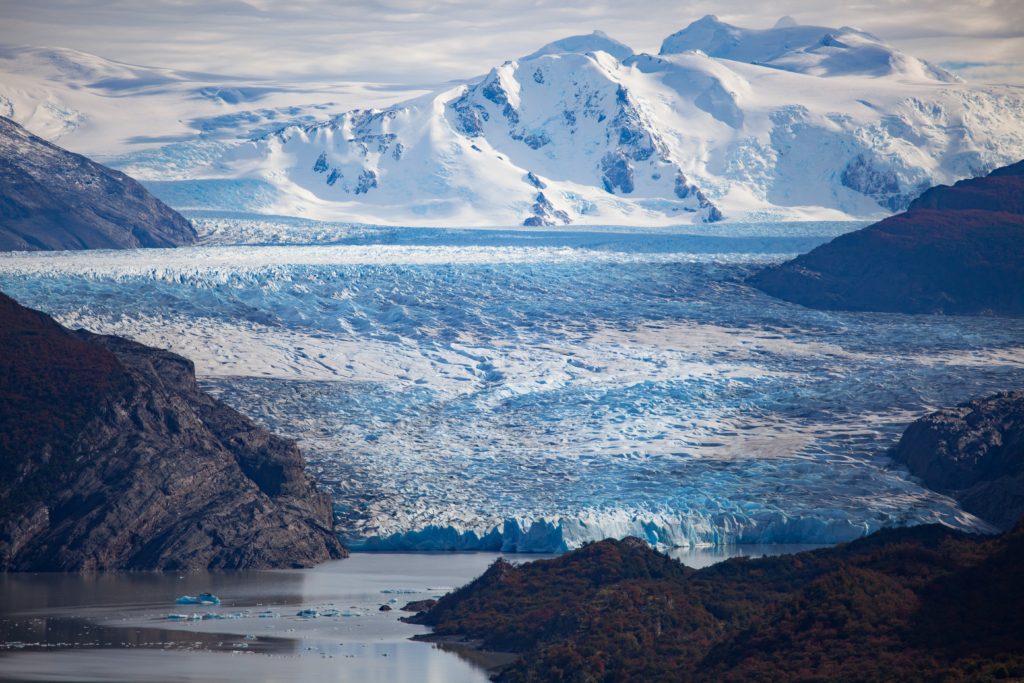
- Pehoé Lake – This many-armed body of water rolls out to the south of the W Trek path. You’ll see it on multiple days, but there’s one epic photo spot that frames the twisted Los Cuernos mountains above a mirror-like dash of water.
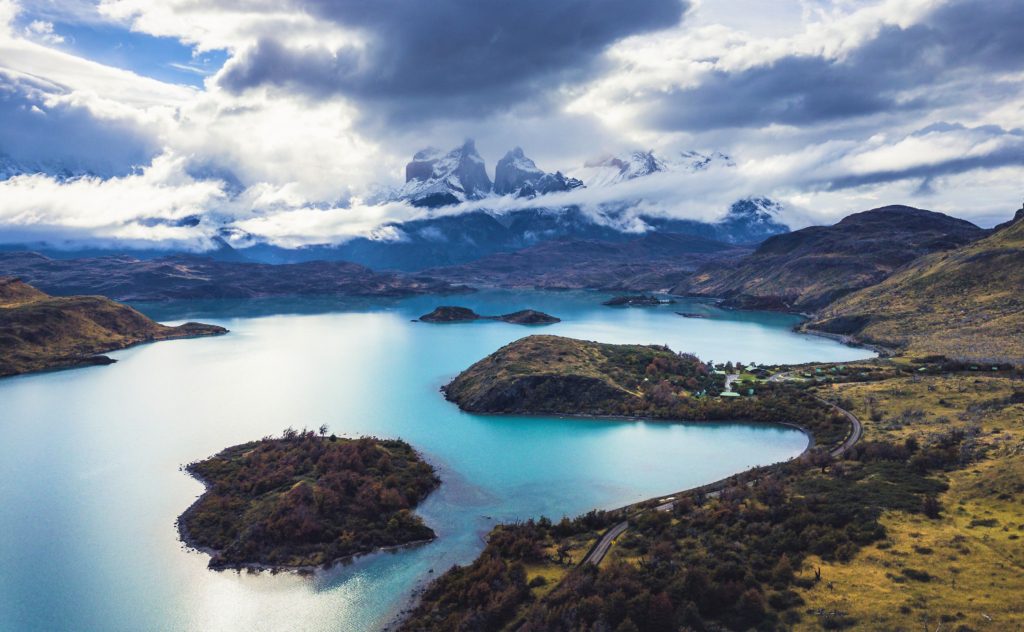
- The wildlife in Torres del Paine – Of course, you cannot forget the park’s incredible fauna! You will undoubtedly encounter a diverse range of wildlife on the W Trek. One of the most common mammals you will spot will be the ubiquitous guanacos, which are related to llamas and vicuñas. You may also see Magellanic woodpeckers, Patagonian gray foxes, Andean condors, or even caracaras (a unique-looking bird of prey). Even more elusive are the pumas and the endangered and rare Chilean Huemul, or South Andean deer.
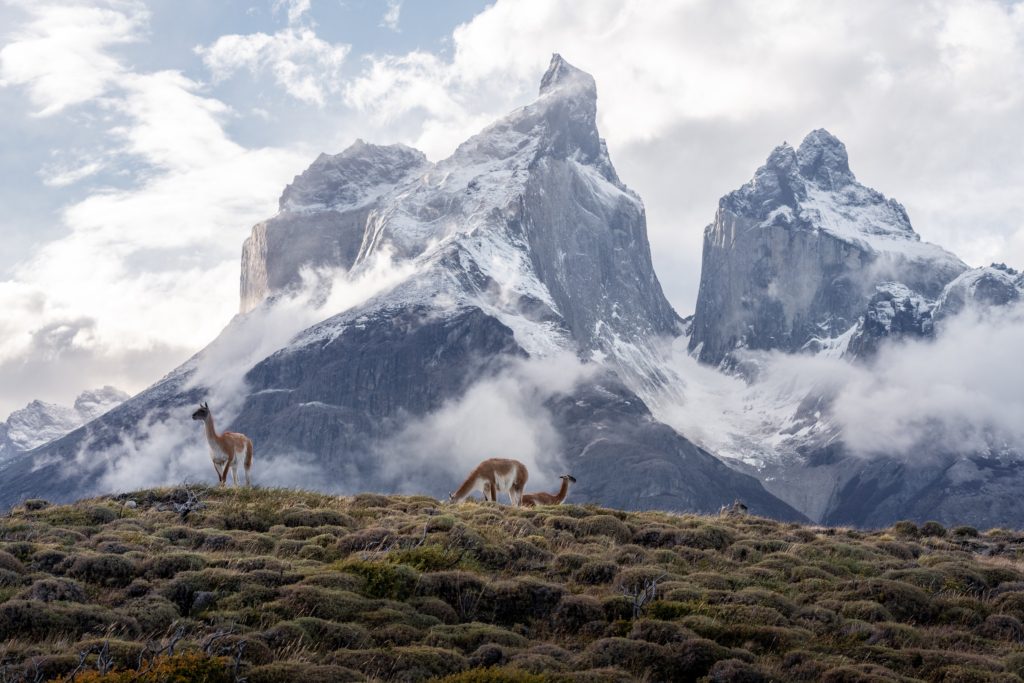
5. How long is the W Trek? How many days are needed?
The distance of the W Trek is approximately 55 miles (88.5 kilometers) long. One of the great things about this hiking route is just how versatile it can be. It’s easy to chop, change, and add to the W Trek itinerary so you’ll find everything from 4-day treks to 7-day ultimate treks on the menu.
There are many different distances reported by various sources for the W Trek. The below is what I have personally tracked via GPS while hiking the East to West route for 5 days.
Day 1 – Central Sector to Central Sector (Base Torres Hike)
- 13.5 miles / 22 kilometers
Day 2 – Central Sector to Francés Sector
- 11.5 miles / 18.5 kilometers
Day 3 – Francés Sector to Paine Grande (including Mirador Britannica Lookout)
- 15 miles / 24 kilometers
Day 4 – Paine Grande to Grey Mountain Refuge
- 7.5 miles / 12 kilometers
Day 5 – Grey Mountain Refuge to Paine Grande / Lake Pehoé
If you plan to do the W Trek in 4 days then your Day 4 (Paine Grande to Grey to Paine Grande) will be 15 miles (24 kilometers) in length.
You can do the trail in different directions. There are ways to skip one leg of the journey and add on extra excursions. So long as you follow the basic idea of a W-shaped route through the Torres del Paine park and include a trek into the stunning French Valley along the way, you can rest assured that you’ll see the Patagonian national park’s highlight attractions.
6. Elevation and terrain on the W Trek
The pinnacle of the W Trek reaches 2,788 feet (850 meters) above sea level. Now, that might sound positively low for veterans of Everest Base Camp, Mount Kilimanjaro, or the Inca Trail – and it is. However, where this trek gets tricky is in elevation gain and loss and the daily distances. Some sections of the W Trek see hikers clock up altitudes of over 2,000 feet (610 meters) in just a few hours, only to lose it all again that afternoon as they head to the rest site for the night. You’re likely to notice this most after the hike to the base of Las Torres, which is followed a few days later by the ascent into the French Valley.
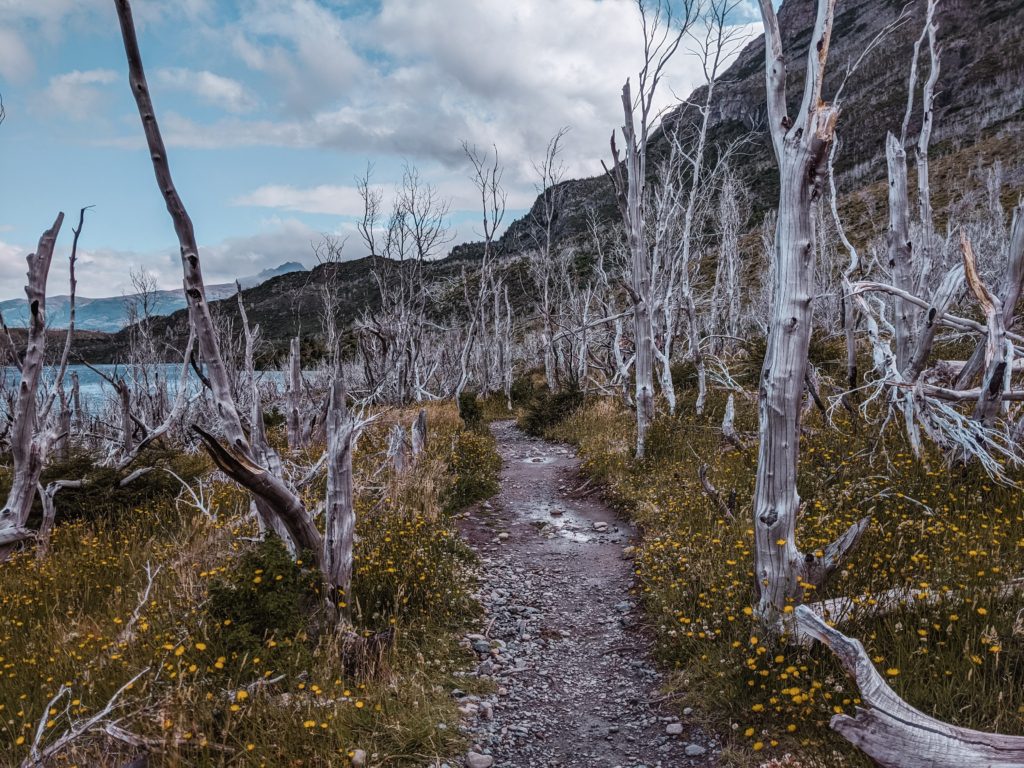
The good news is that there’s zero technical climbing on the W Trek. The trek is on a mix of well-maintained paths, packed mud, loose gravel, and stones. There are some parts where you may need to navigate wet rocks, low streams, and cable bridges, but there’s nothing overly challenging on the route itself in terms of terrain.
7. Is the W Trek difficult?
The W Trek multi-day hike isn’t a cinch, but it’s also not on the same level of difficulty as other world-famous hikes such as Mount Kilimanjaro or Everest Base Camp . So how hard is the W Trek in Patagonia’s Torres del Paine? Well, there’s no technical expertise needed and you don’t have to acclimatize. The trail is well-marked and maintained for a majority of the route. I’d say one of the the biggest challenges is the unpredictable weather, which can change from snow to heavy rain to blazing sun in just a matter of hours. In addition, Torres del Paine is known for its extreme winds which can reach speeds of up to 100 mph (161 kph).
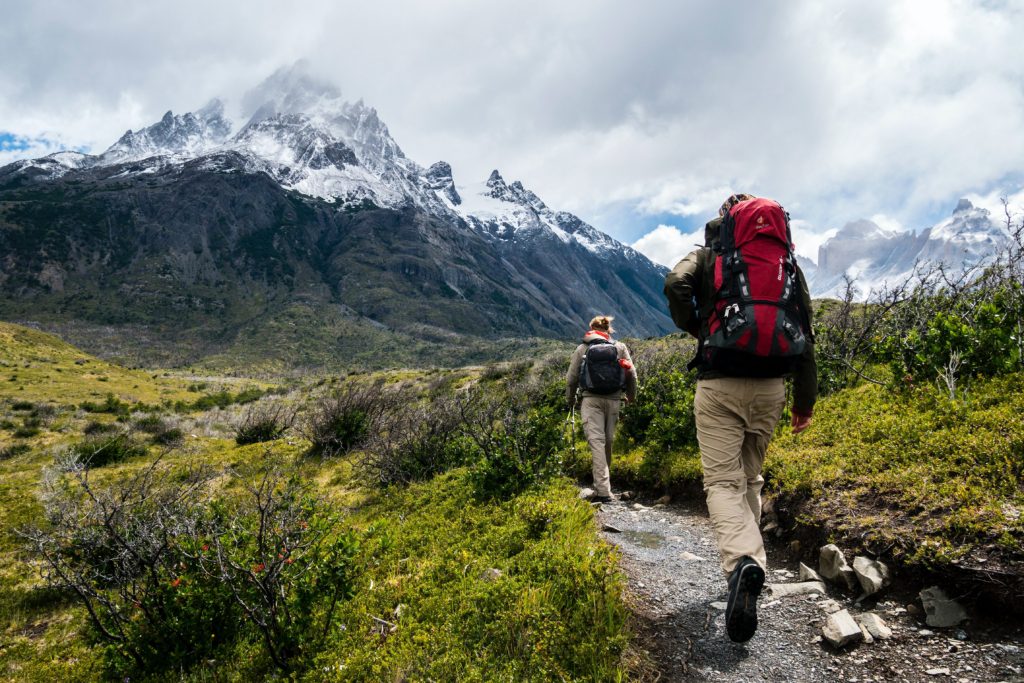
The W Trek also packs a lot of walking into single days. For comparison, you are asked to hike between 6-8 miles (9.7-12.9 kilometers) per day on average on an Inca Trail tour. However, on the W Trek, you can expect to hike between 7.5 miles (12 kilometers) and 15 miles (24 kilometers) per day depending on how your adventure is structured. I highly recommend a training plan that builds in long distances (over 10 miles / 16 kilometers per day) and consecutive day hikes.
8. Preparation for the W Trek
We’ve already mentioned how the W Trek isn’t up there with Kilimanjaro and other high-altitude expeditions. Most trekkers of decent fitness level should be able to complete it with a solid training schedule beforehand. That said, the days are long on this one – some pack in up to 10 hours of hiking across tough terrain that can get tougher when the weather changes.
For that reason, we’d say a good program of regular exercise starting around 12 weeks prior to the start of your hike is always a good idea. Begin with local walks of 2-3 hours and short runs of just a few miles each. By six weeks out, you should be able to up your runs to three miles and complete a hike of 7-9 continuous hours. With three weeks to go, try to double your number of runs and do weekly hikes of at least 7-9 hours each. I also recommend that you begin doing consecutive day hikes at this time and ensure you are wearing a pack with the same weight you will bring with you on the trek. Resistance training can also work wonders for muscle fatigue and recovery, something that’s often an issue with such long days on the W Trek.
9. When is the best time of year to do the W Trek?
The seasons can be very unpredictable this far south in Patagonia. As a general rule, summer (November to March) is better for trekking, making it the peak season for hiking the W Trek in Torres del Paine. That’s because it’s warmer, with midsummer temperatures typically between 43-63°F (6-17°C), and there’s less rain (average of just 4 millimeters each month).
However, it’s not totally clear cut that the summer season is the best time to hike the W Trek. It all depends on your preference and the type of experience you’re looking for. There are way more people hiking the trail so the W Trek lookout points are busier and the mountain huts more expensive. Additionally, high summer winds can spoil a hike in Patagonia so you’ll have to be ready to change plans if the gusts get up to over 80 mph (130 kph) or so.

Autumn (April is a good alternative to the main summer trekking season. The upsides include fewer hikers and beautiful colors on the Patagonian Steppe – think pale yellows, deep oranges, and muted browns rolling out from the base of the mountains. However, there is usually more rainfall and the temperatures at night get low. Keep in mind that the main W Trek route closes on April 30th each year.
Spring (September to November) is another popular time to hike the W Trek but this season can bring the risk of snowfall. This means you’ll need to pack extra thermals. The W Trek route typically opens in mid-September each year. However, a few of the huts are closed until October 1. So, if you want to do the Trek in September you will need to do an amended version.
Winter (May to August) a majority of the huts and campsites along the standard W Trek route are mainly closed due weather conditions and snowfall. However, it is possible to do three of the four segments of the W Trek as out and back hikes by staying in two of the refugios that are open during the Winter months. Also, please note that there are fixed group dates for these excursions and the treks are guided by a professional mountain guide which is required by the National Park for safety reasons.
We offer trips all year long on the W Trek. Click HERE to learn more.
10. What do I need to pack for the W Trek in Patagonia?
What you pack for your W Trek trip will depend on when you decide to visit Torres del Paine to hike the trail, but try packing as light as possible. Travelers in the high season (summer and autumn) won’t need as much thermal gear as those visiting in the low season (spring and winter), when there’s a bigger risk of snow and sub-zero temperatures. That said, every hiker on the W Trek should have a good thermal under-layer, a fleece, and waterproof outer layers for the upper and lower parts of your body . The weather can be pretty wild and unpredictable, even in the height of summer, so it’s a good idea to bring multiple layers to wear .
When it comes to trekking equipment, there are some must-haves: sturdy walking boots, a good set of trekking poles, a high-volume and lightweight water bottle and/or reservoir, sunscreen, and a reliable waterproof trekking backpack . Depending on how you choose to do the trek, you may also need camping equipment and a sleeping bag. Note: when booking with us, sleeping bags will be ready for you in both the mountain hut and/or tent at each sector. And depending on the trip package that you book, you may receive a ‘welcome kit’ containing a sleeping bag liner, microfiber towel, water bottle, and map.
Also, drinking water is not treated at huts/campsites along the trail. Many hikers feel comfortable drinking the water along the route (including from rivers or streams). But, if you prefer additional protection and peace of mind, you can certainly bring your own portable water filter (e.g. Katadyn BeFree, LifeStraw, Grayl, Sawyer Squeeze, etc.). Some of these systems only weigh a few ounces!
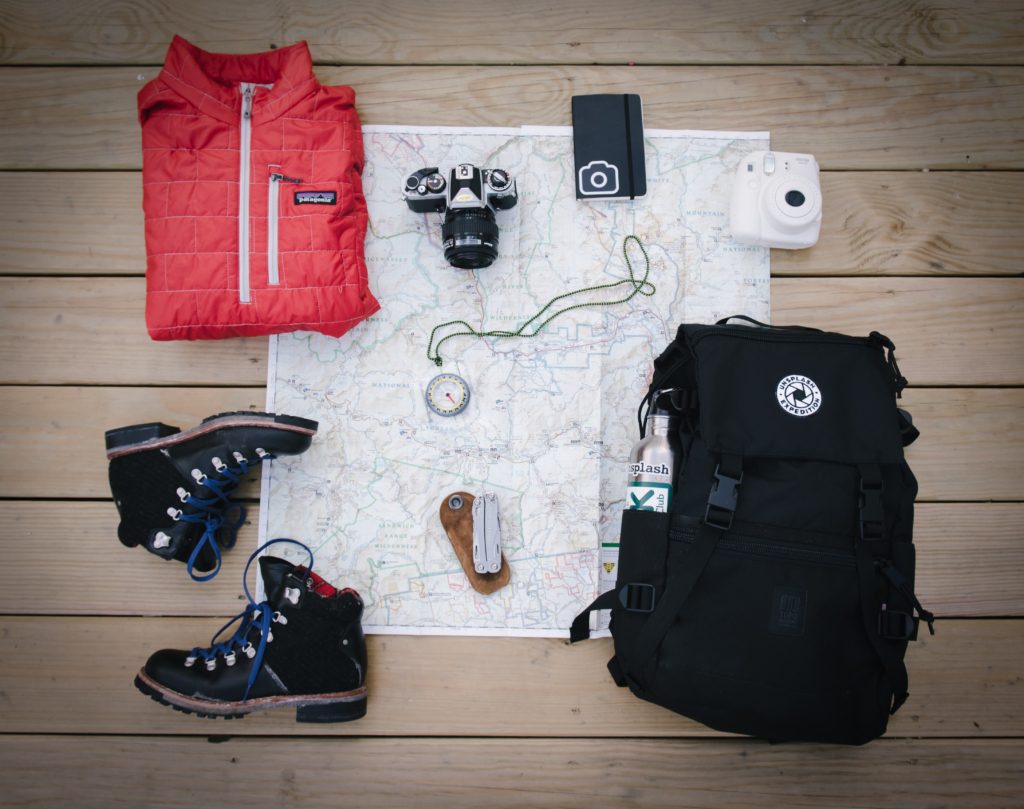
Some hikers will go for a porter service on their W Trek trip to help carry baggage and equipment. That’s an optional extra with most providers. A porter on the W Trek will typically carry 33 pounds (15 kilograms) of your clothing and gear. Keep in mind that if you do decide to get a porter, you won’t need one on the Base Towers hike as this day is an out and back trek. In addition, if you are doing the 4-day trek from East to West you also won’t need a porter for the last day as you can pay a small fee to leave your baggage at Paine Grande while you trek to Grey.
My team at The Explorer’s Passage makes it easy for trekkers who plan their travels with us. Because the requirements for the W Trek change with the seasons and the sort of trek you go for, we can provide our guests with a full packing list so they’re fully prepared – just ask us !
11. Accommodations: where to stay on the W Trek
There are a number of options when it comes to accommodations on the W Trek. Depending on the sector you are staying in, the options include standard camping, premium camping, cabanas, refugios / mountain huts, and hotels. I’m going to describe each of these options in greater detail below:
Standard Campsites
For the most part, the campsites on the W Trek are of very high quality, at least for true backcountry camps. They’re well equipped with all the things that trekkers might need, and even have extras that you could only dream of in the far-flung basecamps of other major trails. Take the site at Paine Grande, for instance: it has hot showers during designated times each day, bathrooms, access to the restaurant and bar at Refugio Paine Grande, and even pay-as-you-go Wi-Fi. At the various campsites, some of the tents are set up on the ground and others are set up on wooden platforms.
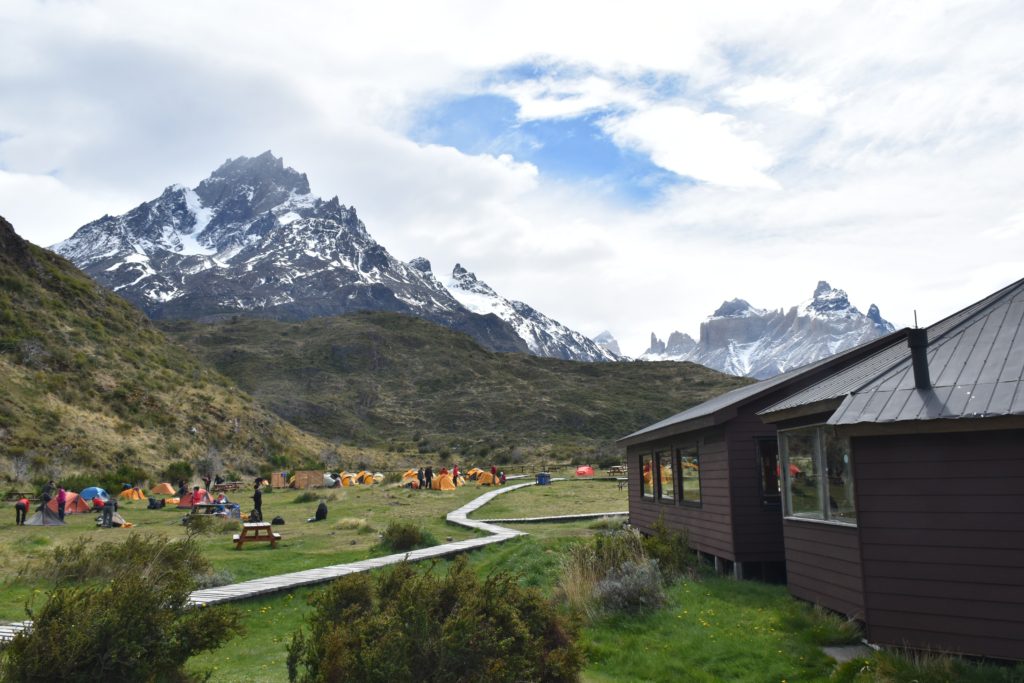
Premium Camping
A few of the campsites on the W Trek circuit have a newer concept known as premium camping, which consists of a raised tent approximately 6 feet (1.8 meters) off the ground and has a ladder for access. The tents in premium camping are larger and sturdier than in standard camping, and there is no need for mattress pads as the entire base floor of the tent consists of a ~3-inch (7.6-millimeter) comfortable pad. Currently, premium camping is currently available at Chileno and Francés Sectors but there are plans to bring this concept to more sectors (such as Central Sector) on the W Trek in the coming years.

Cabanas (cabins)
At Cuernos Sector there is a wonderful accommodation option known as cabanas (cabins). They are mini villas that dot the landscape around the main refugio building and are private accommodations that can fit 1-3 people. There are bathrooms and showers that are shared by all guests who are staying in the cabanas.
Most of our guests doing the East to West W Trek hike directly from Central Sector to Francés Sector on Day 2 of their hike, which is ~11.5 miles (18.5 kilometers). Chileno is located ~9.5 miles (15.3 kilometers) from Central Sector and is 2 miles (3.2 kilometers) short of Francés Sector. So, if you would like private indoor accommodations, then you can sleep in a cabana (cabin) at Cuernos for the evening. Just note that if you do choose to sleep at Cuernos on Day 2 of your trek then it will tack on ~2 miles (3.2 kilometers) to your trip on Day 3 of your hike.
Refugios / Mountain Huts
Refugio is the local name for a refuge or shelter that’s essentially a mountain hut or lodge that offers dorm-style (bunk beds) accommodations along the W Trek. Refugios are rustic but comfy, and typically have warm communal areas with dining halls where you can meet and mingle with other trekkers. The bathrooms and showers at the refugios are communal.
Some of the refugios have bar areas, like Central and Paine Grande sectors. Many of the refugios have small shops where you can purchase an assortment of goods such as water, soda, energy bars, eggs, noodles, toothpaste, toothbrush, and clothing. All of the main refugios on the W Circuit have Wi-Fi for an additional fee as well. Depending on which sector you are in, the number of people per room will differ. The room size on the W Circuit ranges from 4-8 people.
Hotels
On the standard W Trek route there is only one hotel option, Hotel Las Torres, which is located in the Central Sector. Hotel Las Torres is a very nice 4-star hotel located approximately 100 yards (nearly a meter) from the refugio and camping area at Central sector.
If you are doing the East to West Route, then you will most likely be spending two nights in the Central Sector as your first day of hiking is an out and back trek. We have many guests who stay at Hotel Las Torres for the first two nights of their journey, then do either camping or huts for the remainder of the trip.
Please note that EcoCamp is located in the Central Sector. While not a traditional hotel, EcoCamp consists of luxury domes of different sizes and amenities. We have many guests that stay in EcoCamp for a few nights as part of their W Trek journey.

If you would prefer to stay in a hotel every night while in Torres del Paine, there are six wonderful hotels that offer all-inclusive programs for their guests. Please note: If you stay in one of these hotels you won’t be able to do the full W Trek. However, you will be able to do some of the W Trek segment hikes as guided day trips with vehicle / boat support to the trail heads. At the all-inclusive hotels in Torres del Paine, you get to choose between a range of guided hikes and adventure activities, many of which are included as part of your package.
Below is a list of the main all-inclusive hotel properties in Torres del Paine:
Hotel Las Torres 4-Star Hotel Located in the Central Sector, 100 yards (~1 meter) from the Central refugio and camping
Hotel Lago Grey 4-Star Hotel Located in between the south shore of Grey Lake and Lake Pehoé
Explora Lodge 5-Star Hotel Located near the southern shores of Lake Pehoé
EcoCamp Patagonia 5-Star Domes Located on a hilltop overlooking the Central Sector
Tierra Patagonia Hotel & Spa 5-Star Hotel Located in on the Eastern shore of Lake Sarmiento de Gamboa
Awasi Patagonia 5+ Star Hotel with 14 private villas Located East of the Central Sector in a private reserve
The W Trek is punctuated with a host of rest areas and the conventional plan of the hike makes use of seven of these Sectors along the way. Let’s take a closer look at each rest site:
- Central Sector – The Central Sector is the base of operations on the eastern side of the W Trek. It’s often used as the starting point or ending point of the entire W Trek journey and is one of the most developed sites in Torres del Paine.
Accommodations at Central Sector include camping, two mountain huts/refugios (Central Refugio & Torre), EcoCamp Dome, and Hotel Las Torres. In the camping area, there is standard camping, which has hot showers, bathrooms, and designated picnic tables. It is expected that premium camping will be added in the near future in the Central Sector. The refugio in the Central Sector has a large common area that has a very fun and social atmosphere so you can meet people from all across the globe. It has 6-person hut rooms, communal bathrooms and showers, and a restaurant and bar area.
Hotel Las Torres is situated 100 yards (~1 meter) from the camping and refugio in the direction of the Las Torres Base Hike. The EcoCamp domes are situated on a hilltop overlooking the entire Central Sector.
- Chileno – Chileno is wedged into the narrow valley that runs north to the base of Las Torres themselves. It-s a pit stop before or after seeing arguably the greatest vista on the W Trek and the location is one to match – scenes of snow-capped peaks and cascading pine woods dominate on both sides. The site is much like the Central Sector, with standard camping and a refugio. The refugio has 6-person hut rooms. Chileno has premium camping as well. There are communal bathrooms, showers, and a small restaurant. It’s a quality lodge with a fantastic outdoor area by a roaring river.
- Los Cuernos – You’ll be greeted with sweeping 180-degree views of glimmering Lake Nordenskjöld when you enter Cuernos sector. It is set on a soft slope right under the twisted tops of Los Cuernos massif itself. In true Patagonia style, it’s well appointed with standard camping, a refugio, and a series of 20 private cabanas (cabins) that are situated in the beautiful terrain throughout the sector. The refugio has 6-person hut rooms. Cuernos has an onsite bar, restaurant, and a snack kiosk, as well as communal bathrooms and showers, and Wi-Fi.
- Francés – Remember when we said that the French Valley was one of our top highlights on the whole W Trek? Well…the Francés Sector is the gateway to it all. Just 2 miles (3.2 kilometers) to the west of Los Cuernos, it’s an alternative midway option for hikers wanting to enter that secret Shangri-La of the Andes. The site has standard camping, premium camping, and 8-person dome huts. It’s also just as comfy as the other sites listed here, complete with hot showers, bathrooms, a restaurant, shop, and wifi.
- Italiano – This campground on the main course of the W Trek is a free-to-camp alternative at the base of the French Valley. Because it’s free, don’t expect the same amenities and frills as in the sites on the W Circuit. The basics are all taken care of: Running water, toilets, and a cooking shelter. We rarely have guests stay at this site as it is very basic, but our trekkers primarily use it as a location to drop their bags off for the up-and-back excursion into the French Valley.
- Paine Grande – There’s a pretty slick lodge at the Paine Grande sector on the edge of Lake Pehoé that some trekkers use as the first point of call on the W Trek if doing the West to East Route. The site has a large standard camping site with space for over 200 campers and 4- or 6-person hut rooms. There are communal bathrooms, showers, a shop with an extensive assortment of items, and a large restaurant area. Don’t miss the onsite Paine Grande Bar here – it’s a chance for a pre- or post-trek drink overlooking the serrated Paine Grande Massif.
- Grey – Grey sector marks the western end of the W Trek and, as such, is an important starting point, not to mention connecting point for those looking to join with the larger O Trek. The lodge here is one of the best on the trail. It’s got 60 beds in 4- and 6-person rooms, and a cozy restaurant and bar area to enjoy after dark. The campground has room for 120 people in standard camping and offers a covered cooking space and shared toilets. There’s paid Wi-Fi if you need it as well.
One important item to note is that if your group size is below the minimum room s ize in the refugios, then other travelers will fill the empty spots on the rooms. Guests are not permitted to purchase the extra room spaces to create a private room.
Since the sectors are run by three different companies and itineraries often require a separate reservation, booking accommodations for the W Trek can be a chore. It doesn’t have to be, though! The Explorer’s Passage makes visiting Torres del Paine easy. Book your trip to Patagonia with us and let us take the stress out of planning so you can focus on hiking the W Trek. Also, with us, all meals are included from the start of the hike to the finish.
12. W Trek permits
In planning this journey, you may ask yourself “Do I need a permit for the W Trek?” Although you’ll need an entrance ticket to enter Torres del Paine National Park, there’s no official permit system for the W Trek as there is for the classic Inca Trail route to Machu Picchu. There are, however, capacity limitations on the number of trekkers that are permitted to stay in the park’s campsites, huts, cabanas (cabins), and hotels. That acts as a sort of de facto limit on the number of people who can do the trek, governed mainly by who was quick enough to book their accommodations.
My advice? Start planning early to avoid disappointment. The huts, campsites, and cabanas (cabins) go on sale in May and June each year for the upcoming trekking season which typically goes from September 8 to April 30. Spaces in Central, Chileno, Cuernos, and Francés Sectors are typically released in early to mid May. Spaces for Paine Grande and Grey sectors are typically released in early to mid June. I typically recommend that our guests try to get their bookings in before the first release dates to ensure they get their desired spots.
If you would like help with this process, you can plan to travel with us and our experienced team will take care of all the important details for you, including campsite, hut, cabana (cabin), and hotel bookings, meals, National Park permits, transfers, gear rentals, and much more.
13. Getting to the start of the W Trek
Most people start the W Trek hike with an organized bus transfer from the city of Puerto Natales to Torres del Paine National Park.
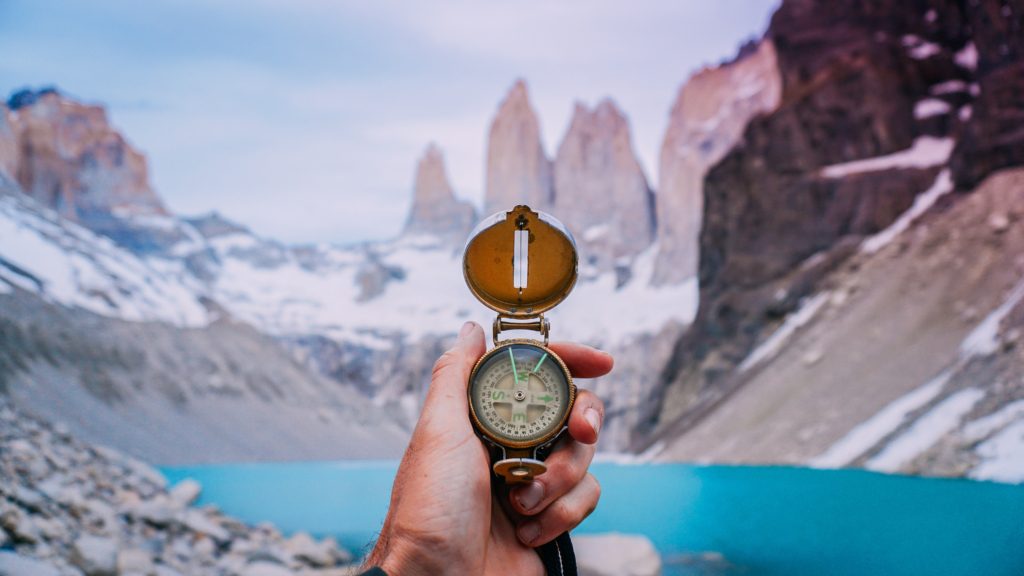
Your journey to the trailhead of the W Trek will depend on which direction you will be hiking it: either from East-to-West, or vice versa. At The Explorer’s Passage, we recommend East-to-West, primarily because you get the hardest day of hiking (to and from Las Torres Lookout Point) out of the way on the first full day, when your legs are still fresh. However, some prefer to save the view of these granite towers as a reward for the final day, so they start the journey in the West and head East. As with all adventures, there are pros and cons to each option!
- To hike the W Trek from East to West, you will get off the bus at the National Park office at Laguna Amarga, then take a connecting bus to the Welcome Center at Central Sector.
- To hike the W Trek from West to East, you can get off at the Pudeto stop and catch the catamaran across Lake Pehoé to the refugio at Paine Grande. There are boat departures throughout the day, but be sure to check the schedule before you depart because they can change at short notice.
All of the above trips can be done from Punta Arenas , but expect transfer times to the trailhead to be in the region of five to six hours, instead of a 2-3 hour bus ride from Puerto Natales.
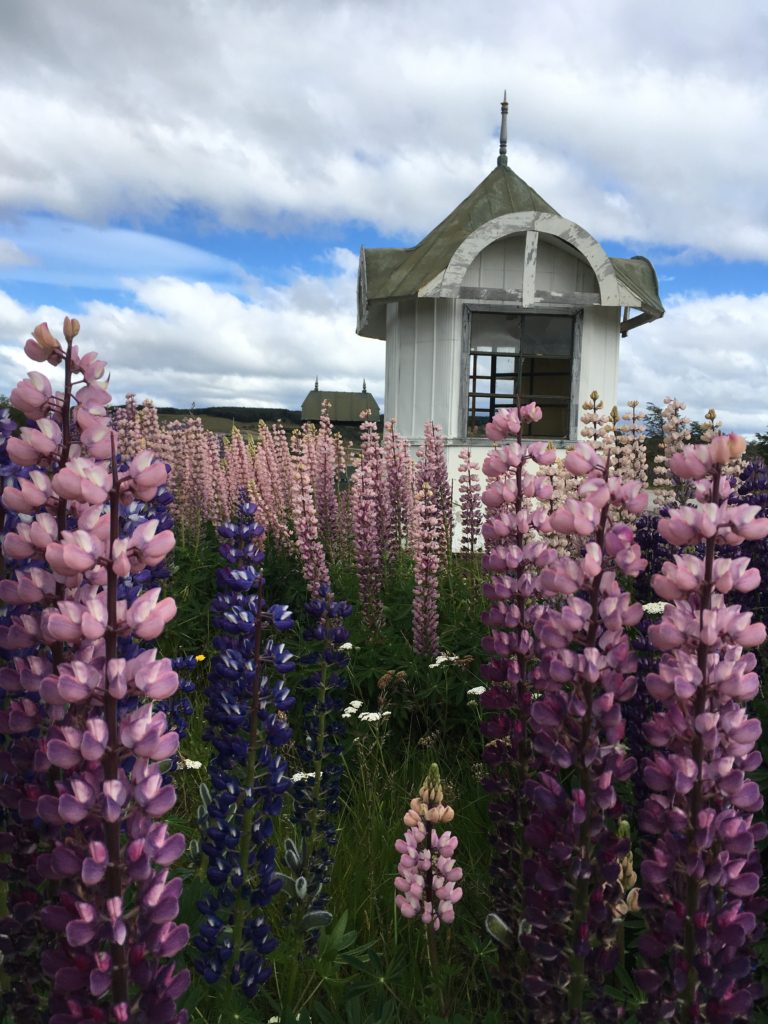
14. Sample W Trek 4-Day Hike itinerary
As noted in the prior section, at The Explorer’s Passage we recommend hiking the W Trek from East to West. Below you will find a sample itinerary for this option (visit our W Trek trip page to download a full detailed itinerary):
- Day 1: Puerto Natales to Torres del Paine National Park – After breakfast at your hotel in Puerto Natales, you will have the morning to explore the town a bit more. Later, you will travel by bus to Torres del Paine National Park. Enjoy dinner in the Central Sector as the excitement builds for the days ahead, where you will have the rare privilege of exploring one of the planet’s most striking national parks!
- Day 2: First Day of W Trek (Las Torres Lookout) – Today, you will start early and begin your hike of the W Trek – one of South America’s most famous trails. Today’s destination is the iconic Las Torres Lookout Point! During the first stretch, you will walk through the pampa, cross the Ascencio River, and then hike up to Los Vientos Mountain Pass, where you will enjoy amazing views of the valley and lakes. You will continue your journey to the Chileno Mountain Refuge, and then go deep into a lenga beech forest up to La Morrena, where the hardest part of the day’s hike begins. From there, you will follow a rock trail to the spectacular Las Torres Base Lookout Point. Later, you will return to the Central Sector to have dinner and rest.
- Day 3: Second Day of W Trek (Nordenskjöld Lake & Francés Sector) – Today is your 2nd full day of hiking the W Trek. You will walk along the shores of Nordenskjöld Lake, below the peaks of Almirante Nieto and the striking Cuernos del Paine. During the hike, you will enjoy magnificent views of Los Cuernos, hanging glaciers, lakes, and the abundant vegetation and wildlife. You will have dinner and sleep in the Francés Sector.
- Day 4: Third Day of W Trek (French Valley) – This day features one of the most memorable portions of the W Trek: the Valle Francés. You will start early with a light hike to the Italiano Campsite. From there, you will progress through the woods up the Francés River Valley. You will continue to the Francés Lookout Point, where you will enjoy one of the most breathtaking views of the trek: the view of the valley framed by the Paine Grande, Catedral, Hoja, Máscara, Espada, Aleta de Tiburón, and Cuerno del Norte mountains. The landscape will undoubtedly leave you speechless! Later, you will begin the descent to the Paine Grande Sector for the evening.
- Note: we can arrange optional add-on excursions in the Grey Glacier area if you are interested: kayaking (~3 hour activity) and/or ice hiking (~5 hour activity). These activities will require an additional day to your itinerary, as you would need to sleep in Grey Sector for the evening.
If you prefer to hike the W Trek from West to East, culminating with an up-close encounter with the iconic towers themselves, here is a sample itinerary:
- Day 1: Puerto Natales to Torres del Paine National Park – You wake up early in Puerto Natales for an early transfer to Torres del Paine National Park and then take a boat boat navigation across Lake Pehoe to the Paine Grande Sector. From there, you begin hiking North to Grey Sector. This is your first chance to catch a glimpse of the famous Torres massif, with a broadside of the twisted tops of the Cerro Paine Grande. Once you reach Grey Sector, you break for lunch and turnaround to hike back to Paine Grande Sector. The W Trek hike starts by skirting the milky waters of Grey Lake going southwards. This is right beneath the Cerro Paine Grande and the Paine Horns, which are some of the most famous mountain summits in South America. I’d recommend taking some time to visit the Mirador Glaciar Grey on both the walk to Grey Sector and again back to Paine Grande. This location has some of the best views of the entire W Trek. If you have time for 5 days of hiking in Torres del Paine, you can lengthen your itinerary and stay in Grey Sector (huts or camping) for one evening. This would also give you the ability to either participate in either or both the kayaking or ice trek activities.
- Day 2: Second Day of W Trek (Paine Grande to French Valley) – For many, this day is the highlight of the whole W Trek. The path bends eastwards and north from your second campsite, taking you deep into the heart of the Torres del Paine National Park. The first step is the trek along the south side of the massif to the Italiano campsite. You can leave your main bags there for the expedition into the French Valley. Then, take the north spur into that famous cleft in the Andes, which soon becomes a lush land of twisted pine trees and meadows beneath the hanging French Glacier. If the group is walking well, the aim will be the jaw-dropping Mirador Británico at the end of the valley, all before a return to the Frances Sector hut and campsite complex.
- Day 3: Third Day of W Trek (Nordenskjöld Lake and Francés Sector) – You’re now back to skirting the southern edge of the Torres del Paine. Head east from Frances Sector and join the path that circles Nordenskjöld Lake (Lago Nordenskjöld). It will take much of the day to link up to your next W Trek overnight spot (the Central Sector), but there are some fantastic lookouts along the way. They’ll put the high peaks of the Torres just behind and the rolling tundra of Chilean Patagonia in front, not to mention the placid waters of numerous alpine waters in the foreground.
- Day 4: Fourth Day of W Trek (Las Torres Lookout) – After an early morning start, you will begin a tough uphill ascent through the craggy easternmost valley of the Torres massif. It’s steep but opens the way to the Mirador Las Torres, which is surely one of the most unforgettable viewpoints on the planet! There, you’ll see the three jagged peaks that give this region its name and reputation, jutting straight up from pearly blue waters. You should finish with photos around mid-morning, because you’ll be descending back down to the Central Sector and then to Laguna Amarga (National Park Station) to board a bus back south to Puerto Natales.
These sample itineraries are just a start and the opportunities are endless. Regardless of whether you’re traveling solo or in a group of any size, our expert Adventure Consultants will craft extraordinary itineraries for your private travel needs. See how to get the ball rolling on your private travel dreams here .
15. The 5-Day W Trek Circuit
The W Trek circuit is often completed in four full days of trekking. However, approximately 50% of our travelers elect to do it in five days and spend a night at the Grey Mountain Refuge by Grey Glacier, staying in either camping or in huts.
With this 5-day hike option, the typical fourth day of the standard 4-Day route’s 15-mile (24-kilometer) hike is essentially split in half and shared between Days 4 and 5: from Paine Grande Sector to Grey Sector on the fourth day and then back to Paine Grande Sector the next day to catch the catamaran across Lake Pehoé.
Trekkers who select the 5-day option and spend a night in Grey Sector also have the opportunity to take an ice trekking excursion on Grey Glacier (with crampons and ice axes) or go kayaking in Grey Lake, with amazing views of the massive glacier. Both of these adventure activities are offered multiple times per day, and are a great way to complement a trek in Torres del Paine. In addition, if you stay at Grey Sector for one evening then you have an opportunity to explore the famous “Three Bridges” which are massive suspension bridges that begin approximately 1 mile north of Grey Sector.
16. W Trek Express
Most experts agree that the W Trek is the single most incredible trek in the whole of Patagonia, both on the Argentinian and Chilean sides of the border. However, not all travelers have the time to complete the entire adventure, which is why a more condensed version of the W Trek is offered.
Cue the W Trek Express route. This cuts down your travel time by one day but still ensures you get to see all the legendary parts. Your travel from Puerto Natales to Torres del Paine will take place in the morning on the same day that you begin trekking. It runs East to West, starting with the dramatic outlook over the Torres del Paine on an up-and-back route. Day two skirts the top end of Nordenskjöld Lake beneath the amazing Los Cuernos peaks. Day three is another there-and-back hike into the heart of the French Valley before a final day that whisks you across Lake Pehoé to be collected.
The whole Express W Trek can be self-guided or guided and done with hut accommodation or camping.
17. Alternative routes to the W Trek (O Circuit and Q Circuit)
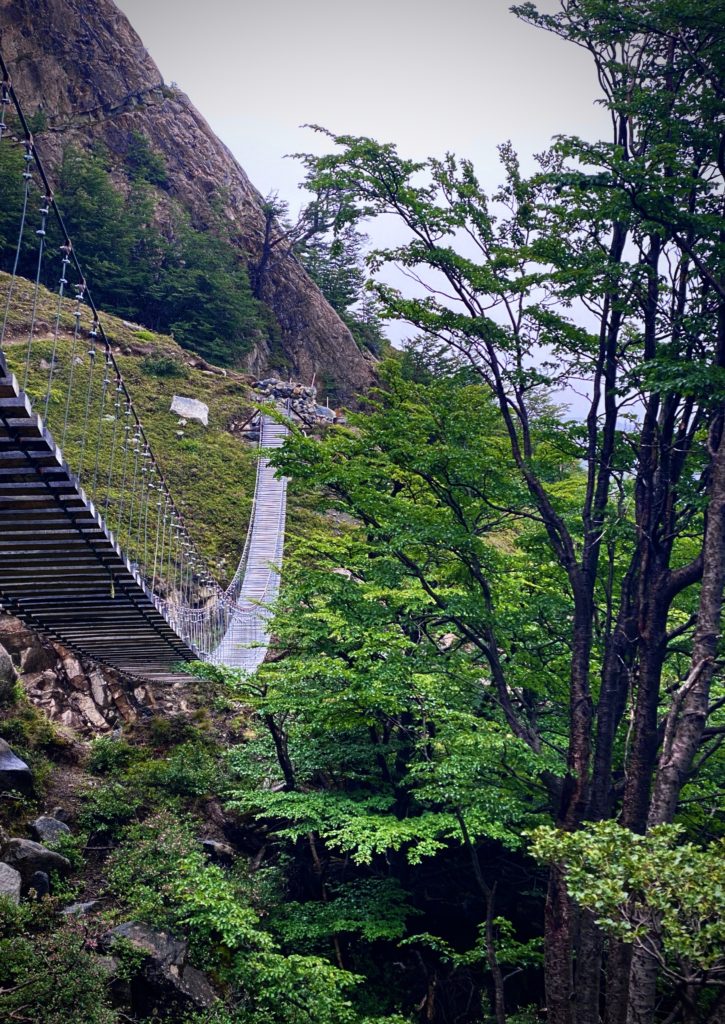
The W Trek may be the most popular trail in Torres del Paine but it certainly isn’t the only walking route that will let you experience this awesome corner of Chilean Patagonia. Usually open from November to April, there are also two route extensions that take you counterclockwise on the trail but promise to whisk you even higher into the clouds as you explore the mountains and glaciers. They are:
- The O Circuit (8-10 days) – Also known as the Paine Circuit, the O trek is the full circuit around the Cordillera del Paine mountains within the national park and includes the W route. It’s definitely a tougher and longer route, but its lesser traveled 74 miles (119 kilometers) of pure Patagonian wilderness will take you to the heights of the John Gardner Pass at about 4,000 feet (1,219 meters) above sea level. The O Circuit trail highlights you’ll see include the reflective Lago Paine, a mesmerizingly turquoise lake, and the mountains from the northern section of the park.
- The Q Circuit (9-11 days) – The Q Circuit is the longer version of the O Circuit. The Q route includes one extra day of trekking past Lake Pehoé. This one’s for the most dedicated of trekkers who have the most time (and money) to spare.
If you have more time to spare and are up for an extended trek, definitely try out one of the treks above.
18. Where to go after the W Trek
You’ve got a few options for onward travel once you’ve finished the W Trek. The most obvious and popular place that hikers return to is Puerto Natales. Many trek packages even include a drop-off back in that town, which has become a bit of a buzzy outdoors hub in recent years, touting craft beer emporiums and wine tasting establishments. Puerto Natales also happens to be the best base for launching boat trips through the stunning fjords of Chilean Patagonia, including to the far-flung Tierra del Fuego for penguin watching and the Serrano Glacier a little closer by.
You might also want to use this opportunity to cross over into Argentinian Patagonia. The W Trek takes you very close to the border and there are regular buses that make the trip up to El Calafate (6 hours) or you could do a private transfer to El Chaltén (6 hours) from Puerto Natales. Both locations are top options for continuing your adventures through the Andes, opening up hikes under the Fitz Roy (arguably the most famous mountain in Argentina) and visits to the Perito Moreno Glacier (a UNESCO site that showcases huge chunks of ice peeling off a glacier tongue).

19. Visas for Chile
There’s a long list of 90 countries that get visa-free access to Chile, including virtually all of the European Union, the United Kingdom, and the United States. That means administrative work at the border or prior to departure shouldn’t be too much of an issue if you’ve got your heart set on the W Trek. Notable exceptions include Australian citizens, who are no longer charged a hefty reciprocity fee when they enter but do need to go through the process of pre-applying for a single- or multiple-entry visa. All travelers should have at least six months’ validity left on their passport before traveling.
So there you have it, a comprehensive guide to 19 things you should know before hiking the W Trek in Chilean Patagonia! I hope this post has provided you with the necessary information to help you begin planning a truly memorable adventure tour to Chile. If you feel inspired, here are the other best places to visit in Chile .

This guide has covered a lot, but you may have more questions on hiking the W Trek in Torres del Paine. If so, my experienced team here at The Explorer’s Passage would love to hear from you so please contact us and let’s chat .
We have been running trips and treks to Chile for 10 years. We pride ourselves on delivering extraordinary tours based on travelers’ needs and are humbled by our guests’ testimonials . In fact, our dedication has earned us a 5-star rating on Tripadvisor , and awards by Travel+Leisure Magazine and Newsweek. Check us out and discover why so many travelers worldwide choose us . My team and I would love for you to join us on the W Trek or any of our other adventures !
I hope to go exploring with you soon!
Jeff Bonaldi Founder & CEO The Explorer’s Passage
About Jeff Bonaldi
Jeff Bonaldi is the Founder and CEO of The Explorer’s Passage, a premier adventure travel company. His mission is to provide travelers with the opportunity to transform their lives and the planet through the power of adventure.
Learn more about Jeff’s story and his company HERE .
Share This Amazing Location!
Related posts.
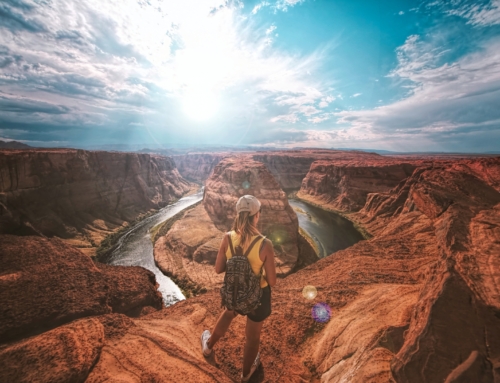
Expert Guide to Solo Travel & Top Destinations in 2024

Everest Base Camp Trek – 13 Things to Know for Your Trip in 2024
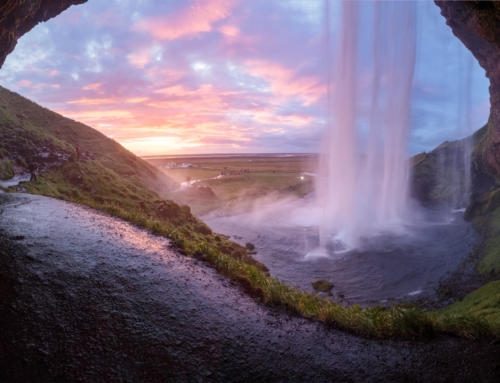
14 Best Places to Visit in Iceland in 2024

14 Things to Know Before You Climb Mount Kilimanjaro in 2024

The Ultimate Guide to Inca Trail Permits for 2024
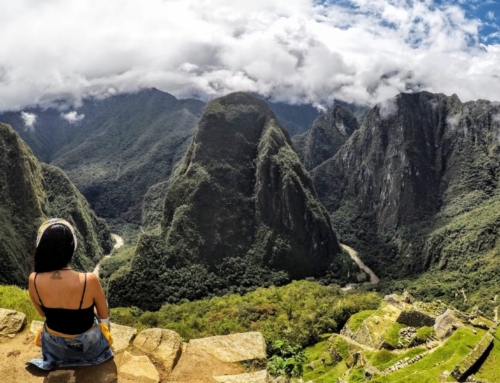
The Classic Inca Trail Route: A Day by Day Guide
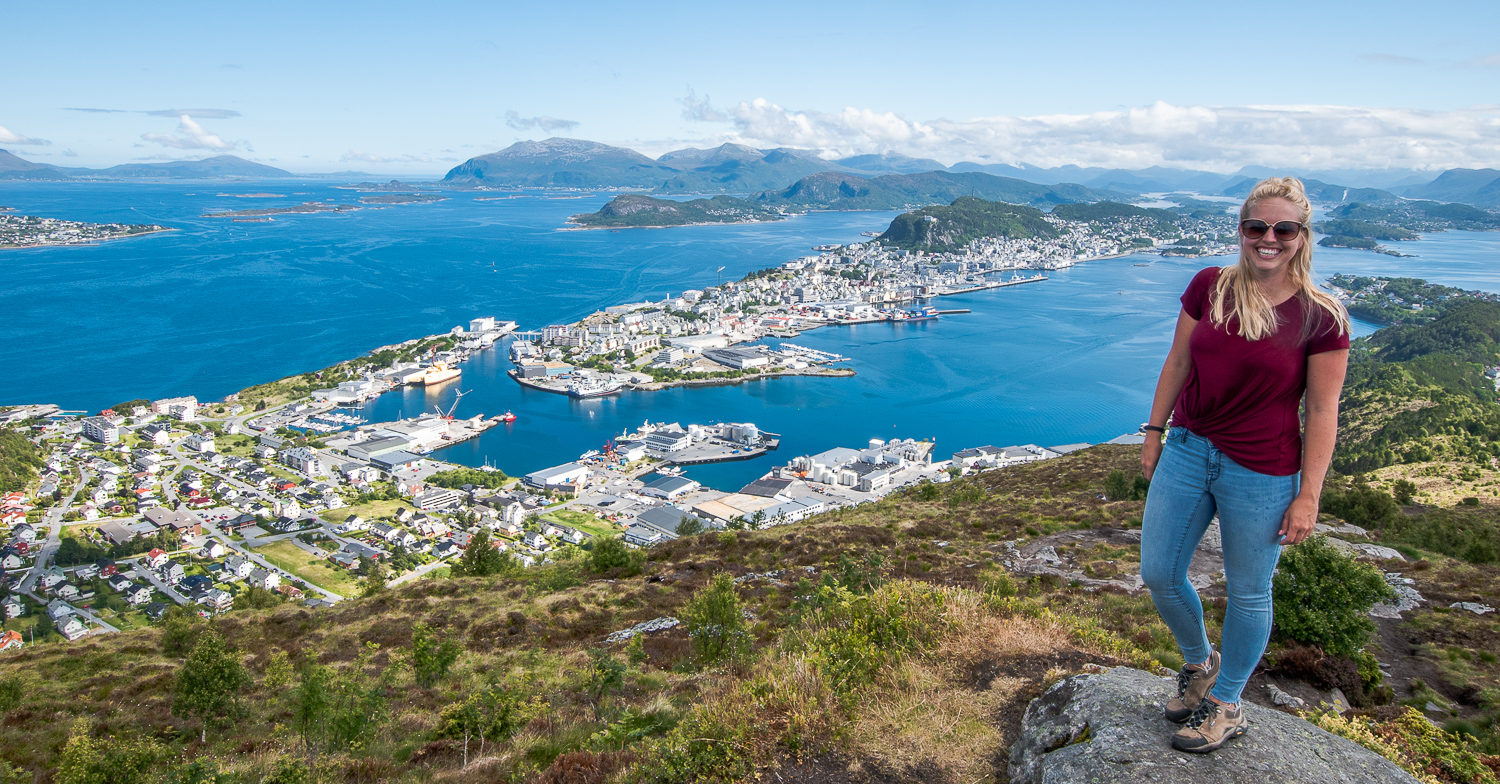
The W Trek Route Itinerary and Complete Guide to Torres Del Paine National Park: 5 Days 4 Nights
The W Trek Route Schedule and Complete Guide to Torres Del Paine National Park: 5 Days 4 Nights- An itinerary for the W Trek Hike in Torres Del Paine in the Patagonia region of Chile. The guide will answer all your questions on how to book, where to stay, what to pack, how difficult and what to expect and see along the W Trek. Deciding if you should camp or stay in refugios along the W Trek? This guide will answer what we did and why.

What is the W Trek?
The W Trek is a 74 to 80 kilometer hike in the Torres Del Paine National Park in the Patagonia region. Torres Del Paine National Park is located in both Chile and Argentina. The W Trek is in the region of the park that is in Chile. It is called the W Trek because the trail takes you in the shape of the letter W. This trek takes you to many iconic views in the Torres Del Paine National Park, blue lakes, mountains, rivers, glaciers, waterfalls and more!
The hike is a through hike, being that you start and end at different points. The W Trek hike can be completed many different ways, but a huge appeal to many (and me) is that food and accommodation is set up along the trail. So it is optional to carry your own shelter and food.
Can You Go Without A Guide?
Yes! It is quite easy to go without a guide. The trail is very clearly marked and very easy to navigate. Some people decide for a guide to help inform them about the park and help set a hiking pace. In the winter months it is actually required to have a guide. But if you are planning for spring, summer or fall no guide is needed.
When To Go?
December to March is the prime season to go for the warmest weather. But with that great weather is crazy winds, so be prepared for any type of weather wherever you go. December and January may be the most crowded months as many people have time off for the holidays, and it is considered Patagonia’s summer months. We went in December and never felt like it was overly crowded. Only for the first day as many people just hike to The Three Towers as a day hike. April will be fall, and might make a spectacular view with warm colors as that is the peak of their fall season.
What To Pack?
We went in December, which is considered their summer. I listed everything we packed and their uses in my What To Pack For The W Trek post. If going in the winter, I would check out this W Trek Winter Packing List as well. Now my list is for using their accommodation and meals, if not using their services sleeping gear and cooking tools are needed as well.

Do I Need To Bring My Own Food?
Again, they do provide this for you at a price. The price seems high but to me I believed it was very worth it as I did not only have to carry my own meals for 5 days but the heavy cooking gear that goes with that. I covered a lot of prices about food on my W Trek Tips and Tricks page. We did bring our own favorite granola bars, jerky sticks and snacks, but besides that that is all we brought. We used their services for breakfast, lunch and dinner, all booked through Chile Nativo .
I did enjoy that you could buy adult beverages and other snacks at the refugios, it was nice to have a cool drink overlooking the mountains and glaciers at the end of a long hiking day.
If I didn’t answer your questions yet I cover a lot of basic W Trek questions in my post FAQS, Tips and Tricks About The W Trek Hike . I have tons more of information there about general questions, how to train, what the food was like, the beds in the refugios, price of drinks and more.
How To Book Accommodations?
Booking the W Trek accommodation is one of the hardest parts of the trail. There are different companies for refugios and campsites, so booking them might mean going to different sites during different times to get your route booked completely. I listed which refugios and their websites in which we stayed below throughout my itinerary.
Refugio and Camping Companies
- Fantastico Sur
Camping and bringing your own food will be the cheapest route but do keep in mind that if you don’t want to camp or bring your own food that the price of food and stay reflects the remote and sought after location. Know that the convenience of not having to carry a tent, bedding food, and cooking equipment comes with a cost.
**You will mostly likely need to book accommodations for before and after the W Trek, most stay in that closest town, Puerto Natales. We wished to stay at the same place in Puerto Natales before and after the hike, but that didn’t work out for us. But we did stay in two great places before and after the W Trek. I would highly recommend both of these!
Hotel Vendaval (great restaurant next door, we ate there twice!)
Factoria Patagonia
Why Book With Chile Nativo?
We traveled over the Christmas and New Years holidays to South America. This is a popular travel time as many people get extra days off work and it is also the peak of the Patagonia summer. This makes booking refugios and camping spots more competitive. Pay attention to when each company opens up their availability if wanting to book, we thought we were on top of it but we missed out. Chile Nativo came to our rescue, we first thought this would be a lot more money booking with a tour company, but when we totaled it out it was a very good deal compared to what we planned on spending. They took care of everything, which made the trip a whole lot easier, less stressful and more enjoyable.
Chile Nativo had everything taken care of. We met with them the day before our hike, where they gave us all of our tickets, all of the transportation, park tickets, refugio, cabin, bunk, and meal tickets. All in order of when we would need them. They gave us times, addresses for transportation and even went through the trek with us giving us some tips of how long it should take, difficulty in certain sections and more.
If you are hesitant and confused on booking the trek yourself definitely reach out to Chile Nativo !
The night before we had a 20 minutes briefing with Chile Nativo, going through our tickets, routes and tips. They also gave us a bagged lunch for the next day’s hike. Suggested that we request an early breakfast from our hotel the next morning as we had a super early start. And was even kind enough to store our luggage to be taken to our hotel when we came back. It could not have been easier.

Our Itinerary for 5 Days 4 Nights
Schedule overview.
Here is a short layout of our trek, read below for more details of the hike.
- Bus Transfer from Puerto Natales to Torres del Paine (2 hour drive)
- Drop your backpacks off at Central Refugio
- Hike 22km round trip to Three towers base and back to Central Refugio to stay the night.
- Hike 4 to 5 hours to Refugio Los Cuernos .
- Hike 5 km to camp Italiano Ranger Station, leave bags
- 1.5 hours to the French Valley lookout, the Britanico Lookout and, then back to Italiano ranger station ( 3-4 hours total)
- Hike with bags to Refugio Paine Grande , 7.5km
- Hike 11 Km with bags to Refugio Grey
- Leave bags, and hike to Glacier Lagoon and the two Hanging Bridges (2-3 hours)
Hike back to stay for the night at Refugio Grey
- Hike back to Refugio Paine Grande , 11 km
- Get on boat, then bus to head back to Puerto Natales
Detailed Schedule
Day 1: three towers, transportation.
Our first day started with our transportation from Puerto Natales to the Torres Del Paine National Park. So getting up early we walked to the Rodoviario Puerto Natales Bus Station to get on our pre booked bus. The bus ride to the park was about 1.5 hours.
Entering Torres Del Paine National Park
There are three steps before you can enter the park. First, is watching a short video on the history, conservation, rules and tips of the park. Second, you will need to sign a waiver. And last, you will need to show them your ticket (already booked with Chile Nativo for us). After that you can take a park bus for about a 15 minutes to get to the official entrance.
This bus ride will drop you off in your last checkpoint. Here you will need to either show them that you have a day pass or show that you have reservations to stay in the park.
Drop Bags Off
The Hike to The Three Towers
Route: Entrance, to the Three Towers, back to Central Refugio
Distance: 22 kilometers round trip (13.7 miles)
Time: 6-7hrs (add in additional time at the top, we took about an hour extra)
Where To Stay
We stayed at Torres Central Refugio .
They also have campsites for tents there. Another close option would be EcoCamp Patagonia or if looking for a more plush option this is the only area with a hotel, Hotel Las Torres . If wanting not as long as a hike for day one you can stay and camp at Chileno Refugio , although the Refugio Torres Central has much nicer accommodations.
The trail will start down a small path and will quickly go straight up. The first part of this trail was probably the most frustrating. It started to incline immediately through a very rocky area. Because this is the most popular part of the hike it was very crowded, lots of tour groups on day trips. This made it very hard to pass on this part of the trail. Once past this section all was good.
The first very scenic section of this hike in the Windy Pass. This area will overlook a river valley. Lots of greenery, flowing river and mountain tops while you go on the trail along the mountain edge.
Chileno Campsite/Refugio
Next pass will be across the river and right by the Chileno Refugio and campsite. This area does have spigots if you need a refill on water, restaurants and restrooms.
Back On The Trail
The next long section will be through some wooded areas. Using bridges to pass over streams. And one last overlook, with restrooms and rest areas before the last final accent.
The Three Towers
One of the hardest parts of the trail is the final accent to The Three Towers, Mirador Las Torres. This takes most people 45 minutes to an hour for this uphill climb. It is very rocky and sometimes even sandy. We hit it at a very sunny part of the day, requiring some water stops and a sunscreen stop.
At last, the final and most famous site in the park. The Three Towers (Mirador Base Las Torres), we spent about an 1- 1.5 hours at the top. Resting our legs, eating our packed lunch, some photos and taking in the view. This place is majestic, I would suggest hiking a little bit more to the side to avoid the crowd and getting close to the water.
The hike back to the refugio is the same on the way up. This is an out and back hike.
It took us about 3.5 hours to hike up, an hour at the top and 3 hours to hike down.
Back at the refugio we showerd, changed our clothes and got a pre dinner drink before a time slot for dinner at Central Refugio. They also had some board and card games we played with new friends after dinner.

Day 2: To Los Cuernos
Route: From Central Refugio to Los Cuernos Cabins/Refugio
Distance: 13 kilometers one-way hike (8 miles)
Time: 4-5 hours
We stayed at Los Cuernos . Stay in cabins if you can they are absolutely so much fun, and peaceful. A nice change from the bunk beds in the refugios. But they are more expensive, so if not wanting to they do have standard refugios bunk beds as well.
They also have camping there. Another close option would be Camping Francés or Camping Italiano , both camping only.
After breakfast we picked up our bags and got on to the trail. Today most of the day will be walking around lake Lago Nordenskjold. It is a pretty mellow trail along the lake. Lake on one side and mountains on the other. This is one of the shorter hikes along the route. Which found itself very nice after one of the hardest days that day before.
You will pass some streams coming off of the mountains, some with bridges and some without.
My favorite part of the hike was nearing the end. It was overcast most of the day but the sun came out and the blue waters really started to shine and be vibrant. And we also spotted our coolest stay of the hike, our cabins nestled in the mountain side.
Los Cuernos
If you can stay here I advise to spend the extra money to stay in these cabins. They were connected to a refugio, so we still got to use the showers, bar and meals as the rest of the hike. After dinner we brought our beers back and watched the sun go down from our little porch. I also heard there is a hot tub for cabin guests but never saw one or looked too much for it.

Day 3: The French Valley
Route: From Los Cuernos to French Vallery (additional hike to Britanico), to Refugio Paine Grande
Distance: 18 kilometers (11.2 miles)
Time: 8-9 hours
We stayed at Refugio Paine Grande .
They also have camping, and you are able to rent tents there. There are not many other refugios or camping options in this area.
Italiano Ranger Station
We tried to get another early start after breakfast this day as we had another long day ahead of us. This day was both mine and my husband’s favorite day of the W Trek. It starts along the lake Lago Nordenskjold, with more magnificent views of the mountains on the other side. Eventually you will cut up through the wood to the ranger station.
You definitely want to leave your large packs when you can, makes hiking sooo much easier.
French Valley
From the Ranger Station the next major stop will be to the French Valley viewpoint. This is a stunning area. But to get here will be a walk along the river weaving in and out the wooded areas. Many stay here for lunch as it is a spectacular view. A 360 degree view of lakes, mountains, rivers and glaciers. This section of the trail should take you 45-60 minutes.
Britanico Lookout
Britanico Lookout is an optional add-on for the W Trek. We decided to take it, because we were there and why not? It will add on a few additional kilometers, or about 40-60 minutes to your hike. But well worth it. And not a very hard hike as well. After passing French Valley you will again walk along some rushing streams and wooded areas. Then through some rocky widespread area where you will be completely surrounded by the famous mountains in Patagonia, you can even spot the back of The Three Towers from here. Another jot through the woods and up to Britanico Lookout. We chose to eat lunch here before it started sprinkling and we headed back down. The return route to the same back to The Italiano Ranger Station to pick up our bags.
To Refugio Paine Grande
The next leg of this hike is 7.5 kilometers to our stay at Refugio Paine Grande for the night. Here we passed some very windy areas along Lake Skottsberg. The wind was so strong it was picking up the wave off of the lake. Take some time along this route to look back at the mountains and scenery, they were some of my favorites views. Eventually the hike will level out and you will see Lago Pehoe super blue lake in the distance will be Paine Grande nestled right next to the lake. Stunning views from this refugio.

Day 4: Glacier Grey
Route: Refugio Paine Grande to to Refugio Grey (additional hike to Hanging Bridges)
Distance: 11 kilometers (6.8 mile), plus optional route to hanging bridges round trip
Time: 4 hours, plus 2-3 hours for hanging bridges
Where to Stay
We stayed at Refugio Grey
They also have camping spots and tents to rent there. No other refugio and camping options along this route.
Route: Refugio Grey to Refugio Paine Grande
Distance: 11 kilometers (6.8 miles)
Time: 4 hours
Today we hiked to our last refugio to stay along the W Trek, Refugio Grey. This refugio is named after the glacier it sits by, Glacier Grey. One of the most massive glaciers that I have seen in my life. We saw a lot in Norway and Iceland too! But this one went as far as we could see.
To get there you will first walk through some meadow areas out of Paine Grande Refugio. This hike will eventually spit you out to complete the rest of the hike mostly on rocky paths along Lake Grey to the glacier.
As you get closer you will see blue glacier pieces floating on the lake, one that have broken off of the glacier.
This hike was fairly easy, we took is kind of slow being our last day. The hardest part of this trail it as you get closer to the glacier one of the section is rocky and runs through a small stream. Use good footing and take it slow and all should be fine to get through it.
Refugio Grey
At last you will arrive at this charming build, Refugio Grey. This is the only stay we did stay in a tent. We were pleased to see that the tents are all ready set up, we just needed to check in and get out bedding. They let you choose your tent, add a tag to it. So we picked ours our set our bags down and went to my favorite part of today’s hike
Glacier Lagoon
This is a very short and easy walk from the refugio, so if anything I highly suggest hiking here. We brought our lunch to enjoy here. Absolutely gorgeous.
Hanging Bridges
The hike to the two hanging bridges should take you 2-3 hours. There are two hanging bridges, I suggest going to the second one and it has much better views over the glacier. Even walking a tad past the second bridge from some designated overlook platforms.
We hurried back to shower and change before dinner. Today was our last day on the trail, so we made sure we got a few drinks overlooking the mountains, played some games and chatted with new friends. Definitely a great last night on the trail.

Day 5: Hike to Paine Grande and Transfer Back
The hike today is just taking the 11 kilometer hike that you took the day before. You will be going back to Paine Grande to get on the bus back to town. This day it took a lot shorter amount of time than the day before, as it seemed more downhill. And we also didn’t stop for pictures and viewpoints as we saw them the day before. We arrived early to Paine Grande and just missed the first boat option, so we got some drinks and played some card games until the next one.
The Transport Back to Puerto Natales
At Paine Grande you can either take the boat back to catamaran dock station or walk to the dock. This route will add on many more kilometers. Most hikers take the boat.
During the summer the boat runs 4 times a day. When we were there it ran at 9:35, 11:35, 17:00 and 18:35. You will pay on board or show your ticket (which Chile Navito provided for us) and it is on a first come first served. So once we saw a line forming we got it in. The boat was a beautiful ride, taking us along the blue waters and getting some last final views of the Torres Del Paine mountains.
The Bus to the Entrance
The boat will drop you off at the catamaran dock. Here you will need to hop on the bus back to the main entrance of the park. This is only a 15 minute drive bus ride.
The Bus to Puerto Natales
From the main entrance we waited until our pre paid bus came to bring up back into Puerto Natales
Where To Stay in Puerto Natales

You May Also Be Interested In These Articles:
FAQs, Tips and Tricks About the W Trek in Patagonia
What To Pack For The W Trek
Hiking Monte Fitz Roy in El Chalten
Visiting the Perito Moreno Glacier in Argentina
3 Days in Mendoza, Argentina
24 Hours in Santiago, Chile

Related posts:
3 thoughts on “ the w trek route itinerary and complete guide to torres del paine national park: 5 days 4 nights ”.
- Pingback: 3 Weeks in South America: Chile And Argentina - aliciamarietravels
- Pingback: what is a dissertation
- Pingback: tadalafil pulmonary arterial hypertension
Leave a Reply Cancel reply

Currently Trending:
Find your space in nature with our April issue
Book review: the hidden fires – a cairngorms journey with nan shepherd by merryn glover, give me shelter: 8 of the best bothy walks in britain, creator of the month: appreciating the outdoors with city girl in nature, can campwild’s paid ‘wild camping’ help deliver the land justice revolution, how to stay dry when hiking, the great outdoors reader awards 2024, foot care for hikers: how to protect your feet on hillwalks, mountain weather phenomena: fogbows, inversions, aurora, brocken spectres and more, hike further: long-distance trails in the uk and ireland, 7 quiet hikes in snowdonia/eryri, access to nature is not a luxury – history proves it’s a necessity for a world-weary population, book review – in her nature: how women break boundaries in the great outdoors by rachel hewitt.
Advertisement
Torres del Paine ‘W’ Trek: trail guide
The goal of the Torres del Paine ‘W’ trek isn’t to summit a mountain or circle a range. It is simply to take the trekker on a tour of one of the most beautiful landscapes in the world.
Patagonia’s Torres del Paine National Park is the kind of place where travel writers run out of superlatives. Vast towers of weathered granite rise like natural skyscrapers above lakes of translucent blue. Glaciers the size of inland seas surge and tumble down from wind-carved mountain ranges. Wildflowers sprout from foothills ranged by pumas and Andean condors. Through all this natural munificence winds the 50-mile Torres del Paine ‘W’ trek, a layercake of scenic splendour and one of the most famous long-distance walks in the world.
The goal of the W trek isn’t to summit a mountain, circle a range or reach an important landmark. It is, quite simply, to take the trekker on a tour of the most beautiful landscapes in Torres del Paine without thought to start point, end point or continuity.
Torres del Paine ‘W’ Trek: the stats
Start: Refugio Torre Central | End: Refugio Paine Grande | Length: 80km / 50 miles | Ascent: 2,730m | Season: November to March | Difficulty: Medium
The journey
“The views are to die for,” says Fran Prince, who walked the route in a semi-leisurely six days. “Hills, snow-capped mountains, miles of steppe as far as you can see. I was knocked sideways by the geology, the strange plants and the birds – I clocked up plenty of species, including Chilean swallows, Chilean flamingos and southern lapwings. In terms of the general experience, it’s hot when you walk, cold when you stop and we all ended up aching in various places!”
In payment for those aches and pains, you’ll be rewarded with an ever-changing backdrop of incredible terrain. From the Refugio Las Torres, the route rises steeply to the base of Las Torres themselves – the ethereally-shaped pinnacles that gave the national park its name. Their bald granite silhouettes are a complete contrast to the beech woods and flower-marked slopes of the French Valley and, later on, to the multi-peaked marvels of the snowy Los Cuernos, viewed across the green shores of a mountain lake. Towards the end of the trek you’ll be blindsided by the Grey Glacier, a vast river of foaming ice that marches into the waters of Lago Grey. And, in a final burst of scenic brilliance, the W trek ends with close-up views of Paine Grande, the highest peak in the national park.
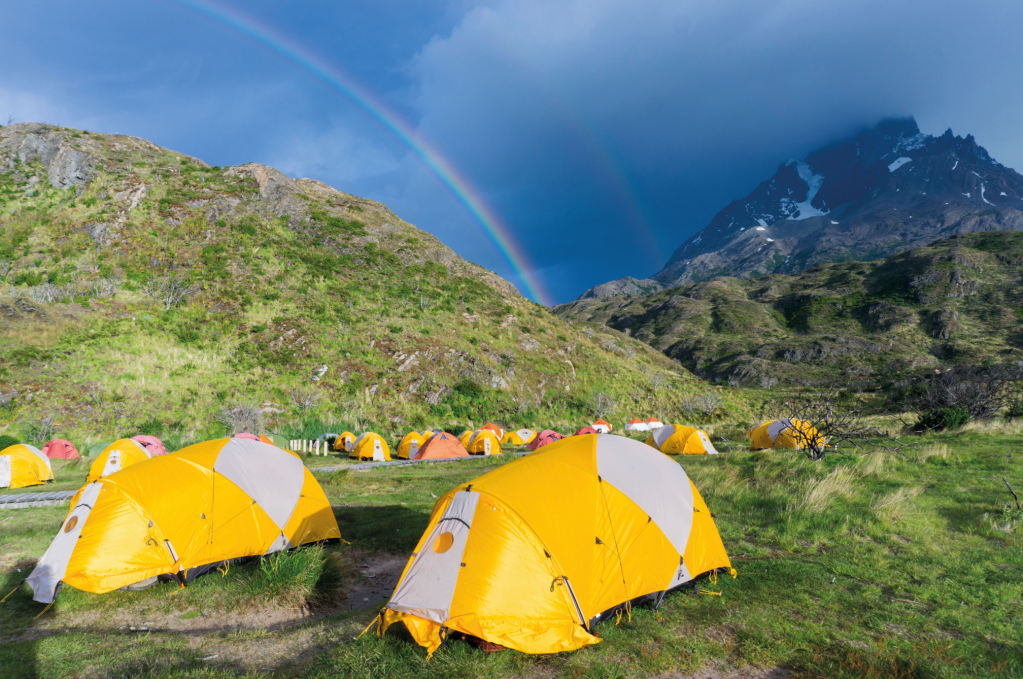
The Paine Grande campsite on the ‘W’ Trek. Credit: Shutterstock
Attempt the W trek in mid-summer, and you’ll be sharing the well-trodden tracks with plenty of other aesthetes. The route never gets too overrun, though, because accommodation is limited and needs to be booked in advance (ideally, as soon as the campsite booking system opens in August). An ingenious and enjoyable way to make the experience more sustainable is to swap the flight from Santiago with a trip on the Navima passenger ferry, which takes the scenic route through the wild Patagonian fjords.
Torres del Paine ‘W’ Trek: an alternative route
If you’re particularly crowd-adverse, there’s a quieter extension to the W trek, also named after a letter of the alphabet. The 110km / 70-mile ‘O’ trek continues the W on to complete a full loop of the Cordillera Paine mountain group. The scenery is less famous but far wilder and more remote, as you cross high passes, loop around alpine lakes and surprise unwary wildlife. Camp only in designated areas and avoid the temptation to feed wildlife to leave a lighter trace.
If you want to explore other international treks of a lifetime, check out these other bucket list treks and our expert advice on how to hike them – as well as their lesser trodden alternatives.

You may also like...
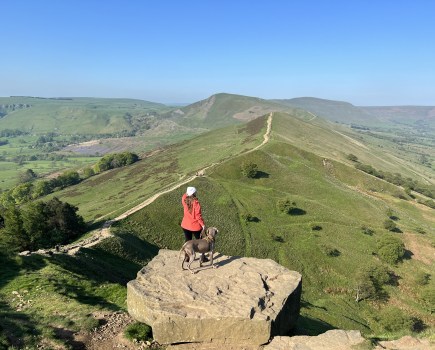
12th March 2024
The Edale Skyline: route guide
Francesca Donovan guides you on a fine Peak District day challenge taking in the highlights above the Edale Valley.
by Francesca Donovan
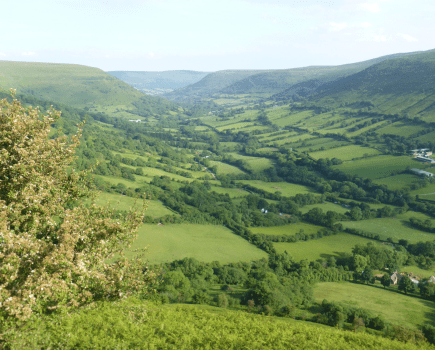
11th March 2024
The Vale of Ewyas: route guide
Fiona Barltrop strides out along the ridges of the The Vale of Ewyas in the Black Mountains.
by TGO Editor
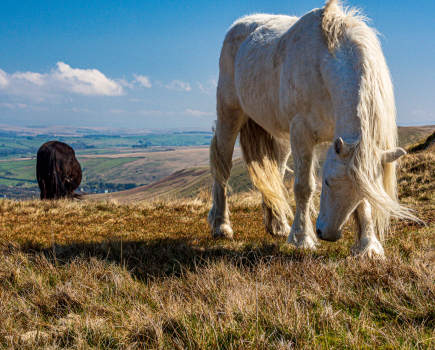
Whinash ridge from Bretherdale: route guide
Ian Battersby abandons burdens at the doorway to a deserted dale and Winash ridge.

Subscribe and save today! Enjoy every issue delivered directly to your door!
No thanks, I’m not interested!

Destinations
Trekking type, torres del paine w trek patagonia - map, refugios, itinerary and more, by sierd van der bij.
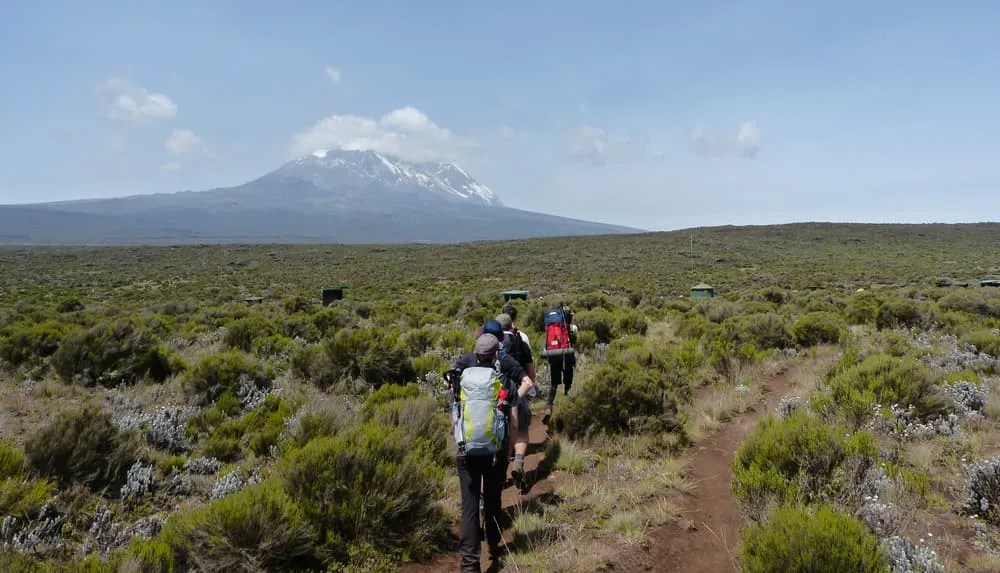
The W Trek in Torres del Paine is by far the most famous trek in Patagonia. The W stands for the shape of the route if you look at it from a bird’s eye perspective. There are many options if you want to conquer this massif. Although the W trek is the shortest, it includes the most beautiful highlights of the Torres del Paine National Park. In this blogpost, we will tell you all that you need to know about the refugios on the W-trek, the map, the itinerary, and more!
Do I hire a guide or do I go on my own when trekking in Torres del Paine?
W-trek in patagonia, map, what is the best season to do the w-trek in torres del paine, what are the accommodation options during the w trek in torres del paine, refugios on the w trek in torres del paine: what are they like, how much does doing the w trek in patagonia, what does a w trek itinerary look like, packing list for the w-trek, how do i get to torres del paine for my w trek, how fit do i need to be for the w-trek in torres del paine, chile, safety tips for the w-trek, where can i book the w-trek.
The W trek is not that long, which is why some trekkers choose to do it in 3 days. Nevertheless, we recommend taking it a little bit slower so as to make the most out of every site. With the most varied and colorful landscapes, this trek is guaranteed to leave you speechless. Along the way you will find hanging glaciers, waterfalls, rivers, lakes, and granite peaks. The red color given by the lengas in autumn and winter provide you with a dreamlike scenery.
The first thing to know about this trek is that you can either do it on your own or you can hire a guide. Is it dangerous to go on my own? Not at all. The trails of the W Trek in Torres del Paine are very well marked and you will most probably find other trekkers on your way, so you won't be completely alone. Getting lost in Torres del Paine is highly unlikely. The good thing about booking a self-guided trek with a trekking company is that all the logistics get sorted out for you: the accommodation, the transport and the meals are arranged by our partners.
Now, although you can do it by yourself, hiring a guide is always a good idea. As we said before, the trek is completely safe, but a guide will always be able to add that little extra touch to the whole experience. The guides in Torres del Paine National Park will be able to share with you all the knowledge they have about the flora and fauna of the region and maybe show you some of the hidden gems that only those familiar with the park get to enjoy. In the end, it is up to you. Either way, you will love the W trek!

Self Guided W-Trek (Camping)

Guided W-Trek
The W-Trek is a popular hiking route in the Torres del Paine National Park in Chilean Patagonia. It's called the "W-Trek" because of the shape the route makes as it winds through the park - it looks like the letter "W" when drawn on a map.
The trek takes you to some of the park's most iconic sights including the stunning granite towers that give Torres del Paine its name, the beautiful French Valley, and the Grey Glacier. It's one of the most famous hiking routes in the world, and is renowned for its dramatic landscapes and diverse wildlife.
Not sure yet or want to discuss your plans for the W-Trek with one of our trekking experts? Get in touch today and turn your dreams into memories!
You want nice weather when trekking in Torres del Paine National Park. At the park is situated in the Southern Hemisphere, one has to be mindful of the seasons there. When it is winter in the Northern Hemisphere, it is actually summer in the deep South. Hence, the best trekking season for Torres del Paine National Park is during the summer months: From November to early March. However, Spring (September-November) are and Autumn (March-May) are also favorable trekking and hiking seasons, as the crowds are fewer and the natural scenery is colorful. Think fresh colors in Spring and stunning brown colors in the Fall months. Winter lasts from June to August and it is then that Torres del Paine National Park and the rest of Patagonia is quiet. At this time of the year, most attractions are closed for maintenance. Regardless of your choice in trekking season, make sure you bring enough layers for during your hike.

Accommodation in Torres del Paine will not be a luxury show, but at least you will have a roof over your head while resting your legs from the W trek. Refugios are mountain lodges and can be found scattered all over the National Park. Our trekking providers are making use of these Refugios but it is also possible to stay in a tent on a campsite, or in one of the domes of an EcoCamp that you can find in the park. Regardless of where you stay, your accommodation fulfills all the basic needs for getting a blissful rest during your trek through Torres del Paine.
The "Refugios" are mountain lodges scattered all over the Torres del Paine National Park. When you have done your hiking and trekking for the day, you are most likely to stay in one of these Refugios. Refugios come with comfortable dorm-style rooms that are best compared to a standard you can find at neat backpacker hostels around the world. Think mountain huts with all the comfort you need. A great advantage of using Refugios is that you can limit the amount of equipment that you bring along. On top of that, you have a roof over your head, you are likely to meet more people and you can enjoy nourishing meals. If you prefer to camp, you can still use Refugios. They often come with space where you can pitch a tent.
It is very important to highlight that the accommodation in the refugios is limited and they can be fully booked weeks or even months in advance. If you want to spend your nights at the refugios, make sure you book your trek in advance. If any of the refugios is full, the alternative will be to spend the night camping.
Hiking in Torres del Paine can be a costly matter, but there are most definitely affordable ways of doing it. The prices of the W trek can go from USD 1250/ EUR 1100 and up to more than USD 3000/ EUR 2700. The more support you receive, the more you will be paying for your trek. After all, the guide that shows you the way and tells you about all the highlights along the way, needs to be paid a fair salary. When comparing a guided to a self-guided trek, one can see that it can make a difference of almost 1000 USD. It is, however, good to note that not all the trekking costs lie in enjoying the skills of a guide or not. A typical W Trek includes food and accommodation in the form of Mountain Lodges, known as Refugios. The entrance fees to Torres del Paine National Park and all transportation needed are also included in the total trekking price. There are many alternatives for the W Trek, with different accommodation options, number of days, and prices.
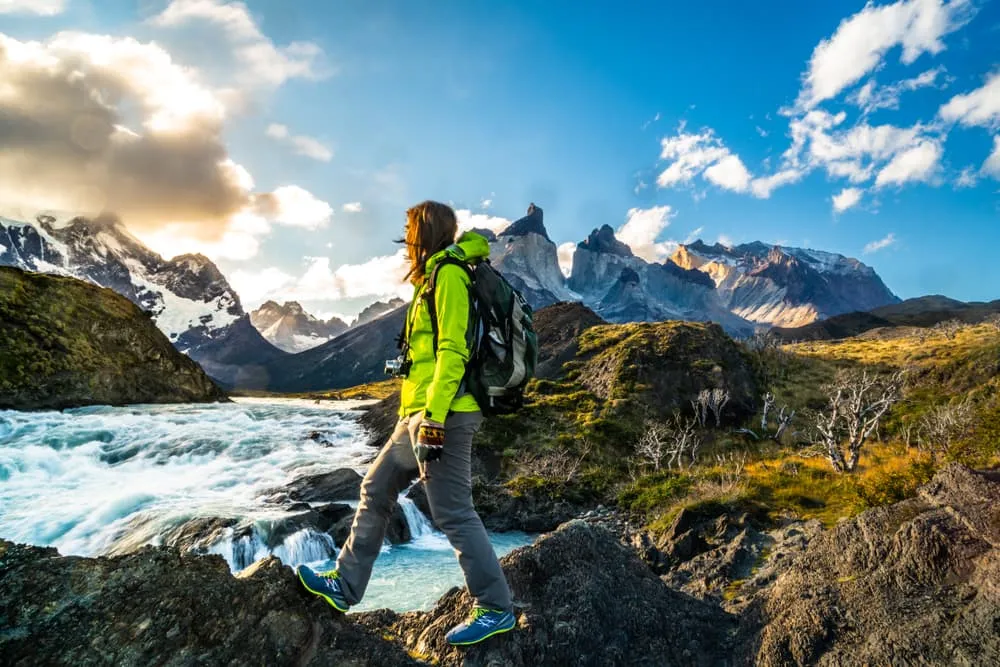
The W trek in Torres del Paine is pretty much the same for every trekking company since there is only one route. What does change is the number of days you spend on the trails and which highlights you get to see. The W trek is most commonly completed in 5 days, which gives you enough time to see all the main attractions along the way.
Transfer to Torres del Paine – Round trip hike to Las Torres lookout point
Starting from Puerto Natales at 7:00 AM, we drive all the way to Torres del Paine National Park. We will drive through open pampas and huge ranches (estancias), and chances are we will be able to observe one of the most typical animals in this area, the ñandu, (rare South American ostrich). We will follow an unpaved road heading to Refugio Las Torres to spend our first night. Upon entering the park we will have excellent photographic and birding opportunities as we drive alongside lagoons frequented by Chilean flamencos and black-necked swans. After leaving your backpack at the Refugio, we start the trek to the base of the Towers, following the Ascencio River to enter the Ascencio Valley. The walk will be uphill for one hour before stopping to observe the first glimpses of the valley surrounded by unbelievable beech forests, glaciers and waterfalls. We’ll continue through the valley for another hour and a half before ascending a huge terminal moraine to a lookout (900 M), excellent for picture taking. This amazing view will be accompanied by lunch to add to the enjoyment. After being awed by the towers we’ll start the descent, following the same path back to the hut. Dinner will be served in the Refugio.
Refugio Torres Central
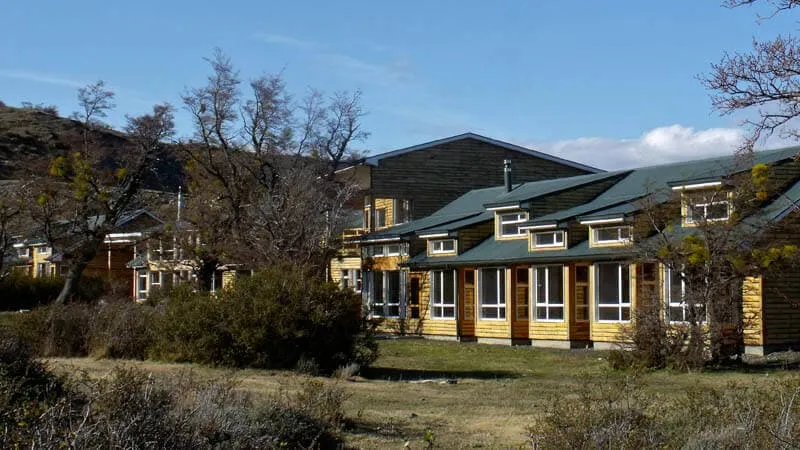
One way hike to Los Cuernos lookout point
We will start early morning to enjoy, weather permitting, a magnificent dawn filled with orange-pink colors. As we leave the campground we will arrive at Inge lagoon. Chances are, on this path, we may see the flight of an Andean condor or eagles hunting hares or small rodents. We follow a well mark trail ascending around (200 M) from the base of Almirante Nieto Mountain (2750 M), crossing the Bader River to arrive at Refugio Los Cuernos where we will stay overnight.
Refugio Los Cuernos
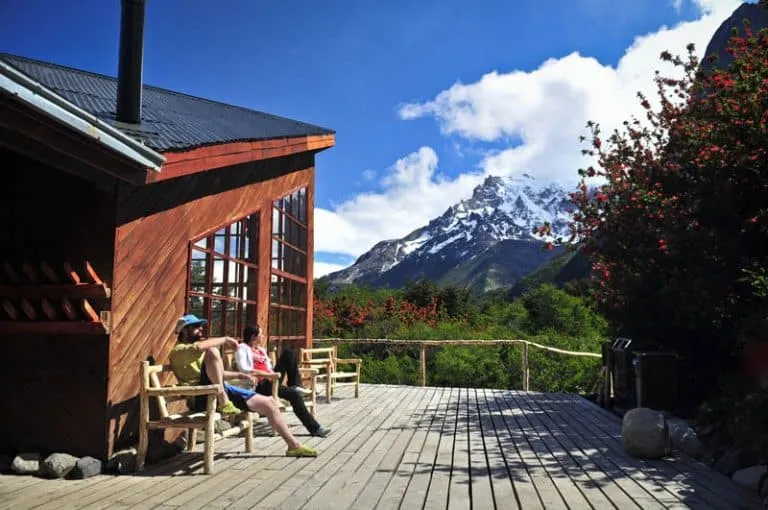
One-way hike to Pehoe Lake, via the French Valley
We will start our day with a 2-hour walk going to an undulating path until reaching the French River for our first glimpses of the hanging glacier. Then we will ascend (300 M) for one hour through a surreal Japanese garden landscape, crossing beech forests, to reach the French valley viewpoint gifting us with a magnificent view of both mountains and lakes. We will lunch here with good possibilities of seeing avalanches from the hanging glacier or simply observe the west side of the Cuernos (2600 M), Espada (2400 M) and Fortaleza (2800 M). Our way back will be the same until we reach the entrance of the valley where we will continue on a different path around the South-West side of Paine Grande, the highest peak in the Park, through native forests of Chilean fire bush and evergreen beech (Nothofagus Bethuloides), up to the shore of the Pehoe Lake.
Refugio Paine Grande
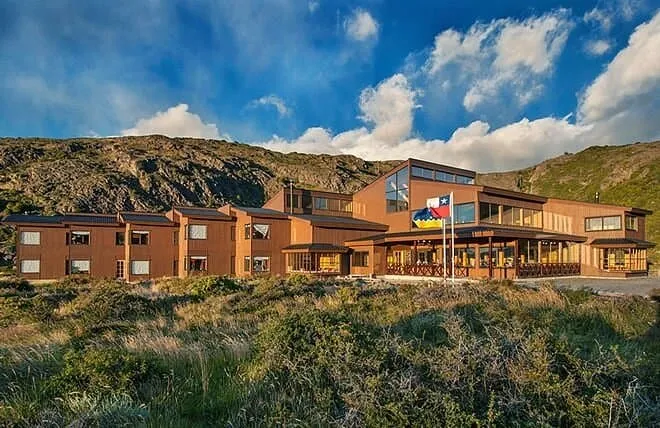
One-way hike to Grey Glacier
We will begin the early morning with our hike to the Grey Glacier. Initially ascending 200mts up a winding narrow path leading us to Laguna Negra, a place where we will observe the first glimpses of the South Patagonia Ice Field with its many unclimbed mountains. We will advance through forests and rivers, with possible sightings of spectacle and flying steamer ducks, up to the glacier viewpoint. We will have lunch at this place to see, if we are lucky enough, ice calving from the huge glacier wall.
Refugio Grey

One-way hike to Catamaran – Transfer back to Puerto Natales
Your trekking adventure will begin in Puerto Natales, where your trekking company will drive you to the Torres del Paine National Park's entrance. As your trekking starts early in the morning you need to get to Puerto Natales one day before the start of your trek. You need to fly on Puntus Arenas (Airport code: PUQ). From there you can take the bus to Puerto Natales. It’s advisable to arrange this upfront. We recommend either Bus-Sur or Buses Fernandez . These are the departure times:
Punta Arenas – Puerto Natales
8:00, 9:00, 11:00, 13:00, 14:30, 16:00, 17:00, 18:30, 19:15, 20:00, 21:00
Puerto Natales – Punta Arenas
7:00, 7:15, 9:00, 11:00, 13:00, 14:30, 17:00, 18:30, 19:15, 20:00, 21:00
Do you make it to your destinations as planned? Often this depends on the unpredictable weather in the mountains. However, it can also depend on your own physical condition.
Do you like walking, have you done trekking at an altitude more often and do you sport twice a week on average? With a little extra training, you’ll soon be ready for the beautiful W trek.
Is this the first time that you are trekking in the mountains? Make sure you are well prepared. This is important for your safety, but also for that of your team. Make sure you start six months in advance with an hour’s walk twice a week.
Although this is far from being a trek in the Himalayas, unexpected things can always happen and you might also find obstacles on the hiking trails along the way. The W-Trek is safe, the trails are quite straight forward and there is not an extreme difference in altitude. However, for your safety, every hike deserves a level of respect; respect for the terrain, the trails, wildlife and vegetation, local rules and regulations, and above all, your physical capabilities and safety. Therefore, for an unforgettable and safe hiking memory, please keep the following safety recommendations in mind:
Know your limits
Always prepare each stage carefully to use your energy wisely, respect your physical and mental limitations, and avoid taking unnecessary risks. When ascending or descending, if applicable, always use the aids provided, such as handrails and ropes. Is this trek suitable for you? Well, familiarize yourself with the grading system and figure out if this trek matches your capabilities. If you still need professional advice you can always contact Bookatrekking.com experts .
Stay on marked trails
The most important thing is to never leave the marked paths. For easy navigation we work with our trusted partner Komoot, whose interactive maps, also available offline, provide you with the necessary digital means to get from A to B in the W-Trek. As a backup, make sure to bring a hiking guide or a paper map with you.
Fully equipped
Make sure you have the necessary gear for the conditions you'll be facing, including appropriate clothing, footwear, and any necessary equipment for the terrain you'll be hiking on. Always wear clothing adapted to the weather of W-Trek and protect yourself from cold and wetness or heat and sun. Besides, make sure you carry enough food and water for the duration of your trek. On the way, you might (or might not) be able to buy snacks.
Stay reachable
If you are hiking solo or in small groups it is advisable to inform people back home about your plans, what route you are taking and when you plan to return. Even small incidents can lead to unpleasant emergencies so make sure you are available at all times. Bring a charged phone containing at least the phone numbers of immediate family members, your accommodations en route and the emergency phone numbers operating in the W-Trek.
Respect for nature
Do not litter, prevent noise, stay on the marked trails, do not disturb wildlife or grazing animals, and respect protected areas.
At Bookatrekking.com you can book the self-guided W-Trek and many other treks. We take care of all the details for you, including arranging accommodations and providing you with relevant information well in advance of your trek. Find our offers here . Our easy-to-use platform allows you to browse and compare different trekking options and find the perfect fit for your interests, abilities, and budget.
If you have any questions about a specific trek or need help choosing the right one for you, our team of trekking experts is here to assist you. Simply reach out to us and we will be happy to provide you with personalized recommendations and advice to help you plan the trekking adventure of a lifetime.
Is the W-Trek not your cup of tea and are you looking for other epic adventures? Check out one of our following blog posts:
- Peter Habeler Runde
- Salzburger Almenweg
- Berliner Höhenweg
Switzerland
- Via Alpina 1
- Hut-to-hut in Slovenia
- Climb Mount Triglav
- Palaronda Trek
- Alta Via del Granito
- Walker's Haute Route
- Tour du Mont Blanc
- Tour du Mont Thabor
- Hut-to-Hut in Mercantour
- Carros de Foc
- Porta del Cel
- Peaks of the Balkan Trail
- Menalon Trail
- Corfu Trail
- Climbing Olympus
- Laugavegur Trail
- Fimmvörðuháls Hike

Also Interesting
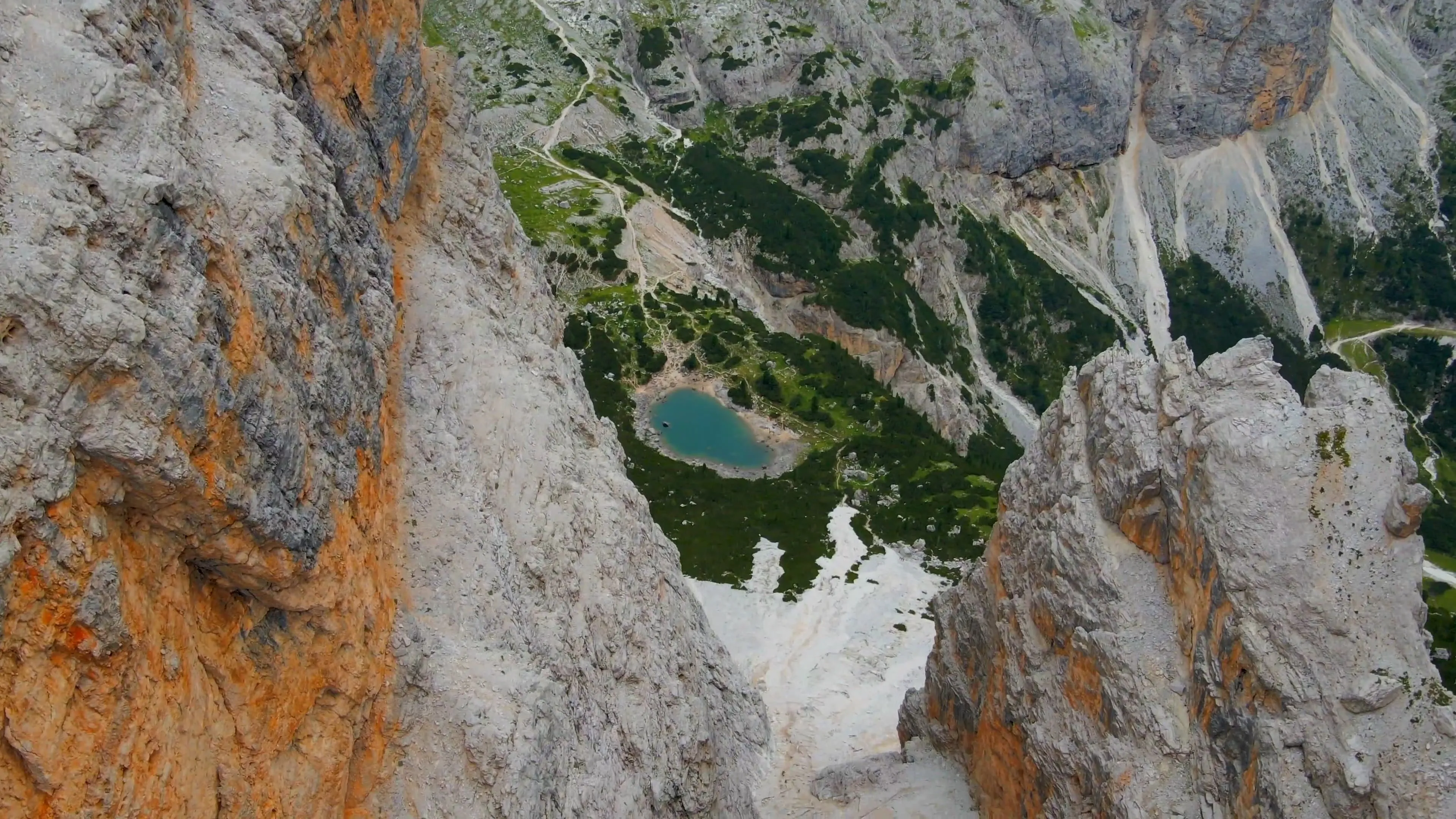
Alta Via 1: Map, Difficulty, and Route on the Italian Dolomites
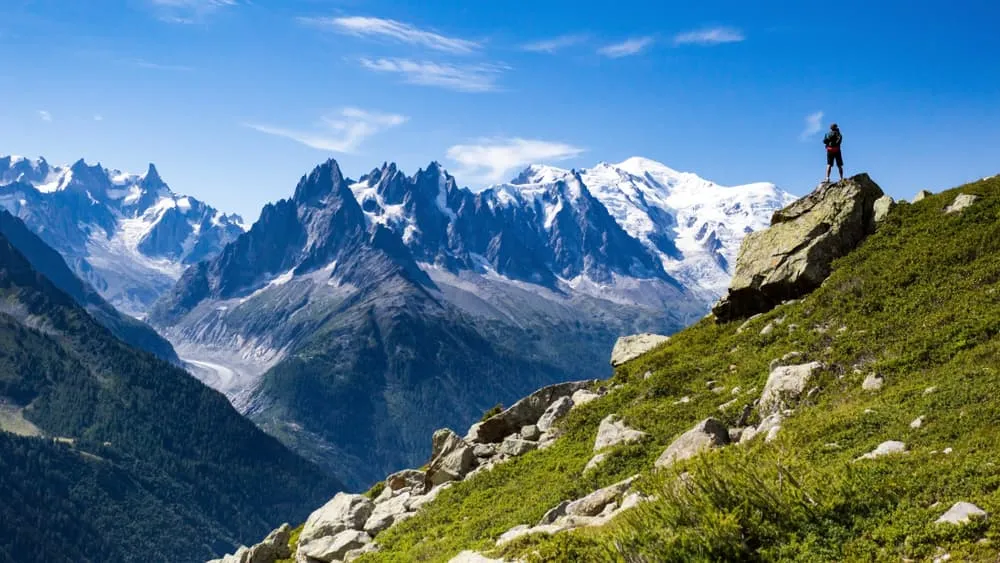
Tour du Mont Blanc: All You Need To Know
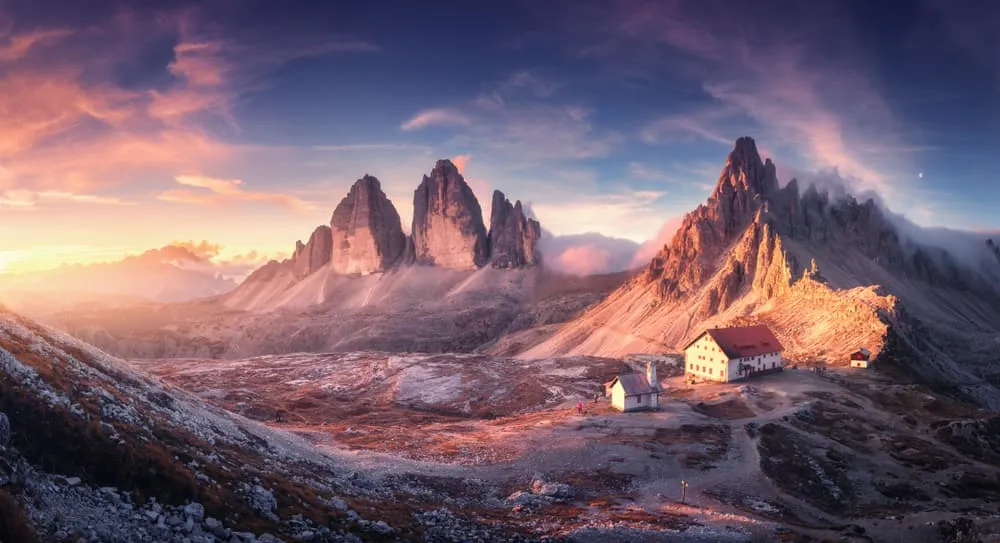
Dolomites Hiking: The 8 Best Options for Hiking Hut-to-Hut in Italy
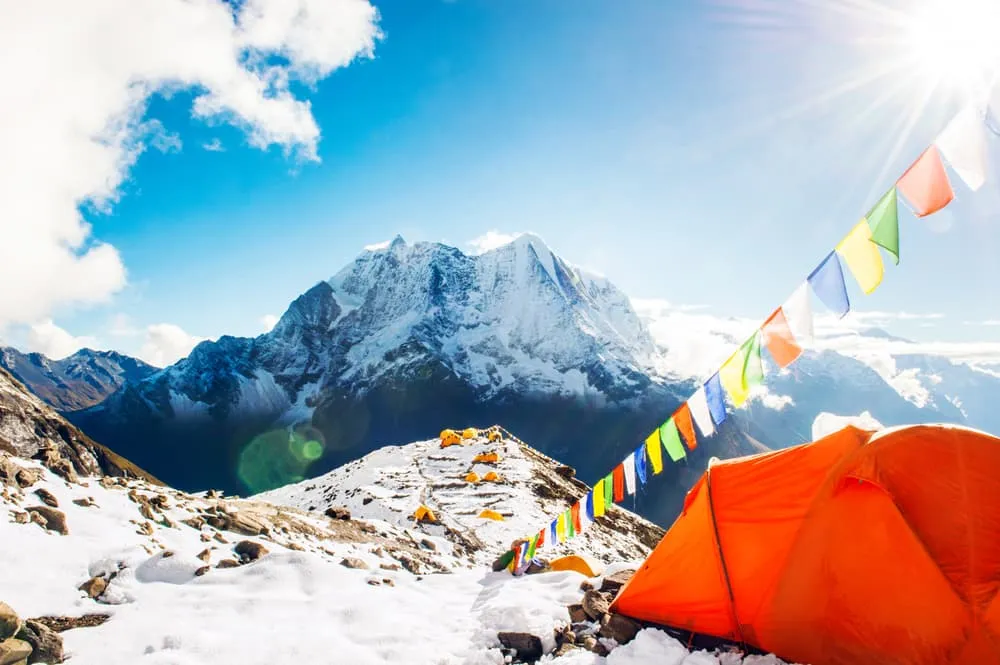
Everest Base Camp: A Trek to The Roof of The World
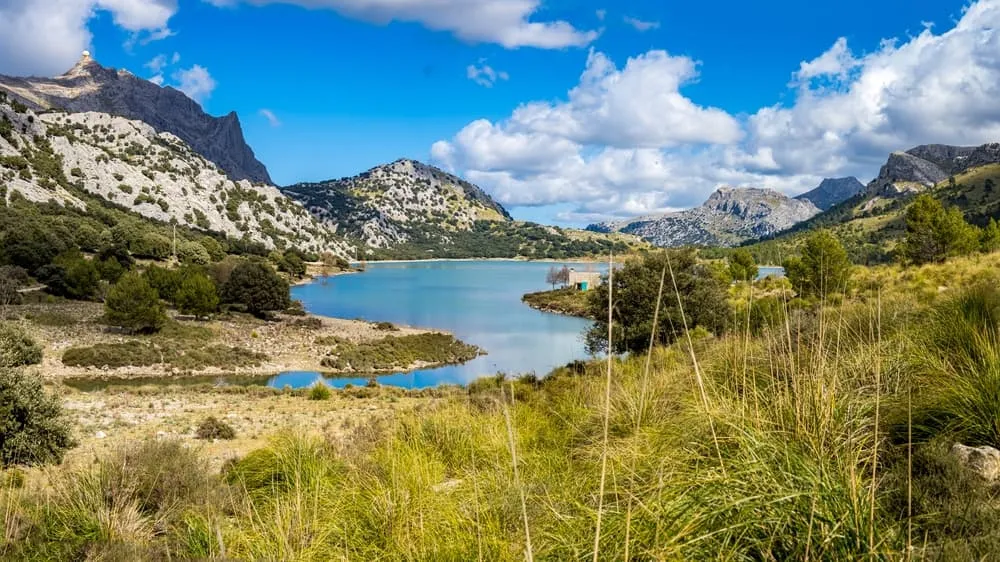
Hiking the GR221 in Mallorca: Everything You Need to Know
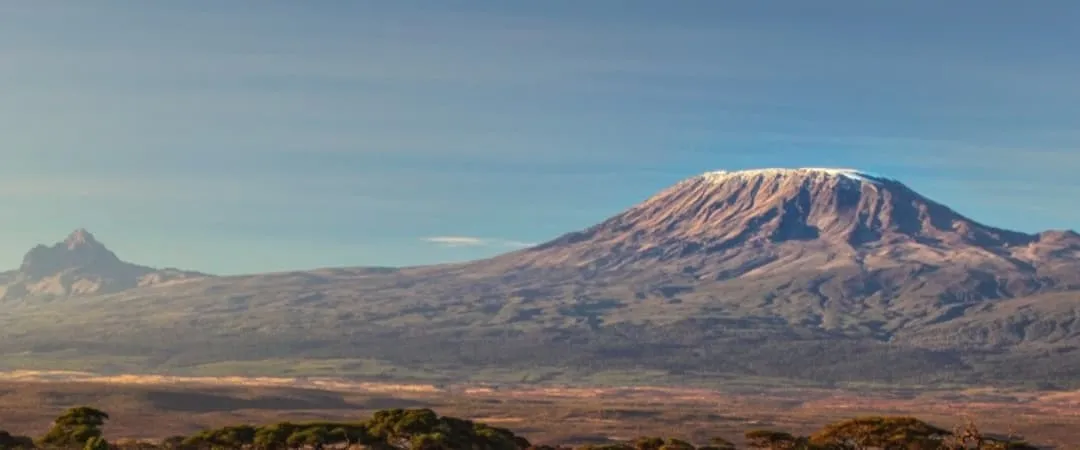
Climbing Kilimanjaro: All You Need To Know For Your Climb
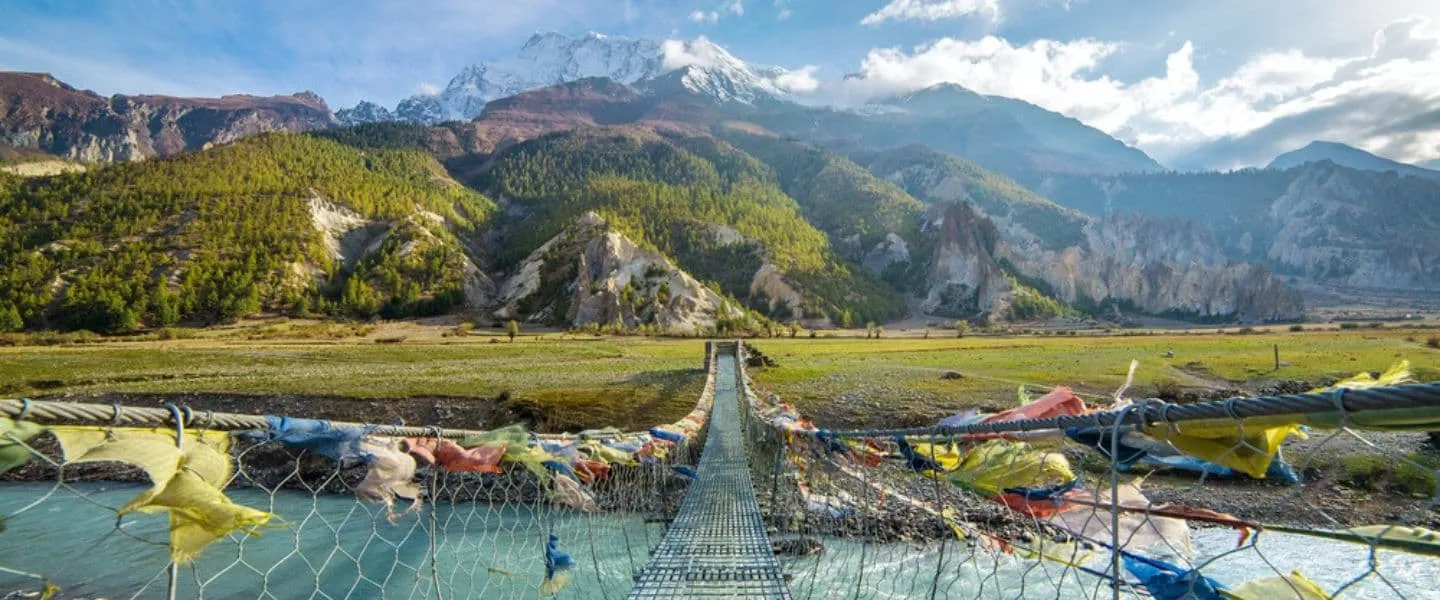
Annapurna Circuit Trek: How to Hike Around the Annapurnas
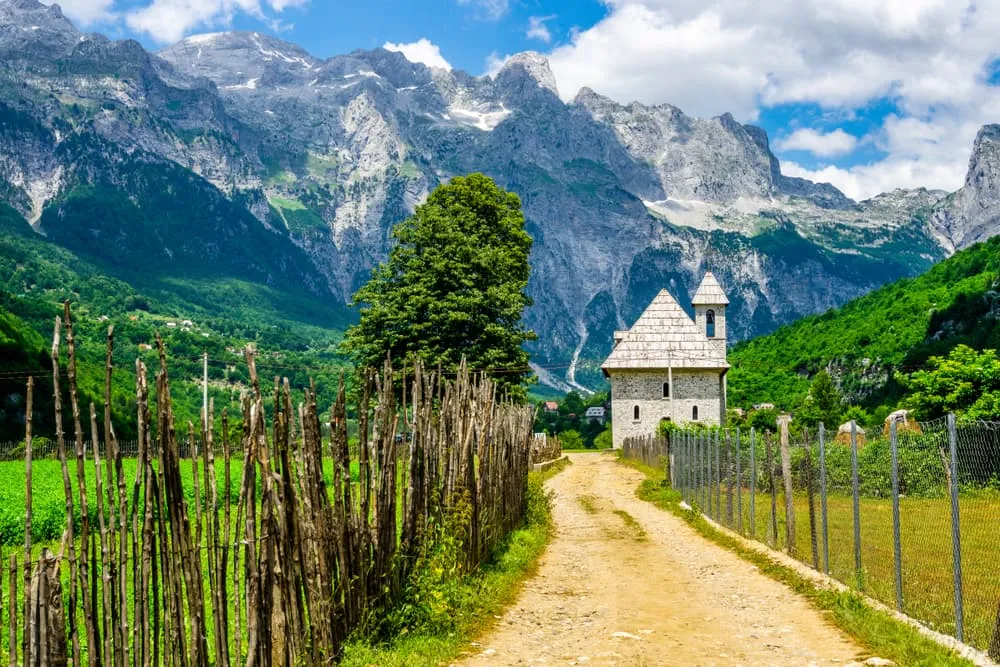
Peaks of the Balkans Trail: All You Need to Know

Hut-to-Hut Hiking in the Pyrenees: The 4 Best Walks
Get weekly inspiration with the best treks.

Patagonia: Torres del Paine Classic W Trek
6 days | challenge yourself with the w trek in chilean patagonia – one of the best hiking spots in the world.

Immerse yourself in the Patagonian wilderness, on this 6-day hiking trip in the Torres del Pain National Park of Chile. Coined one of the most beautiful and popular treks in the world, the W Trek traverses through rolling grasslands and mountainous peaks, alongside the breathtaking blues of lakes, rivers and streams. You’ll stay in Refugios by night (backcountry huts or lodges with all the comforts of home) and walk the ever-changing landscape by day. Along the way, witness jagged icebergs on Lake Grey, diverse flora and fauna (look out for Andean condors and grazing guanacos) and the famous Los Cuernos del Paine (The Horns of Blue) and Torres del Paine (Towers of Blue) distinctive to Patagonia. If you’re looking for a challenge, this multi-day hiking trek is perfect for you.
Trip overview
- Immerse yourself in the sheer majesty of Chilean Patagonia – one of the most beautiful landscapes on earth with its vast mountain ranges, glacial lakes, grasslands and beech forests.
- Explore French Valley, Lake Grey and the famous Towers of Blue (Torres del Paine) on an actioned-packed multi-day hiking trip. This part of the world is widely considered one of the best for hiking.
- Witness this raw, untamed landscape on a low-altitude trek that takes you through a designated UNESCO World Biosphere Reserve. Keep your eye out for Andean condors, flamingos and guanacos.
- Stay in Refugios with fully serviced kitchens and bathrooms, comfortable beds and all meals taken care of – so you don’t need to worry about anything other than the experience.
- Hike the W Trek in Torres del Paine National Park West to East, saving the crown jewel (the three peaks of Torres del Paine) for last. What a way to cap off the perfect hiking trip!
- This is a hiking trip, so it does require a good level of fitness, but no previous experience is needed. The longest day will see you hiking for 24 km with 1100 m of elevation gain.
- Please read the packing list carefully and come prepared, as you may not have a chance to buy any missing parts of equipment or trekking clothing.
- You will need to carry your luggage on the trek as porter services is not included. Your fully packed trekking backpack should not exceed 12kg total weight.
- This trip is new to our range this year. Despite rigorous planning and research, new itineraries can sometimes throw us some unexpected surprises. More often than not, it’ll be a welcome surprise, but every now and again there might be a hiccup. We like to think that’s what puts the ‘adventure’ in ‘adventure travel’.
Bienvenidos! Welcome to Puerto Natales, in Chilean Patagonia. This port city is famously the gateway to Torres del Paine National Park – the centre of your 6-day hiking trip. Depending on when you arrive, you may want to acquaint yourself with the city on foot, taking in the snow-capped mountainous horizon, or maybe you’ll pop into the Municipal Historical Museum in the city centre to brush up on some local history. You’re free until 6 pm when there is a welcome meeting with your group. After, you may want to head to a restaurant or bar to get to know your fellow trekkers a little better and taste some classic Patagonian flavours.
- Hotel (1 night)
There are no meals included on this day.
- Full W Trek guided hike West to East
It’s very important that you attend the welcome meeting as we will be collecting insurance and emergency contact details at this time. If you are going to be late, please let your travel agent or hotel reception know. Ask reception or look for a note in the lobby for more information on where the meeting will take place. Please note your Tour Leader will not stay in the same accommodation as the group for tonight, and will re-join you in the morning of Day 2.
After breakfast at the hotel this morning, you’ll take a transfer from the hotel to the Grey Sector of the W Circuit in wild Patagonia. This is the most famous and well-travelled hiking trail in the park because although it can be challenging, the trail can be completed by anyone of any fitness level (as long as you are reasonably active and able to walk long distances). First, take a boat ride from Hotel Grey to the trailhead and explore a landscape, which you will soon trek, from a different perspective. Then, from your starting point, the path is quite flat for the first hour, passing through beech-lined woods and crossing over some small streams. Along the way, you’ll have multiple opportunities to see the beautiful Lake Grey, with its electric-blue icebergs that jut from the water like small, otherworldly mountains. As you start to ascend, you’ll see a marvellous view of the Grey Glacier in the distance. Along the way, you’ll stop for a packed lunch, where you can keep your eye out for the Patagonian fox and the Andean condor. Eventually, make your way downhill once more and reach your accommodation for the night – Refugio Paine Grande. Refugios are backcountry huts or lodges that are along the trail, with full-service kitchens, beds and bathrooms. After a nice warm shower, cap off your first hiking day with a group dinner.
- Refugio Paine Grande (1 night)
- Paine Grande refuge overnight stay (fully equipped)
- Lake Grey boat ride
- Grey Trek guided trek
The trekking time for today will be about 4 hours or 11 km. There is no experience required for this trip, however, you do need to be reasonably fit and accustomed to long walks.
After breakfast at your Refugio, you’ll embark on a full-day trek through the French Valley. From here, the well-trodden path leads towards the Cuernos of Paine – look! You can see the jagged peaks in the far distance. Passing through woods and over small streams, you’ll have a beautiful view of Lake Nordenskjold, and later, the amazing sight of ancient sedimentary rock among the rolling hills. You’ll arrive at a rickety-looking hanging bridge, like something out of an Indiana Jones movie (don’t worry, it’s completely safe). Head on into the French Valley, which if you opt for the full round-trip, will take about 5 hours. Your path is a steady, uphill trail that reaches an altitude of around 900 m. If the weather is clear, the views are spectacular. After traversing rivers and forests of beech trees (or lenga trees), the skyline is dwarfed by towering granite spires and the famed Paine Grande – the highest mountain peak in the park, sitting at 3,050 m above sea level. The return trek (along the breathtaking Lake Nordenskjold) will eventually lead you to your accommodation and dinner spot for the night – Refugio Domos Frances.
- Refugio Domos Frances (1 night)
- French Valley guided trek
- Frances refuge overnight stay (fully equipped)
The trekking time for today will be about 10 hours or 24 km (although you will have the option to cut your hike short).
Fuel up on brekkie this morning and pack up your gear ready for another beautiful day of hiking. Today’s trek passes through beech tree woodlands and continues along the northern shore of Lake Nordenskjold, with its amazing dark-blue hues. On your left, the incredibly tall granite spires of Los Cuernos del Paine (The Horns of Blue) impose upon your track. The Horns are one of the distinctive features of the park and part of the overall Paine massif – which is nestled within the heart of the southern Andes. Along today’s trail, look out for grazing guanacos, swooping eagles, Magellanic ducks and the diverse flora of the area. On the lake, you may even see black-necked swans and pink flamingos! Today’s hike will come with a fair few rolling hills and potentially steep climbs, but after every incline, you’ll be met with stunning scenery that reminds you why you’re there. Tonight, you’ll arrive at Refugio Torre Central where you’ll enjoy a group dinner and a restful night’s sleep under the stars.
- Refugio Torre Central (1 night)
- Central Valley guided trek
- Central refuge overnight stay (fully equipped)
The trekking time for today will be about 5 hours or 13.5 km.
Arise nice and early and fuel up on brekkie, ready for your last full day of trekking this spectacular trail. As this is your last day in the park, it’s a good idea to remind yourself to be present, taking in all the majestic beauty of the area and the friendly faces who have been by your side along the way. Once you turn the final bend of today’s hike, you’ll witness the spectacle of the giant towers of Torres del Paine (Towers of Blue) – the gem of the park. This trail follows the W Circuit backwards, meaning you’ll finish your trip off with the highlight of this incredible view. Take a moment to appreciate the massive vertical structures with the reflective milky-blue lake at the base. You’ll have about half an hour to relax and take photos, have some lunch and enjoy the view. This scene is at a high altitude, however, meaning it will be windy and cold. When the time is right (when everyone’s noses start to turn pink) turn around and head back the way you came. You’ll have the option of stopping off at Refugio Chileno to stretch and refuel. Once past Refugio Chileno, head back to the French Valley and then downhill towards the buildings of Hotel las Torres. It’s time to say your goodbyes to the national park! Eventually, you’ll reach the ECO Camp, where you’ll meet your private transfer back to Puerto Natales.
- Base Las Torres guided hike
The trekking time for today will be about 8-9 hours or 19 km. Tour leader’s service will finish tonight in the evening after group is checked in the hotel in Puerto Natales.
This morning after breakfast your trip will come to an end. If you would like to extend your stay, just speak to your booking agent.
5 breakfasts, 4 lunches, 3 dinners
Private vehicle, boat
Hotel (2 nights), Refugios (3 nights)
Dates and availability
Important notes.
1. Full passport details are required at the time of booking in order to purchase entrance fees to Torres del Paine National Parks. 2. This trip starts with a welcome meeting at 6 pm on Day 1. 3. Tour leader is also a qualified Trekking Guide and will join the group for Welcome Meting and then on the morning of Day 2 for the start of the trek. 4. A single supplement is available to add on, this will be included on Days 1 and 5 (Hotel) only and is subject to availability. Please speak to your booking agent for further information. 5. All overnight stays in Torres del Paine are booked in authentic refuges, with shared facilities and mixed gender dorm style rooms. Occasionally we are not able to reserve one or more nights in the Refugios, in which case accommodations will be in tents that are provided and set up by the Refugios. In these cases, we will still have access to the Refugios for meals, relaxation and showers. The price of the trip remains the same and all camping equipment is provided. 6. You will need to carry your luggage on the trek (porter services is not included), so please read a packing list and our recommendations carefully. Your fully packed trekking backpack should not exceed 12kg total weight. Excess luggage can be stored in our hotel in Puerto Natales for the duration of the trip. 7. A porter service can be pre booked (subject to availability) at an extra cost to carry up to 15kg weight, contact your booking agent for more details.
Want an in-depth insight into this trip? Essential Trip Information provides a detailed itinerary, visa info, how to get to your hotel, what's included - pretty much everything you need to know about this adventure and more.
Check back later or explore reviews for similar trips.
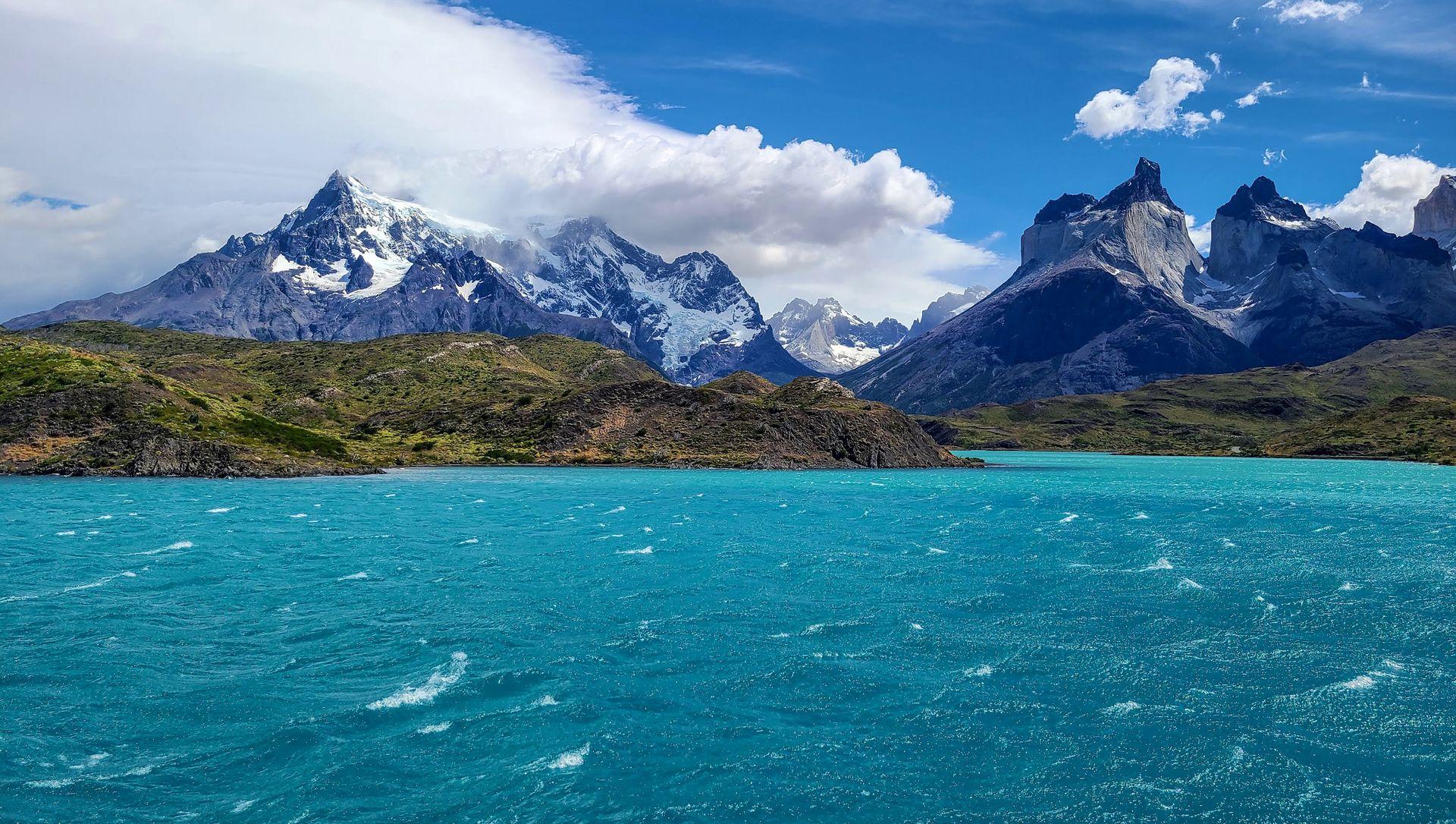
The Ultimate Guide to Hiking the W Trek in Patagonia: Full Itinerary, How to Self Book, Cost Breakdown & More!
March 28, 2023.
Hiking the W Trek in Torres Del Paine National Park is an incredible experience that will reward you with endless views and memories that will last a lifetime. You will see jagged mountain peaks, aqua blue lakes, waterfalls, glaciers and more as you take the journey. If you’re lucky, you’ll also see giant condor birds and make new friends as you stay at the inns along the way.
I found the W Trek to be incredibly rewarding and definitely worth the effort, planning and costs. The trek is also perfect for those who are newer to backpacking but are experienced day hikers. Trekking during the day with inns to stay overnight is the perfect combination!
This blog includes a W Trek itinerary and covers everything you need to know to book the W Trek self guided, pack for the W Trek and be prepared. This is based on my experience visiting over New Year’s in December 2022 and January 2023.
Table of Contents
Overview of the w trek, when to hike the w trek, hiking the w trek self guided vs with a guide, how to book the lodging for the w trek, booking an entry ticket to torres del paine national park, booking transportation between puerto natales and torres del paine national park, w trek planning checklist (for self booking), tips and important things to know before hiking the w trek, day one of the w trek, day two of the w trek, day three of the w trek, day four of the w trek, how should you end the w trek, ways to save money on the w trek, what to pack for the w trek, other ways to see torres del paine national park, faqs about the w trek, final thoughts.
- Located in Torres Del Paine National Park, Chile
- 50 miles/80 km
- Typically done in 4 Nights, 5 Days
- The highest elevation is at the Base of Towers, 2,788 feet above sea level
The W Trek refers to a multi-day hike that is shaped like the letter W. This area is unique because there are several inns along the trek where you can spend the night. You can choose between hostel-style lodging, have them provide you a tent at the campgrounds or bring your own tent. Each inn serves food, has restrooms and showers and even offers wifi for an additional fee.
The W Trek is about 50 miles and is typically done in 5 days and 4 nights. There are very few technically challenging sections of the trail, but there are long days with steep climbs. If you have experience hiking 10+ miles in a day in mountainous areas and feel that you can do that for a few days in a row, then you will be set up for success.
Because of the amenities offered, this is a great trip to do if you’re new to backpacking or if you just prefer to stay in a bed instead of a tent. If you stay in the refugios and purchase their full room and board package, you will not have to carry all of your food, water and sleeping equipment. The lighter you can pack for the trek, the more comfortable you’ll be.
While the hike itself is not overly difficult, dealing with the unpredictable weather is the toughest part. I experienced really high winds during my trek. Bad wind is common and it’s not uncommon to experience heavy rain, fog or even snow. You’ll want to make sure you’re prepared with the good layers and keep your expectations low in case it’s too foggy to see some of the best views along the trail.
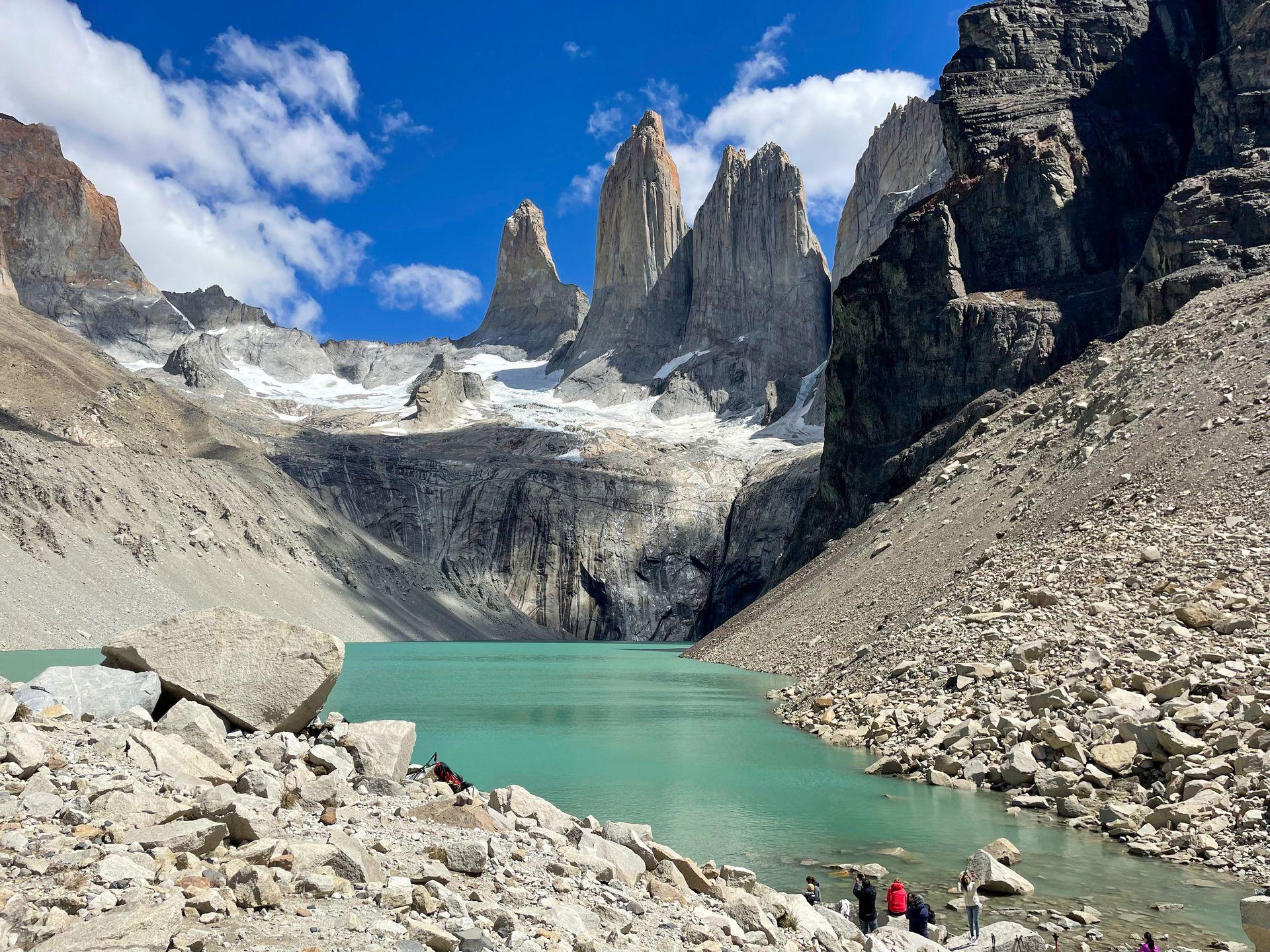
For a shorter version of this blog, check out my top 30 tips for hiking the W trek!
You will most likely hike the W Trek in the summertime for the Southern Hemisphere (winter in the Northern Hemisphere). The W Trek is typically open to hiking self-guided from October to the end of April, and you’ll likely have the best weather from November to March. I hiked the trek over New Years (December and January), which was really special!
If you would like to hike in the park during the winter months, you can do so with a guide.
There are several companies that offer guides if you’re not comfortable hiking the W Trek on your own. This can be a great option for some!
However, I think a guide is unnecessary, as the trail is well marked and easy to follow. It all depends on your comfort level, abilities and budget.
If you are looking for a guide, some companies that offer services include Swoop Patagonia, Tangol Tours, Chile Nativo and many more.
How to Self Book the W Trek
Many people assume you have to go through a third party company to book the W Trek. A third party would certainly be a little bit easier, but if you prefer to do it all yourself, I’m going to tell you exactly how!
Two separate companies own the various lodges in Torres Del Paine National Park: Vertice Travel and Las Torres Patagonia (previously called Fantastico Sur).
For this itinerary, you will book with Las Torres Patagonia for the first two nights at Los Cuernos and El Chileno, and Vertice Travel for the second two nights at Paine Grande and Refugio Grey.
You can book directly with each company on their websites.
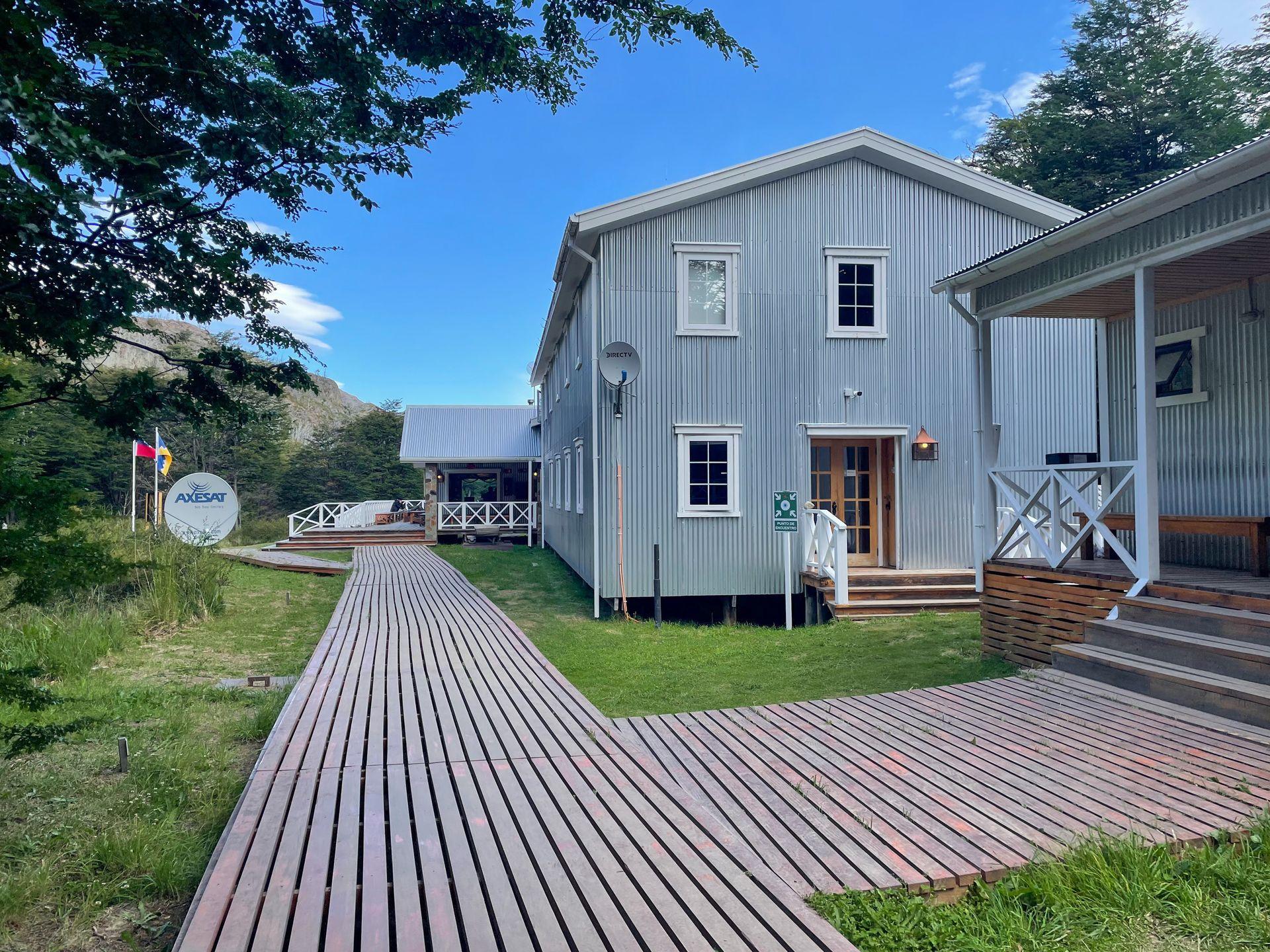
To book El Chileno and Los Cuernos, start on the Las Torres website . Choose to book the ‘shelters’ and then make reservations at the Central Refuge and the Chilean Refuge. Upon booking, you can select to add on full room and board (breakfast, packed lunch and dinner) or any combination of only dinners, only breakfast, etc.
To book Paine Grande and Refuio Gray, start on the Vertice Travel website. Under accommodations, make reservations at ‘Refuge & Camping Paine Grande’ and ‘Shelter & Camping Gray.’ When you book, you will select that you’re doing the W Circuit and be able to book both lodges at once, along with the full room and board.
If you have any dietary restrictions, be sure to request that when booking. If you don’t see the option, send an email to their customer service to confirm. I am a vegetarian and all of the inns were very accommodating!
I booked my trip for December/January in May and June. In 2022, the reservations for Las Torres went on sale well before the reservations for Vertice Travel. So, I booked half of the trek and then waited until the Vertice released their openings. Keep an eye on their social media platforms and/or send an email to their customer service to stay up to date.
After your lodging and transportation is squared away, it is very important to book an entry ticket into the national park. I did this a week or two ahead of time.
To buy your ticket, go to aspticket.cl and select ‘buy or reserve.’ You will then select the correct park, which is listed as ‘Parque Nacional Torres del Paine (Venta)’ in Spanish. From there, you will input your entry and exit dates in and out of the park.
You will then need to fill out a variety of information, such as your birthdate and passport number, where you are staying each night of the trek, if you are traveling with a guide and more.
When you complete the form, you will pay the fee ($49 USD per person at this writing) and receive an email with a QR code. Make sure you have this QR code saved offline (and/or printed) for when you arrive at the park! The rangers will scan it upon arrival and there is not reliable cell reception.
The cheapest and easiest way to get between Puerto Natales and Torres Del Paine National Park is by bus! There are a few different bus companies that run multiple daily trips between the city and the park.
I booked my tickets a week or two in advance with Bus-Sur, and I used busbud.com for easy booking. For the beginning of the trek, I recommend leaving Puerto Natales as early as you can (mine left at 6:45AM).
Keep in mind that you will be starting and ending at different places inside the national park.
For the beginning of the W Trek, book a ticket from Puerto Natales (Rodoviario) to Terminal Laguna Amarga . For the ending of the W Trek, book a ticket from Pudeto (Catamaran Paine Grande) to Puerto Natales (Rodoviario). I recommend an afternoon or evening time for the end of the trek, my bus left Pudeto at 2PM.
The bus rides will take about two hours and there are some great views along the way. Be sure to print out your bus tickets ahead of time and arrive a little early.
If you’re booking everything yourself, here is a quick checklist to make sure you have everything you need before setting out!
- Los Cuernos
- Paine Grande
- Refugio Grey
- National Park Entrance Ticket
- A morning ride from Puerto Natales to Laguna Amarga to start the trek
- An afternoon or evening ride from Pudeto to Puerto Natales to end the trek
- (Optional) A glacier trek or glacier kayaking from Refugio Grey (book with Bigfoot Patagonia)
- (Optional) The catamaran ride on Grey Lake
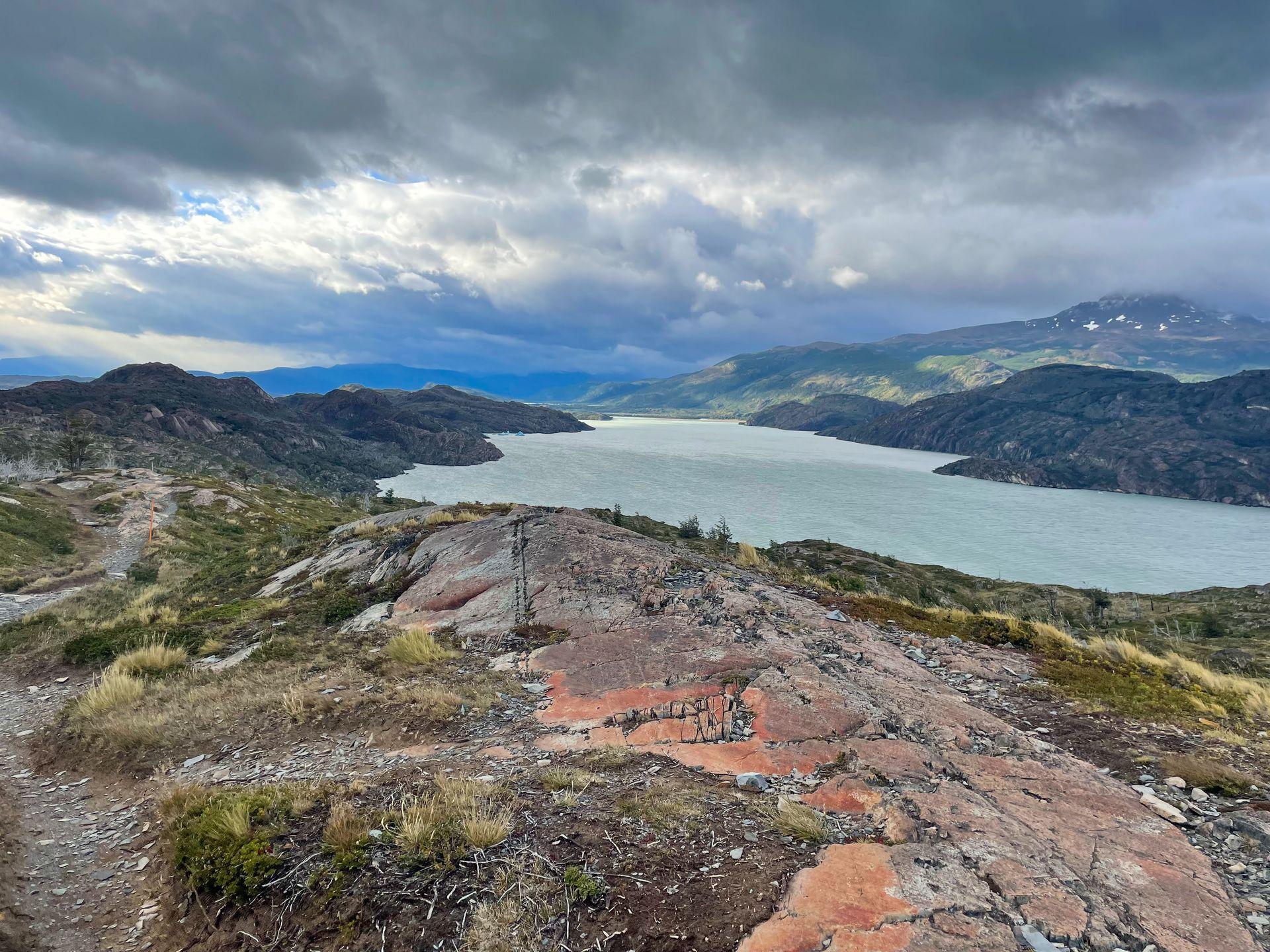
- Expect all kinds of weather, especially high winds. Wind is very common in the area and can be really intense. Also know that it’s possible fog will sock in some of the most epic views. Keep your expectations low just in case.
- You can drop off your heaviest gear at parts of the trail! Bring a day pack and drop your packs at El Chileno and Camp Italiano before ascending up the most difficult parts of the trail.
- The towers will be crowded but the rest of the trails won't be. But overall, the W trek is not the best for solitude and you will often see other people around. It’s a good social hike because you can meet people every night at the inns.
- The elevation of this region is relatively low (2,788 feet is the highest point on the W Trek), so you shouldn’t have an issue adjusting to the altitude.
- Each inn on the trek has drinking water, food and alcohol for sale, plus wifi for purchase and more. You will not exactly be roughing it on this journey! That being said, you should bring a water filter just in case you’re sensitive to the water or want to make sure you can fill up at streams on the way.
- Download the map of the trail on All Trails to follow along with your progress throughout the trail.
For a full list of tips for hiking the W Trek, check out my top 30 W Trek tips !
W Trek Itinerary: East to West
I hiked the W Trek from East to West. You can also hike it in the opposite direction, but hiking it east to west tends to be more common. I liked hiking it from east to west because I got the most difficult portions out of the way early. It was also fun to end the trek with a gorgeous catamaran ride across Lake Pehoe!
Below is my full itinerary for hiking the W Circuit! I hiked 50 miles over 4 nights and 5 days total.
- Take the bus from Puerto Natales, hike to the Base of the Towers, stay at El Chileno
- 9.9 miles, 3,000 feet of elevation gain
The best way to get to Torres Del Paine National Park is by taking a bus from Puerto Natales. The bus ride will take about 2 hours to reach the main entrance of the park (Laguna Amarga), which is where you’ll be exiting the bus for this itinerary.
When you arrive, you will need to exit the bus and have a ranger scan your entry ticket. You should have your ticket saved offline ahead of time and ready to show from your phone.
There was a bit of a language barrier for us here, as none of the instructions were given in English. How it worked was that everyone got off to get their ticket scanned here, whether you were getting off here or not. After they scanned our tickets, we went back to the bus to collect our backpacks.
From there, you will take a smaller shuttle bus to get to the start of the W Trek. This bus costs an extra fee of 4000 Chilean pesos per person in cash. It was a quick, 10 minute bus ride to reach the Torres Del Paine Welcome Center, where you will officially begin your trek! The welcome center has packed lunches, hiking poles and other items if you have forgotten something.
I calculated the day one milage to be 9.9 miles with just over 3000 feet of elevation gain. In terms of steepness, it was definitely the hardest day of the trek for me.
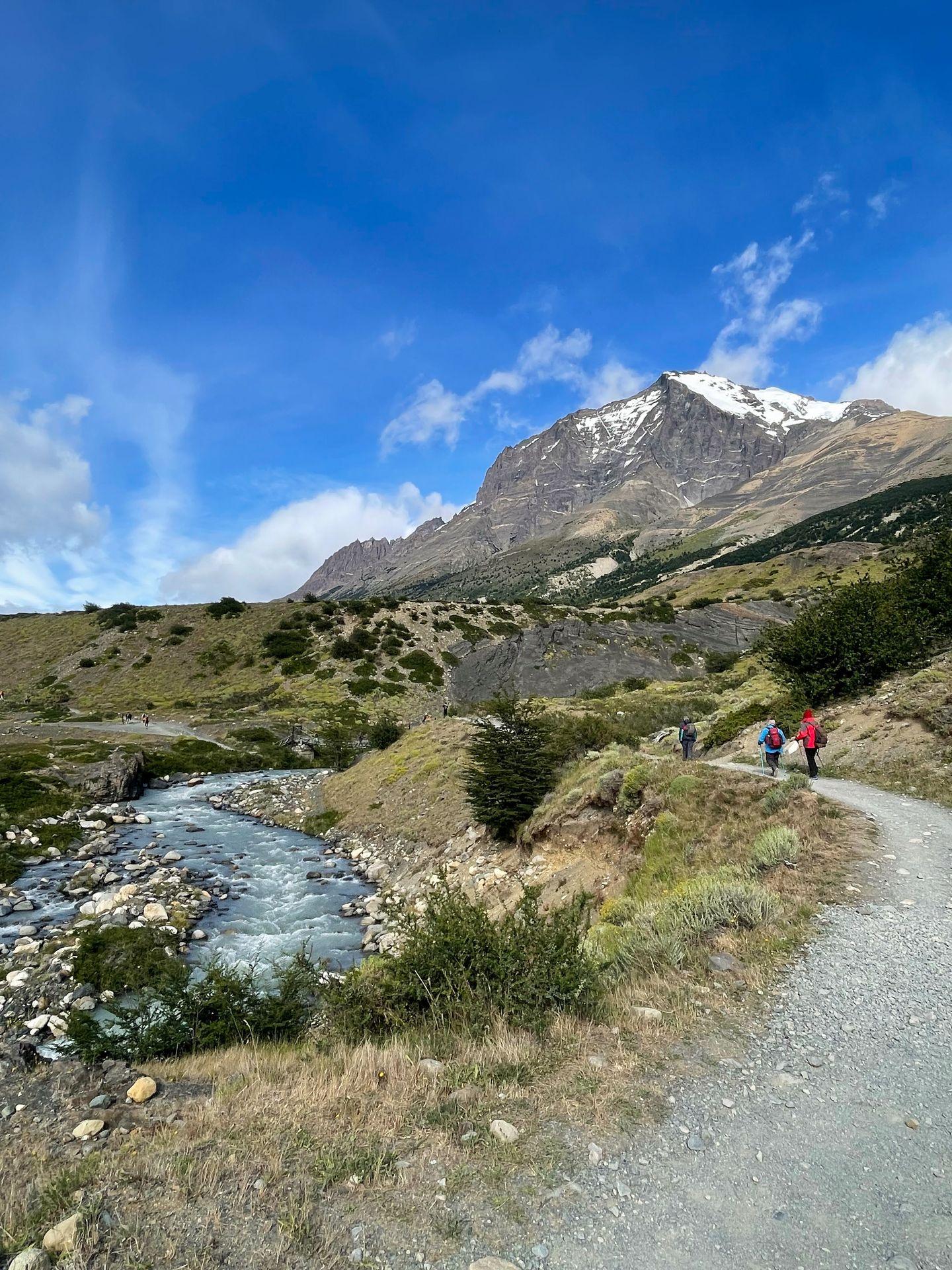
As you begin the trail, you’ll start with a short and flat walk back to Hotel Las Torres Patagonia. This is where most people stay to do a day hike up the Towers, and some people stay here for the first night of the W trek. It’s an option, but I definitely recommend staying in El Chileno instead if possible!
The trail is flat at first but you will quickly begin to gain elevation. A little under 2 miles from Hotel Las Torres, you’ll come to the first fork in the trail. Stay to the right as you continue up into the Windy Pass.
This portion of the trail gets a bit steep and there is a chance you’ll experience high winds. Luckily, there are some amazing views whenever you stop to take a break. Two miles from the hotel, you’ll reach a high point and then need to descend to reach El Chileno. El Chileno is located right next to the river and the perfect place to stop for lunch.
You can use the cubbies inside of El Chileno to drop off your heaviest gear before continuing up to the Towers. Depending on the time of day, I don’t recommend spending too long on a break at El Chileno. At some point in the afternoon, the park rangers will stop letting anyone hike up to the Towers, so be sure to stay on schedule.
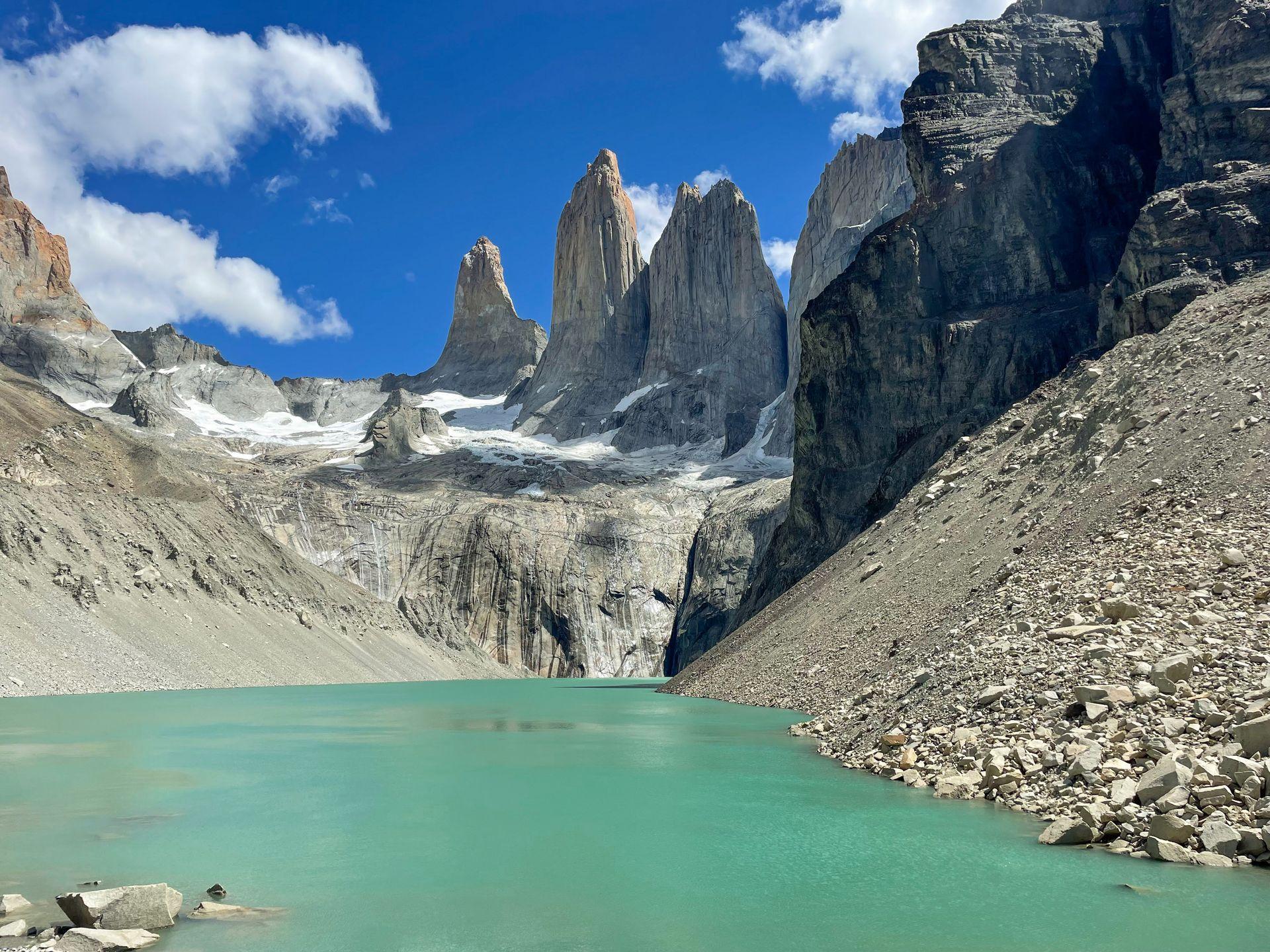
Since you will be staying at El Chileno tonight, go ahead and check in when you pass through. Your room will probably not be ready, but you can let them know you're there and be assigned a time for dinner.
The hike to the Towers gets quite steep for the last 0.7 miles. There is a bit of rock scrambling and a lot of dusty areas if conditions are dry. Be sure to watch your step and take your time. This is also a popular day hike so you’ll likely encounter crowds and need to spend a lot of time stepping aside for other hikers.
But the crowds and steep scrambling are worth it. At the top, you’ll be rewarded with an incredible view face to face with Lago Torres and the three Towers. The towers; Torres d'Agostini, Torres Central and Torres Monzino, are the most iconic sight in Torres Del Paine National Park, and certainly could be considered among the best views in the world. On a clear day, the towers stand tall as a backdrop to the bright turquoise lake below.
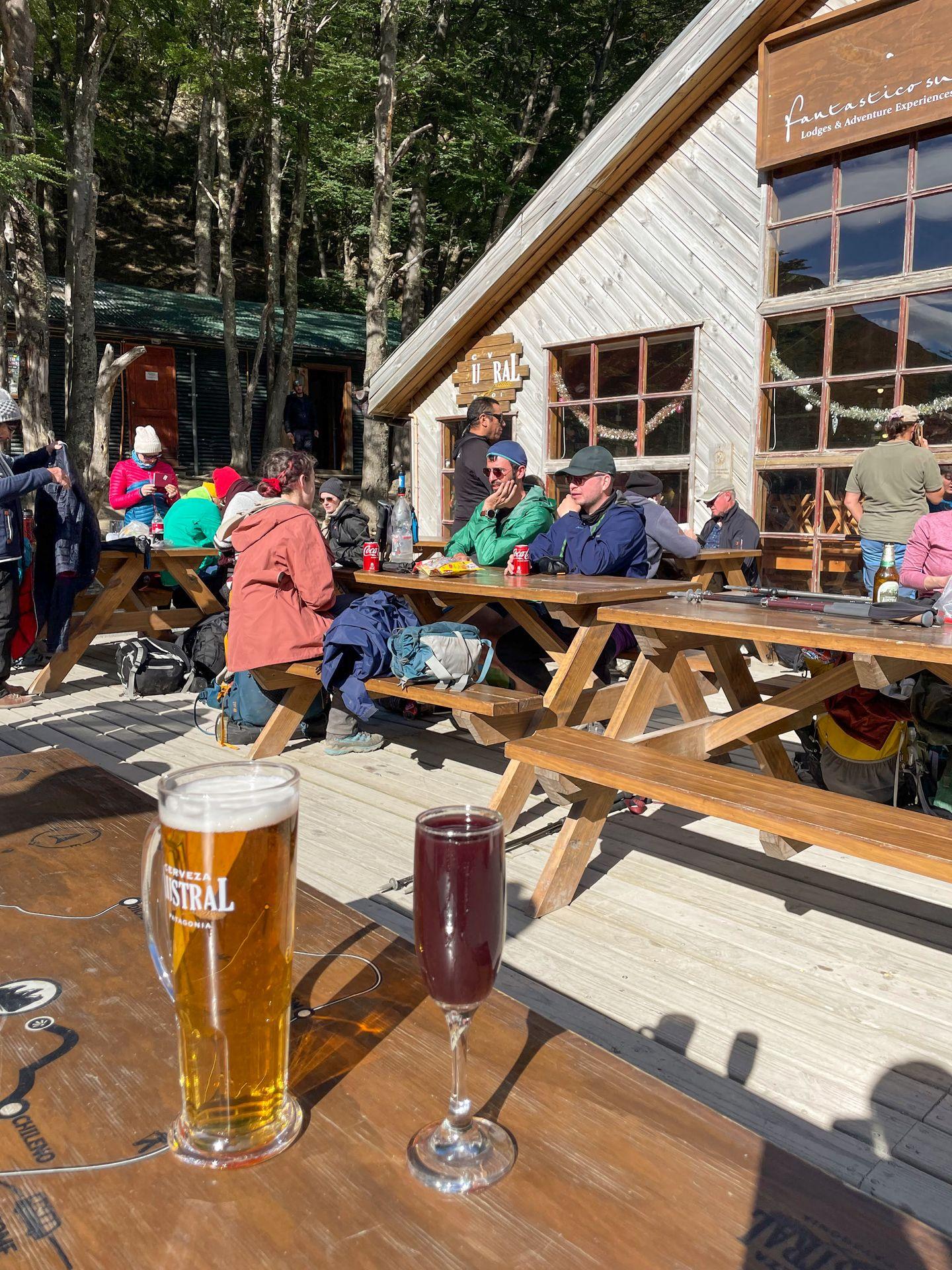
After enjoying the towers, make your way down to El Chileno for your first dinner of the trek. While El Chileno had my least favorite food of the W trek inns, I loved the atmosphere. Before or after dinner, you can hang out outside where there are picnic tables overlooking the river. Dinner at El Chileno is served at long tables and offers a great chance to get to know fellow hikers.
The rooms inside El Chileno were pretty basic. My room slept 6 people over 3 bunk beds (but there were only 4 of us for this night). There were shared bathrooms divided by gender down the hall. Overall, El Chileno is nothing fancy but I had no complaints.
- Hike from El Chileno to Los Cuernos
- 8.2 miles, 1,174 feet of elevation gain
On day two of the W trek, you’ll hike from El Chileno to Los Cuernos. In this itinerary, this day is tied for the easiest. The day will begin uphill as you hike out of the valley where El Chileno sits, but then it will be mostly downhill the rest of the day.
This trail includes many fantastic views of Nordenskjöld Lake. The lake is a brilliant aqua green color and there are some beautiful viewpoints.
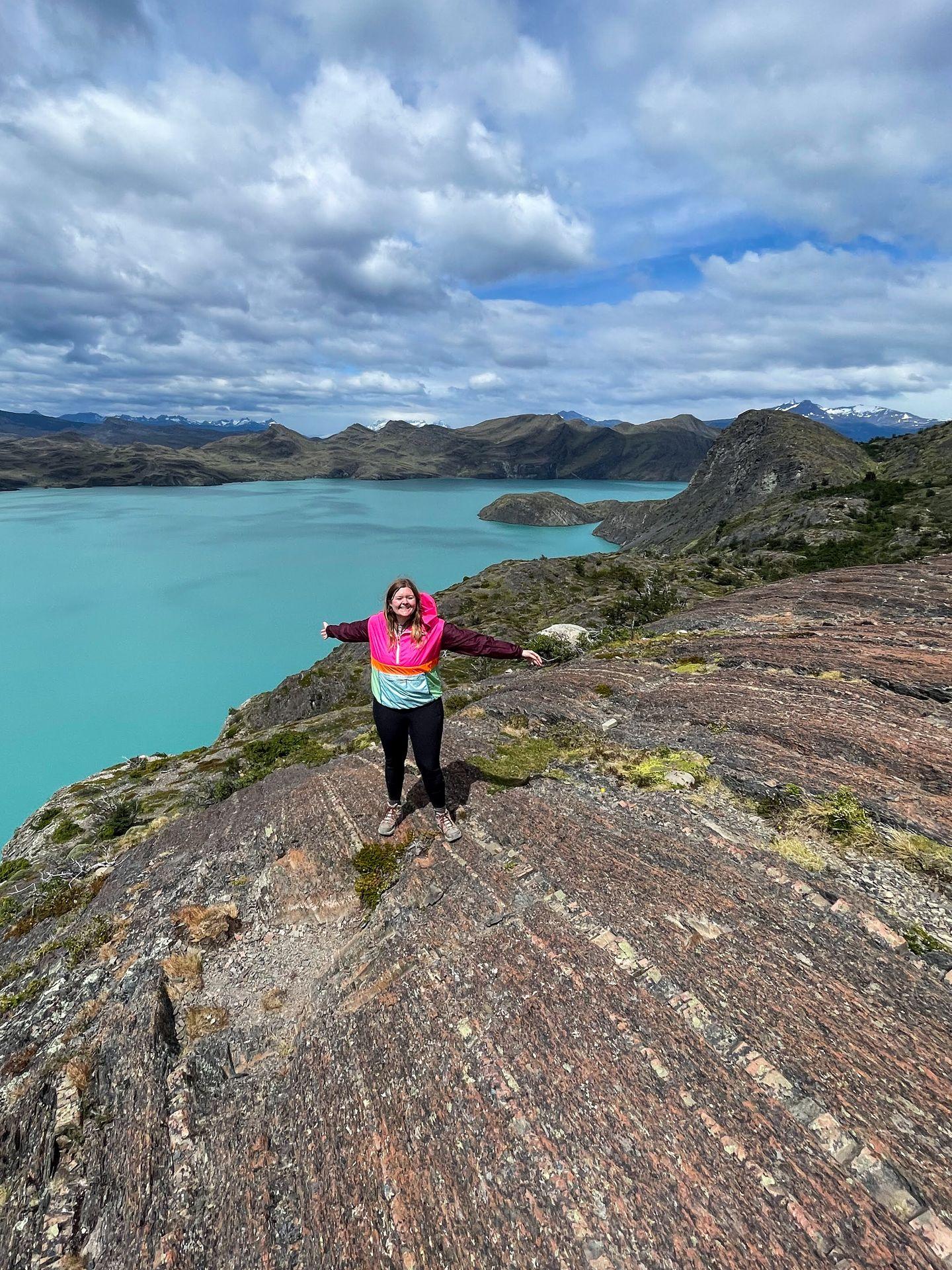
This is the day where I saw a large hoard of condor birds flying up above and sitting on nearby cliffs. Condor birds are the largest flying birds in the world and they’re fascinating to watch!
Los Cuernos is owned by the same company as El Chileno and has a similar vibe. I actually was here on New Year’s Eve, so we were served a special meal. They also threw a NYE party for the staff (that we were invited to as well). I’m not sure what it’s like on other nights, but the atmosphere was lively and celebratory. This meant it was loud and hard to sleep, so you may want to bring along ear plugs.
Los Cuernos also offers private cabins that sleep 2 people, so try to book one of these if you prefer things a bit quieter.
- Hike from Los Cuernos to Paine Grande and into the French Valley on the way
- 16.4 miles, 3,102 feet of elevation gain
Day three is the longest day of the W Trek. You will hike up into the French Valley, the center of the ‘W,’ to reach Mirador Britannica. Then you will continue onto the third inn of the trip, Paine Grande.
If you do the entire trail, it will be about 16.4 miles and 3,102 feet of elevation gain. I turned back early due to high winds and fog on this day, so I only went about 13 miles.
The trail starts out relatively flat and easy until you reach Camp Italiano. If you have a very windy day like I did, watch out for the beach areas. The beaches are very exposed and the wind almost knocked us over at one point.
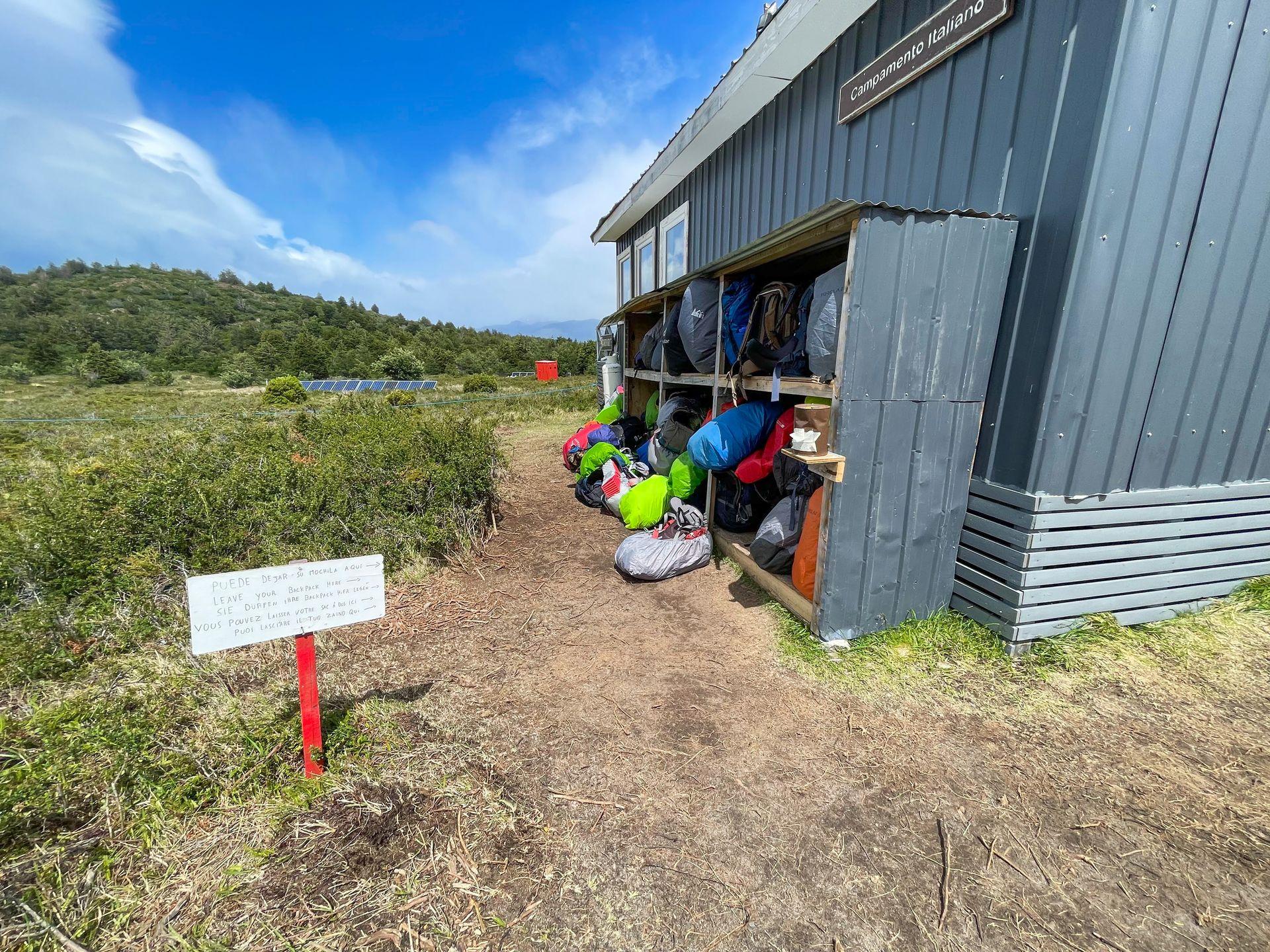
When you reach Camp Italiano, there are some outdoor shelves where you can drop off your heaviest gear. There was also a whiteboard here that had information on what time the viewpoints would close for the day and a warning about the high winds.
The hike up into the French Valley is steep at times, but felt more gradual than the hike to the Towers. You will go in and out of forest areas and viewpoints. Even if you just go part of the way, there are some fantastic views where you can admire the surrounding mountains and look for waterfalls, avalanches and glaciers in the distance.
There are four main viewpoints along the way. When I reached the second one, Mirador Valle de Frances, the wind was extremely strong, so many people turned around here. We went a little bit further, but decided to turn around before making it to the third.
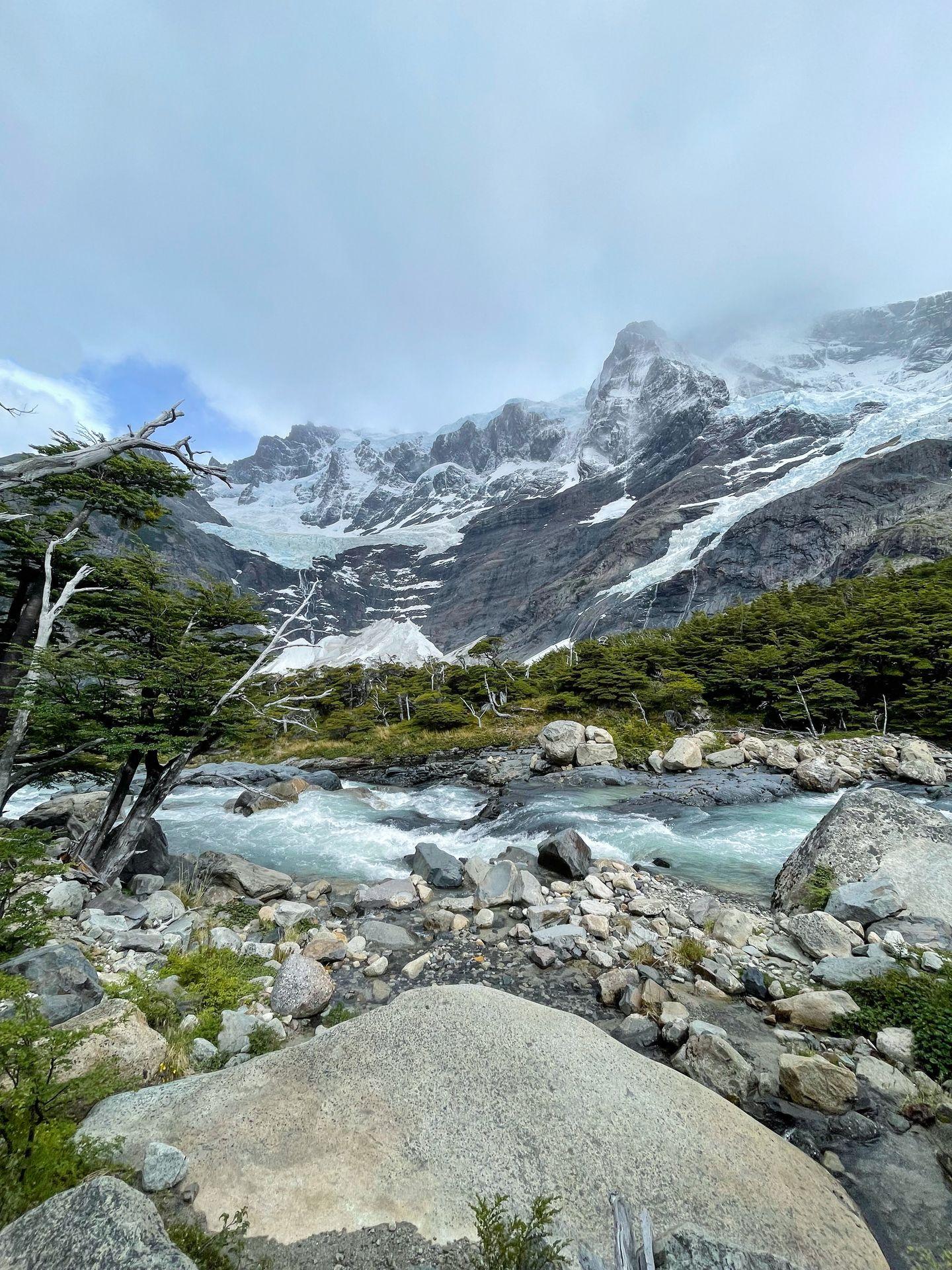
After returning to Camp Italiano to pick up your gear, it will be about 5 more miles to reach your inn for the night. It’s mostly downhill and relatively easy. However, the wind was very intense for me and made the miles feel quite long.
There was one suspension bridge crossing that felt particularly daunting, as the wind was shaking the bridge all over the place while we crossed over a river canyon.
You will also pass an area of wildfire damage. Unfortunately, there have been multiple cases of fires started from the mistake of tourists in the park, so please make sure to follow the rules. Open fires are strictly prohibited and camp stoves are only allowed to be used in designated areas.
After this long day, it’s a great feeling to reach Paine Grande. This inn feels nicer than the first two inns, as it’s newer and larger. However, what you gain in newness means that there is less of the great community feeling you get from the smaller inns.
The rooms here are equipped with two bunk beds and more comfortable bedding than Los Cuernos and El Chileno. They also have real lockers if you want to lock up any valuables. Dinner is served buffet style and there is a bar upstairs as well.
- Hike from Paine Grande to Refugio Grey. Optionally, hike up to the suspension bridges and a view of Grey Glacier.
- 6.9 miles, 1,319 feet of elevation gain
- Second hike is 5 miles with 1,014 feet of elevation gain
On day four, you’ll hike to the final inn of the trip, Refugio Grey. You also have the option to hike an additional few miles to see some suspension bridges and close up views of the Grey Glacier, which I highly recommend doing.
The first trail between the two inns is 6.9 miles with 1,319 feet of elevation gain. While it isn’t difficult, this was the windiest area of my trek. The wind made it difficult to move forward at times and definitely slowed us down.
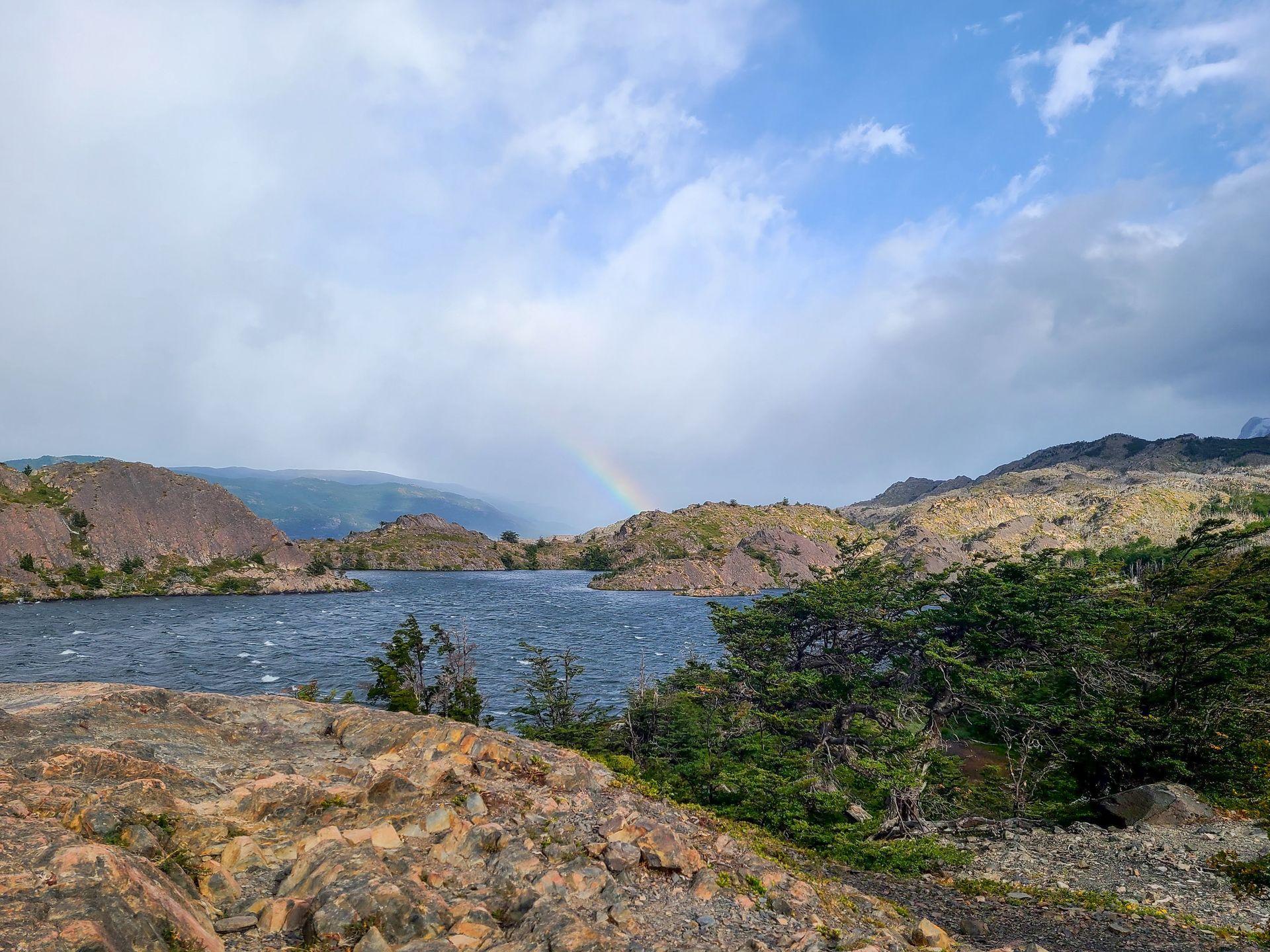
However, the trail has some fantastic views of Grey Lake and about halfway through you’ll start to see the Grey Glacier in the distance. The trail has multiple ups and downs, so you’ll have a nice variety.
At one point about 2 miles from the inn, there is a short portion of the trail where you’ll have to climb down a rock scramble that can be slick. It’s very doable if you have some hiking experience, but I found this to be one of the most technical portions of the entire W Trek.
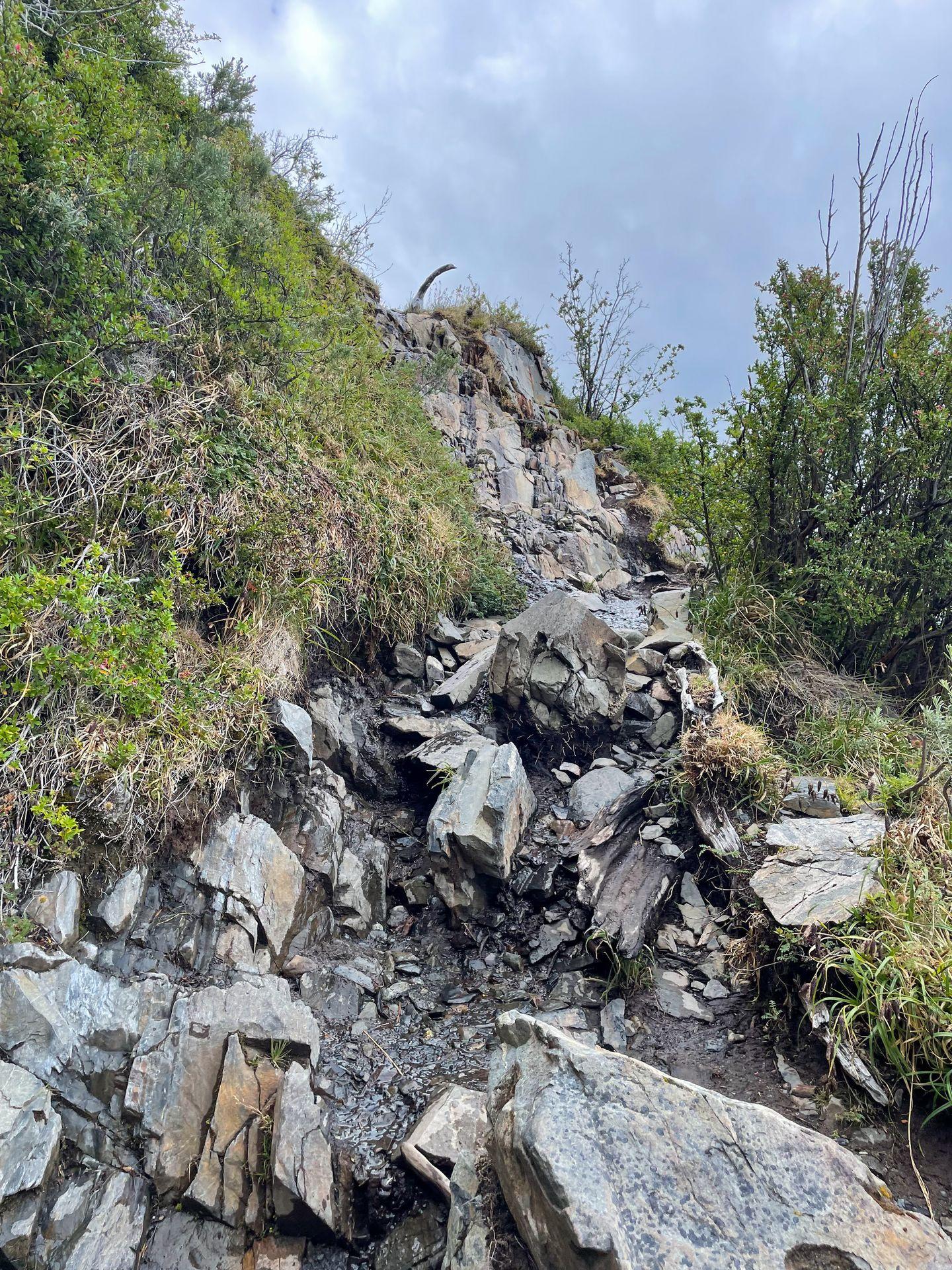
When you reach the Refugio Grey, there are a few excursions and additional trails you can choose from if you’re up to it. First, you have the option to kayak next to the glacier or go on a guided glacier trek. These activities cost extra and you should reserve them in advance if possible. We reserved the kayaking excursion, but unfortunately it was too windy for us to go out. It had been too windy to kayak for a couple weeks, so keep in mind that this cancellation is very common.
Additionally, you can take a hike up to see some incredible suspension bridges and a view of the Gray Glacier. This trail is about 5 miles with a little over 1,000 feet of elevation gain. It is part of the O Circuit, so you’ll likely see hikers on the O coming the other way.
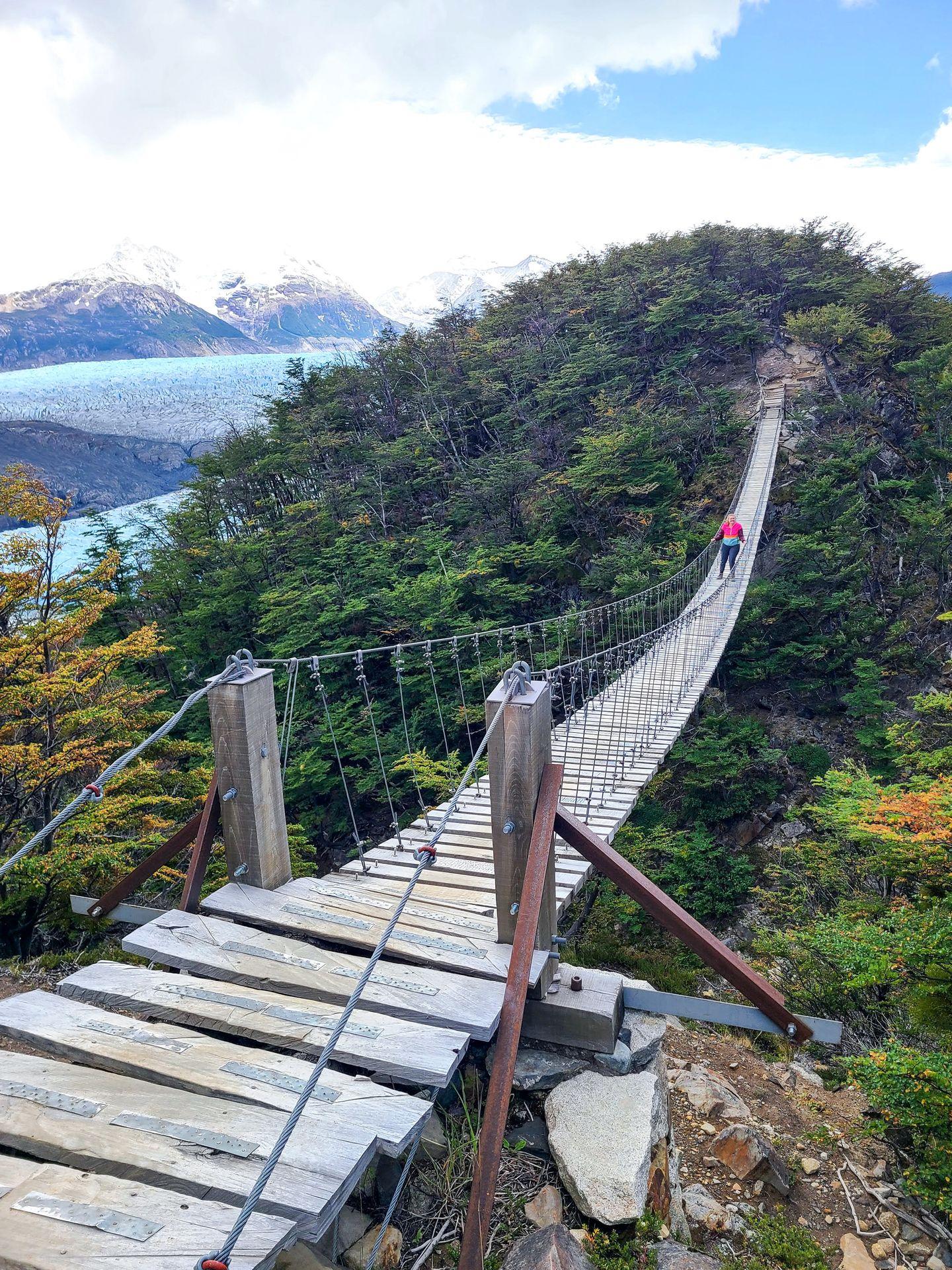
There are three suspension bridges you can hike to, but I only went to the first two.
The second bridge is especially magnificent. It is quite long and dangles 100’s of feet in the air over a large valley. On one side, you get a fantastic view of the glacier. On the opposite side, you can see a tall waterfall coming down from the mountains. I don’t recommend this if you’re afraid of heights, but it’s a really neat experience if heights don’t bother you.
If you aren’t up for the longer trail, there is also a viewpoint very close to the Grey Inn (a half mile) where you can get a nice view of the glacier.
After an additional hike, an excursion or some rest, enjoy your final dinner of the W Trek. I thought that Refugio Gray had some of the best food for dinner on the trip!
Day Five of the W Trek
- Hike from Refugio Grey to Paine Grande, take the catamaran across Pehoe Lake, take a bus back to Puerto Natales.
- 6.9 miles, 1,208 feet of elevation gain
On your final day on the W Circuit, hike back to Paine Grande to catch the Grande Catamaran. This is the same trail that you did on day four in the opposite direction, but you’ll have about 100 less feet of elevation gain. When you reach Paine Grande, line up to take the catamaran to Peduto.
There are actually catamarans from both Refugio Grey and Paine Grande, and they go different places. I was confused about this, so I’m going to explain the difference and the pros and cons of each.
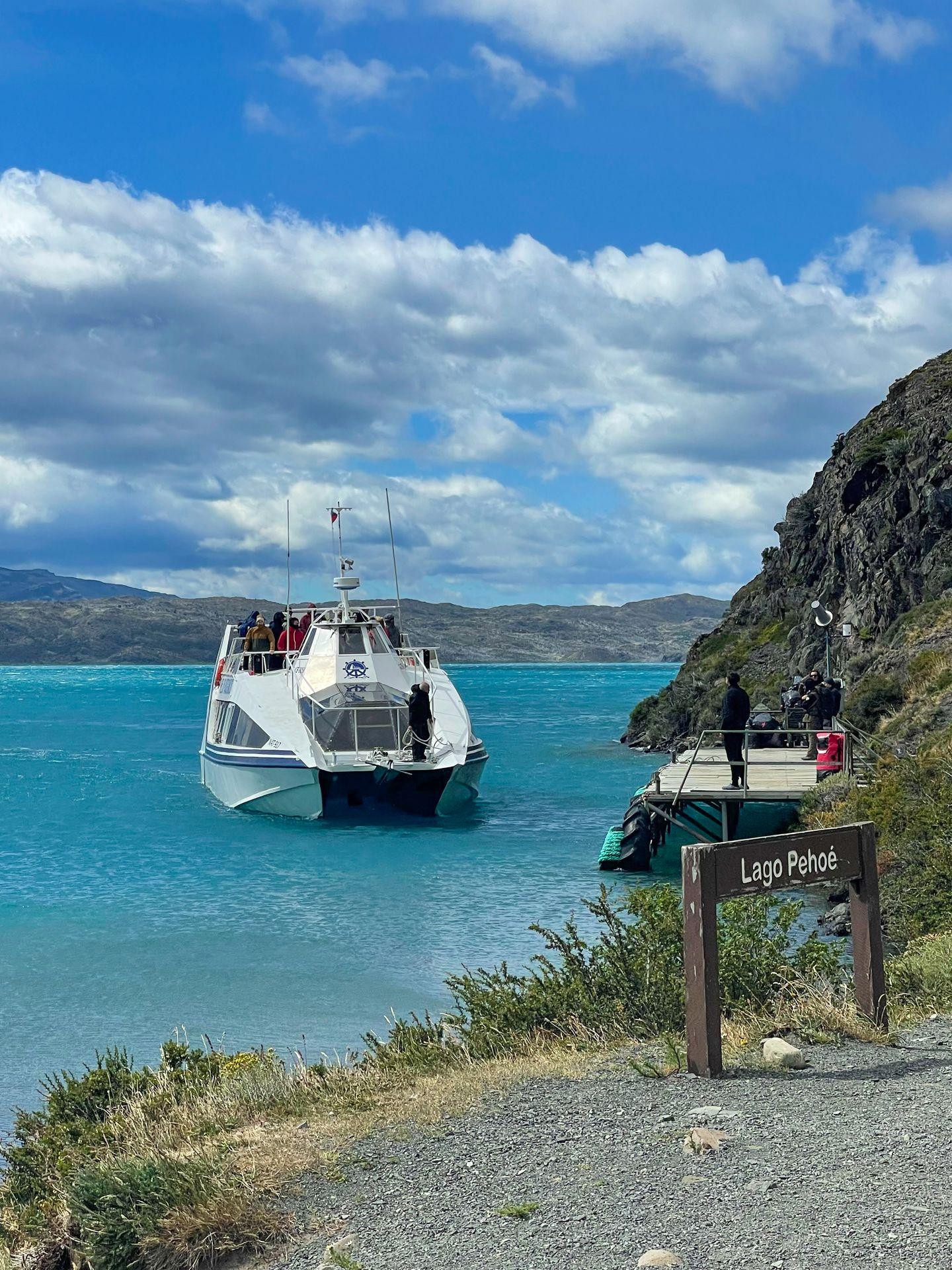
For the least amount of hiking, you can end your trek from Refugio Gray and take the catamaran across Lago Grey. This journey will take about an hour and costs $75 one way. It will take you to Hotel Lago Grey.
Pros of the Lago Grey Catamaran
- Less hiking! You get to leave from your final lodge via a beautiful boat ride.
Cons of the Lago Grey Catamaran
- It’s about 3 times the cost of the Lake Pehoe Catamaran.
- We were told that this boat is much more susceptible to delays and cancellations due to wind.
- It will bring you to the Lago Grey Hotel, which has fewer transportation options to get you back to Puerto Natales. You may need to stay at the hotel and arrange private transportation.
- This boat is not first come first serve like the Lake Pehoe Catamaran. You should make a reservation before your trek because it is likely to sell out.
For the reasons listed above, most hikers return from the trek via the Lake Pehoe Catamaran. The boat ride takes about 25 minutes and runs a few times a day. Check for the most up to date schedule at Paine Grande.
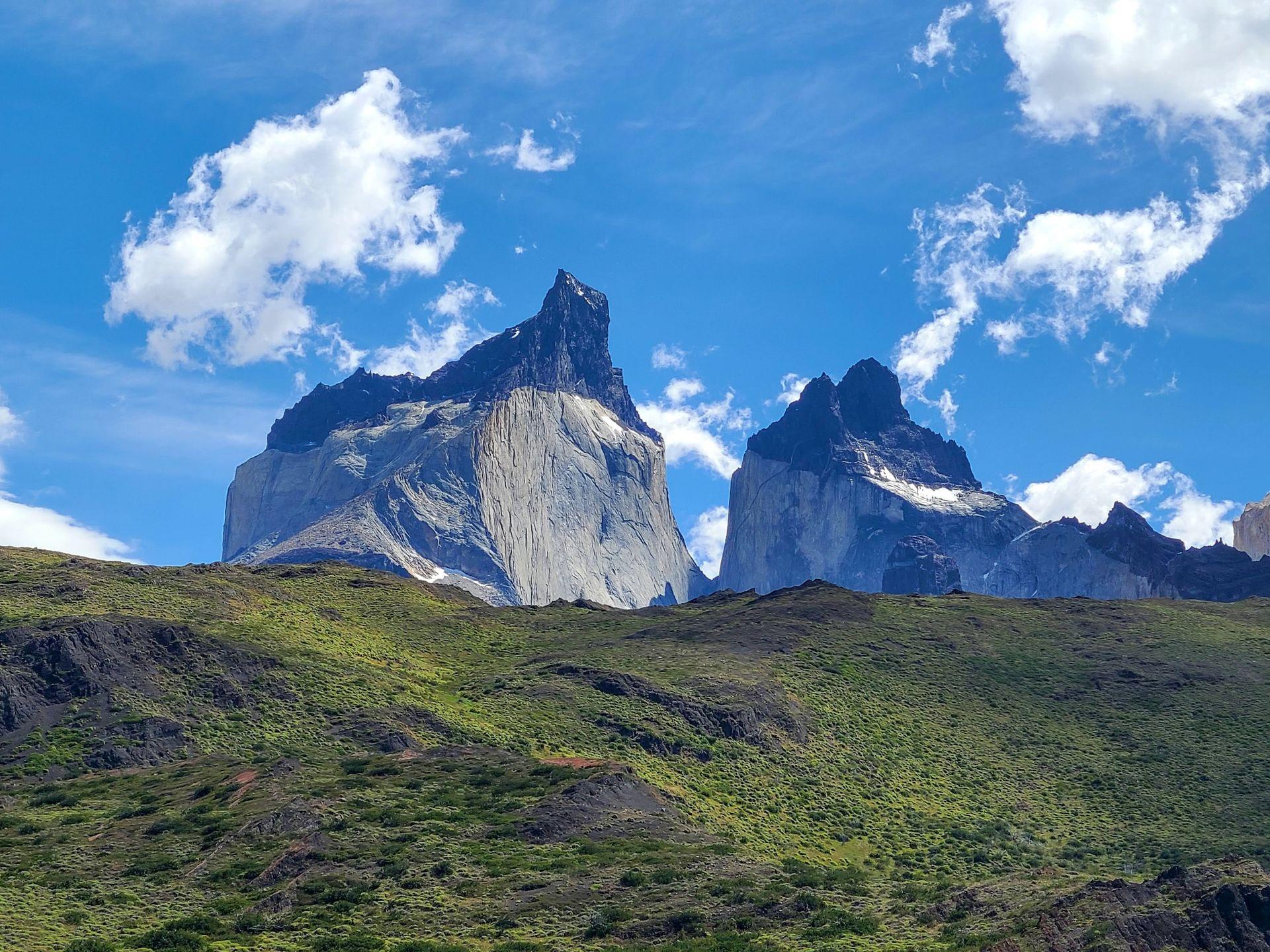
You cannot make a reservation for the Lake Pehoe boat. You’ll need to wait in line by the dock and board first come, first served. You also need to make sure you have cash - the boat requires $30 USD or $25 Chilean pesos per person, each way. During peak season, they take cash in US dollars or Euros as an alternative to Chilean Pesos.
The boat is quite large so you shouldn’t worry if there is a long line to board. Also note that even though there is a schedule, the boats do not always run on time.
The boat also has stunning views! If it’s a clear day, you’ll get a new perspective of the park and see incredible mountain peaks as you ride through turquoise colored water.
When you reach Pudeto, take a bus ride back to Puerto Natales to end your time in Torres Del Paine National park. There is a small cafe to wait in before your bus ride. You should make sure that you have reserved a bus ticket ahead of time.
I took the second ferry of the day back from Paine Grande (it was scheduled for 11 but ended up being closer to 12) and then waited about 2 hours in the cafe for my 2 PM bus ride. The cafe sold lunch items, coffee, beer and more. There is also a one mile waterfall trail you can enjoy if you have the energy!
When you reach Puerto Natales, celebrate your hard work with a delicious meal, a pisco sour and a nice hotel stay. I loved eating at Cafe Artimana, Cafe Kaiken and La Guanaca Pizza.
How Much Does it Cost to Hike the W Trek?
In December/January 2022/2023, we paid $872 per person to hike the W Trek. This included 4 nights of lodging, full room and board, the bus tickets to and from the park, the ferry at the end and the entry ticket into the national park. We had to pay about $37 extra for a special New Year’s Eve Dinner, so you can subtract that if you’re not going over Christmas or New Years!
Here is the cost breakdown:
Night 1: El Chileno - $125 per person for the bed with sheets, $88 per person for the food
Night 2: Los Cuernos - $125 per person for the bed with sheets, $124 per person for the food (This was New Years Eve so the food cost extra - they did something special!)
Night 3: Paine Grande - $92 per person for the bed with sheets, $61 per person for the food
Night 4: Gray - $92 per person for the bed with sheets, $61 per person for the food
Ferry to return from Paine Grande and end the trek: $30 per person (cash only)
Bus Tickets on Bus Sur between Puerto Natales and the national park: $10 per person each way. There is also a shuttle between the entry to the park to the actual start of the trek that cost $5 per person (chilean pesos only)
Entry ticket into Torres Del Paine National Park: $49 per person
You also have the option to pay extra for wifi, alcohol or extra food at all of the inns. They all take credit cards.
Prices are subject to change, these were the prices for the 2022 - 2023 season.
This does not include flights into Puerto Natales to start and end your trip. This can vary a lot based on where you’re flying from! Note that it is very likely to need to connect through Santiago first.
There are definitely ways to cut out some of the costs!
- You can camp instead of staying inside the inns. The inns all offer options to rent out tents so you don’t have to carry your own. Or you will pay the least if you carry your own.
- You can bring your own food instead of paying for full room and board. I would recommend bringing your own breakfast and lunch items and only paying for dinner if this is something you’re considering. I did not love the breakfast service because on some days, I wanted to leave earlier than breakfast was being offered.
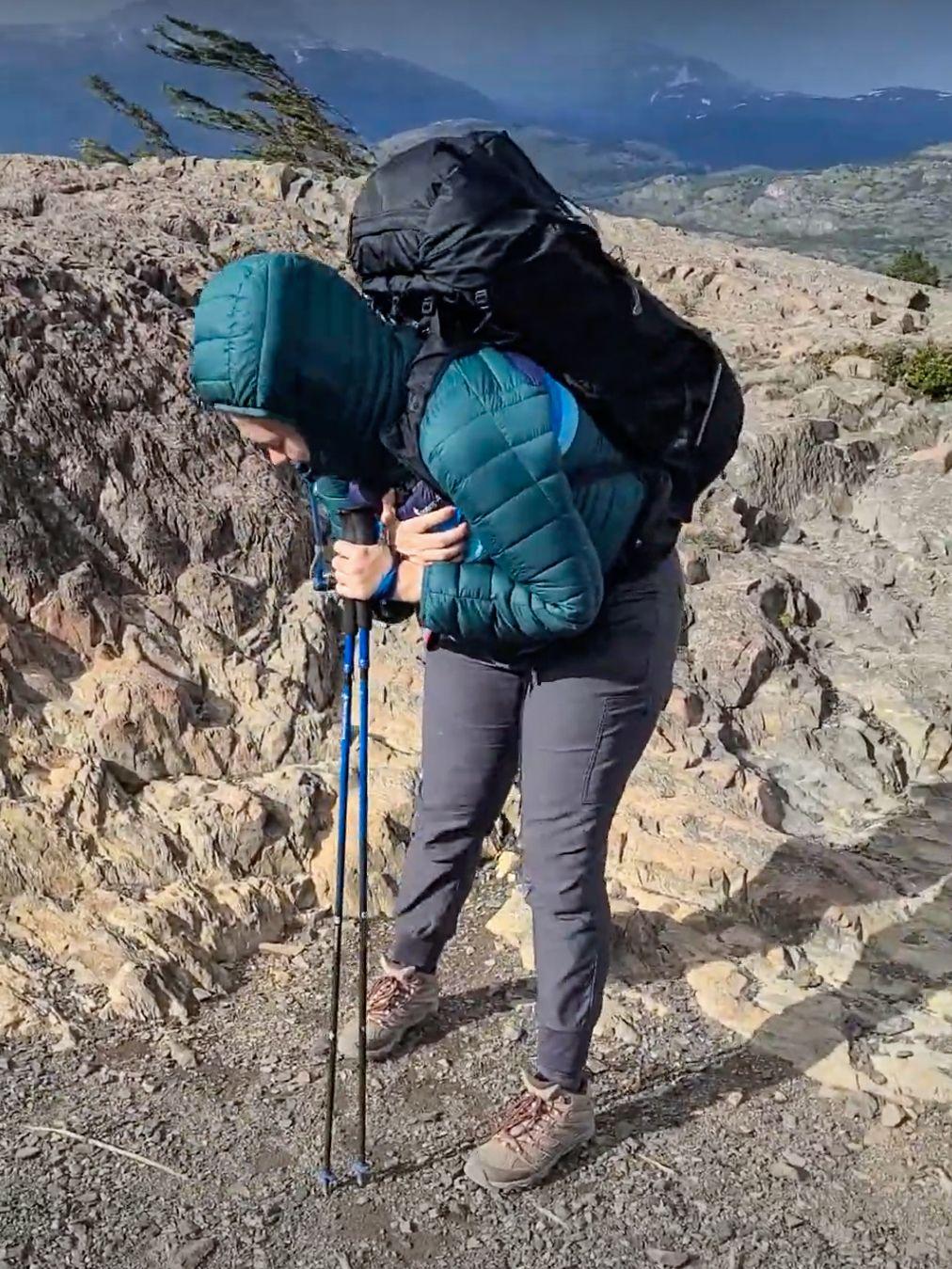
- A backpack that will fit your needs for carrying your things for 5 days and 4 nights. I carried a 40L backpack and thought it was the perfect size.
- A small day pack to carry the essentials for the times you can leave your bigger pack behind.
- A water bladder or water bottle.
- A water filter (We only filled up on water from the inns, which have drinkable water. But it’s good to have a water filter just in case. It depends on your comfort level and sensitivity.)
- Snacks! I did not need any extra food than what was provided from the full room and board, but it’s always good to have some options if there are items in the packed lunches that you don’t like.
- Hiking essentials including a first aid kit , knife, emergency shelter, headlamp and sun protection.
- Your passport, printed out tickets and confirmations, cash and credit card.
- Rain gear. Rain is common on the trek, make sure you have a good rain coat and a rain cover for your backpack.
- Layers. It might get cold, so I recommend bringing a warm hat and gloves.
- Sturdy hiking boots .
- Hiking socks and the clothing you’ll need for 5 days and 4 nights. Avoid cotton and bring items that are moisture wicking.
- Small towel for showering .
- Toiletries such as soap, moisturizer, toothbrush and whatever else you need.
- A second, lightweight pair of shoes to wear around the inns.
- A phone charger and portable battery.
- A buff to help protect against the dust on windy days.
- Insect repellent . I did not encounter mosquitoes, but I’ve heard during certain times of year they can be bad.
- A kula cloth to use instead of toilet paper.
- Trekking poles .
- Ear plugs if noise would bother you in the inns.
For a more detailed packing list for the W Trek, check out my W Trek packing guide !
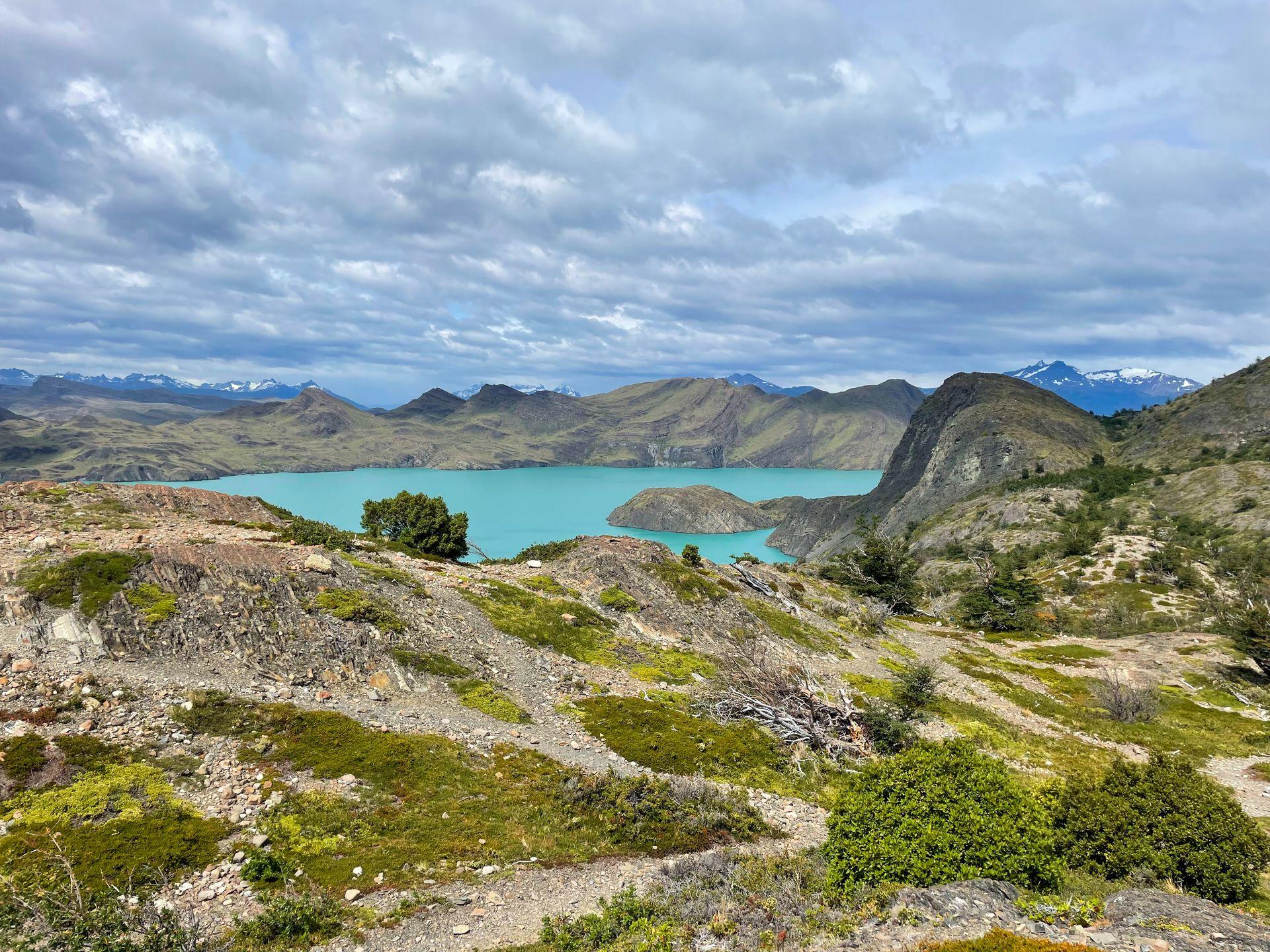
There are certainly many other things to do in Torres Del Paine National Park besides the W Trek!
If you’re up for a more challenging adventure, consider the O-Trek, which is approximately 68 miles and takes 6-10 days.
If hiking for 5 or more days isn’t your thing (or you have less time) but you want to see some of the park, consider some day hikes.
Day Hike Options Include:
- Mirador Las Torres, the most iconic view in the park, is often done as a day hike. Stay at the Hotel Las Torres and the trail will be about 12.5 miles.
- Take the catamaran from Hotel Grey and hike up to the suspension bridges for a view of Glacier Gray. The hike from Refugio Grey is about 5 miles.
- Hike to the Salto Grande from Pudeto, the trail is 0.9 miles.
- Hike to the Rio Pingo waterfall from Hotel Grey, the trail is 5.3 miles.
There are many more day hike options, these are just a few! You can also go horseback riding, fly fishing or biking or a variety of other activities.
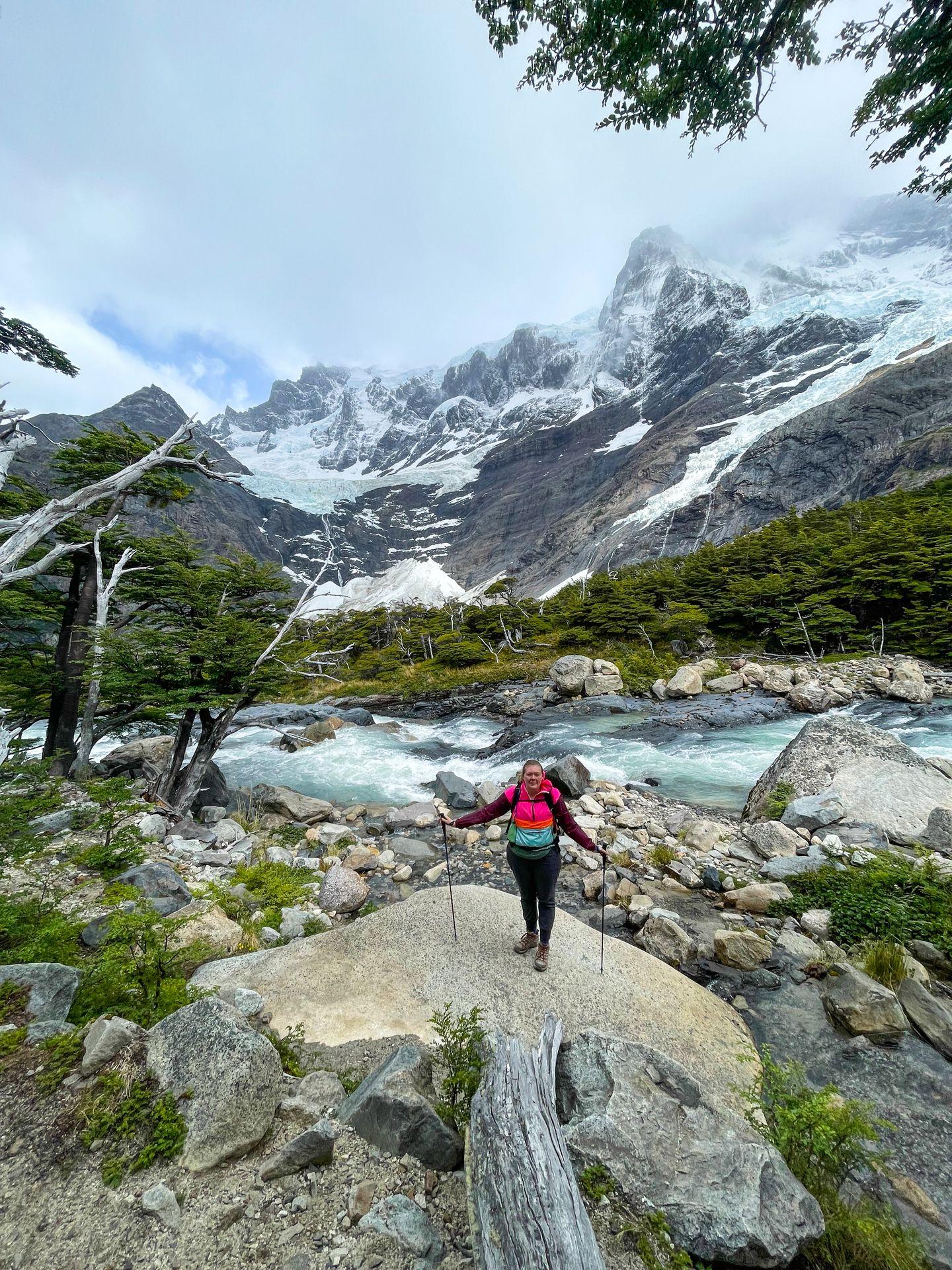
How difficult is the W Trek?
The trail itself is not difficult on the W Trek. It is well marked and there are just a couple areas of rock scrambling. However, the difficult part is hiking a long distance every day and carrying heavy packs. You should be used to hiking 10+ miles on a day hike and carrying a heavy bag.
Can you hike the W Trek solo?
While I did not hike the W Trek solo, I would be very comfortable doing so. I thought that the trail was well marked and felt very safe. With the shared dorms and communal dinners, it’s really easy to meet other hikers and make friends along the way.
Would you recommend the W Trek or doing day hikes?
My experience on the W Trek was one I will never forget and I think it is very much worth doing! If you have the time, I highly recommend doing the entire W trek instead of just day hikes.
Is the water safe to drink in Torres Del Paine National Park?
The water tends to be safe to drink from the water sources at the inns. Some hikers also drink water directly from streams, but I’ve heard mixed reviews and that is not something I would recommend. I recommend bringing a water filter just in case, but it all depends on your comfort level and sensitivity.
Are there mosquitoes on the W Trek?
I did not encounter mosquitoes on the W trek, but I’ve heard that others have during certain months when it is rainy and warm. Bring insect repellent just in case.
What is the hardest part of the W Trek?
I thought the hike to the Base of the Towers was the hardest part of the trek. It’s a long day with a steep climb.
What kind of wildlife will you see on the W Trek?
I saw very little wildlife on the trek, but I did see several condor birds! There are gauchos (llamas) in Torres Del Paine National Park, but it’s rare to see them on this trail. You will likely see them along the roads driving in and out of the parks instead.
Other animals that live in the park but are rare to see are pumas, huemul deer and foxes. There are no bears in Torres Del Paine, so there is no need to carry bear spray.
If you have dreamed about a trip to Patagonia, I hope this guide will help you make it a reality! The W trek and a visit to Torres Del Paine National Park a bucket list experience that you’ll remember for years to come.
If you’re flying all the way to Patagonia, I recommend more adventures than just the W Trek. After the trek, I drove into Argentina to continue my trip. Check out my 2 week Patagonia itinerary and my guide to renting a car in Patagonia to continue planning!
For more Patagonia guides, check out these blogs:
- The Ultimate 2 Week Itinerary for a Patagonia Road Trip
- A Guide to Renting a Car and Driving in Patagonia
- 30 Tips for Hiking the W Trek
- A Detailed Packing List for the W Trek
Thanks for Reading!
Save to Pinterest!
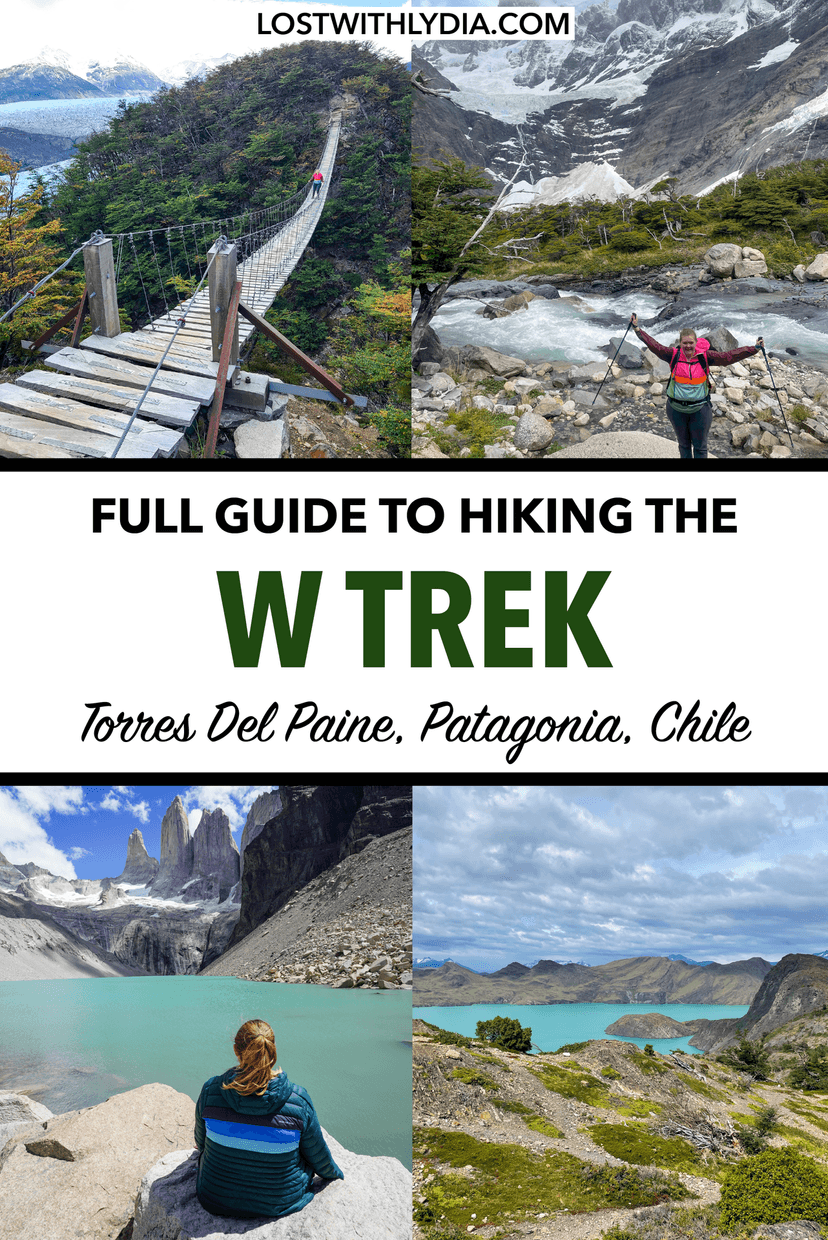
The Best Things To Do in the White Mountains, NH in the Fall
Where to Stay in Yellowstone (Comparing 3 Lodges in the Park)
Let's stay in touch!
Join the Lost with Lydia email list to get monthly travel guides and tips!
You also may like
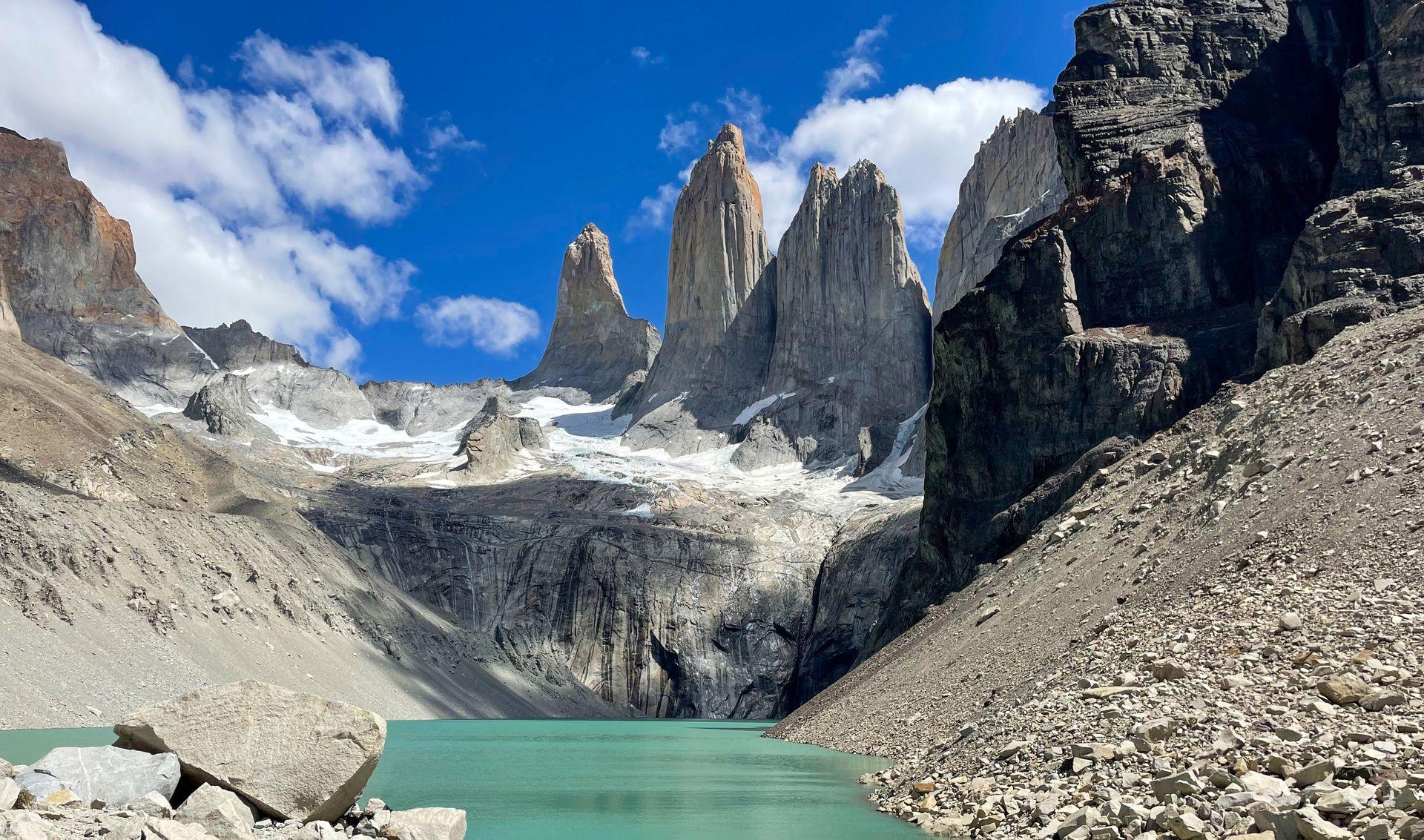
30 Tips for Hiking the W Trek in Patagonia (Self-Guided)
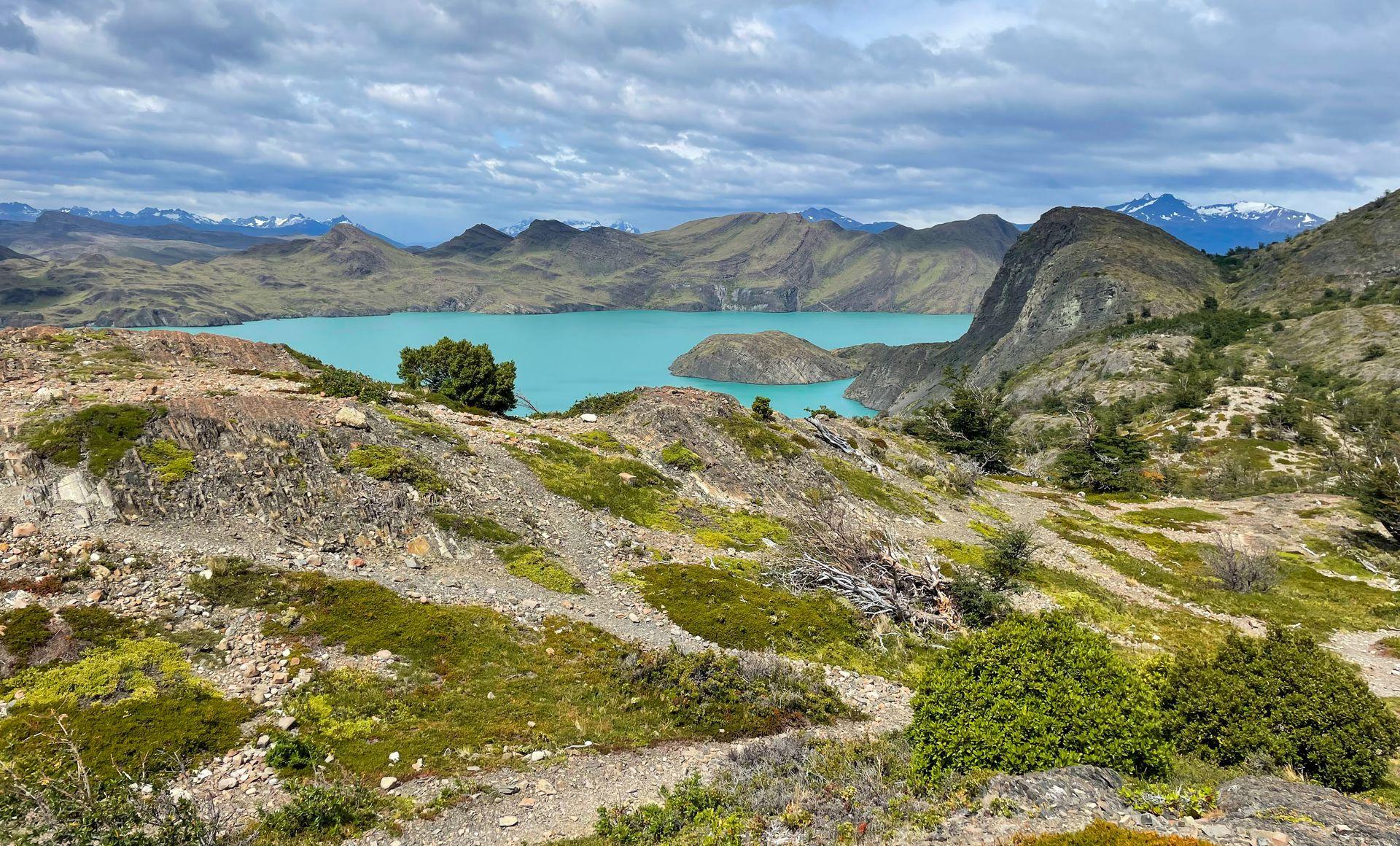
A Detailed W Trek Packing List: The Ultimate Patagonia Hike
Lonely Plan-it: how to organize a hike on Chile’s famous W Trek in 2023

Jan 14, 2023 • 8 min read
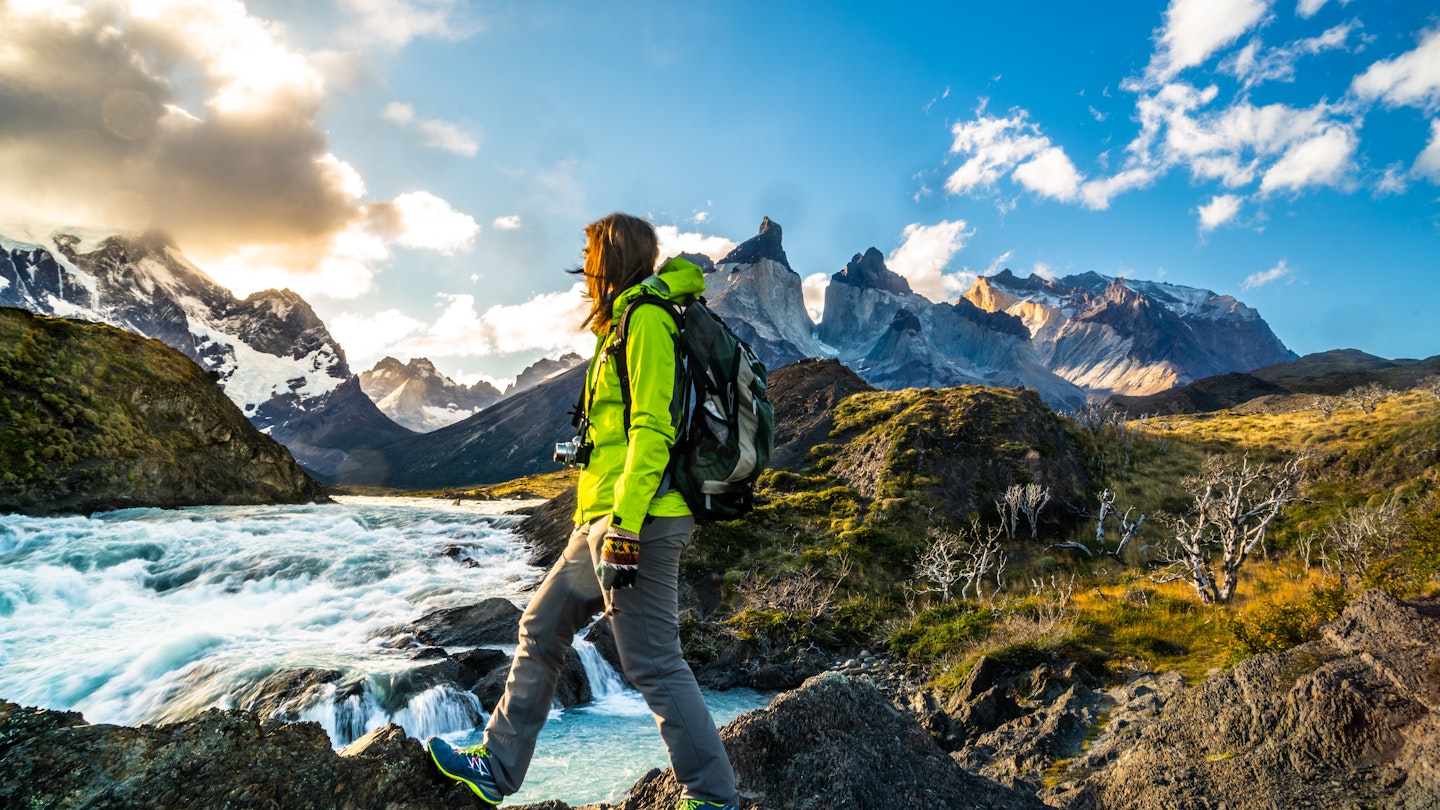
Tackling the W Trek in Chile’s Parque Nacional Torres del Paine is a challenge and a thrill © sharptoyou / Shutterstock
In this series, we take you step by step through how we planned some of the most complicated travel adventures, so you can recreate them yourself with ease. Here, writer Sarah Reid takes you through how she planned her hike on Chile’s famous W Trek.
Tracing the foothills of the snow-capped Paine Massif in southern Chile ’s famous Parque Nacional Torres del Paine , the W Trek one of the world’s most epic multi-day tramps. Named for the shape sketched by the 80km (50-mile) trail, the W Trek immerses you in some of Patagonia’s most mesmerizing scenery, with turquoise lakes, oozing glaciers, gnarled subpolar forests and wildlife spotting opportunities aplenty (you might even spot a puma).
While it’s easy to follow the well-trodden if not always well-marked trail, planning the expedition is complicated by the numerous ways to access the route and the multiple reservations required before you set out. Having recently experienced the trail in two different ways, I’ve figured out all the tricks you’ll need to plan one of the most memorable hikes of your life. Here’s what I learned.
Step 1: Time it right
Find the best mix of good weather and accommodation availability.
Hiking the W Trek hinges on the availability of the half-dozen currently operational refugios (hostels with limited dorm beds, a restaurant, hot showers and campsites) dotted along the route, which can book out months in advance during the November-to-February peak season. This is the warmest time of the year comes with the added bonus of long daylight hours – but it can also be very windy. The less-busy shoulder seasons (March to April and September to October) offer increased camping availability and more agreeable weather (potentially; this is Patagonia, after all). A guide is required for a wintertime hike (May to August, when refugios are closed). Wildlife, including pumas, can be spotted year-round.
To get to Torres del Paine, you’ll need to travel to the small, beautifully situated gateway city of Puerto Natales . You can fly here (or to nearby Punta Arenas ) from Santiago , take a four-day ferry trip from Puerto Montt or travel overland from Argentina (a 5.5-hour bus ride from El Calafate to Puerto Natales). From Puerto Natales, expect a two-hour bus ride to the eastern end of the W Trek, and a three-hour bus ride followed by a 45-minute ferry to the western end.

Step 2: Decide which direction to hike in
You can start or finish your trek with one of the hike’s most epic views.
The W Trek can be hiked from east to west or vice versa, independently or guided, and you can take as many days as you like (pending refugio availability). Hikers with a good level of fitness will find it’s an achievable four-day independent hike. Factor in an extra day to add a glacier kayaking or ice-trekking excursion departing from Refugio Grey (arrange in advance; more on this below).
The benefits of hiking east to west include frequent daily bus services from Puerto Natales (from 7am) to the trailhead. You’ll also knock off the challenging hike to Mirador las Torres , at the base of the three granite towers that give the national park its name, on the first day. Hiking in this direction also means you don’t have to worry about securing a spot on the first ferry of the day across Lago Pehoé to access the western end of the W (critical for a four-day itinerary), as ferry tickets can’t be booked in advance. The early ferry (9am) only operates from November to March.
The beauty of hiking west to east is the opportunity to spend your last night at Refugio Chileno, making it easier to catch the sunrise at Mirador Las Torres on your final day and be back in Puerto Natales by dinnertime (finishing at Paine Grande gets you back to town closer to 10pm). With Patagonia known for its strong westerlies, hiking eastward also keeps the wind at your back for most of the journey.
Step 3: Consider your booking options
Reserve your accommodation, transit and park pass in advance to simplify your life.
This is where it gets tricky. The two refugios at the trail’s western end (Paine Grande and Grey) are operated by Vertice Patagonia , which also runs glacier trekking and kayaking tours. The other four refugios (Francés, Cuernos, Chileno and Central; there’s an additional bunkhouse near Central called Torre Norte) are operated by Las Torres Patagonia . You can book preferred campsites and dorm beds (some refugios also have rooms) separately through their websites, or make reservations at camps run by both operators in a single booking via Booking Patagonia .
Meals, pre-pitched tents, sleeping bags and mats can be prebooked for additional fees, pushing the cost of a four-day hike from as little as $62 (camping costs only; wild camping is forbidden) to around $400 if you book all the extras (and it’s worth doing so if you’re not keen on carrying all your supplies, including cooking equipment). Booking bus tickets to and from Puerto Natales in advance is also recommended; Bus Sur services both ends of the trail.
An easier if more expensive option is to book an all-inclusive package. These come in all shapes and sizes, ranging from classic unguided through-hikes, to hikes along sections of the trail each day with a guide then shuttling back to an off-trail camp or lodge each night. (Note that it’s difficult to complete all legs of the W Trek as day hikes given the volume of backtracking required to the two exit points.) Local operators offering good-value unguided through-hike packages with an east-west itinerary (about $1000) include Chile Nativo and ChileTour Patagonia . Las Torres Patagonia and Vertice Patagonia also offer packages with accommodation at their own properties (a through-hike is only possible with the former). International operators including G Adventures and World Expeditions also offer through-hike packages.
You’ll also need to book a multi-day national park pass via the CONAF website ($35), which will be checked at the entrance to the park.

Step 4: Prep for the adventure
Find the perfect gear for your adventure.
With the entire trail located between 100-900m (330-2600ft) above sea level, there’s no altitude to factor in on the W Trek. But it’s the ever-changing Patagonian weather, along with the uneven, often-exposed trail, that will likely test you. Layers are key, and a waterproof jacket, rain pants and pack cover are essential year-round.
Expect to have next-to-no cellular reception throughout the journey. Wi-fi coupons are available for sale at refugios (provided the router is working) but it’s more fun to stay disconnected and mingle with fellow hikers at the bar instead; every refugio has one. Be mindful when packing that everything you carry into the national park must come out with you – the only rubbish bins at refugios are designed for toilet paper. With a limited number of power points in refugios for charging devices, packing spare batteries is a good idea.
Step 5: Nail the trail
Be adaptable to conditions to get the most out of your journey.
Days on the trail can be long on a four-day hike; set out by 8am in autumn and spring to arrive in camp well before nightfall. If you’ve booked meals, most refugios have two sittings; book the first sitting when you arrive in camp each day to ensure an early night, and early start the next morning.
On foggy days, reconsider rising early to hike to Mirador las Torres for sunrise. You might also wish to reassess the mostly uphill return hike from Mirador Francés to Mirador Británico (the middle arm of the “W”) in poor weather, though I hiked the latter in average conditions and enjoyed it, particularly as I spotted a pair of endangered huemul deer right below Mirador Británico. Consider leaving non-essentials in a dry bag at Italiano (a CONAF-run camp not currently open for overnight stays) on your way up, as you’ll pass this camp again on your way back down.
If you’re making good time between Paine Grande and Valle Francés (French Valley), consider veering off the main path to hike the lesser-tramped alternative trail around the slightly more scenic eastern side of Lago Skottsberg, which adds about 30 minutes to the trip. Turn left at the first bridge after Italiano if you’re coming from the east, and head right at the fork after the first bridge you cross if you’re coming from Paine Grande.

If I could do it all again…
I booked a last-minute four-day through-hike package on my first W Trek experience. I hiked east to west in March 2022, and camped at Central, Cuernos and Paine Grande, and this itinerary was perfect for me. I’ve since hiked sections of the trail on a guided multi-day, multi-sport tour with Chile Nativo, with superb perspectives on Torres del Paine that complemented my first experience.
If I were to do the W Trek again, I’d aim to tackle the extended version of the trail called the O Circuit, ideally in late September, as I found the weather superb and the crowds thin when I visited then. I’d cut costs by making independent bookings, and I’d book my meals again (though extra comforts are not available at all refugios on the O Circuit).
Since my feet were soaking from the second day onward, I’d also wear waterproof boots; pack fewer snacks, as the boxed lunches were sufficient; and go easier on the Carménère (Chilean red wine) at the refugio bars. Did I mention you can order pisco sours, too?
Explore related stories

Jan 8, 2024 • 11 min read
From Andean treks to whale watching off Patagonia, here are the top things to do in Argentina.

Feb 8, 2023 • 4 min read
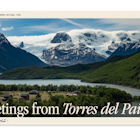
Feb 7, 2023 • 5 min read
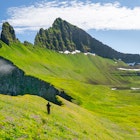
Dec 6, 2022 • 10 min read

Oct 5, 2022 • 6 min read
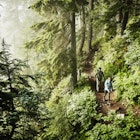
Jul 29, 2022 • 15 min read
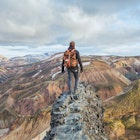
Jan 25, 2022 • 8 min read

Jan 7, 2022 • 9 min read
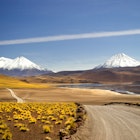
Jan 5, 2022 • 6 min read

Dec 13, 2021 • 11 min read

The ultimate guide to the Torres del Paine W Trek in Chile
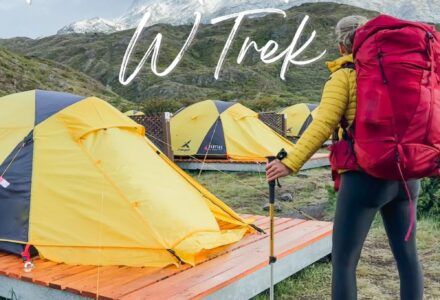
The W Trek in Chile is one of the hardest things I’ve ever done. And that’s coming from someone who thought it would be a good idea to cycle across the entire country of Jordan.
Now that we’ve got that out of the way, let me tell you why hiking in Torres del Paine National Park is also one of the most rewarding travel experiences I’ve had.
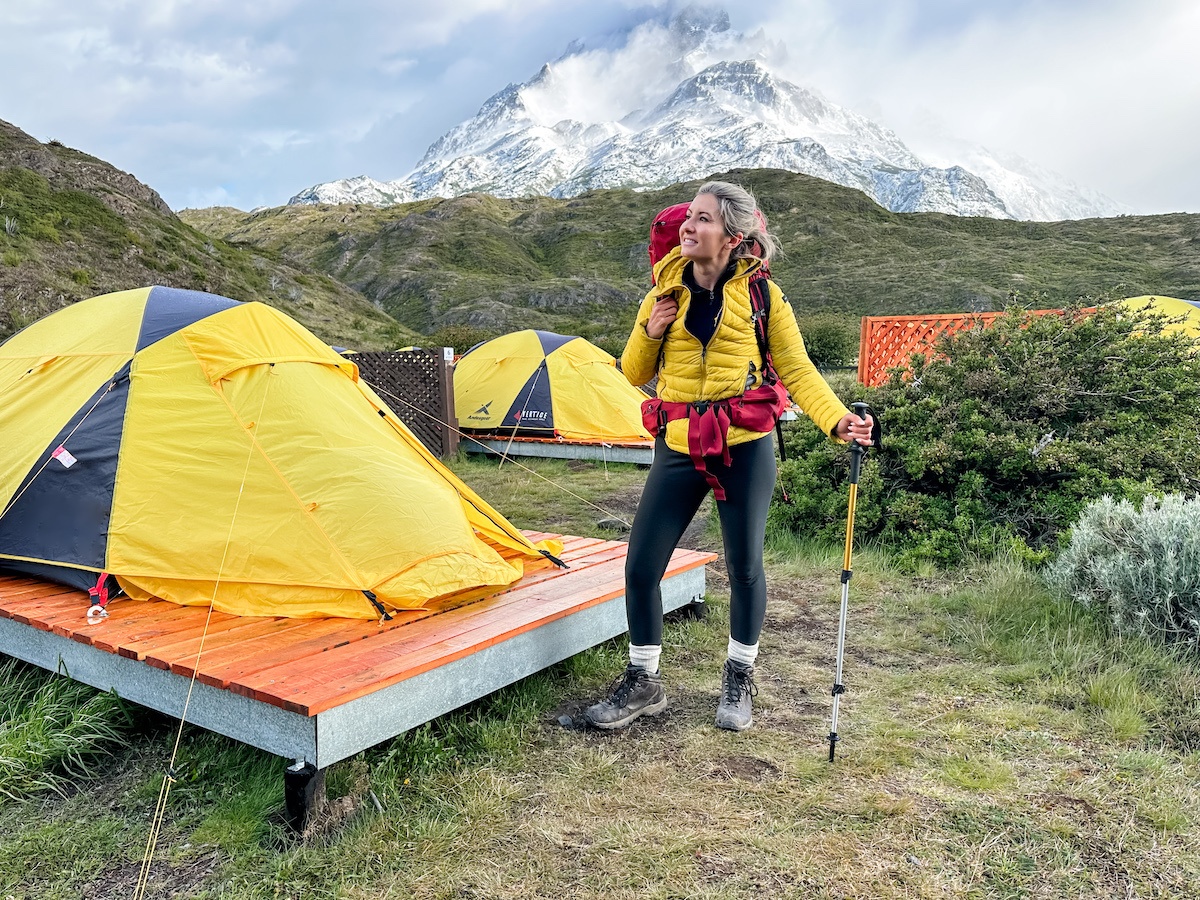
It’s rare to find an adventure that pushes your physical limits every single day, has you cursing under your breath more times than you can count as you face yet another sloshy water crossing or steep incline with a fully loaded pack on your back, and leaves you with aches, sore muscles and a few bruises on account of the inevitable stumbles over rogue rocks.
Yet, at the end of this multi-day grind, the feeling of accomplishment is unmatched. You just trekked through freaking Patagonia, one of the most remote and picturesque places on the planet!
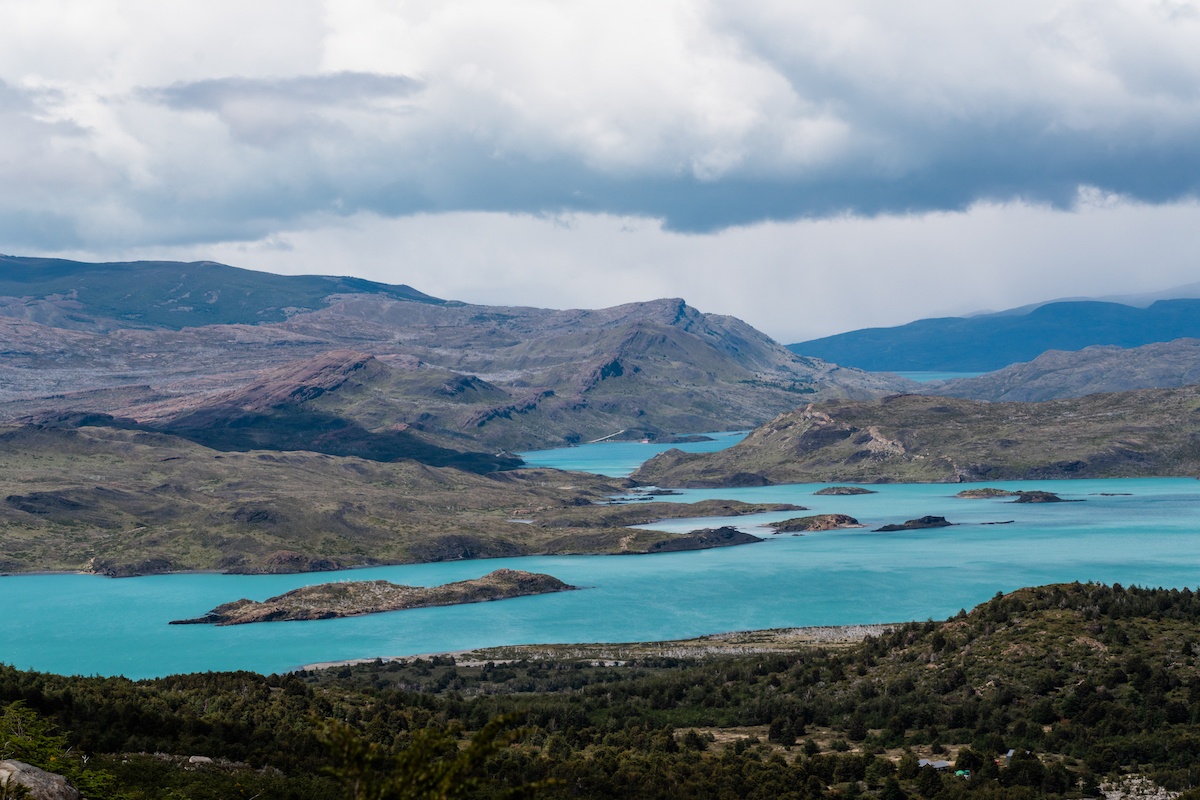
The scenery is stunning, the logistics and conditions are challenging, and your body is pushed to exhaustion with very little rest time.
Not only will you learn how capable your mind and body really are, but there’s the added bonus of not feeling guilty at all when indulging in a slice of chocolate cake and glass of Carmenere at a refugio at the end of each day. Because my god will you ever burn a lot of calories.
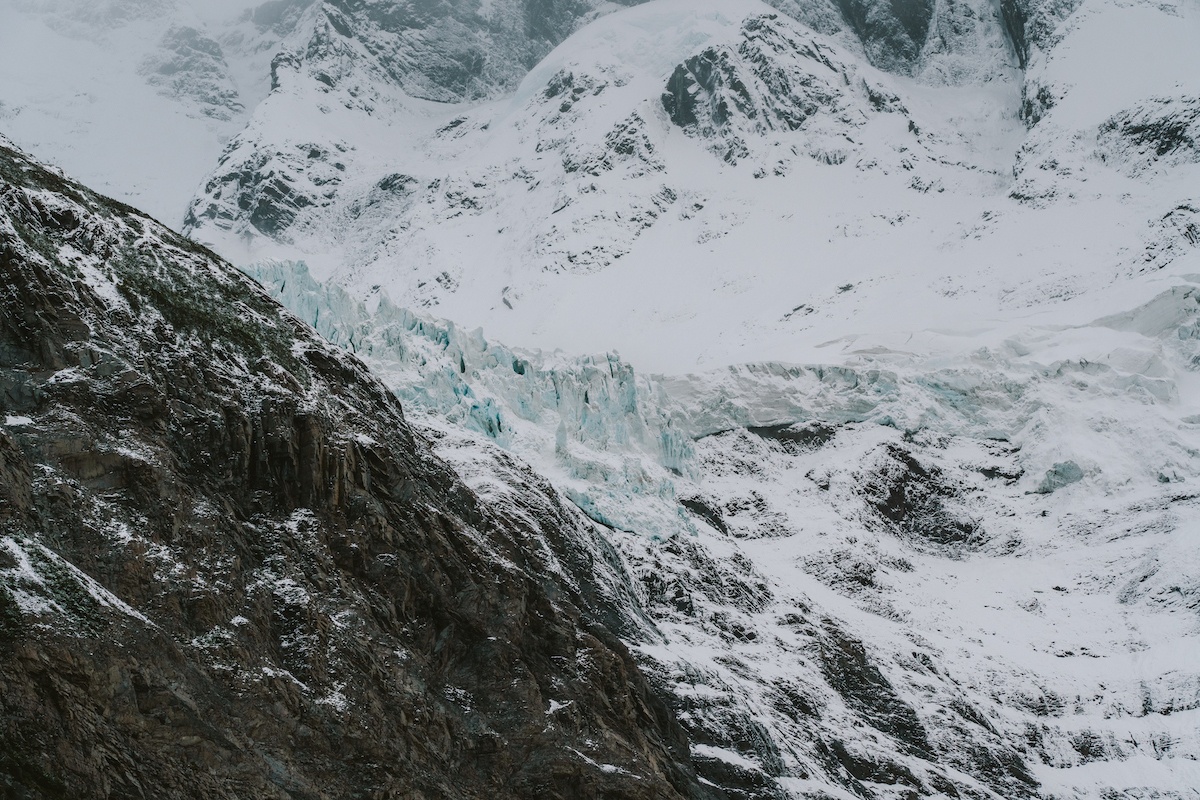
Is this trip for everyone? No.
Is it epic and unforgettable? Absolutely.
Here’s everything you need to know if you’re thinking about tackling the Torres del Paine W Trek in Chile.
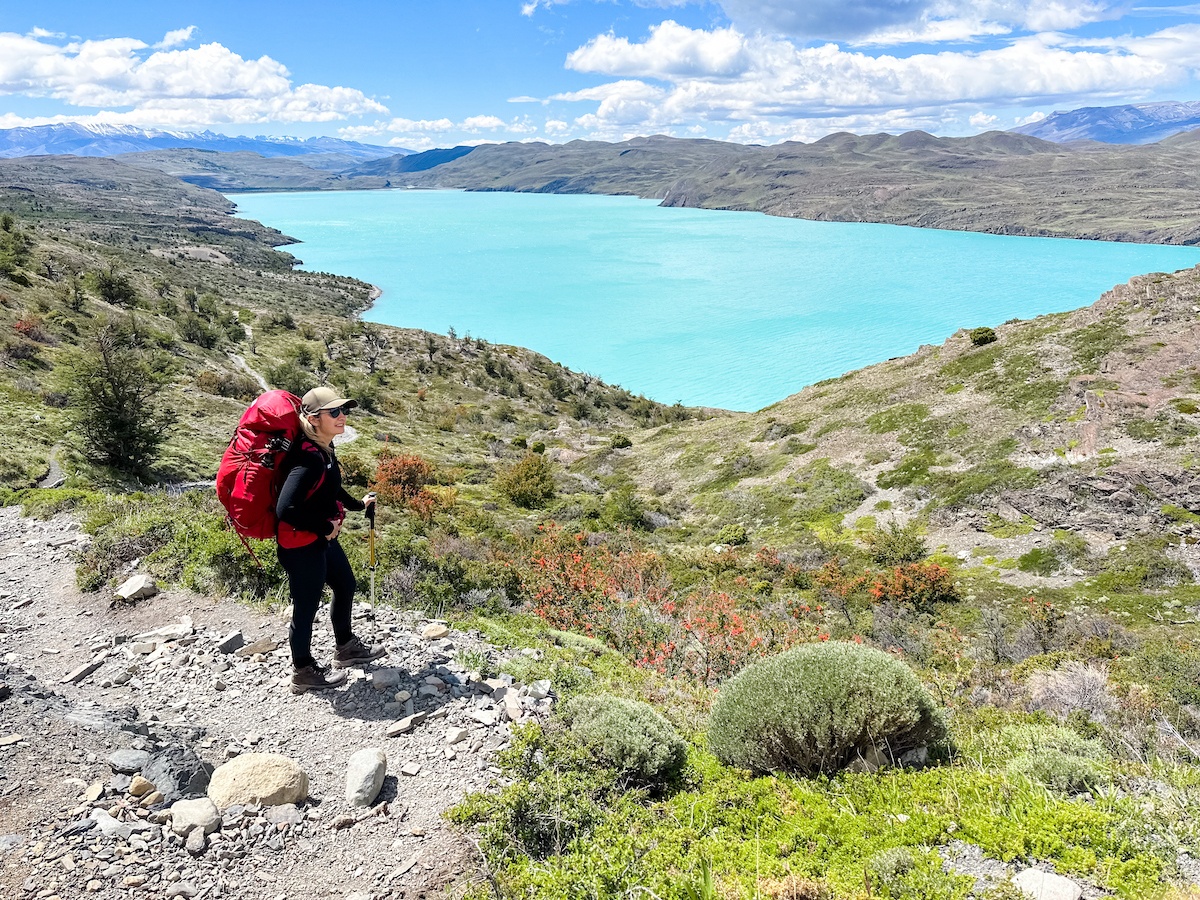
The Patagonia W Trek route
The W Trek takes four days to complete, and while its exact length seems to change depending on who you ask or which map you look at, the general consensus is that the trail is about 64 kilometers (40 miles) long.
Expect anywhere from six to 12 hours of hiking each day, more than 100,000 steps (my Apple Watch logged 125,458 to be exact) and of course countless photo-ops.
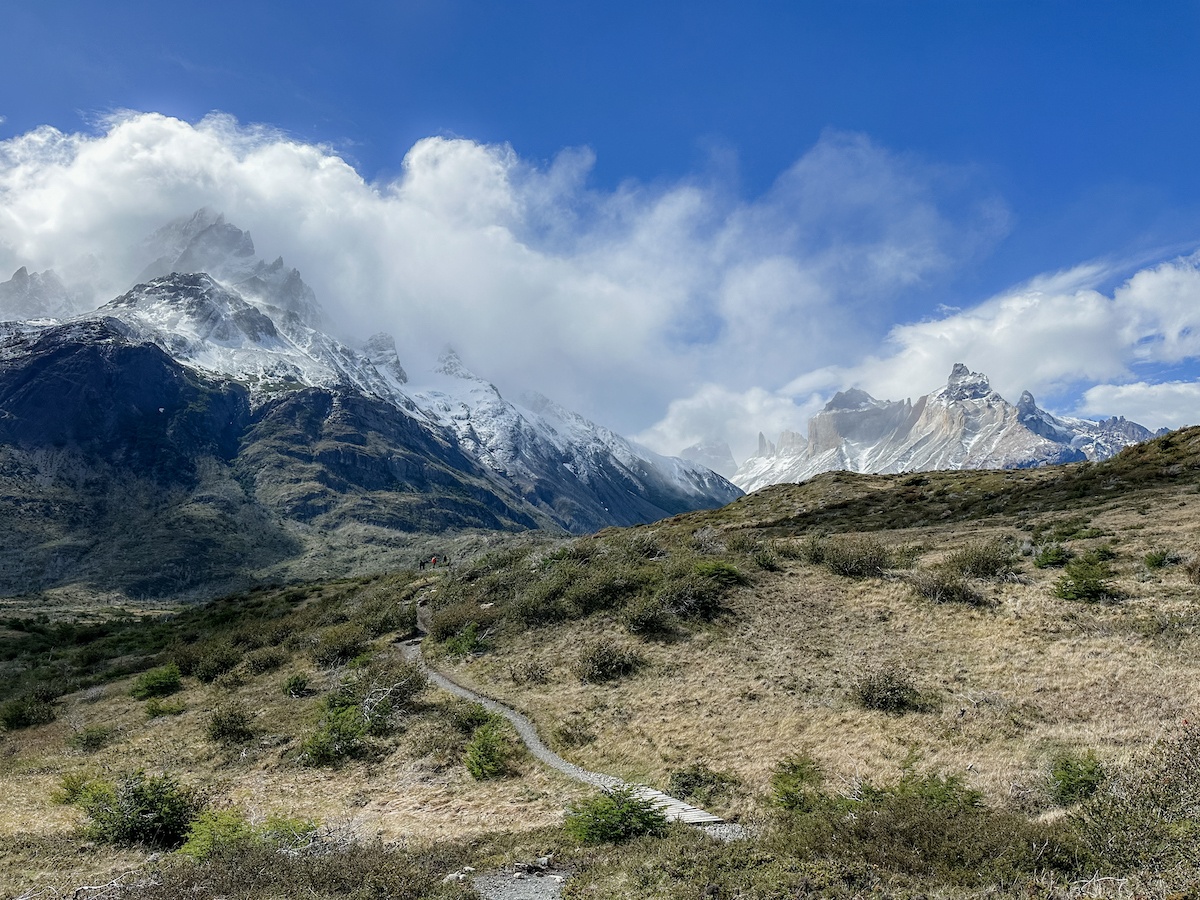
This is the most popular way to hike Patagonia, and those who are up for even more of a challenge can continue along the O Circuit which takes about nine days to complete the 122 kilometer, counter-clockwise loop.
This W Trek map outlines the exact route:
The W Trek in Torres del Paine can be done in either direction, starting from either the Torres del Paine Welcome Center on the east side or Lago Grey on the west which requires a boat ride over.
Deciding which side to start from simply comes down to preference and logistics, with the availability of refugios (the campsites that hikers stay at each night) being the most important to account for.
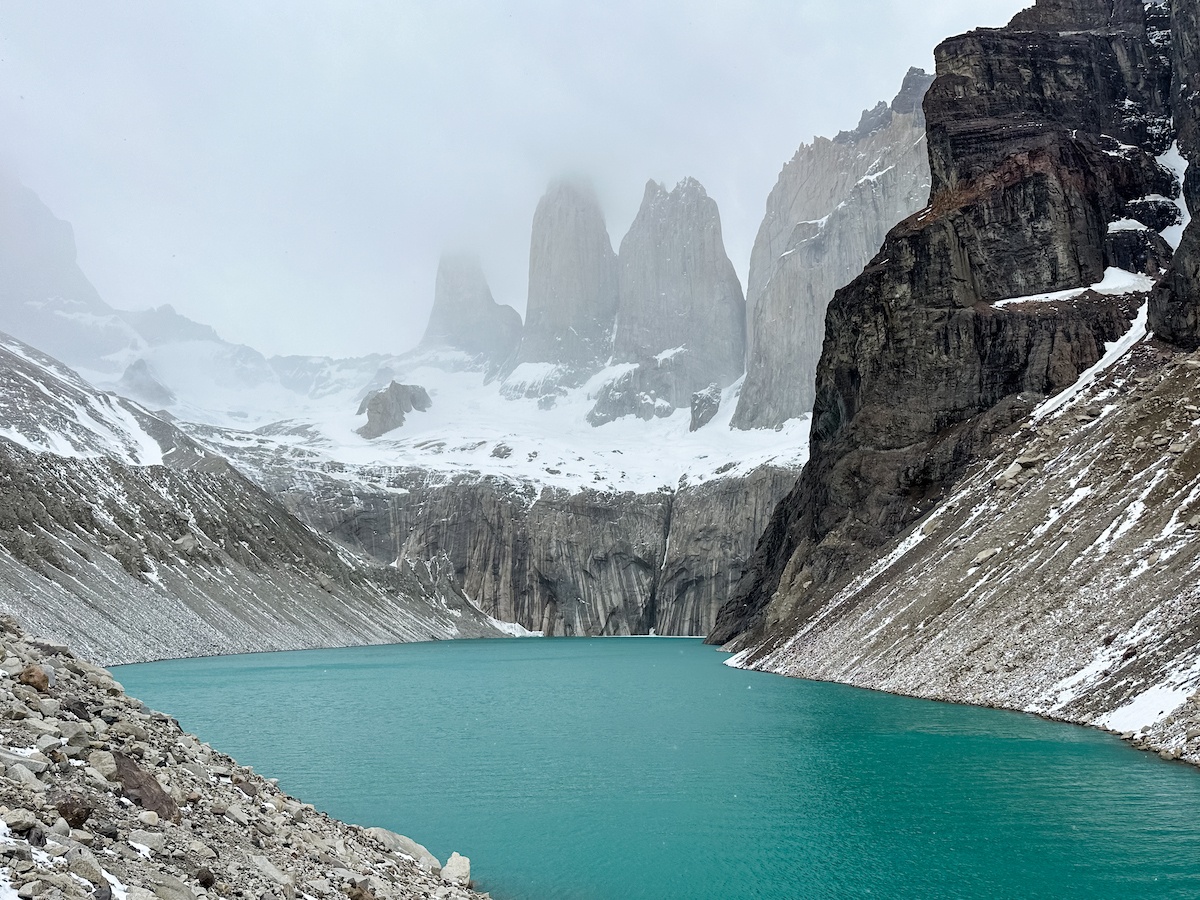
Another factor is when you want to take on the Mirador Base de Las Torres hike: this is the view you’ll see on pretty much every single postcard and basically the entire reason most people come all the way to Patagonia.
Thing is, it’s a very steep eight hour round trip hike, and the most challenging day of the W Circuit. So, some like to get it out of the way on day one while their legs are fresh, while others opt to start from the other side and save it for the last day of the hike as a culmination of their efforts.
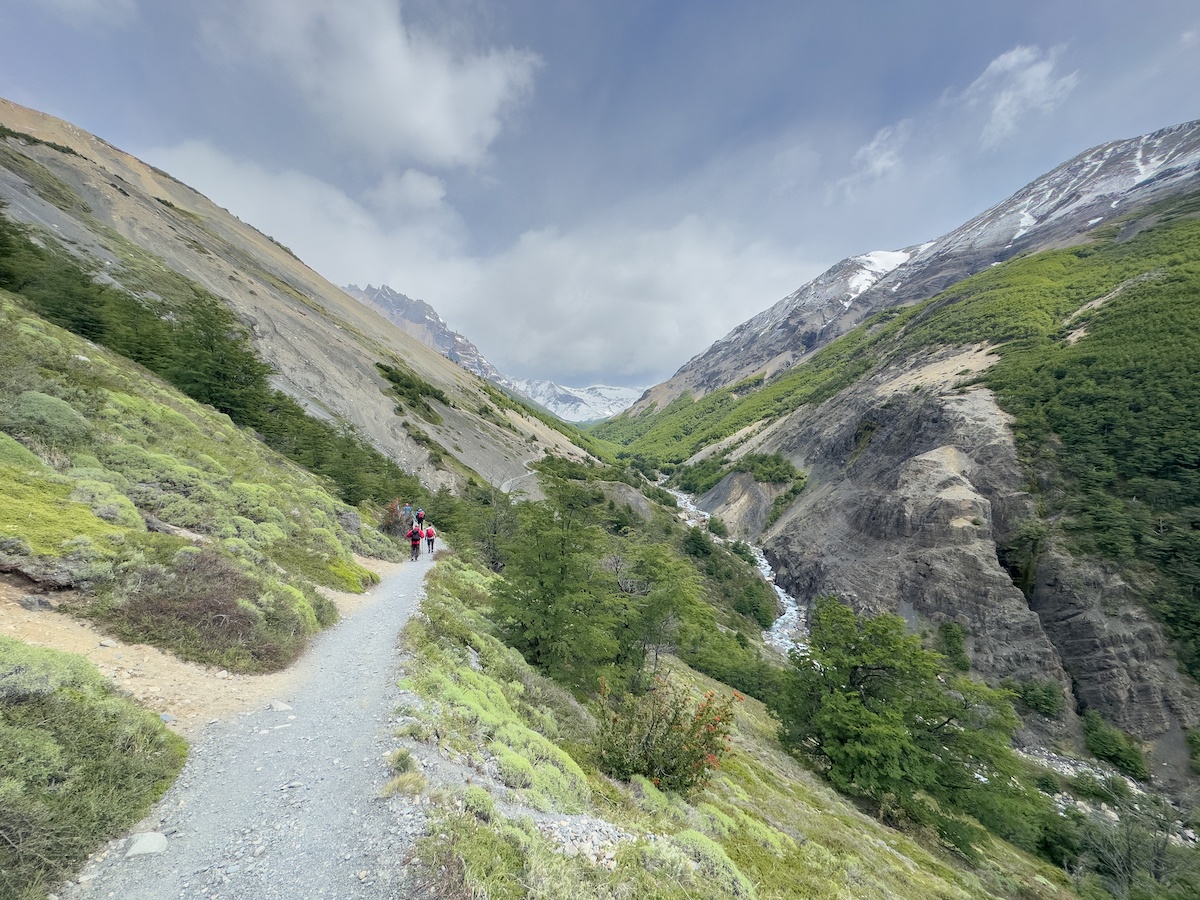
We did it on the first day, and there are pros and cons to both. I can’t imagine how much harder it would have been after already hiking for three full days and feeling worn down from camping and cold showers; that said, going full throttle on the first day wasn’t the best warmup as someone who doesn’t do intense hikes on a regular basis, and my legs were basically jelly the whole rest of the trip.
One perk of going from west to east is you can stay at Refugio Chileno the night before summiting Mirador Las Torres. That saves about 90 minutes of hiking compared to starting from Centro on the other side–a huge advantage for those wanting to make it up for sunrise or try and beat the crowds.
When I asked my guide who’s done the trek hundreds of times which direction he prefers, he said he likes to do it on day one to get it over with. So there you have it.
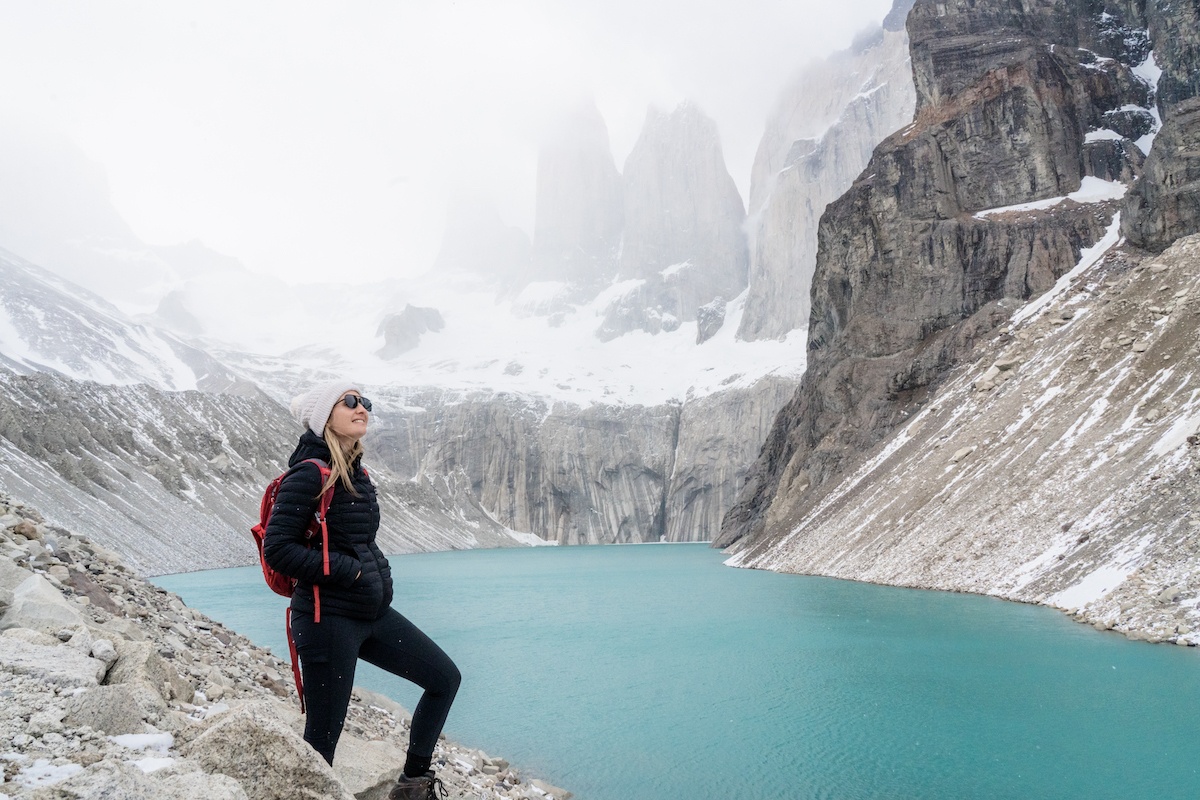
How to book a W Trek itinerary
As you might have noticed already, there are a stupid amount of logistics involved with trekking in Torres del Paine–and in true Chilean fashion, they don’t make it easy.
Some of the things you’ll need to book and consider are:
- Transportation to and from the park gates and to/from the welcome centre (yup, these are separate buses)
- Refugios for each night of the trek
- Food (either carry your own or book meals at each stop)
- Sleeping bag and mat rentals (if not carrying your own)
- Permits/entrance fees
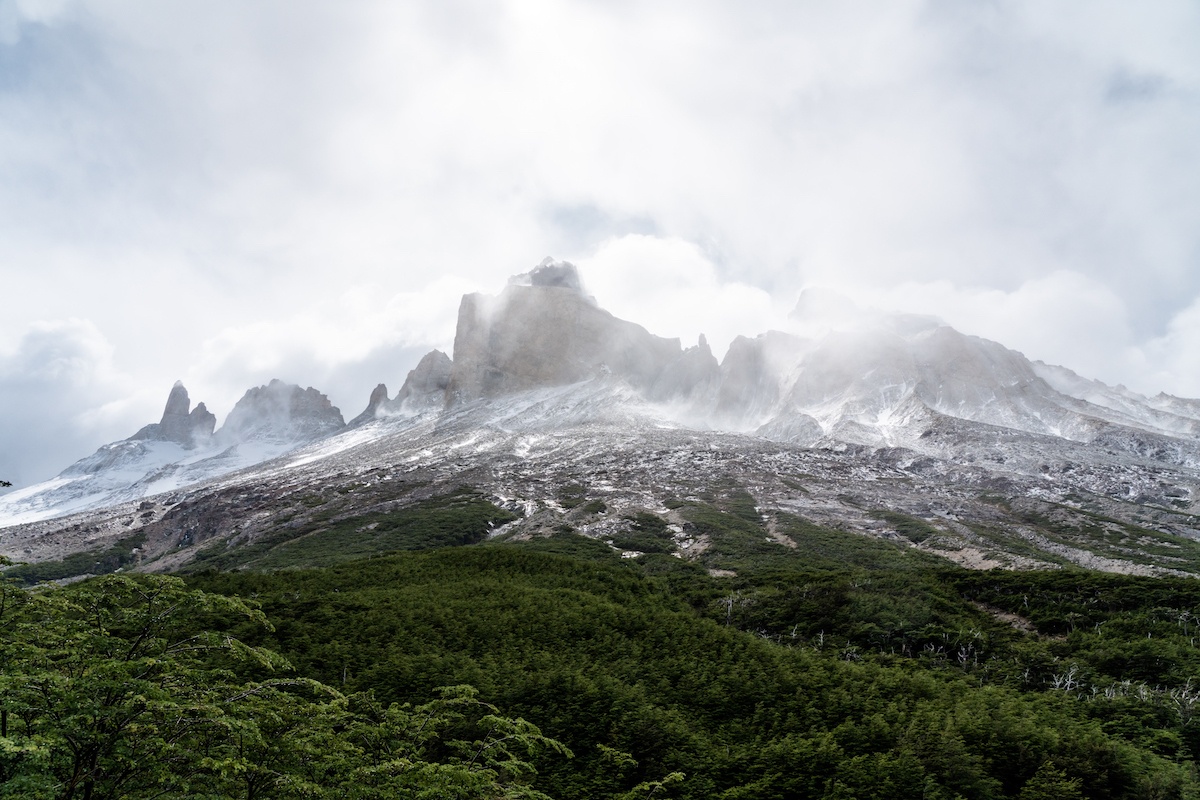
The problem is that tour operators secure a lot of the spots ahead of time, so there are a limited amount left for those planning self-guided trips. You’ll also have to ensure you book each night you need in the correct order of the route, and since two different companies ( Vertice and Fantástico Sur ) operate the refugios you’ll need to coordinate this on separate websites.
Fun, right?
Globe Guide tip: Some hikers have had success contacting the companies directly via e-mail or WhatsApp in advance to secure bookings.
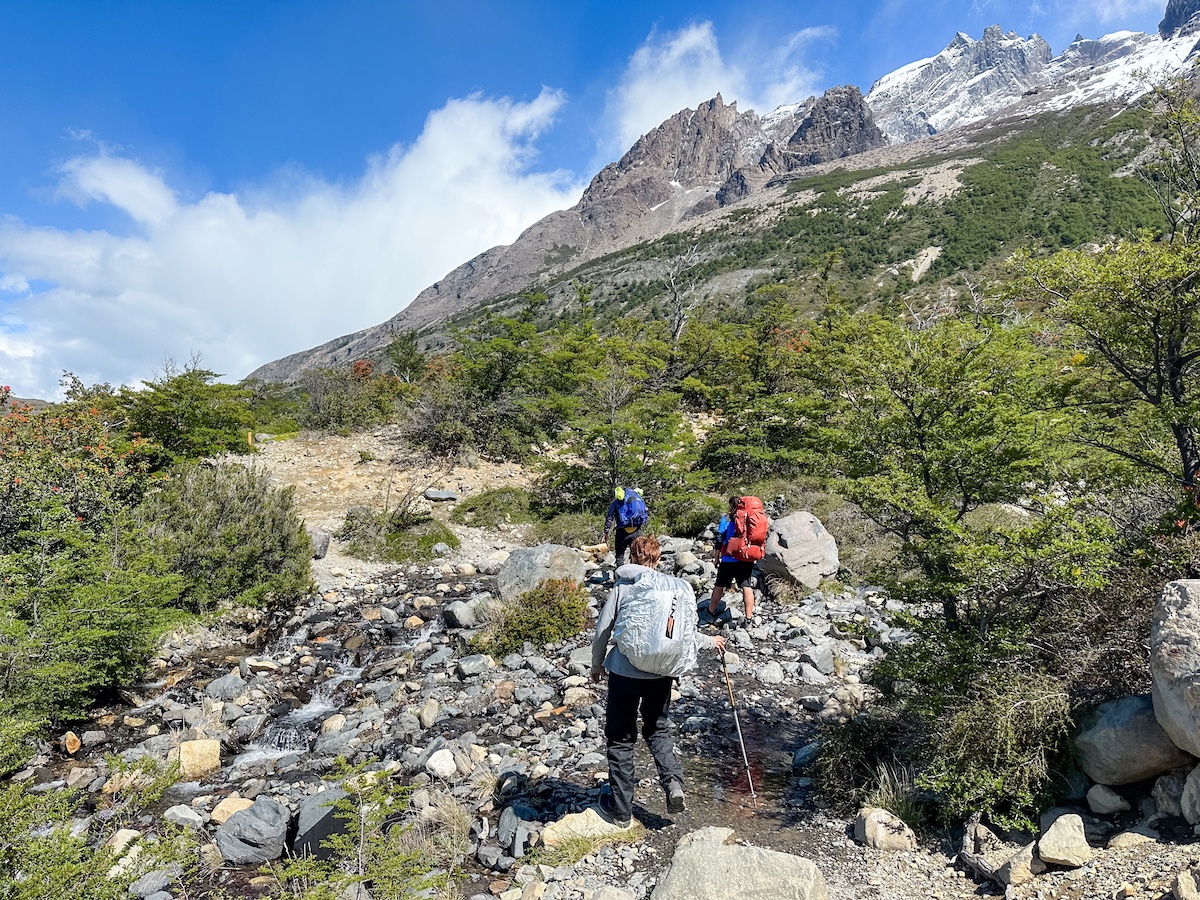
My recommendation: save yourself a lot of time and stress, and book through a small group tour operator instead.
I went with Traverse Journeys , which offers both self-guided and group trip options, as well as (optional) stops in the Strait of Magellan to see the famous penguins, horseback riding, wine tasting among the Casablanca vineyards and city sightseeing in Valparaiso and Santiago.
Traverse handles every single detail right down to what’s in your lunch bag, and donates a portion of the proceeds from each trip to support a local community partner. We saw this firsthand by learning about the efforts the Torres del Paine Legacy Fund is spearheading to conserve the fragile environment and ensure a safer experience for visitors, and even passed some of their volunteers working on the trail.
Globe Guide readers get $200 off of any booking with Traverse Journeys by entering code GLOBEGUIDE200 at checkout!
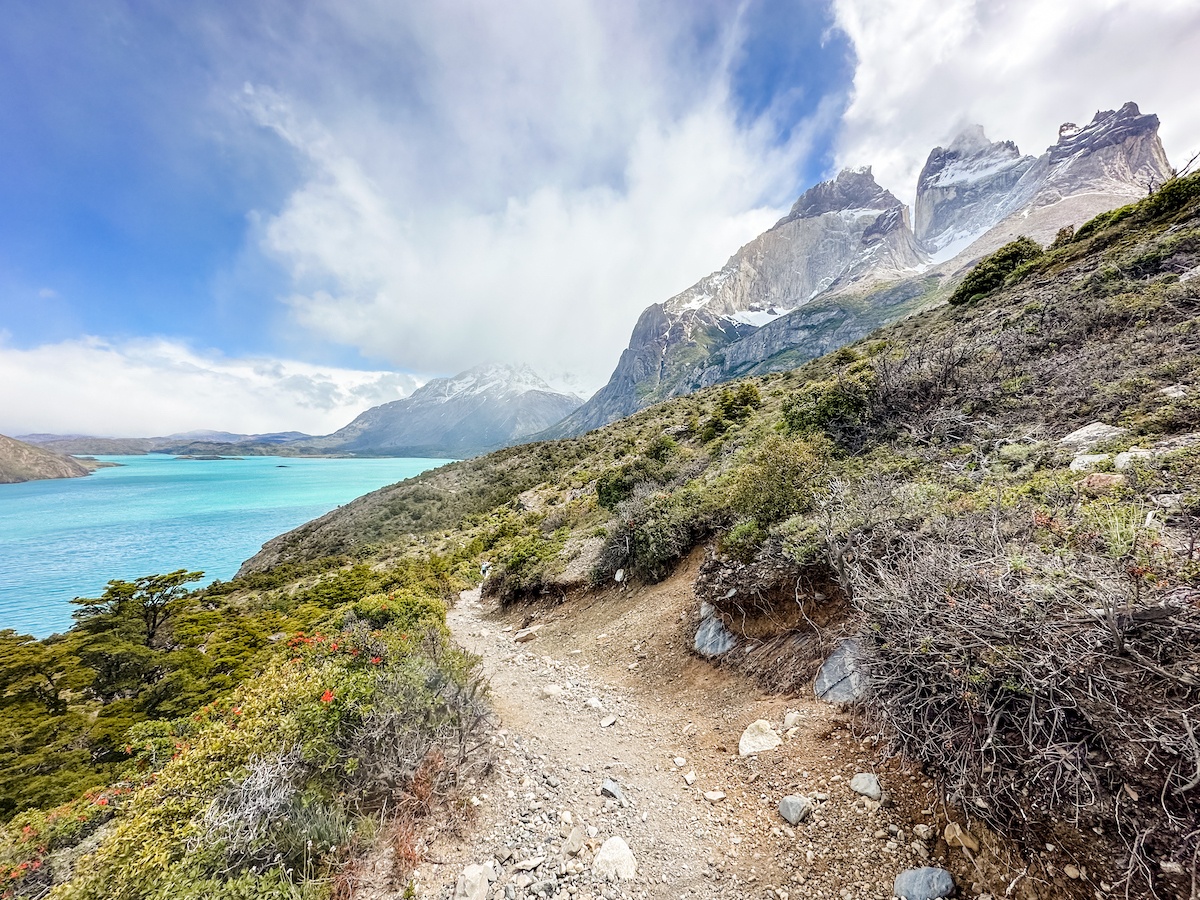
Getting to and from the entrances for trekking Torres del Paine National Park
The cute town of Puerto Natales is like basecamp for Torres del Paine National Park, despite being a scenic 90 minute drive away.
This is where the closest airport is, along with lots of great restaurants and accommodations, grocery stores for stocking up on food or snacks, and gear outfitters for any last minute purchases.
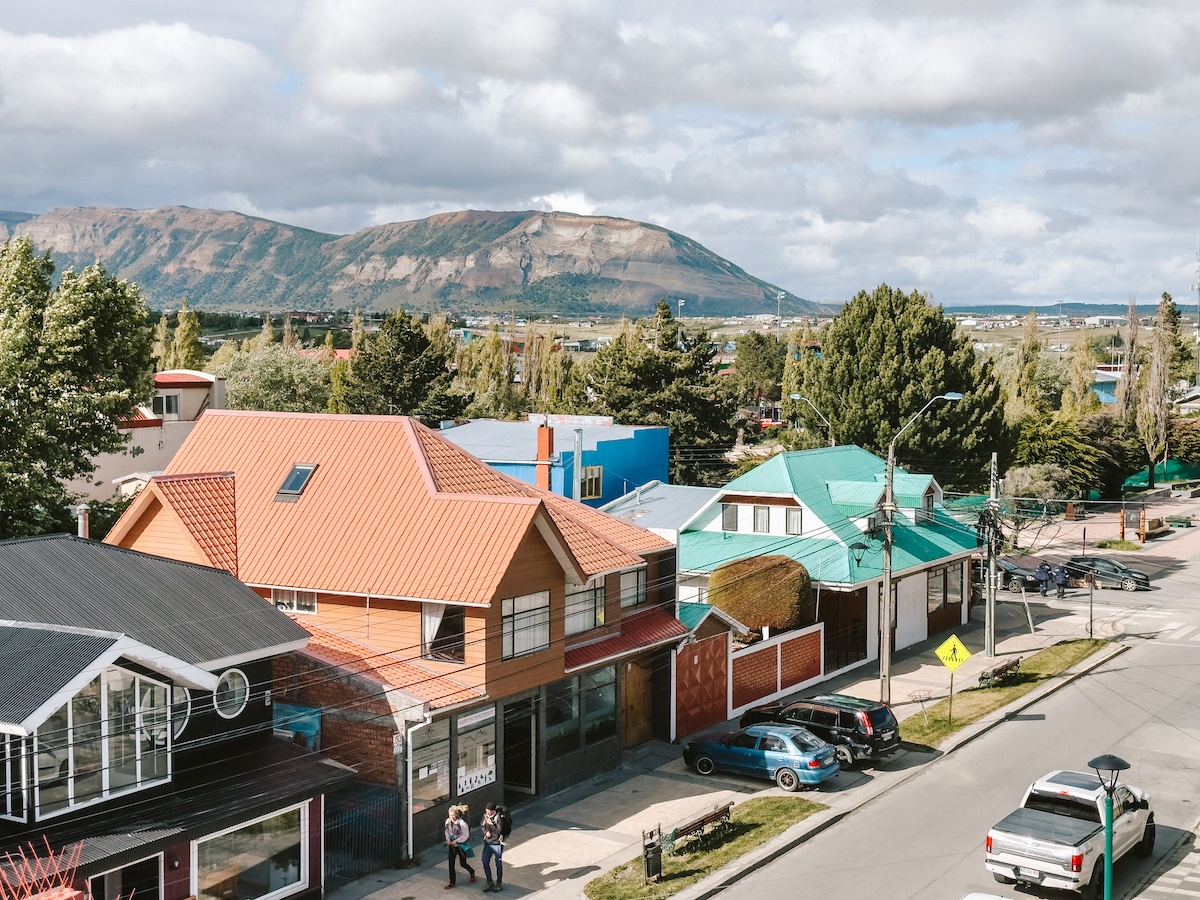
Buses depart from the main depot around 7 AM for both entrances to the park. If you’re starting on the east side like we did or doing the day hike up to Mirador Base Torres, you’ll present a QR code with your permit then hop on another bus (3,000 pesos) to get to the Torres del Paine Welcome Center.
Those starting from the west will head to Lago Grey and take a catamaran over. In theory this means all the way up to the glacier for incredible views, but if the weather is bad a ferry crosses Pehoe Lake to the Paine Grande refugio instead.
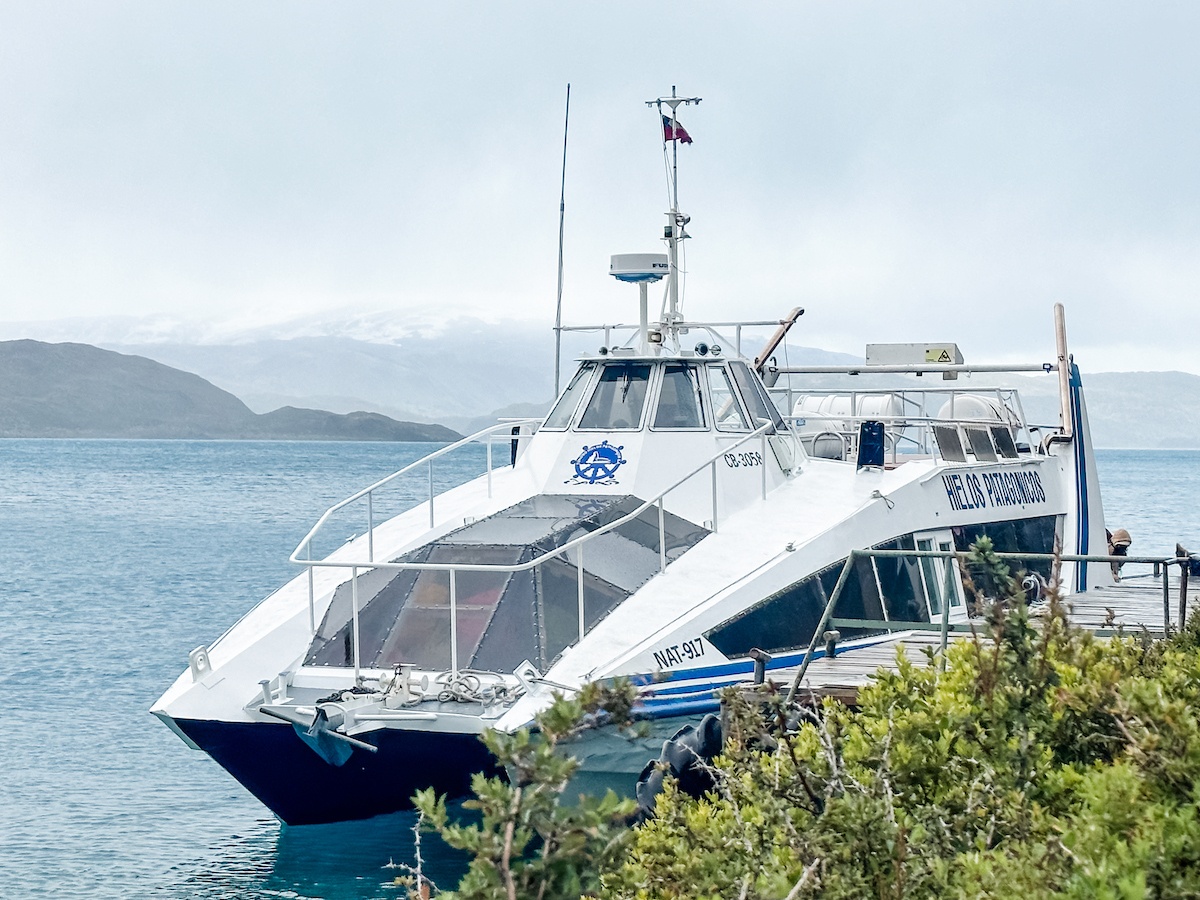
In this case, you’ll have to do an out-and-back to see the glacier on foot, before taking the ferry across Pehoe Lake. This website has more information on prices and schedules.
Globe Guide note: If neither of the boats are operating which happens on occasion due to weather or maintenance issues, it adds an extra 6-7 hours of walking to get to the pickup/dropoff spot.
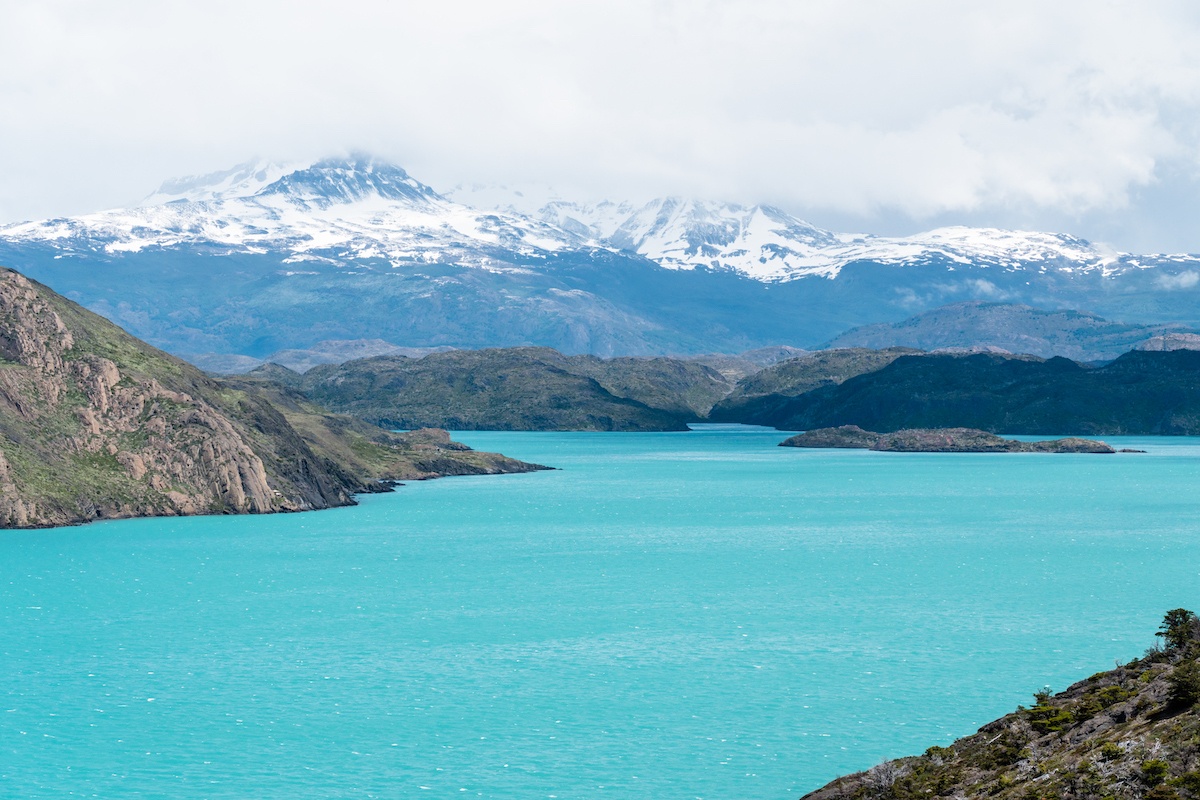
W Trek refugios
Refugios are a key part of the experience, and not all are created equally.
At the very least you can expect a communal eating area, shared bathrooms with (sometimes) warm sinks and showers, a canteen, bar and outdoor hangout area. Camping options are either elevated tents or tents on low platforms (both with sleeping pads), or sites for pitching your own tent.
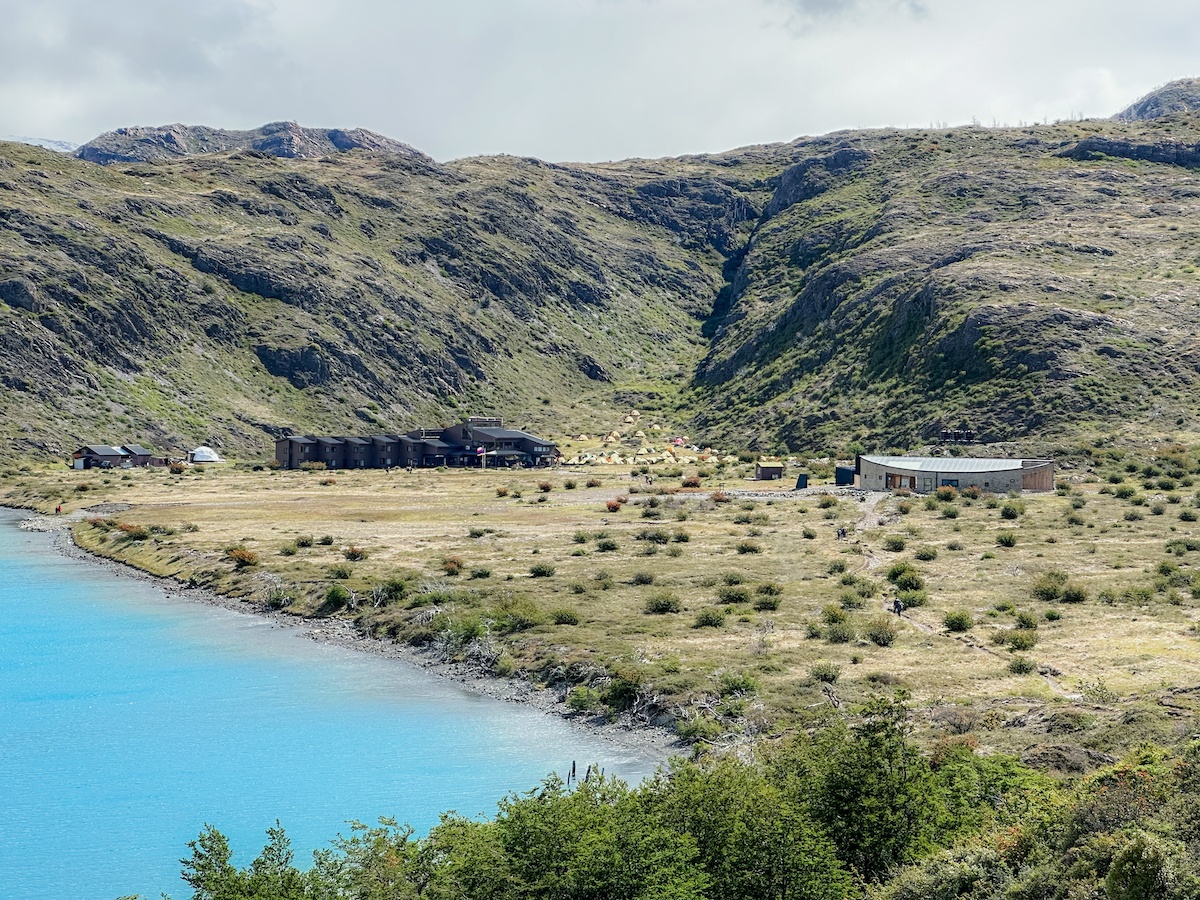
Some refugios also offer dorm-style rooms that sleep about six to eight people in bunk beds, private rooms for couples in the main lodge, and even unique accommodation options like domes and tiny houses.
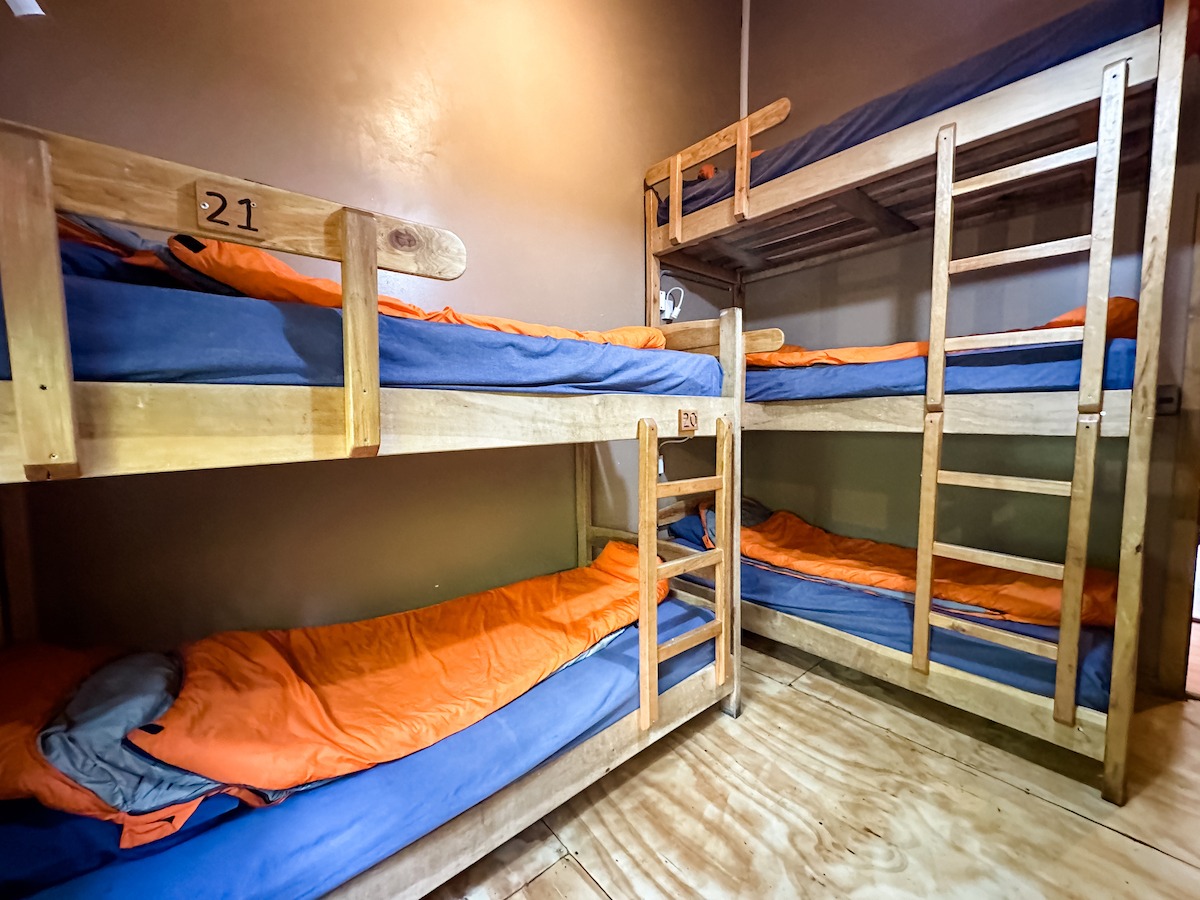
We didn’t get to stay at Refugio Los Cuernos, but absolutely loved the vibe of it from the short time we spent there on a lunch break. It has lovely views from the patio, a warm hangout space and some very cool accommodation options.
Paine Grande has a great feel with lots of communal spaces and a second-floor bar, and Centro has a cozy wood-stove fireplace and large dining area (though we didn’t love how far we had to trek to get to our tent–it felt like climbing another soggy mountain!).
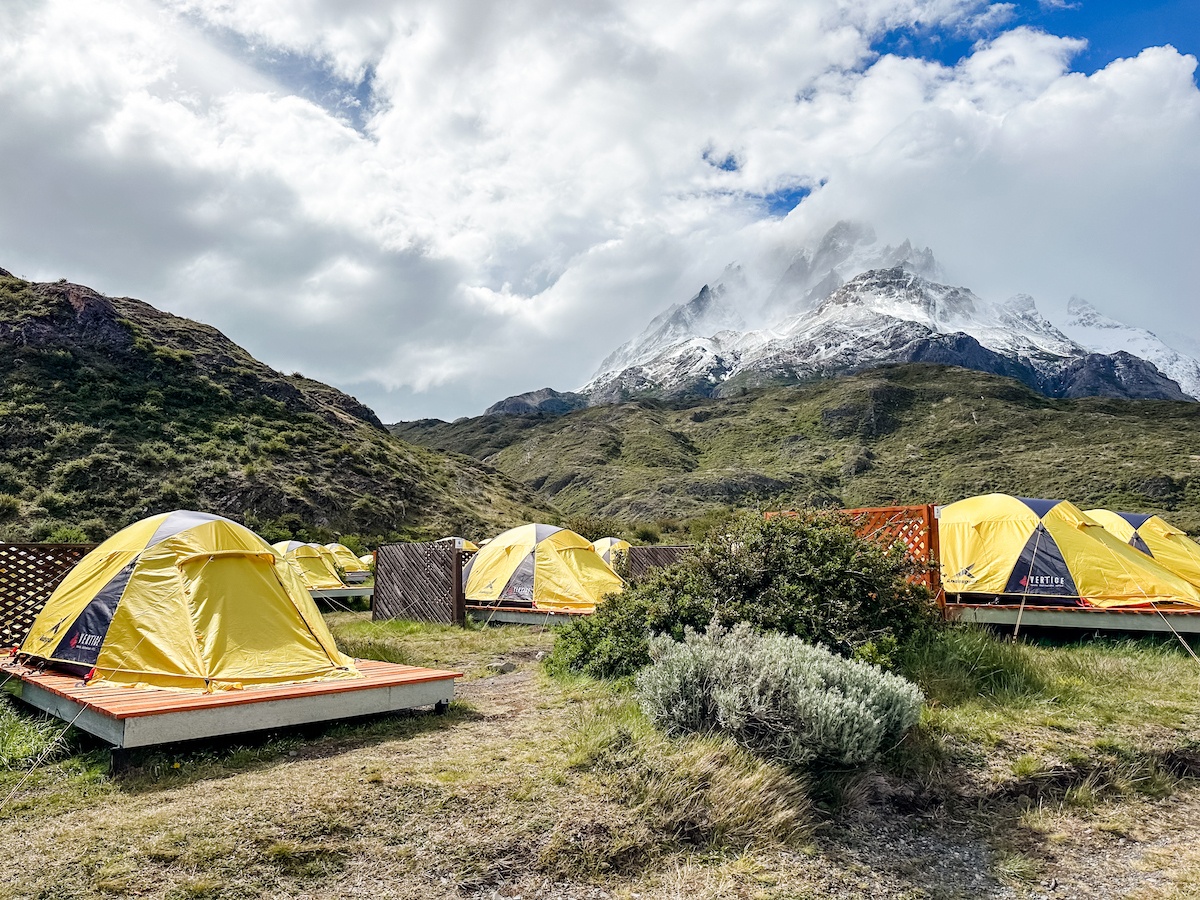
Frances was a total bust and we couldn’t wait to get out of there.
The layout is awful, with all the tents at the top of a hill and the restaurant at the very bottom and not well marked—not fun to deal with going up and down after a full day of hiking. To add insult to injury, dinner seatings start early and there’s no other warm place to sit or enjoy a drink, so you’re literally stuck out in the cold waiting to get in.
The bathrooms were filthy (to be fair, they aren’t very clean at most refugios ) and even though there were limited hours for hot water it still ran out before the time was up. My top tip would be to stay at Los Cuernos instead of Frances if possible.
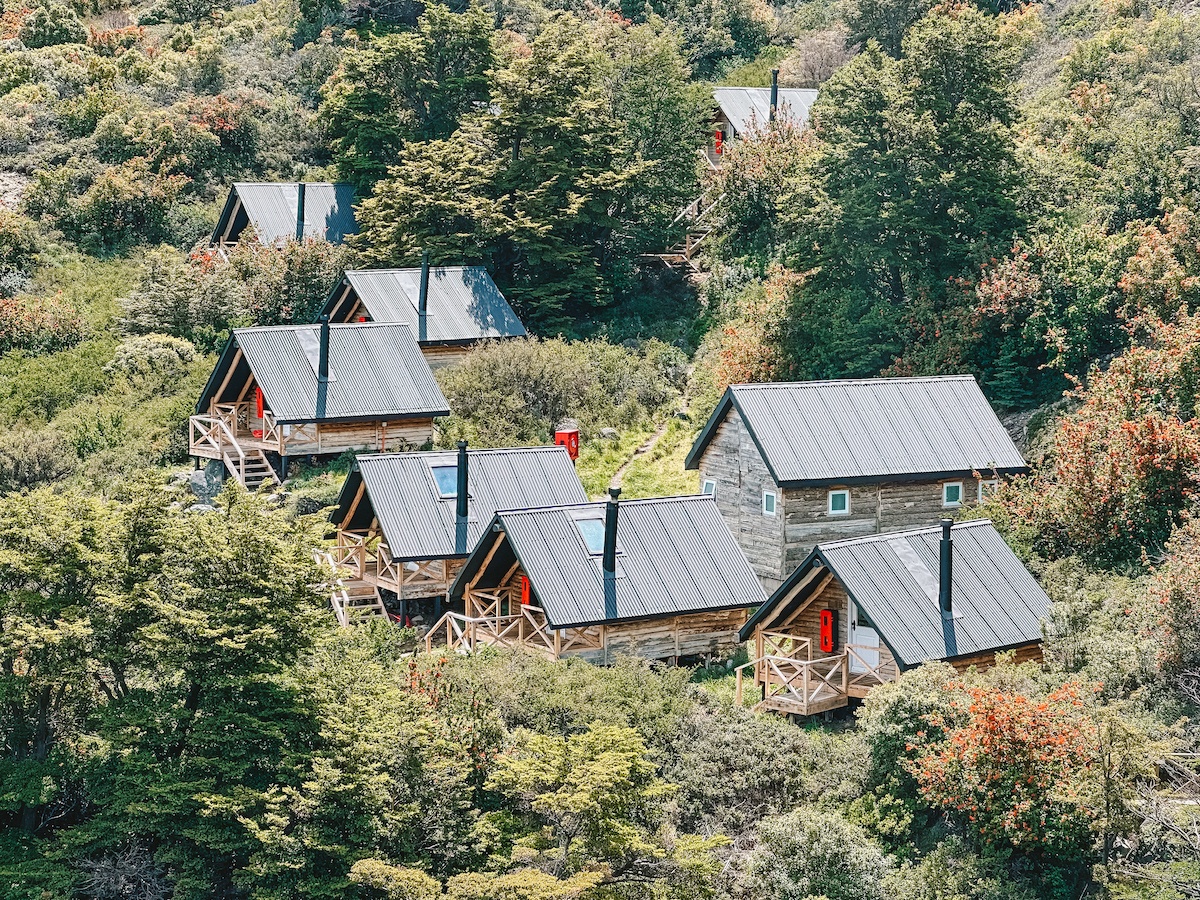
Prices differ by refugio , but expect to shell out about (per night, in USD):
- $13 for a campsite
- $40 for a tent
- $25 sleeping bag rental
- $12 mat rental
- $65 per bunk in bunk bed (comforter extra)
- $100+ for private accommodations like domes
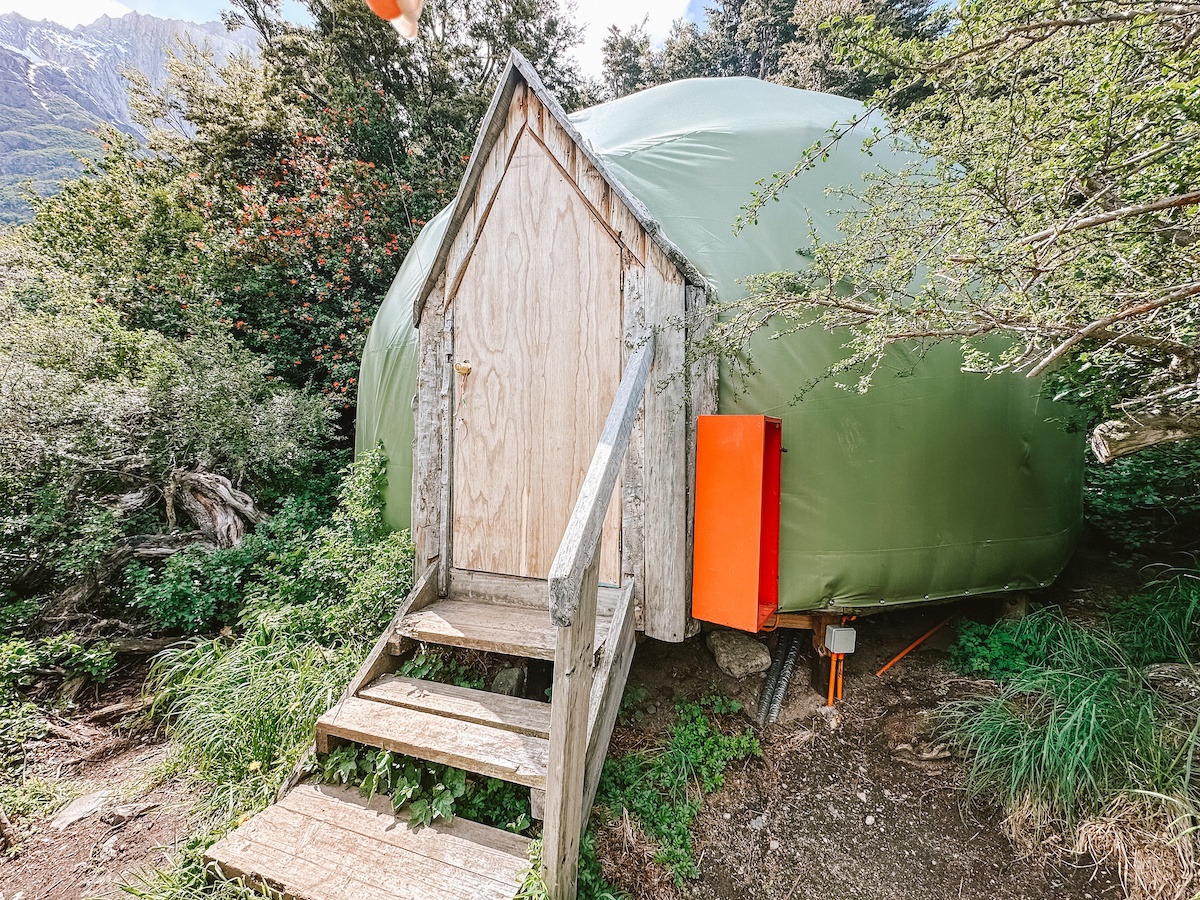
Hikers can bring their own food, or opt for a meal plan with breakfast (usually just bread and a small portion of scrambled eggs), boxed lunch and a hearty family-style dinner (timed seatings).
You’ll get a lot more out of the experience if you embrace being off-the-grid during the trek; however, those who need to connect can pay for minutes at the WiFi stations inside most refugios .
There are also outlets in the refugios for charging devices, but they can be in-demand so I recommend bringing a lightweight portable charger instead.
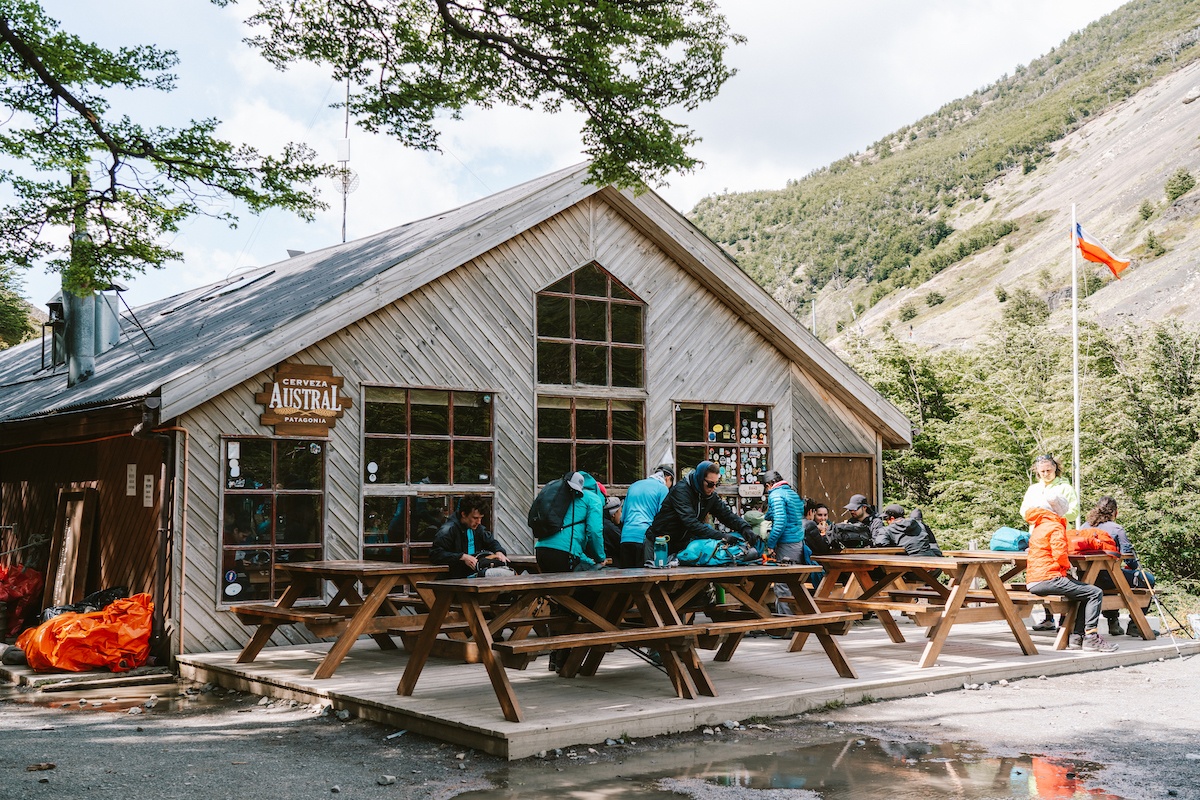
Life on the trail during the Torres del Paine W Trek
There’s a huge sense of camaraderie on the trails that feels like the good ol’ backpacking days. You’ll see the same people over and over, since there are only two potential routes and a handful of refugios.
You’ll spend anywhere from six to twelve hours walking per day (depending which part of the route you’re on), and likely only see a few dozen hikers until you get to a refugio.
The exception is the Mirador del Torres hike, which is absolutely packed with people. It sees about 1000 people per day since it’s the area’s most famous trail and can easily be done by day trippers from Puerto Natales.
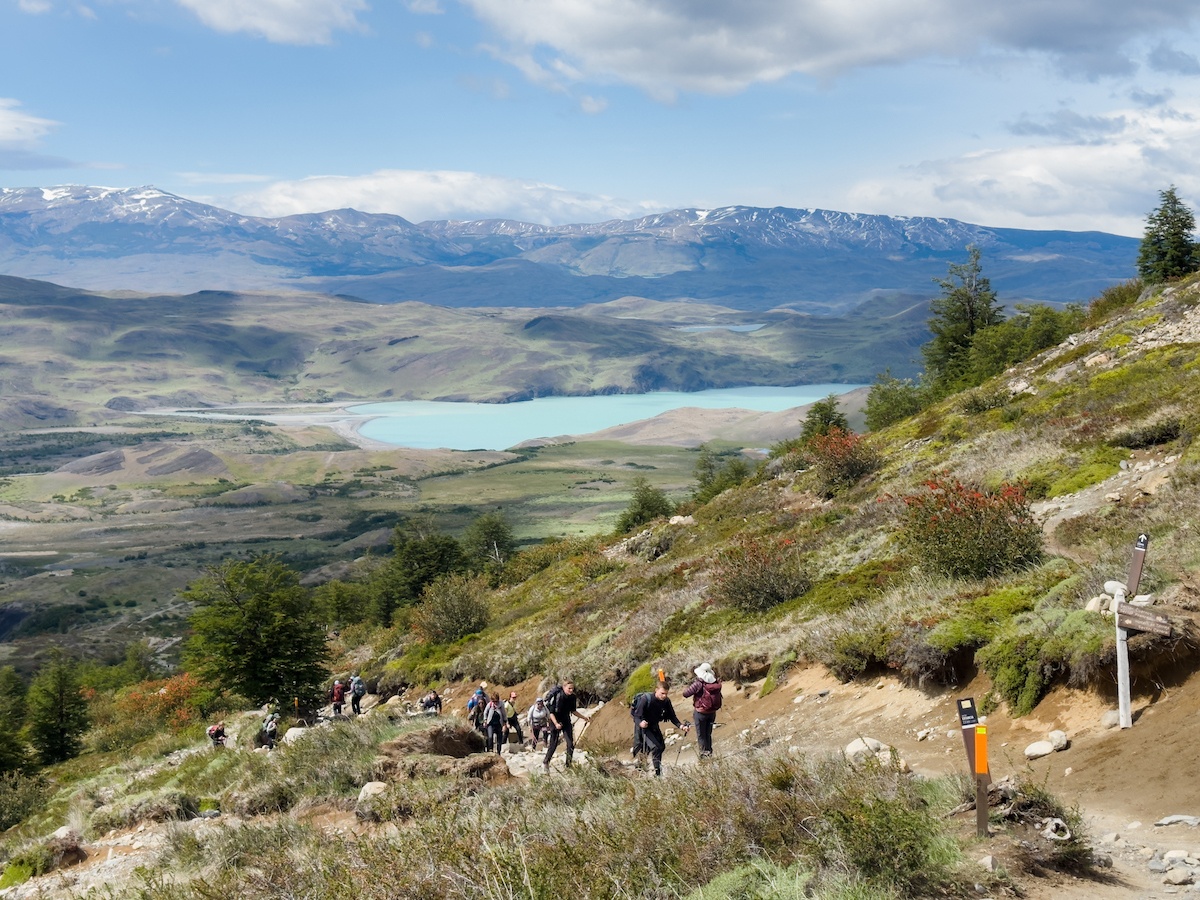
In terms of the age range, hikers seemed to be anywhere from in their early 20s to late 60s. My mom did it, and she’s turning 70 this year! I only saw one child the entire time, so the W Trek doesn’t seem to be popular with families.
It’s definitely a good idea to have hiking experience (and make sure you break in your shoes and test your outdoor gear ahead of time, obvs). That said, a couple people in our group aren’t regular hikers and managed alright, as it’s not a super technically challenging trail.
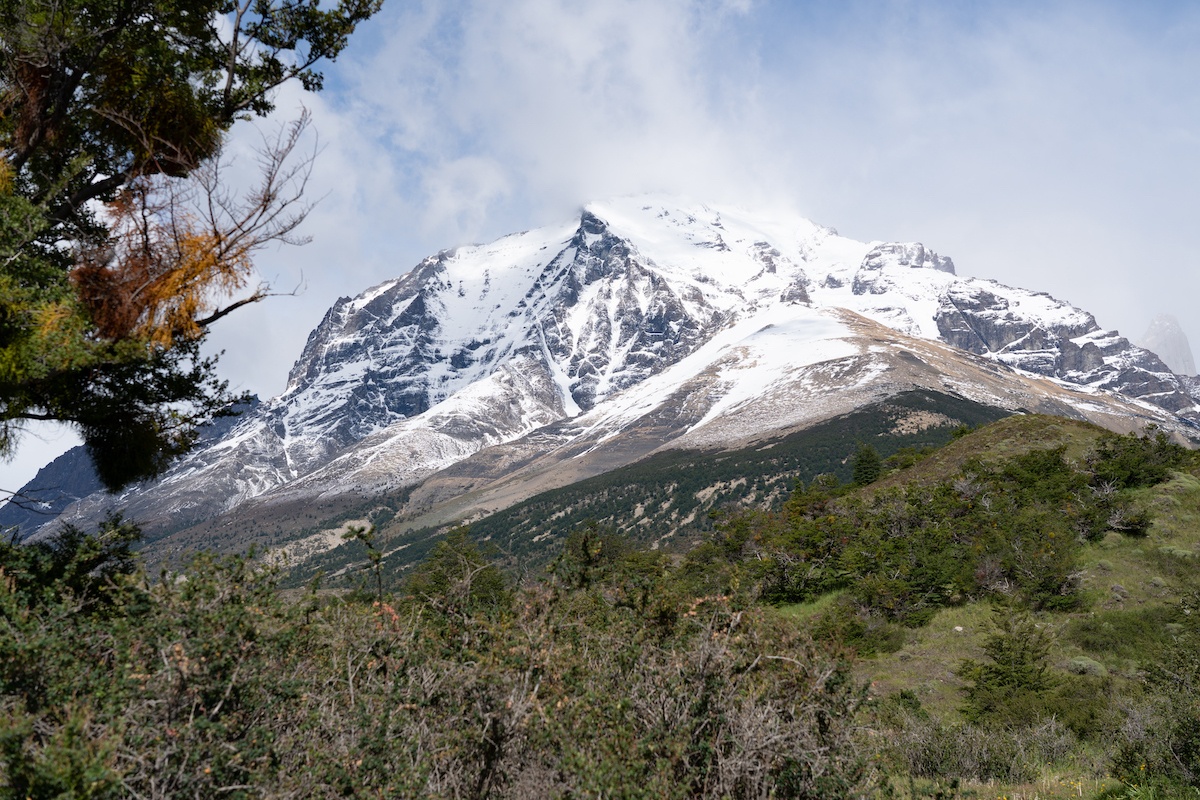
The main challenge for me was how long each day is, with very little time to rest before doing it all over again the next day. And let’s be honest, tents aren’t that comfortable. 10/10 would recommend upgrading to a bed if budget allows.
Completing the W Trek is definitely a mental and physical challenge–luckily, the feeling of accomplishment coupled with jaw-dropping scenery like soaring peaks shrouded in mist, calving glaciers and gem-toned lakes makes it all worth it.
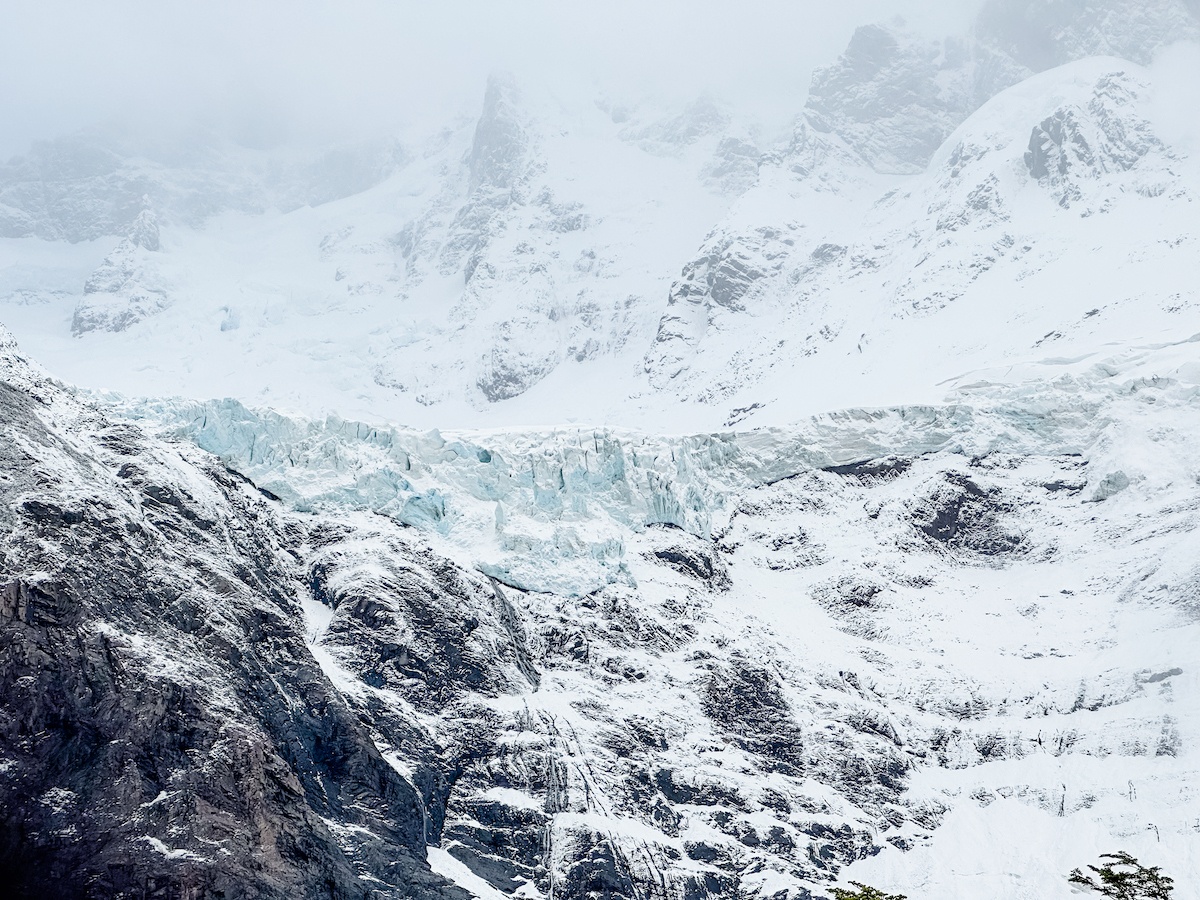
Patagonia packing list: The essentials
It’s not uncommon to experience all four seasons in a single hour in these parts, so preparation is key when planning your packing list for Patagonia.
Unless you hire a porter you’ll be carrying all of your belongings in a large trekking pack for at least two full days, and will also need to bring a lightweight sleeping bag, mat and travel pillow unless you rent them at each refugio.
READ MORE: Patagonia packing list for the Torres del Paine W Trek
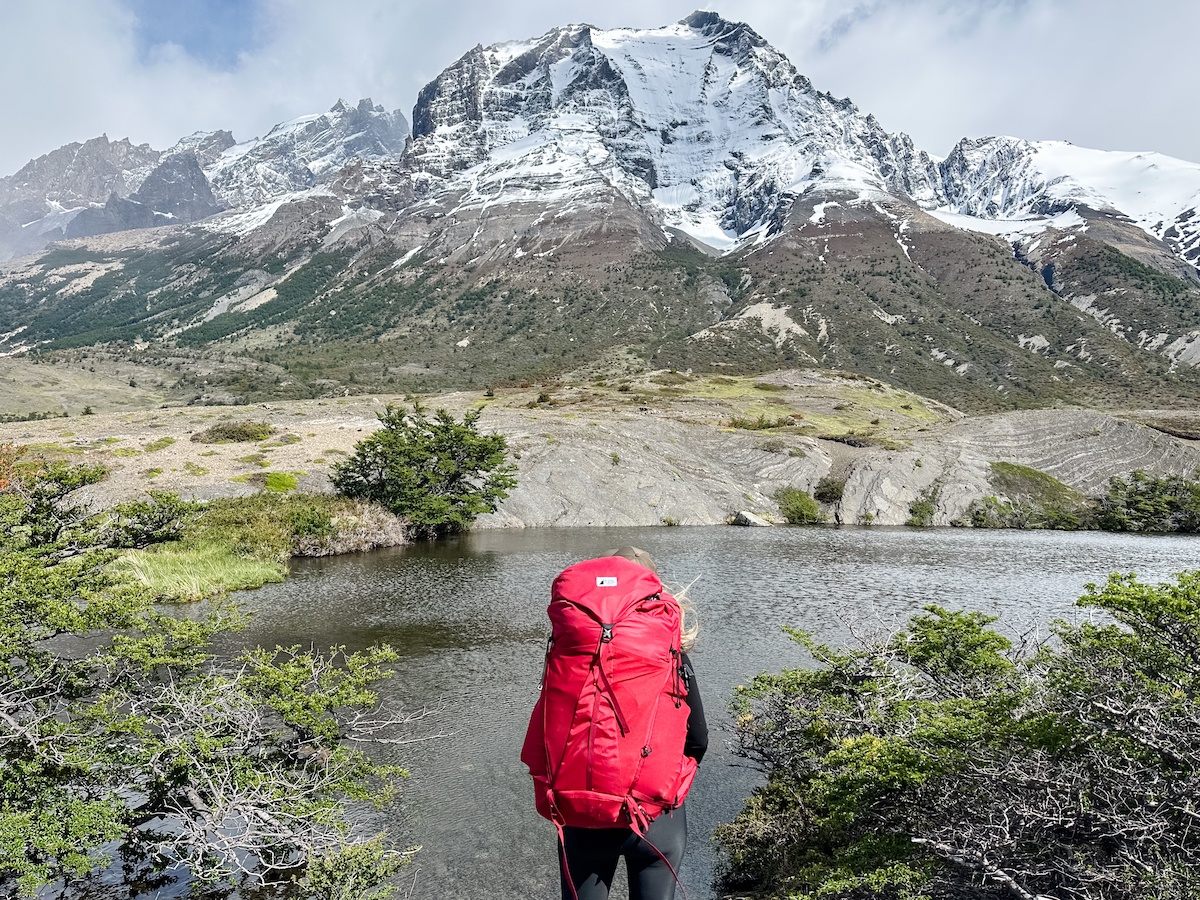
This W Trek packing list outlines every single item you’ll want to bring and a few you might not have thought of– you’ll definitely want a lightweight portable charger , collapsible hiking poles , a quick dry towel and Chilean pesos in case there’s a connectivity issue with using credit cards at the refugios .
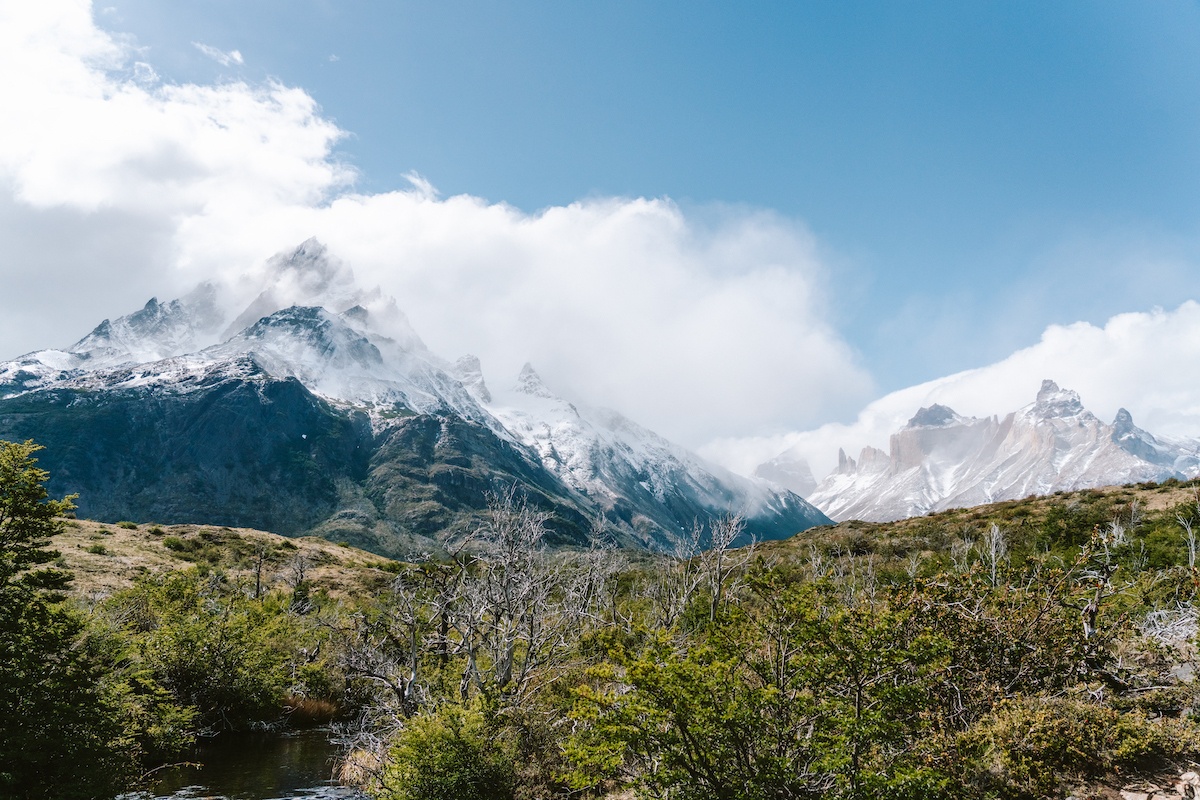
Insider tips for the W Circuit, Torres del Paine
- The Patagonia W Trek can be done all year round, but the best time is from November to March. Chile is in the southern hemisphere, so this is spring/summer when temperatures are warmer and there’s usually less rain and snow.
- If you’re planning to hike Torres del Paine without a guide, it’s critical to download a GPS map ahead of time. While the trail is generally well marked, one wrong step away from the path can get you lost in a hurry since the terrain is so untouched. Unfortunately this happened to me near Glacier Grey and resulted in a frantic 20 minutes of running up and down ravines and ridges, yelling ‘help!’ in hopes fellow hikers would hear me over the wind–luckily, a couple did. Man, was I ever thankful to see them (side note: stick with your hiking buddies!).
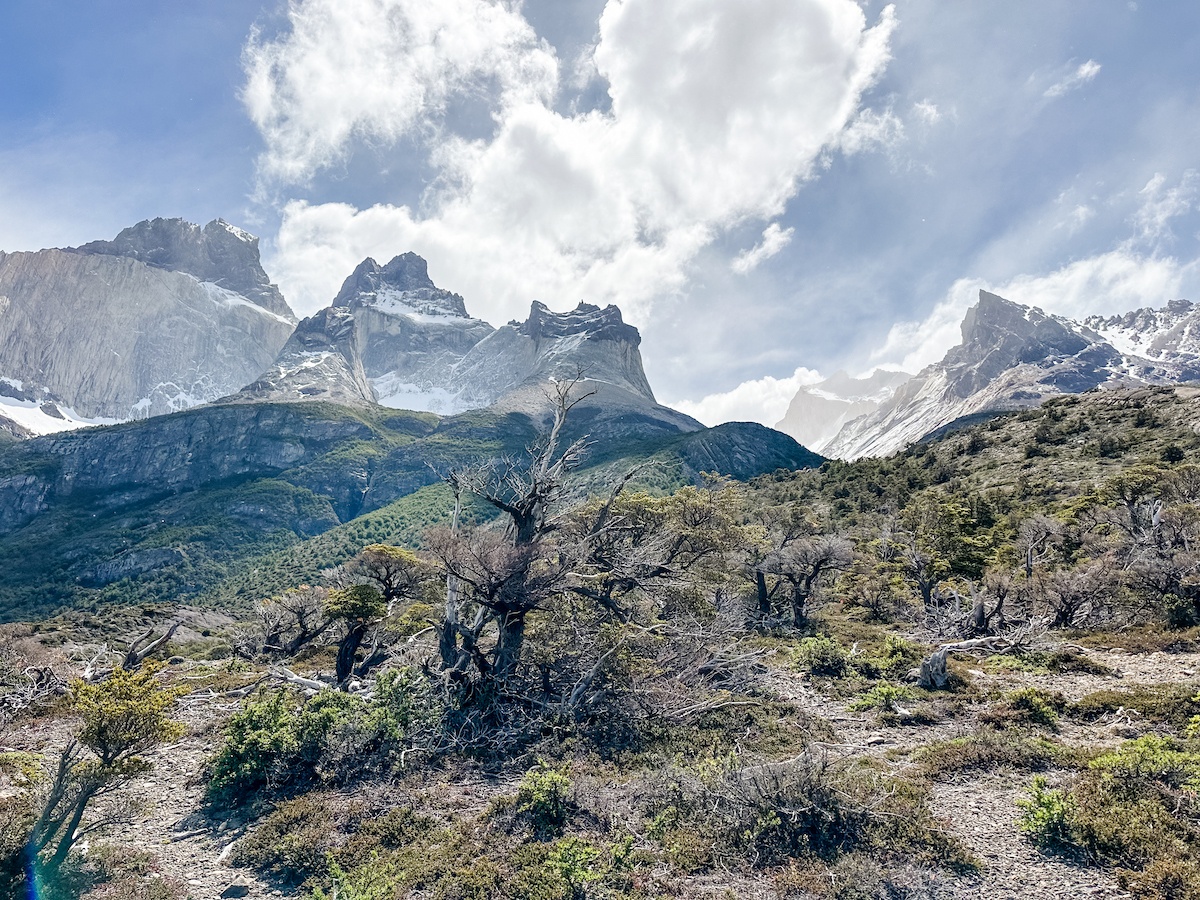
- While most people complete the W Circuit in four days straight, another option is to spend an extra day at Los Cuernos. Not only is it one of the nicest refugios with spectacular views, but that way you’ll be able to either spend the day resting up, or do the hike up to the French Valley and back to save several hours the day after by walking straight to Paine Grande.
- It’s not uncommon for refugios to ‘lose’ reservations, so bring a printed or screenshot confirmation of your booking with you on the Torres del Paine W Trek.
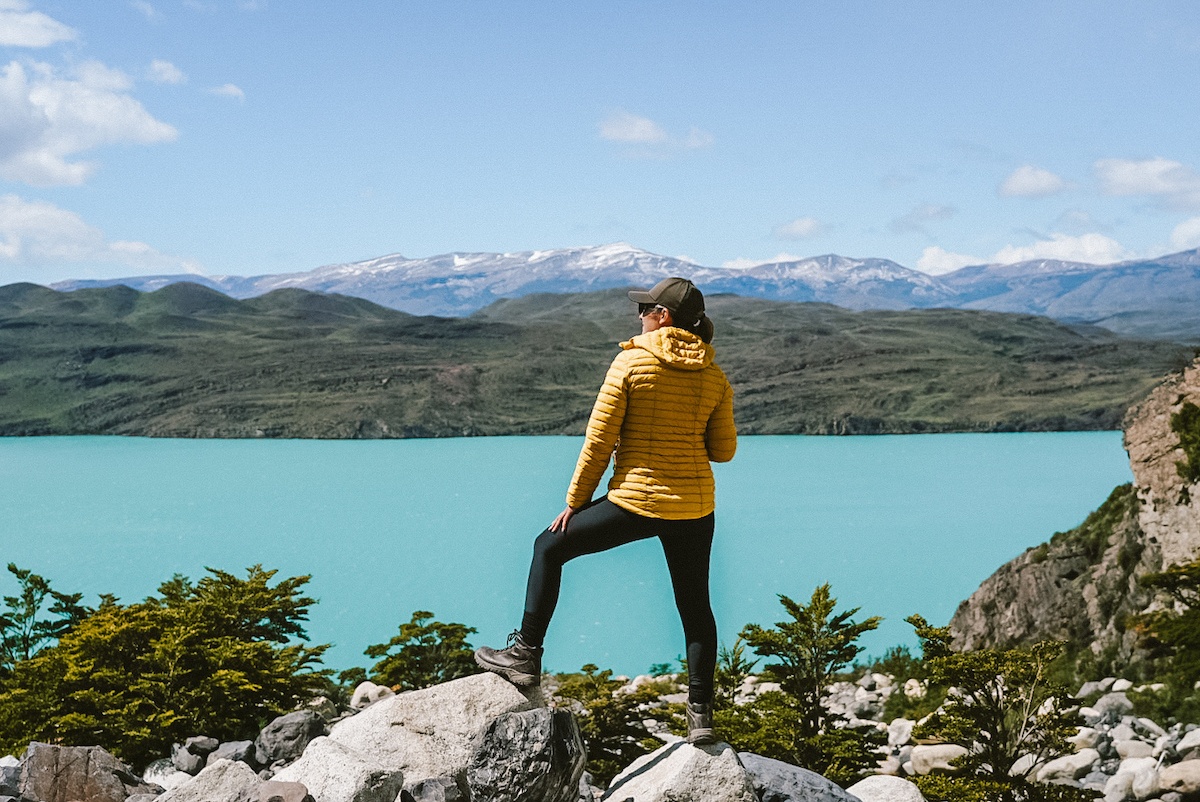
YOU MIGHT ALSO ENJOY:
- Patagonia itinerary: How to spend one week exploring southern Argentina
- 5 reasons to go backpacking in South America
- Epic hiking spots you need to add to your bucket list right now
SHARE THE PINSPIRATION! CLICK THE IMAGES BELOW TO PIN:
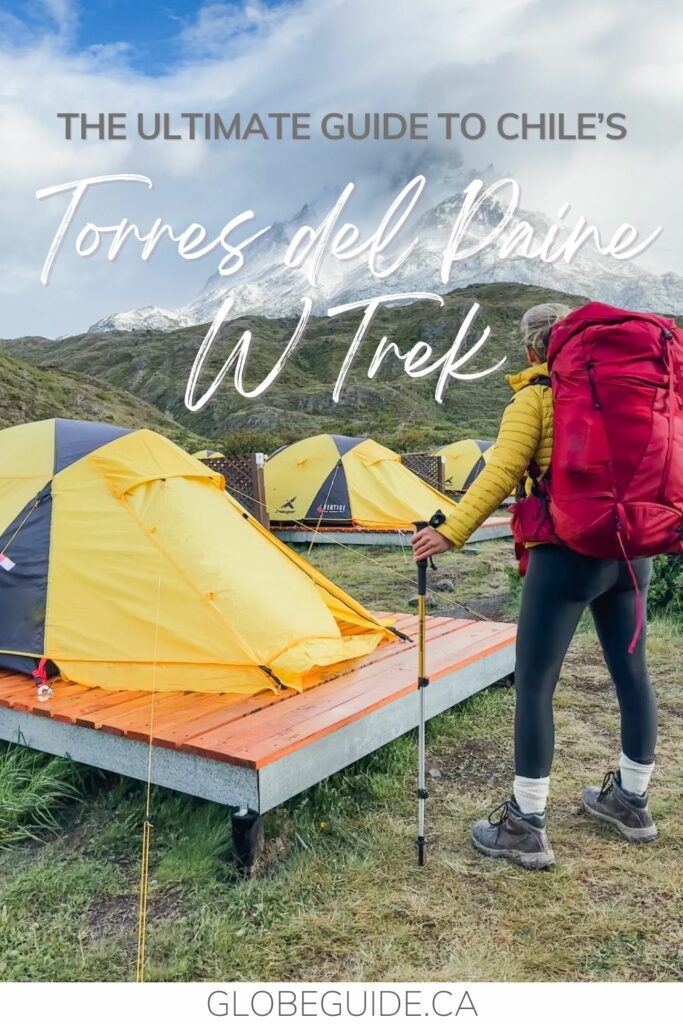
This post may contain affiliate links, which Globe Guide receives compensation for at no additional cost to you.
About The Author
Tamara Elliott
Leave a comment cancel reply.
Your email address will not be published. Required fields are marked *
Save my name, email, and website in this browser for the next time I comment.
Perm, Russia General info on the city of Perm A short intro... Perm is the most Eastern city of Europe, and therefore its province is often referred to as Eurasia. Having a population of 1 million, Perm' is one of the largest cities in Russia and the second largest in the Urals. The city was formerly called Molotov, after the minister of foreign affairs during Joseph Stalin's ruling. Perm stretches 65 km along the impressive Kama River - Europe's 4th largest river by length. The Perm province, "Permskiy Krai", or "Prikamye", is around two-third the size of the United Kingdom and covers a great area in the very heart of the Ural Mountains. Perm is internationally known as the name for the geological period (290 - 245 million years ago) in which the Ural Mountain Range was formed. In contrary to the Urals, Perm itself is rather young. Although the first settlement of Perm dates back to 16th century, officially it got its city status in 1723. Citizens still loudly celebrate Perm's birthday on 12th of June, with street parades, concerts and fireworks throughout the whole city! In spite of being a relatively young city, Perm played an important role in the history of Russia. Not the least part of this role was played by Ermak, who was from the Perm Province. Ermak, by order of the Stroganov family, gathered an army here and led it through the Urals, later to succesfully conquer Siberia for Russia. Afterwards, when a road was needed to connect Siberia with the west, construction was started in Perm, which was at that time the capital of the Ural region. The new road, together with the construction of the Trans Siberian Railroad, allowed development of the places east of the Urals - current big cities such as Ekaterinburg, Omsk and Novosibirsk, were merely peasant or miners' towns by that time. Nowadays, Perm basically owes its existence to two factors. Firstly the large amounts of natural resources (minerals, oil and timber) that are present in the region, and secondly (but not less important): its location. The mighty Kama River, the Great Trans Siberian Railroad and main motorways from Moscow/Kazan to Siberia all cross in Perm, making Perm a main Russian transportation hub. The city is the doorway from Europe to Asia and to Siberia in particular. During Soviet times, Perm was a proper fortress because of the huge military industry in its region. All artillery and rocket vehicles, as well as (intercontinental) ballistic rocket launching systems, engines for MiG jetfighters and canons of all ranges were (and in less proportions still are) produced in Perm. The Soviets did an excellent job in hiding Perm and keeping it secret. Most people from outside the Urals simply did not know of the existence of the - at that time - 1 million citizens of Perm. Until the end of the cold war, Perm did not appear on certain Soviet-made maps, nor did the roads towards it. Nowadays, Perm is obviously accessible to all. Actually, it currently is one of Russia's fastest growing cities because of its economical prosperity. Click here for specific information for visitors: Perm sightseeing / excursions and Perm hotels . Perm - 101% Russian, yet multicultural For Russian standards, Perm is one of the most multicultural places in the whole country; it is a home of many ethnic groups who have lived together in Perm ever since its existence. While taking a walk through Perms huge central bazaar one can easily distinguish Russians at the many typical small kiosks, Georgians and Armenians selling their original spicy kebabs and shoarmas straight from the barbecue and Tatars operating from most of the simple but colorful jewelry stands. Furthermore, Russian orthodox churches, a mosque, a synagogue and several Catholic churches (some dating from the 17th century) all exist next to each other in Perm. The multicultural character of Perm also shows in its dining possibilities; one does never have to go far to experience the Russian, Uzbek, Georgian or Caucasian cuisine. In spite of its multicultural character, Perm is Russian till the bone. Wide avenues, big squares and parks, many statues, dominant Soviet architecture, countless little kiosks, huge theatres and trolley busses everywhere - all make Perm as Russian as Russian can be. Being some 1400 kilometers away from the big influential cities of Moscow and St. Petersburg, Perm is a relaxed place, where people have kept the typical Russian way of life and traditions. The Perm opera and ballet theatre After St. Petersburg and Moscow, Perm is Russia's leading city for opera and ballet theatre. Not only has the city got a wide range of stages and theatres, its educational bodies like the Russian Academy of Theatre Art and Institute for Culture and Art as well as its many international relations in theatre performances and education still give Perm the name of theatre city. One of the most famous stages is the Chaikovsky Opera and Ballet Theatre Perm. Among its repertoire are internationally known performances (for example Romeo and Juliet, Cleopatra, Aida, Cinderella, Le Nozze di Figaro) as well as Russian ones: most works of Chaikovsky have been staged here. Since 1948 the Perm Opera and Ballet Theatre has been on tours throughout the whole world, performing in countries such as UK, Japan, New Zealand, Australia, Hungary, the Netherlands, Bulgaria, Germany and China. During its history, the theatre has received numerous (inter)national prizes. Another leading stage is the Perm Academic Drama Theatre, founded in 1927. Like the Perm Opera and Ballet Theatre, the Acamedic Drama Theatre has staged the worlds most prestigious Drama plays (for instance Ostrovsky, Shakespeare, Gorky and Tolstoy) and has it won many prizes for its work. Museums The Perm Art Gallery boasts a large collection of arts. Apart from numerous paintings of Flemish, French and Italian masters, it also has modern art collections on exhibition. The museum's collection is among the very largest ones in Russia. The museum is located in a former cathedral, now a landmark of Perm in the centre of the city. For those who are interested in the history and the culture of the Urals, the Regional Museum of Local Studies and History (founded in 1890) is definitely worth to visit. The museum boasts a wide variety of armory, coinage, pottery, handicrafts, archeology and minerals. It also tells about the Permian period, the geological era in which the Urals were formed. The partly open-air artillery museum at the northern end of the city centre displays all generations of rocket and artillery (vehicles), as constructed in Perm, as well as a wide range of information of the history of the industry. Actually, the city is known for its large war industry ever since late 1800s. All cannons and artillery of former Soviet Union as well as engines for Tupolev and MiG aircrafts were (and in less amounts still are) manufactured in Perm. The museum offers detailed information on its wide range of warfare. The outside part of the museum can be entered free of charge at any time. This museum is a part of our city excursion . Khokhlovka (Open-air museum of and Wooden Architecture and Ethnography) is in fact a collection of original structures as they existed in the 17th century. Inside the buildings, all kinds of tools, handicrafts and clothes of that time are exposed. The guide will take you around the museum, telling about the hard life 300 years ago. You will be amazed by the beauty of the site; Khokhlovka is located on a green hill and offers great views over the Kama river and nearby villages. Architecture As for architecture, most profound buildings are situated in the city centre. The heart of the city is very unlike what one can expect from a city of over one million inhabitants. It completely lacks the usual modern glass buildings and tall skyscrapers that make up for most big cities centres. In fact, Perms centre is mostly made up by colorful, classic 3-storied mansions of Soviet architecture, making the centre breath a rather relaxed and pleasant atmosphere. Among the most prominent buildings in the city are the centrally located "Young people's theatre", the Feodalyevskaya Church and the Dyagiliev Mansion. Furthermore, the Perm I train station is worth a look, as it is proper ancient (17th century). In the provincial towns surrounding Perm, such as Kungur, Solikamsk, Usolye and Osa, architectural highlights are dominated by mansions and factories which were built by the Stroganovs and Demidovs in the 17th century. In similar style, a large number of remarkable churches and cathedrals can be found throughout the Perm Province. Famous people In spite of Perm being a relatively unknown city, the city and its region brought forward many famous people. Ballet impressario Sergei Dyaghilev was born in Perm and spent early years of his life here. He became a sensation in Europe during 2 decades of his "Ballets Russes". Dyaghilev's former mansion in the centre of Perm is now a museum. Chaikovsky, one of the greatest composers ever, was born in a small town just south of Perm. Furthermore, Perm was home of Popov, the inventor of radio, and of Boris Pasternak, who wrote Dr. Zhivago here. The Stroganovs, the Demidovs and Tatishchevs in Perm make up for Russia's famous industrials. Ballet impresario Sergei Diaghilev wrote history when he produced the ballet sensation "The Rites of Spring" in Paris in the early years of the 20th century. Sports For those who are more into sports rather than theatre, Perm has many possibilities. Especially in weekends, the offer is large. Football games of Amkar (promoted to Russias premier league in 2003) and Molot-Prikamiye (see club logo on the right) ice hockey matches take place frequently. Click here for all matches of Perm sports teams. Shopping Shopping in Perm is an experience on its own. Like most other cities in Russia, Perm has not got obvious Western-style shopping streets, although the central Komsomolsky Prospekt is steadily developing into one. New and modern stores are appearing in and around this proper avenue at a fast rate, among which mostly fashion, jewelry and dining places. For daily needs, the huge central bazaar is the most popular place. For any tourist, a visit to this site of countless little stands, shops and kiosks simply cannot be missed. The whole city comes together here, making the bazaar probably the most vivid place in Perm. Fruits, vegetables, clothes, cleaning products, tools, audio, sunglasses, kebabs, carpets, almost ANYthing can be purchased here, and usually for very little money too. The large building in the centre of the bazaar is the place where all kinds of meat and milk products are sold. For those looking for cheap clothing, the Chinese-Vietnamese market is the place to go. Decent but cheap is the main subject among the mainly Chinese trade-people at the market. Furthermore, several smaller markets (rinki) can be found all over the city, mainly at the crossings of major streets. A number of shopping malls serve those who like to have everything in one building. The biggest one is Univermag on the corner of Lenina and Komsomolsky Prospekt. Just across the road are many bakeries, cafés and kebab stands for a short break and a quick snack. Public Transport Perm has an extensive public transport system, operated by busses, taxi busses, trolley busses and trams. They take you to wherever you want to go in the city, even to far outskirts. The standard fare for any means of public transport is 13 rubles, to be paid to the conductor on entrance. Taxi busses start around 6:30 am and stop at 21 pm. All the other transport starts at 5:30 am and goes until 0:30 am. Taxis, naturally, drive 24 hours. If you do not know the city well, it might be difficult for you to find your way through the complicated public transport network. The best thing you can do is to ask the hotel receptionists or your host family which bus or tram number you need. Just remember the name of the stop you departed from, so it will be easy for people to give you directions back, just in case you are not sure which one to take. It is also possible to buy a city transport map at any paper/magazine kiosk, they cost around 2 euro. Events in Perm Events in form of sports and theatre take place nearly every day, one shall not get bored! Most interesting performances of ballet, drama and opera are staged at the Drama Theatre, which is located on Lenina Street, at the central square. The Perm Academic Theatre offers all kinds of famous plays, both Russian and international, and has a full events calendar every day of the month. Matches of Molot Prikamye (ice hockey) take place at the Molot Stadium, which is loacated in the eastern part of Perm. Amkar plays Russian premier league football in stadium "Zvezda", which is in the city centre. Celebrations throughout the city often take place on Russian national holidays: December 31st, New Year January 7th, Orthodox Christmas February 23rd, Day of Defender of Motherland (fireworks) March 8th, Women's Day May 1st, Spring and Labour Day May 9th, Victory Day (military parades in city centre) June 12th, Independence Day and birthday Perm city! (huge fireworks at midnight) November 4th, National Accord Day Furthermore, several occasional as well as annual music, theatre, folklore and anniversary festivals take place in Perm and its region. There is always something to celebrate in Perm! Perm city map A map of Perm city centre, as well as a province map, you'll find on a seperate page. Click here for Perm city map . Perm Weather & Climate Russia is renowned for its long and cold winters. In case of Perm in particular, this is only partly true. Perm has a temperate continental climate: winters are by far not as harsh (average day temperature in January is -15C) when compared to the more eastern parts of the country. Summers are usually very sunny and warm, averagely +25C in July- and August day times. During those months, many citizens can be found sunbathing on the Kama beaches. Current weather: -->
Audio tour Ethnographic Park of the history of the Chusovaya river
Download the free izi.TRAVEL app
- Download on the App Store
- Android app on Google play
- Download from Windows phone store
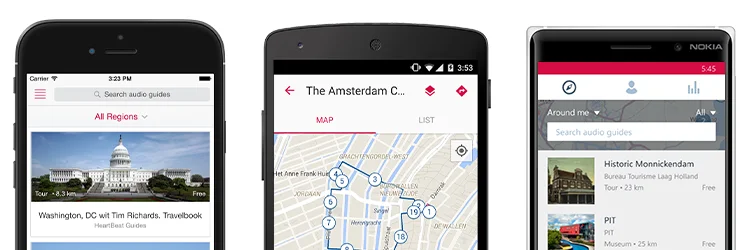
Create your own audio tours!
Use of the system and the mobile guide app is free
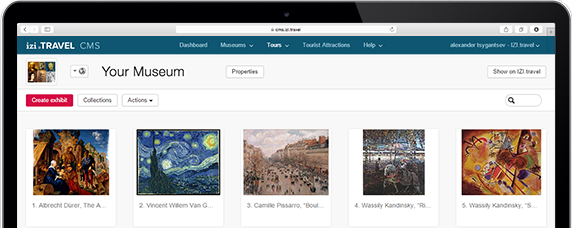
- Bahasa Indonesia
- Slovenščina
- Science & Tech
- Russian Kitchen
Discovering the historic neighborhoods of Perm
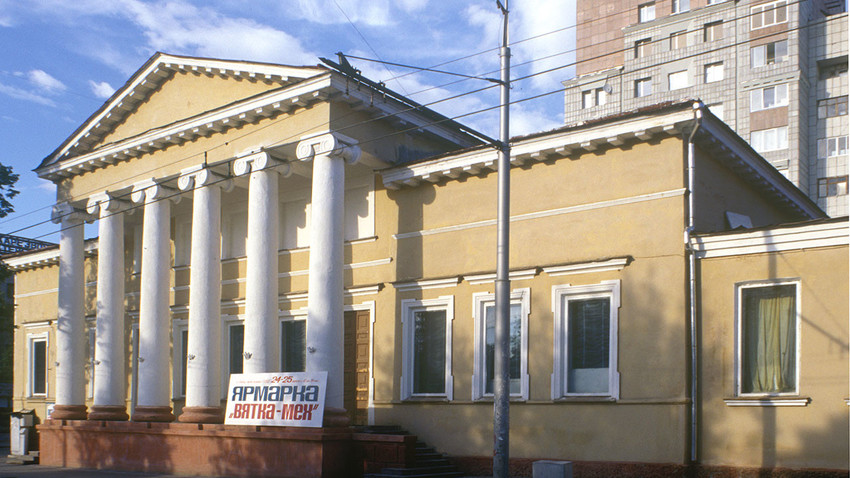
Perm. Building of the Nobility Assembly, Siberia Street 20. August 1999
The city of Perm, a major industrial and administrative center located just on the European side of the northern Urals, extends for miles along the high east bank of the Kama River. It was a destination of particular interest for Russian photographer and chemist Sergei Prokudin-Gorsky (see box text below), who visited the city on his first trip to the Ural Mountains in 1909.
Prokudin-Gorsky captured a series of riverfront vistas from the just-completed massive railroad bridge across the Kama. But he also took his tripod-mounted camera to the hillocks to the east of the city, where he photographed panoramic views of the central district that give a sense of Perm’s urban neighborhoods.
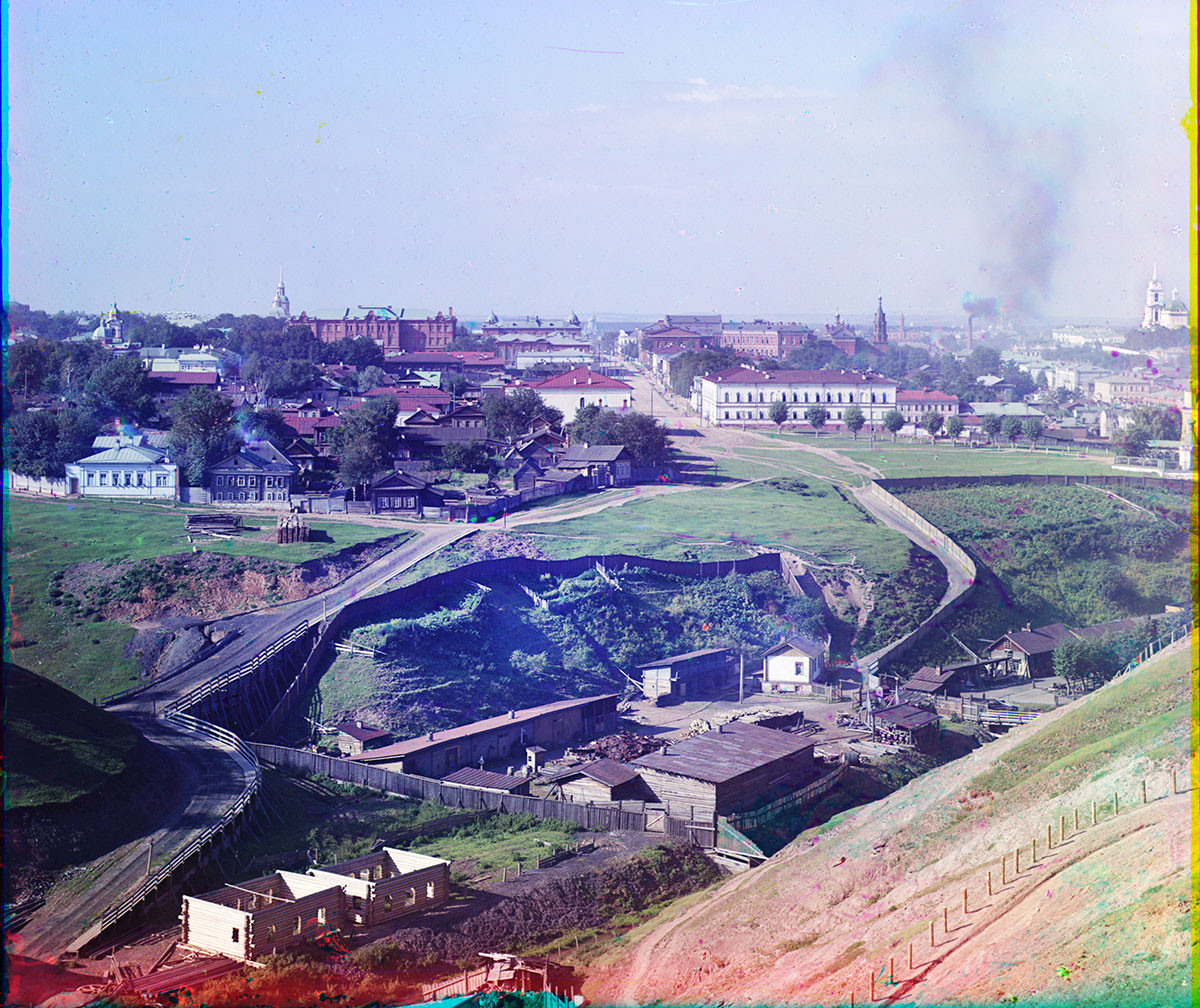
Panoramic view west from City Hillocks. From right: Monastery Street with Transfiguration Cathedral; Trading (now Soviet) Street with Church of St. Nicholas; Peter-Paul Street; Intercession (now Lenin) Street, with Church of Nativity of the Virgin. Summer 1909
My first visit to the Perm region occurred nine decades after Prokudin-Gorsky, in the summer of 1999. Subsequent trips, in 2014 and 2017, revealed a city marked by major new construction.
The name “Perm” is documented as early as the 12th-century chronicle “Tale of Bygone Years” and is apparently derived from Finno-Ugric words pera ma , meaning "distant land." In the medieval period "Perm" designated territory in the northern Urals controlled by the economic power of Novgorod, whose hunters and traders reaped the bounty of its valuable furs. By the 17th century, much of the area belonged to the vast Stroganov holdings in the northern Urals.
Founded for industry
The settlement of Perm originated in the early 18th century as part of the quest by Peter the Great to exploit ore deposits in the Ural Mountains. These raw materials provided secure sources of essential industrial-grade metals needed above all for the army.
The guiding force in developing this area was Vasily Tatishchev (1686-1750), one of Russia's early professional historians. A scholar with a gift for practical activity, Tatishchev admired Peter the Great and was an influential proponent of the central role of autocrat and state in Russian history.
During the 1720s, Tatishchev established settlements at mines, smelters, and metal-working plants throughout the Urals, including Yekaterinburg. In 1720, he chose the 17th-century village of Yegoshikha, located near the small Yegoshikha River, a tributary of the Kama. The stream is hardly visible in the ravine in the foreground of Prokudin-Gorsky’s rich panoramas.
Construction began on the main Yegoshikha factory on May 4, 1723, which is considered Perm’s founding date. The name “Perm,” however, was officially adopted only in 1781 after a command by Catherine the Great that transformed the factory settlement into an administrative center for the Urals.
Because of its favorable location within the Volga River basin, Perm during the 19th century developed into a transportation center for salt and other minerals, as well as metal ore and the products of metal factories throughout the western Ural Mountains. In 1846 regular steamboat service appeared on the Kama.
Expansion and development
Much of Perm burned during a fire in 1842, but the town quickly recovered. In 1863, Perm was included in the main Siberian highway, and in 1878, construction was completed on the first phase of the Urals Railroad from Perm to Ekaterinburg, part of a railroad construction boom that culminated in the early 20th century with the completion of the TransSiberian Railway.
Perm’s growth at the turn of the 20th century was reflected in Prokudin-Gorsky’s overviews of the central city, with its belching smokestacks. Despite sweeping changes in the century following Prokudin-Gorsky’s visit, several of the buildings captured in his photographs remain.
A historical record in images
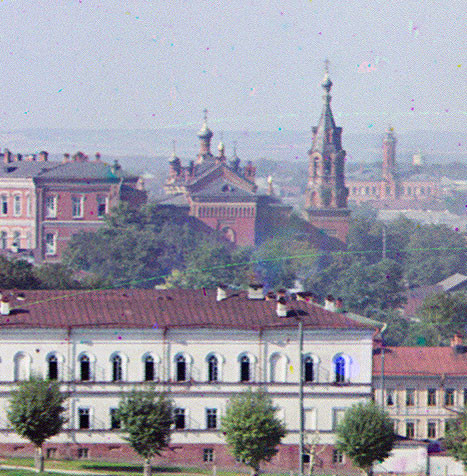
Perm. Detail of view west from City Hillocks. Center: Bell tower and Church of St. Nicholas, attached to the Mariinsky Women’s High School. Right background: central fire station & watchtower. Summer 1909
The photograph richest in detail is a panoramic view taken due west from the city hillocks located to the east of the central district. On the far right is Monastery Street with its dominant landmark, the Transfiguration Cathedral, visible through the haze of industrial smoke. This street links a series of monuments surveyed in my previous Perm article .
The next thoroughfare to the left was Trading (now Soviet) Street. Its main landmark (apart from a belching smokestack) is the bell tower and cupolas of the Church of St. Nicholas, built in 1895-99 to commemorate the marriage of soon-to-be-emperor Nicholas and Alexandra in 1894. The church was attached to the large Mariinsky Women’s High School.
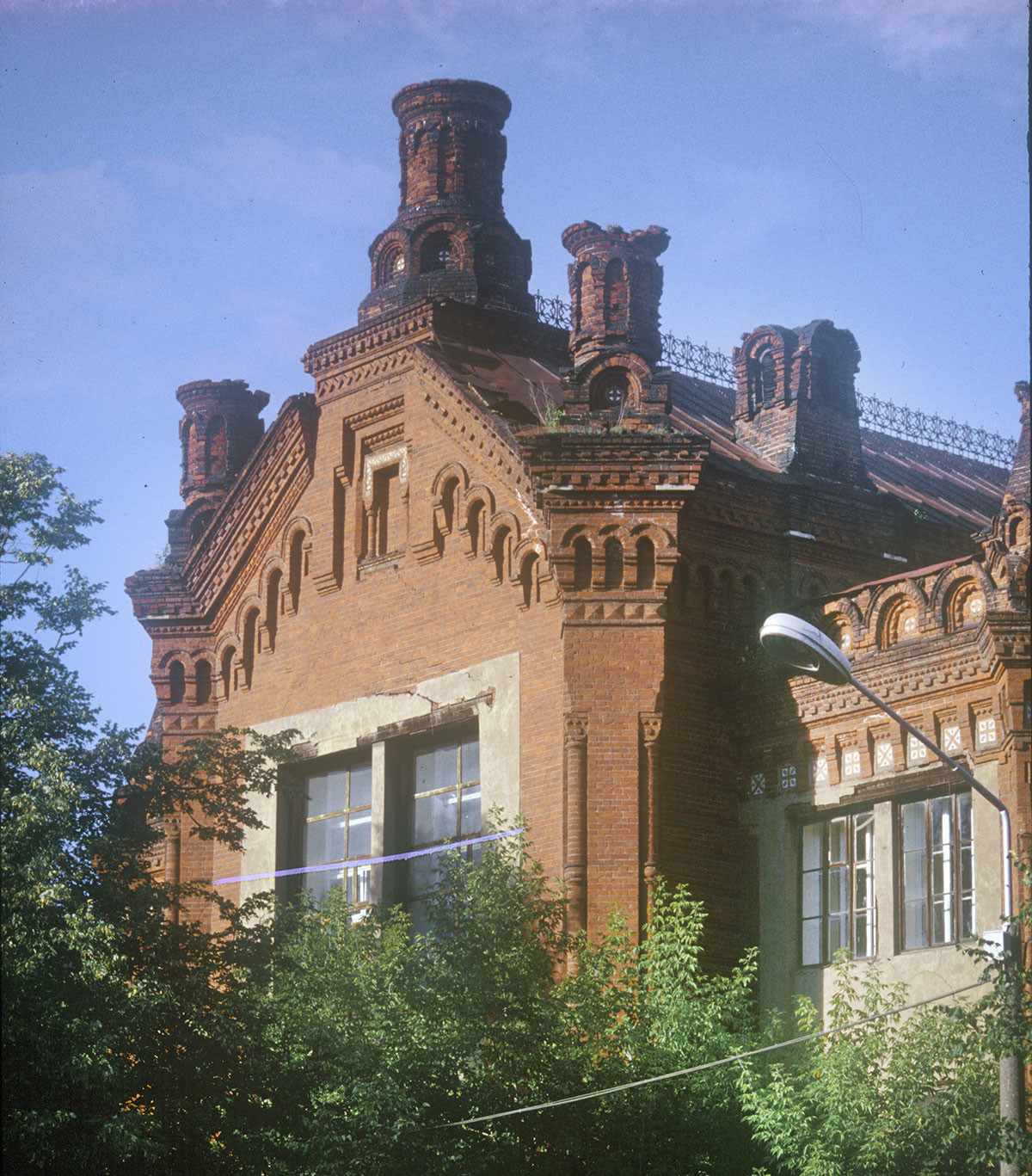
Church of St. Nicholas, attached to the Mariinsky Women’s High School. (Cupolas & bell tower demolished in Soviet period.) August 1999
With the establishment of Soviet power, the St. Nicholas bell tower and cupolas were demolished, and the entire building was converted for the use of the Agriculture Academy (now a university). My photographs from 1999 reveal that most of the basic red brick structure has survived.
Dimly visible just beyond is the red brick watch tower of the central Perm fire station. Completed in 1883, the tower and its surrounding depot are still maintained in their original function, as my 1999 photograph shows.

Central fire station & watchtower. August 1999
In the center of Prokudin-Gorsky’s photograph is a boulevard whose segments were called Great Nobility Street and Peter-Paul Street, the latter named after the Cathedral of Sts. Peter and Paul, a sliver of whose bell tower is at the photograph’s right edge. Built in 1757-64, it is the oldest surviving brick church in Perm. I have included my black-and-white photograph of the cathedral. (Its bell tower, destroyed in the Soviet period, has not yet been rebuilt.) Renamed Communist Street during the Soviet period, the entire boulevard is now called Peter-Paul Street.
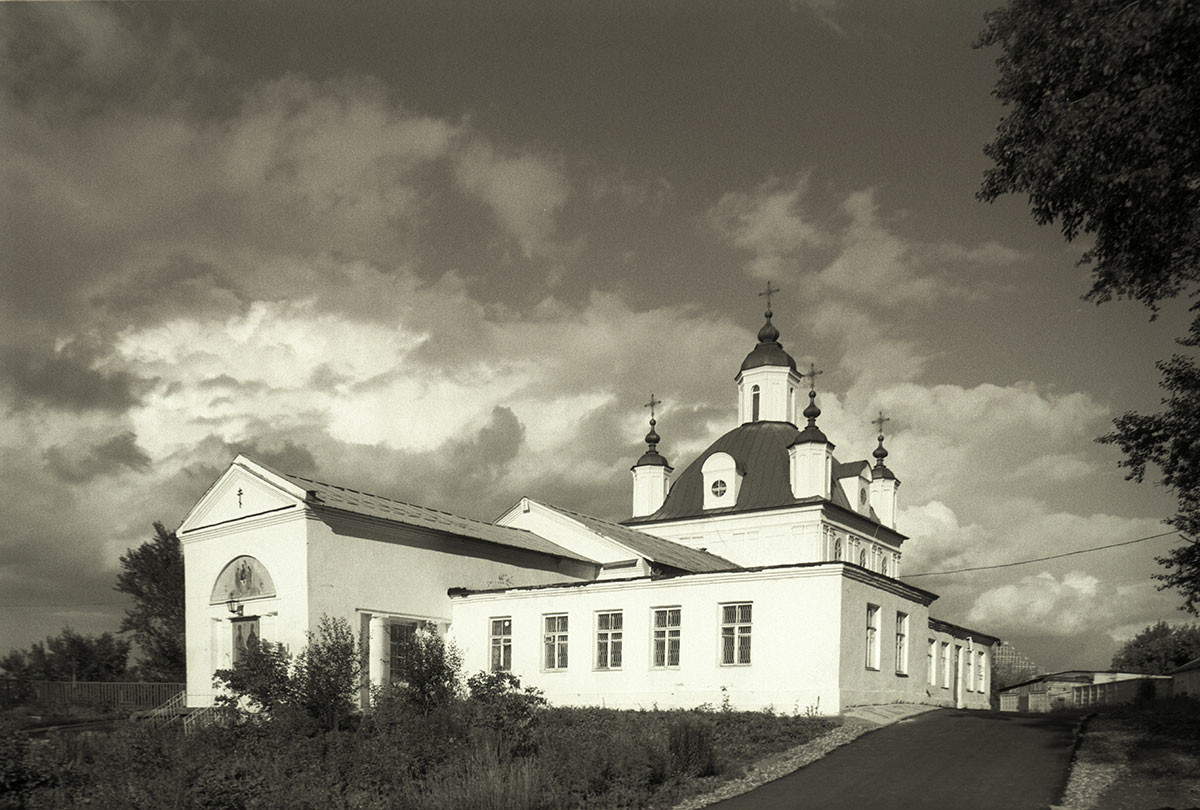
Cathedral of St. Peter & Paul, southwest view. (Bell tower demolished in Soviet period.) August 1999
On the left of Prokudin-Gorsky’s panorama is Intercession (now Lenin) Street. In the distance is the bell tower steeple and dome of the Church of the Nativity of the Virgin (Lenin Street 48), built with merchant donations over a long period from 1787 to 1816.
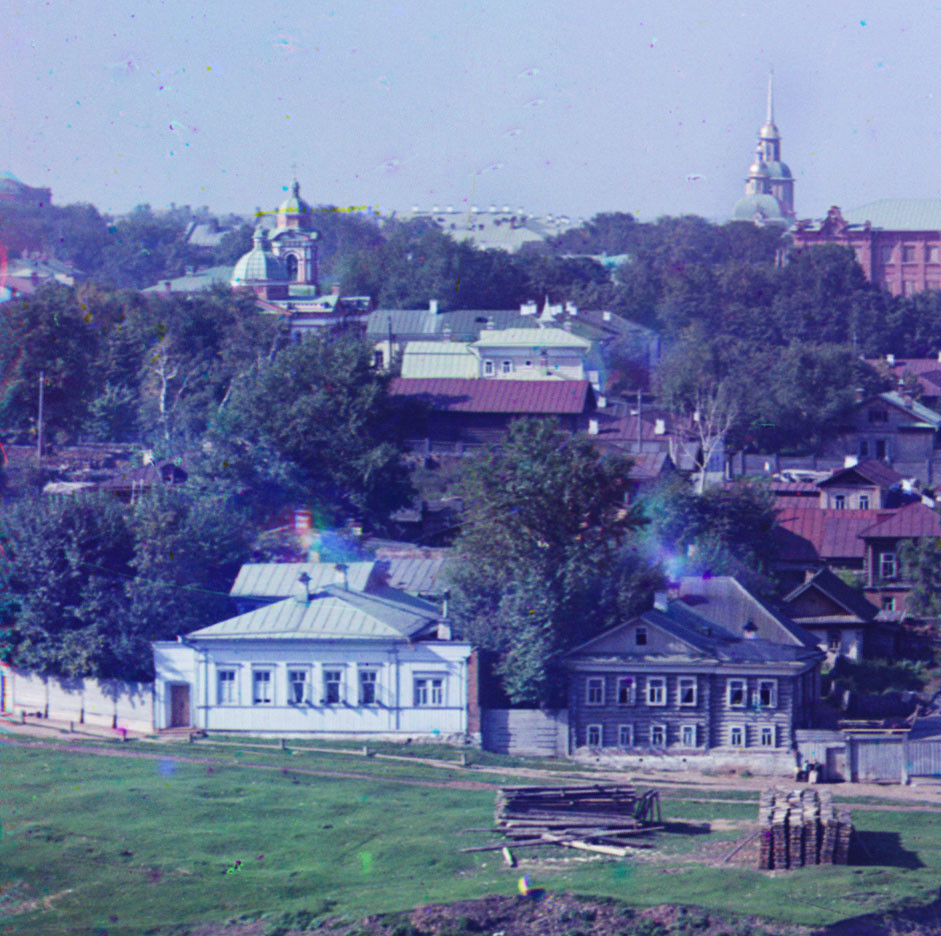
Perm. Detail of view west from City Hillocks. Intercession (now Lenin) Street. Left: Church of St. Mary Magdalene. Right: Church of Nativity of the Virgin. Summer 1909
This second brick church in Perm was closed in 1928, its bell tower and cupolas were demolished and the structure was converted into a student dormitory. My photograph from 2014 shows the restored church without the bell tower, which was rebuilt at the end of the year.
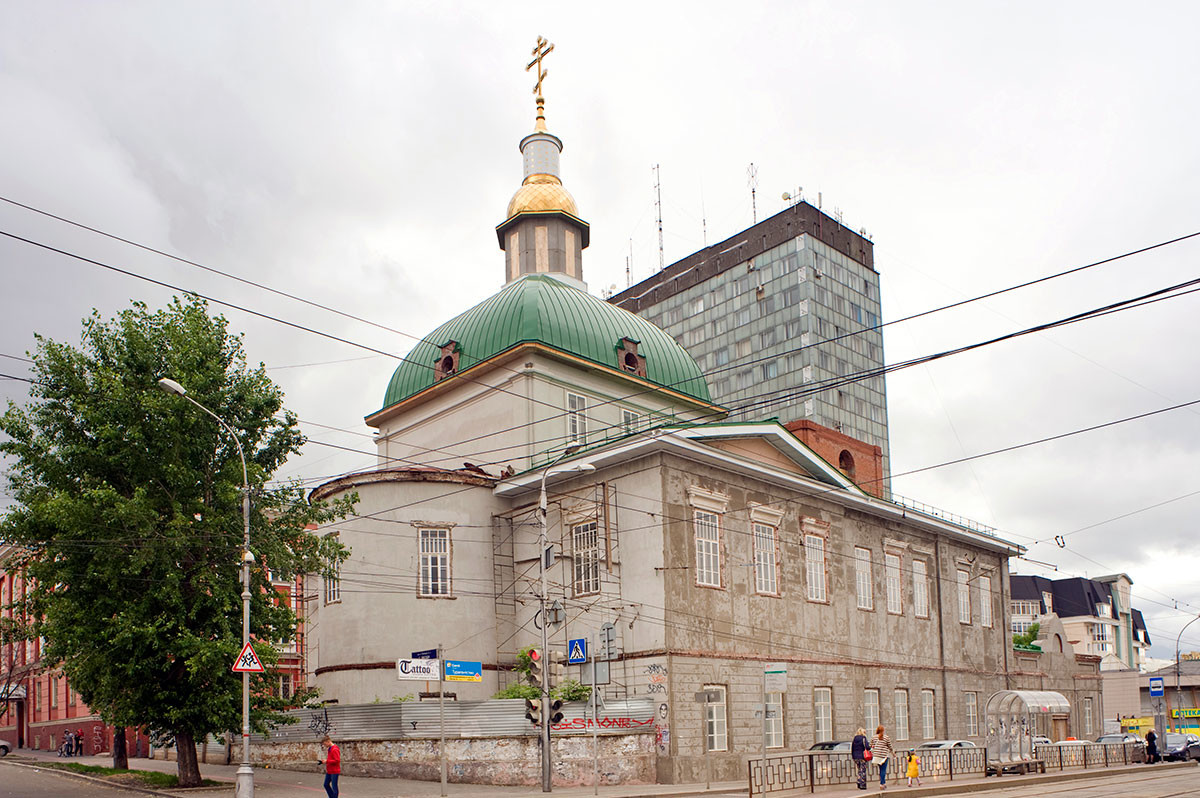
Church of Nativity of the Virgin (Lenin Street 48), northeast view. Its bell tower, demolished during Soviet period, had not yet been rebuilt at time of this view. It has now been rebuilt. June 2014
On the far left, two small green domes indicate the Church of St. Mary Magdalene (Lenin Street 11), built in a neoclassical style in 1889-92 as part of a large orphanage. Prokudin-Gorsky’s took two close views that are especially valuable in view of the structure’s subsequent history. In the 1930s the cupola and bell tower were demolished, and a third story was added — as seen in my 1999 photograph. The building now serves as the Institute of Ecology and Genetics.
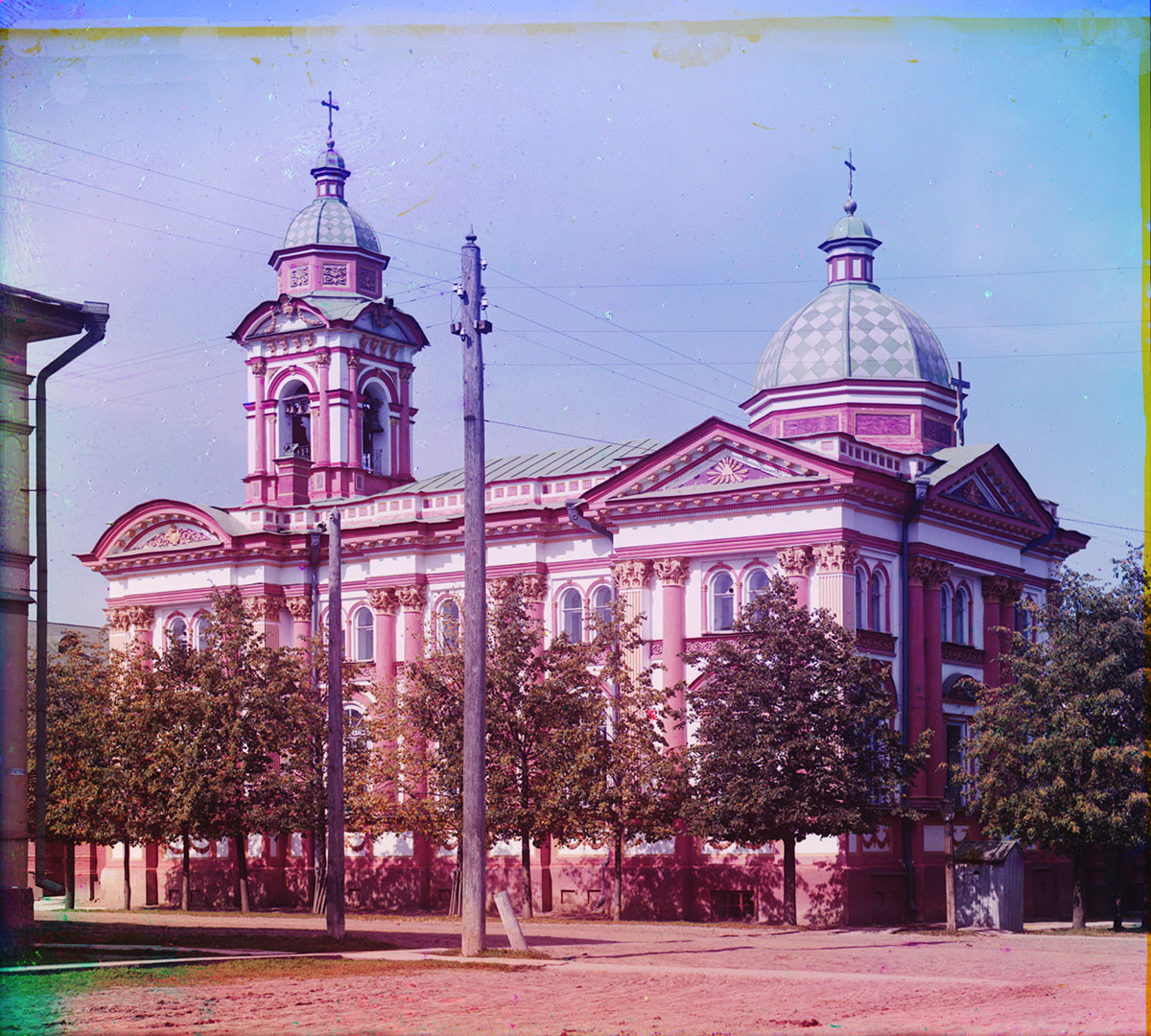
Church of St. Mary Magdalene, southeast view. Summer 1909
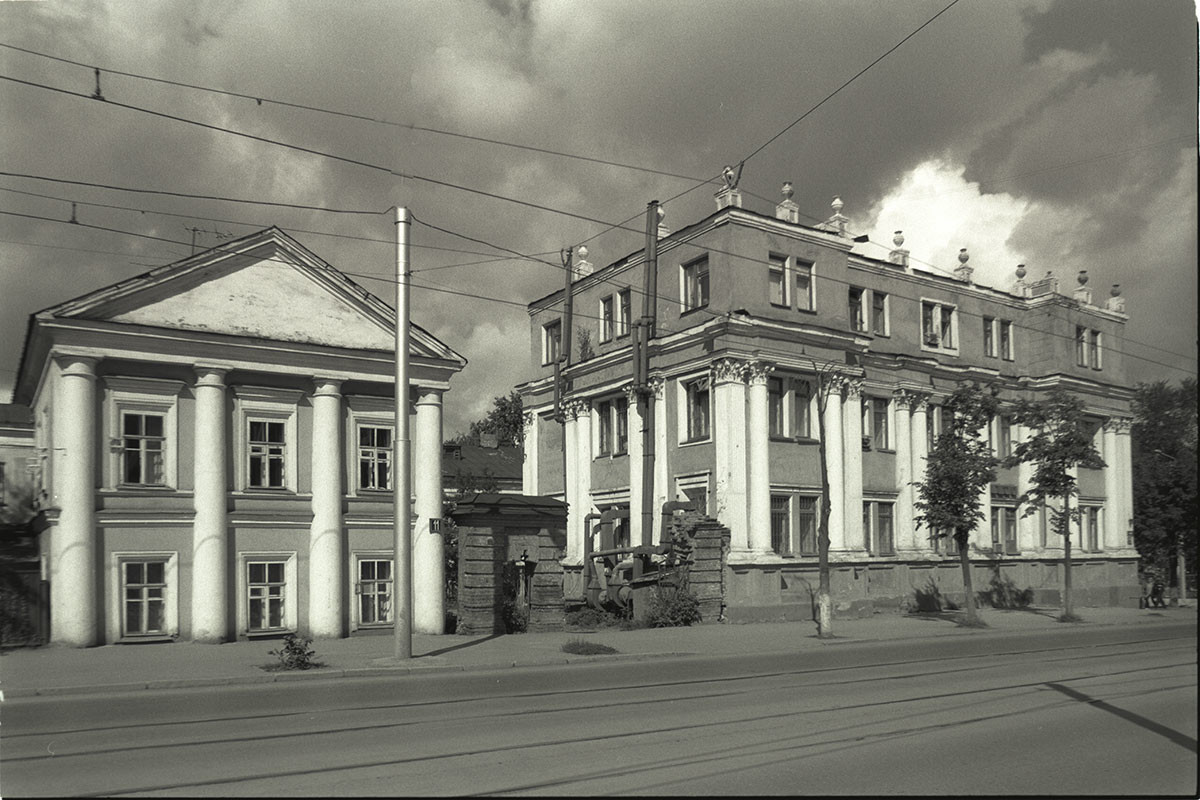
Former Church of St. Mary Magdalene. Dome & bell tower demolished with addition of third floor in 1930s. Now used for Institute of Ecology and Genetics (Lenin Street 11). August 1999
Revelations of past splendor
A bit farther down the same block is the splendid Gribushin mansion, hidden by the trees in Prokudin-Gorsky’s photograph. Originally built in 1895-97, the house was rebuilt in 1905 in a lavish baroque manner for the merchant Sergey Gribushin. Referred to in Boris Pasternak's novel Doctor Zhivago as the "house with statues" (in the town of “Yuriatin”), the mansion serves as the headquarters of the Urals Division of the Russian Academy of Sciences.
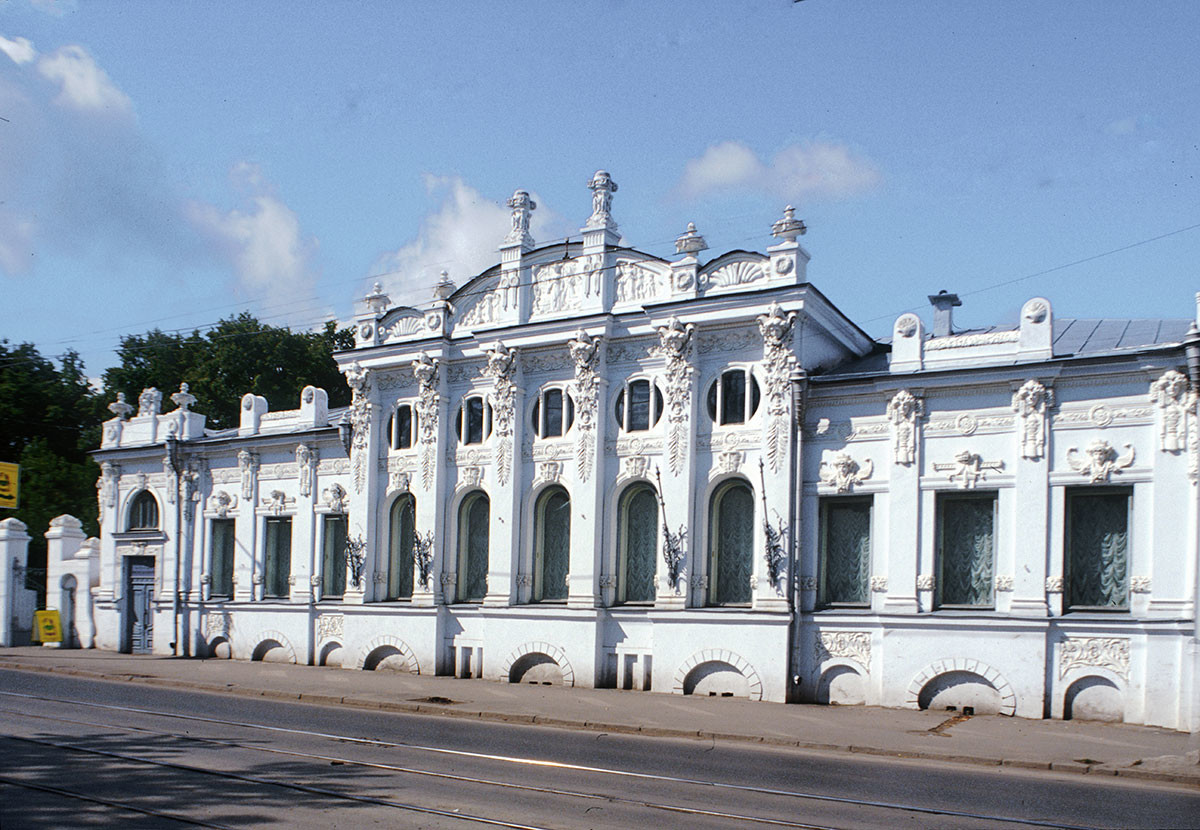
Gribushin mansion. Now headquarters of Urals Division of the Russian Academy of Sciences (Lenin Street 13). August 1999
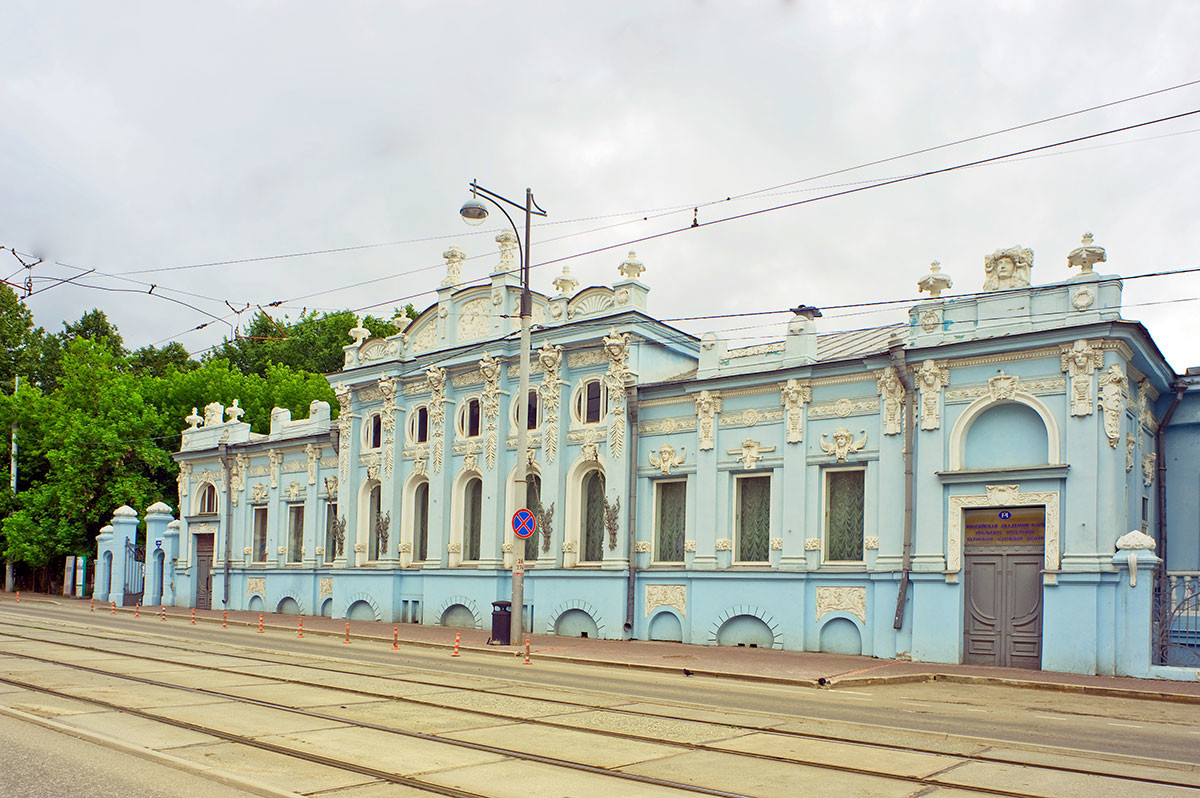
Gribushin mansion (repainted). June 2014
And if Prokudin-Gorsky and his assistants had maneuvered his bulky camera just three more blocks, to the intersection of Siberia and Ascension (now Lunacharsky) Streets, they would have photographed two more cultural monuments. On one side is the elegant neoclassical building of the Nobility Assembly, built by Ivan Sviyazev in 1832-37.
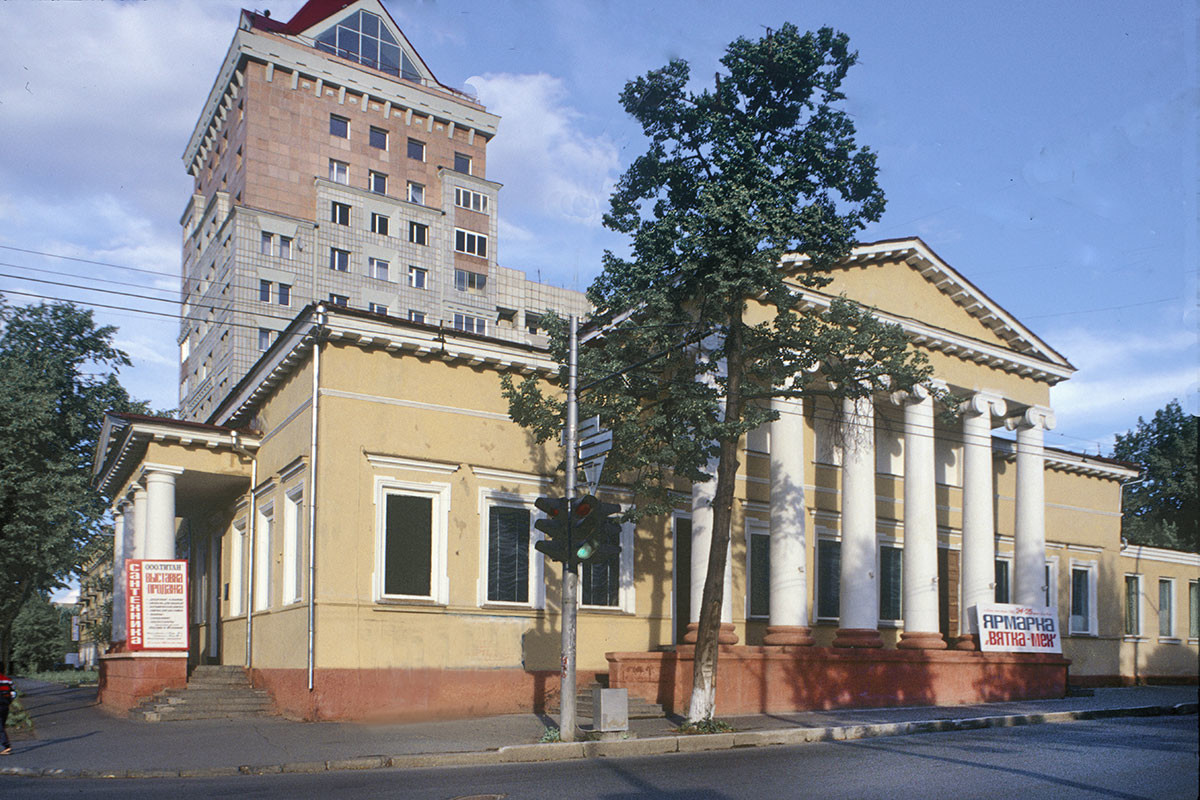
Perm. Building of the Nobility Assembly, Siberia Street 20. August 21, 1999
On the other side of Siberia Street is the house built in 1852 and acquired in 1862 by Pavel Diaghilev, grandfather of the renowned impresario Serge Diaghilev, who spent much of his childhood there.
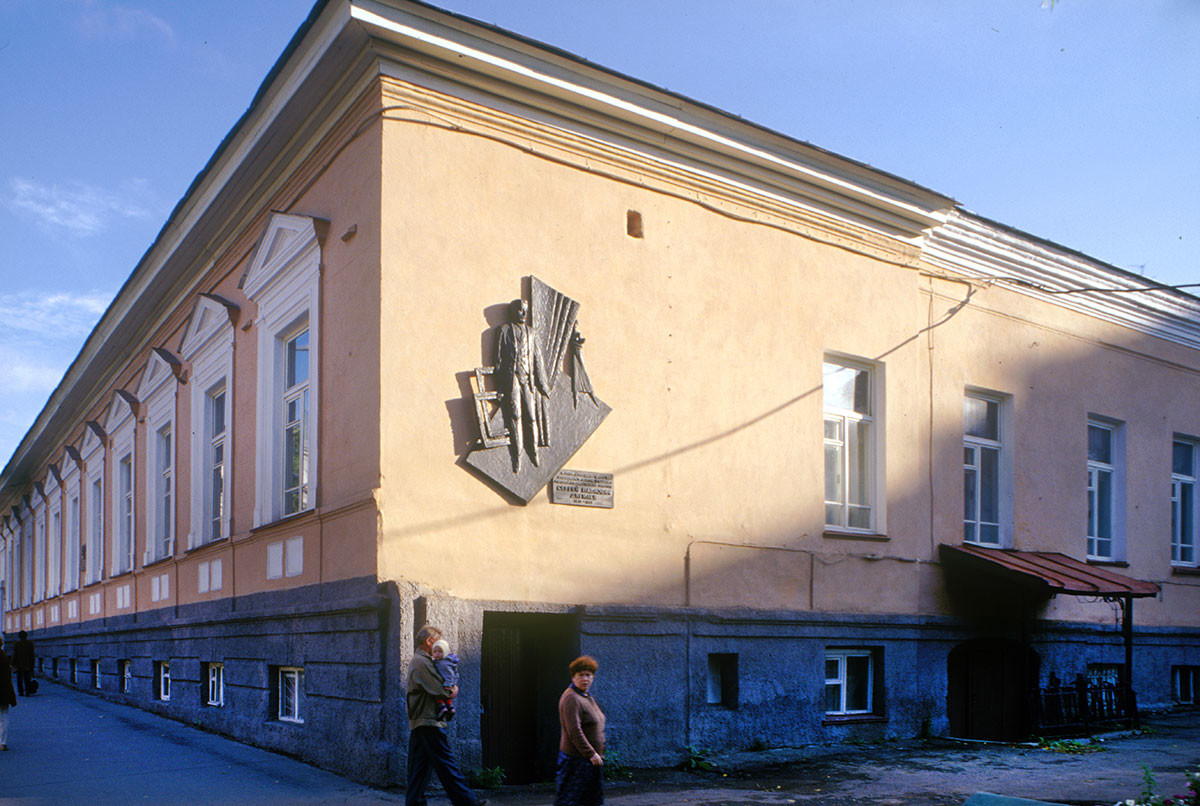
Diaghilev house (Siberia Street 33). Childhood home of Serge Diaghilev. August 1999
Prokudin-Gorsky’s photographs of pre-revolutionary Perm convey an invaluable sense of a provincial Russian city, with its mixture of traditional architecture and rapid industrial expansion. These richly detailed views of the city’s neighborhoods have become a unique record of a historic milieu that fades with each passing year.
In the early 20th century the Russian photographer Sergei Prokudin-Gorsky devised a complex process for color photography. Between 1903 and 1916 he traveled through the Russian Empire and took over 2,000 photographs with the process, which involved three exposures on a glass plate. In August 1918, he left Russia and ultimately resettled in France where he was reunited with a large part of his collection of glass negatives, as well as 13 albums of contact prints. After his death in Paris in 1944, his heirs sold the collection to the Library of Congress. In the early 21st century the Library digitized the Prokudin-Gorsky Collection and made it freely available to the global public. A few Russian websites now have versions of the collection. In 1986 the architectural historian and photographer William Brumfield organized the first exhibit of Prokudin-Gorsky photographs at the Library of Congress. Over a period of work in Russia beginning in 1970, Brumfield has photographed most of the sites visited by Prokudin-Gorsky. This series of articles juxtaposes Prokudin-Gorsky’s views of architectural monuments with photographs taken by Brumfield decades later.
If using any of Russia Beyond's content, partly or in full, always provide an active hyperlink to the original material.
to our newsletter!
Get the week's best stories straight to your inbox
- Perm: Lord of the Northern Urals
- St. Nicholas Nadein: One of Yaroslavl’s great 17th-century churches
- U.S. professor continues photographic legacy of Prokudin-Gorsky in new book
This website uses cookies. Click here to find out more.

COMMENTS
What to pack when hiking the W trek Conclusion. While there are many tours and ways to visit Torres del Paine National park, The W Trek in Torres del Paine National Park is an ultimate bucket list experience for anyone visiting Patagonia in Chile.Taking in incredible mountain, lake and glacier views there's really nothing else like it.
The W Trek in Patagonia is a thrilling multi-day hiking route that takes you through the mesmerizing Torres del Paine National Park, one of the most remarkable hiking destinations in South America. ... This lush, verdant valley offers stunning views of the surrounding mountains and lakes, making it a perfect spot to rest and soak in the beauty ...
Booking Camping and Accommodation on the W Trail. Bus tickets to and from Torres del Paine. Packing for the W Trek. Our Self-guided itinerary for hiking the W Trail. Day 1 - Puerto Natales to Chileno via Las Torres. Day 2 - Chileno to Francés. Day 3 - Francés to Paine Grande via Francés Valley. Day 4 - Paine Grande to Grey.
The most popular trek in Patagonia, the Torres Del Paine W Trek is fast becoming one of the most well-respected short hikes in the world due to the trail's stunning scenery. Guanaco in Torres Del Paine. Located in the amazing Torres del Paine National Park which was made a World Biosphere Reserve by UNESCO in 1978.
Hiking the W Trek in Torres del Paine is expensive. Especially when compared to other places in Patagonia like Bariloche and El Chalten. But there's ways to make this experience cheaper like bringing our own food and camping gear. Overview (per person): Our Costs. Accommodation + Gear (3 nights): $345 USD.
The W Trek is a well-known and well-travelled route. There are certain elements that make hiking the W Trek a little easier, including the availability of refugios (mountain lodges), a relatively low altitude, non-technical hiking, generally gentle ascents and descents, and jaw-dropping scenery. That doesn't mean the W Trek is easy.
The majority of trekkers stay in shared dorm rooms in mountain huts (refugios) or camp. ... The W Trek is a moderately difficult hike lasting around four to five days, covering 46 miles on mainly gentle terrain, with more challenging days involving climbs of 600-800 metres. You need to be in good shape, with some experience of multi-day hiking ...
Torres del Paine W Trek Day 03 our first glimpse of the mountains Paine Grande to Grey Glacier. On the fourth day of the W Trek you will head from Paine Grande to the glorious Glacier Grey (16.6 KM) and even though the morning started beautifully with glimpses of the sun, the cruel reality that awaited us was more clouds (as usual) and a really heavy wind that would have blown me away if it ...
The W Trek is the most famous trekking route in Torres del Paine National Park, showcasing the unmissable highlights of this iconic corner of Chilean Patagonia. "If you only plan on going to Patagonia once, and trekking is your thing, then Torres del Paine might rightly be at the top of your adventure wishlist," says Adam Roberts, a Chilean destination expert at Much Better Adventures.
Day 2: Trek to Los Cuernos lookout; Refugio Los Cuernos. Today we'll hike to Los Cuernos lookout, where monumental horn-shaped black twin granite peaks shoot skyward.This route is the best on the trek for all-round panoramic views where you can take in not only the Andes mountains, glaciated valleys and stunning lakes, but also the wind-swept rolling hills of the steppe which stretches ...
The O Circuit (8-10 days) - Also known as the Paine Circuit, the O trek is the full circuit around the Cordillera del Paine mountains within the national park and includes the W route. It's definitely a tougher and longer route, but its lesser traveled 74 miles (119 kilometers) of pure Patagonian wilderness will take you to the heights of ...
Torres Del Paine National Park is located in both Chile and Argentina. The W Trek is in the region of the park that is in Chile. It is called the W Trek because the trail takes you in the shape of the letter W. This trek takes you to many iconic views in the Torres Del Paine National Park, blue lakes, mountains, rivers, glaciers, waterfalls and ...
The 110km / 70-mile 'O' trek continues the W on to complete a full loop of the Cordillera Paine mountain group. The scenery is less famous but far wilder and more remote, as you cross high passes, loop around alpine lakes and surprise unwary wildlife. Camp only in designated areas and avoid the temptation to feed wildlife to leave a lighter ...
The cost will depend on the chosen accommodation option and meal plan. The most budget-friendly option of hiking the W trek (camping with your own gear and making food) Transport. Bus Puerto Natales - Torres del Paine - CLP 24 000/US$28, return. Catamaran Pudeto - Paine Grande - US$35, one way.
The W-Trek is a popular hiking route in the Torres del Paine National Park in Chilean Patagonia. It's called the "W-Trek" because of the shape the route makes as it winds through the park - it looks like the letter "W" when drawn on a map. The trek takes you to some of the park's most iconic sights including the stunning granite towers that ...
Essential Trip Information. Immerse yourself in the Patagonian wilderness, on this 6-day hiking trip in the Torres del Pain National Park of Chile. Coined one of the most beautiful and popular treks in the world, the W Trek traverses through rolling grasslands and mountainous peaks, alongside the breathtaking blues of lakes, rivers and streams.
The W Trek refers to a multi-day hike that is shaped like the letter W. This area is unique because there are several inns along the trek where you can spend the night. You can choose between hostel-style lodging, have them provide you a tent at the campgrounds or bring your own tent.
Hiking the W Trek hinges on the availability of the half-dozen currently operational refugios (hostels with limited dorm beds, a restaurant, hot showers and campsites) dotted along the route, which can book out months in advance during the November-to-February peak season. This is the warmest time of the year comes with the added bonus of long ...
The Patagonia W Trek can be done all year round, but the best time is from November to March. Chile is in the southern hemisphere, so this is spring/summer when temperatures are warmer and there's usually less rain and snow. If you're planning to hike Torres del Paine without a guide, it's critical to download a GPS map ahead of time.
Chusovoy, city, Perm oblast (province), west-central Russia. It is situated in the mid-Ural Mountains along the Chusovaya River at the inflow of the Usva. Founded in 1879 as an ironworks, it became a city in 1933. Ironworks and steelworks are located there, and ferroalloys and high-quality steels.
Perm is internationally known as the name for the geological period (290 - 245 million years ago) in which the Ural Mountain Range was formed. In contrary to the Urals, Perm itself is rather young. Although the first settlement of Perm dates back to 16th century, officially it got its city status in 1723. ...
The ethnographic complex 'The Museum of the History of the Chusovaya River' is located in the town of Chusovoy, 135 kilometers east of the city of Perm. You can easily reach Chusovoy by car, bus or train. The museum is located on the eastern outskirts of Chusovoy (you need to go along the mining route).
My first visit to the Perm region occurred nine decades after Prokudin-Gorsky, in the summer of 1999. Subsequent trips, in 2014 and 2017, revealed a city marked by major new construction.